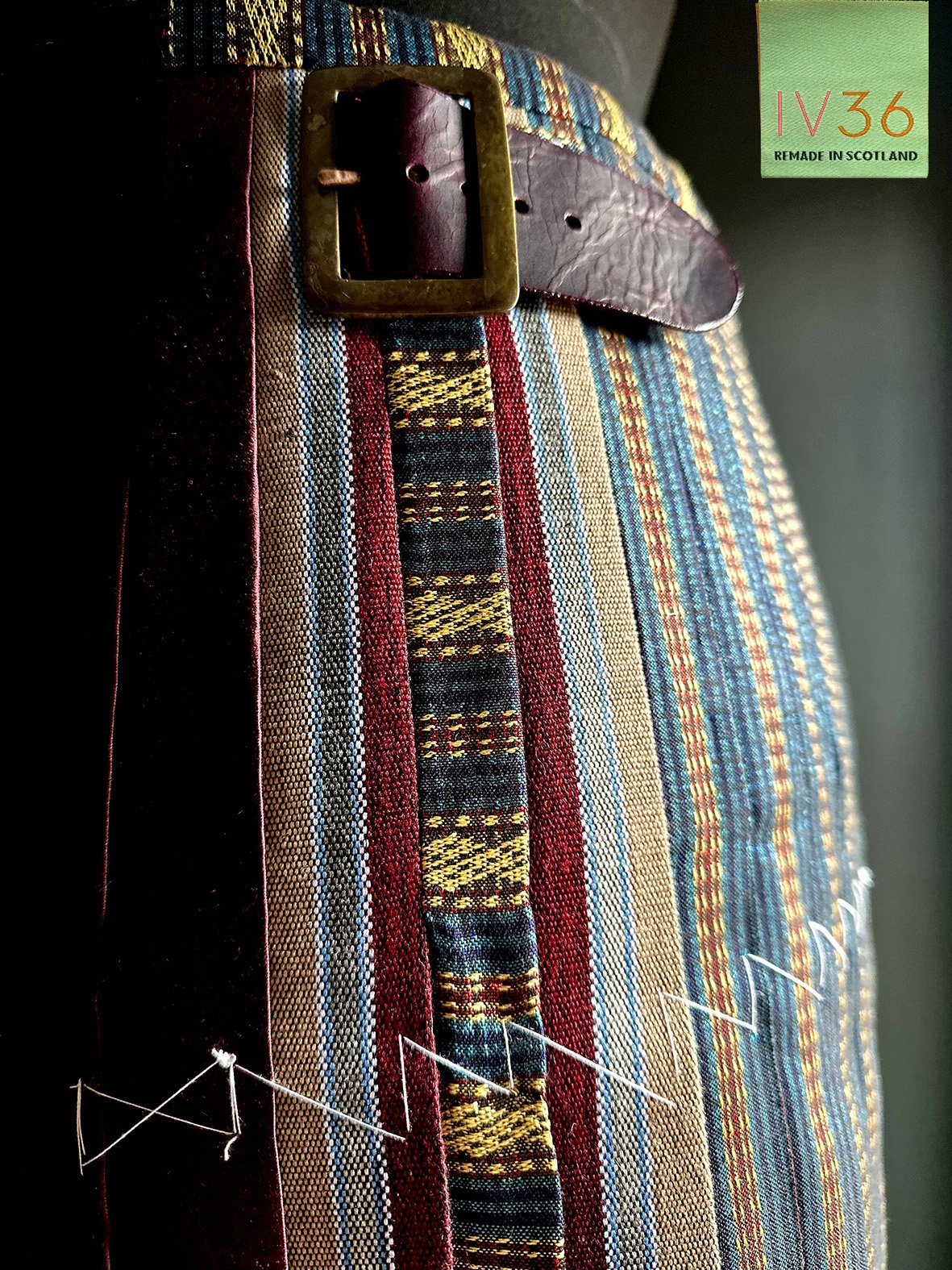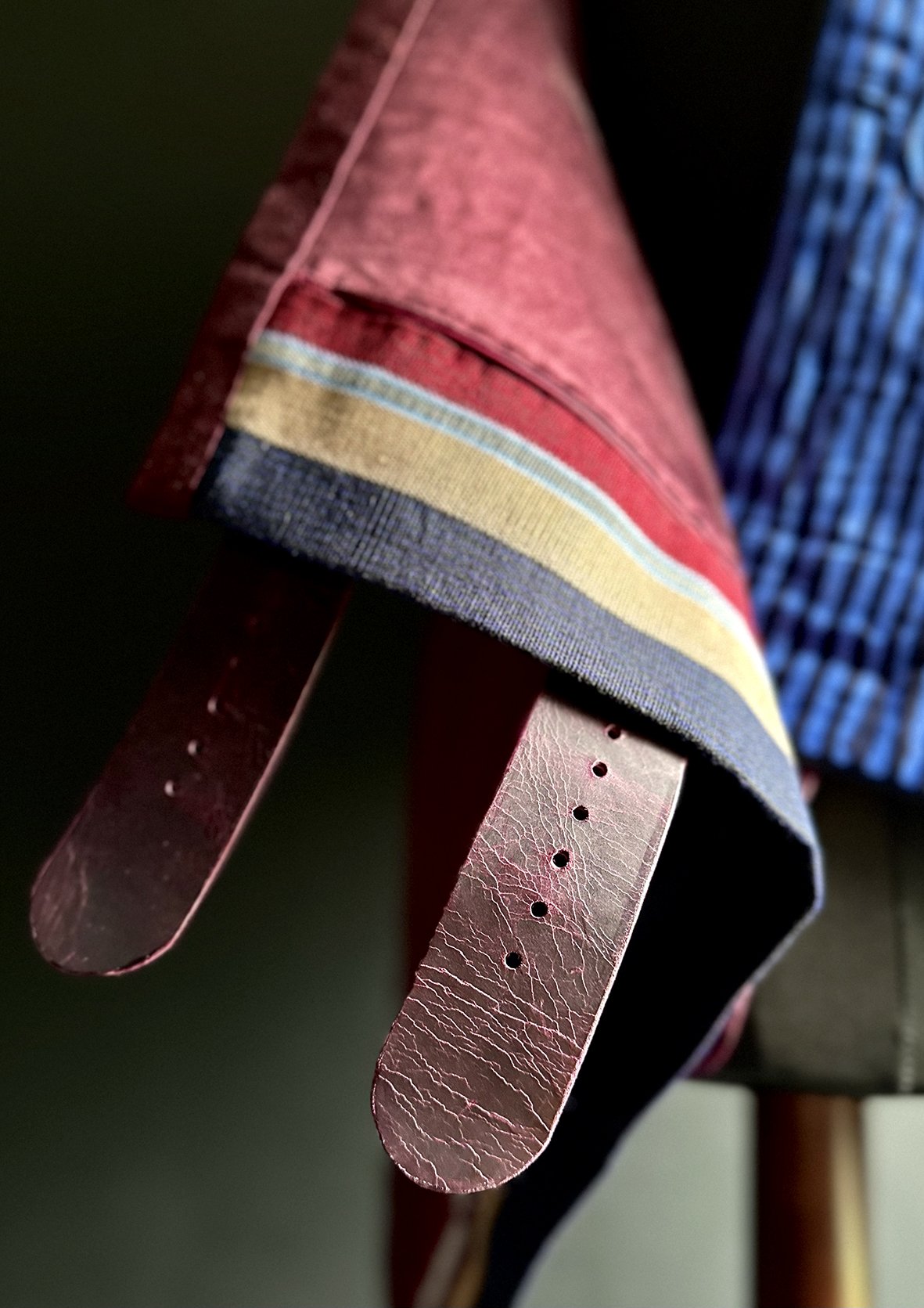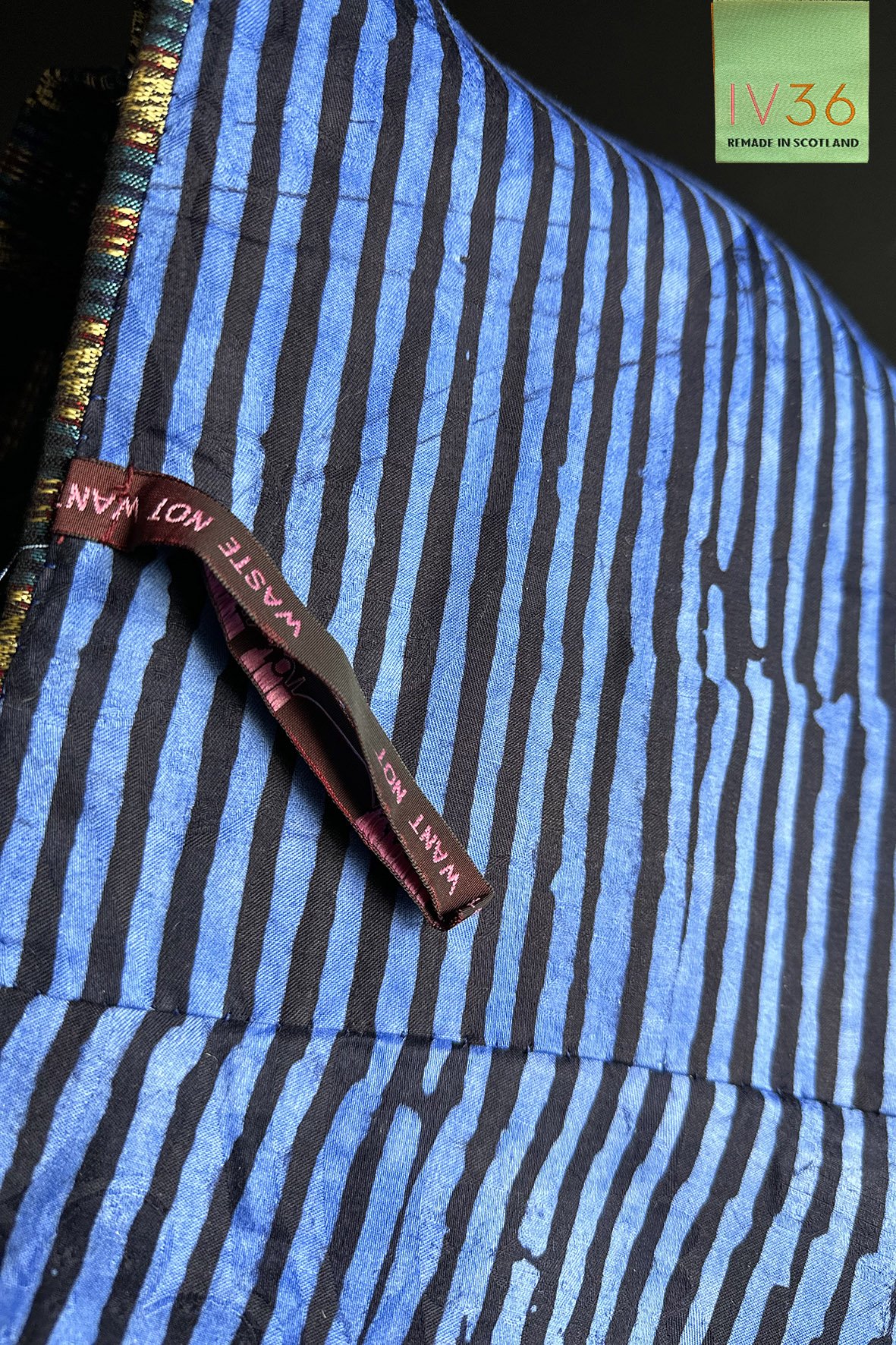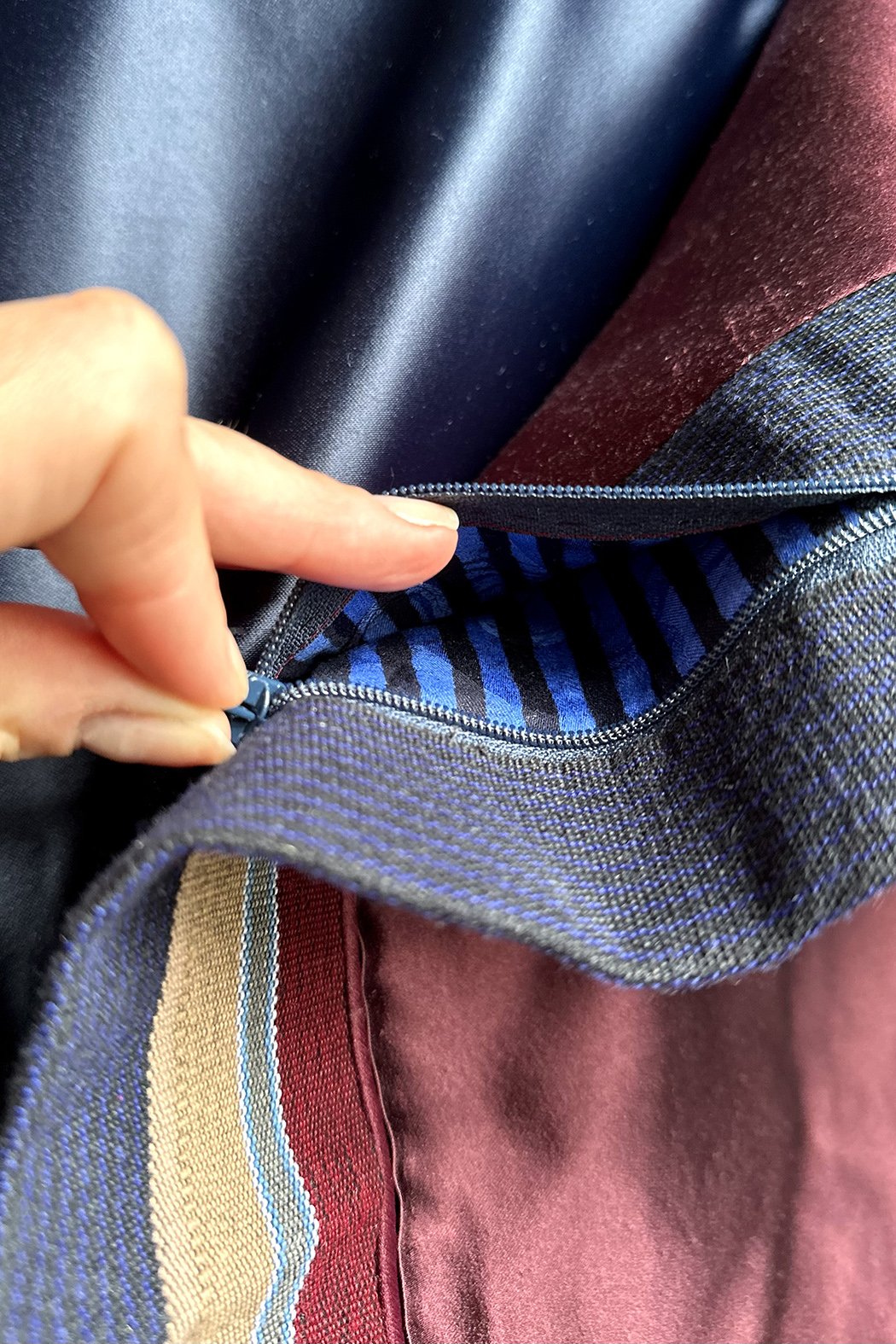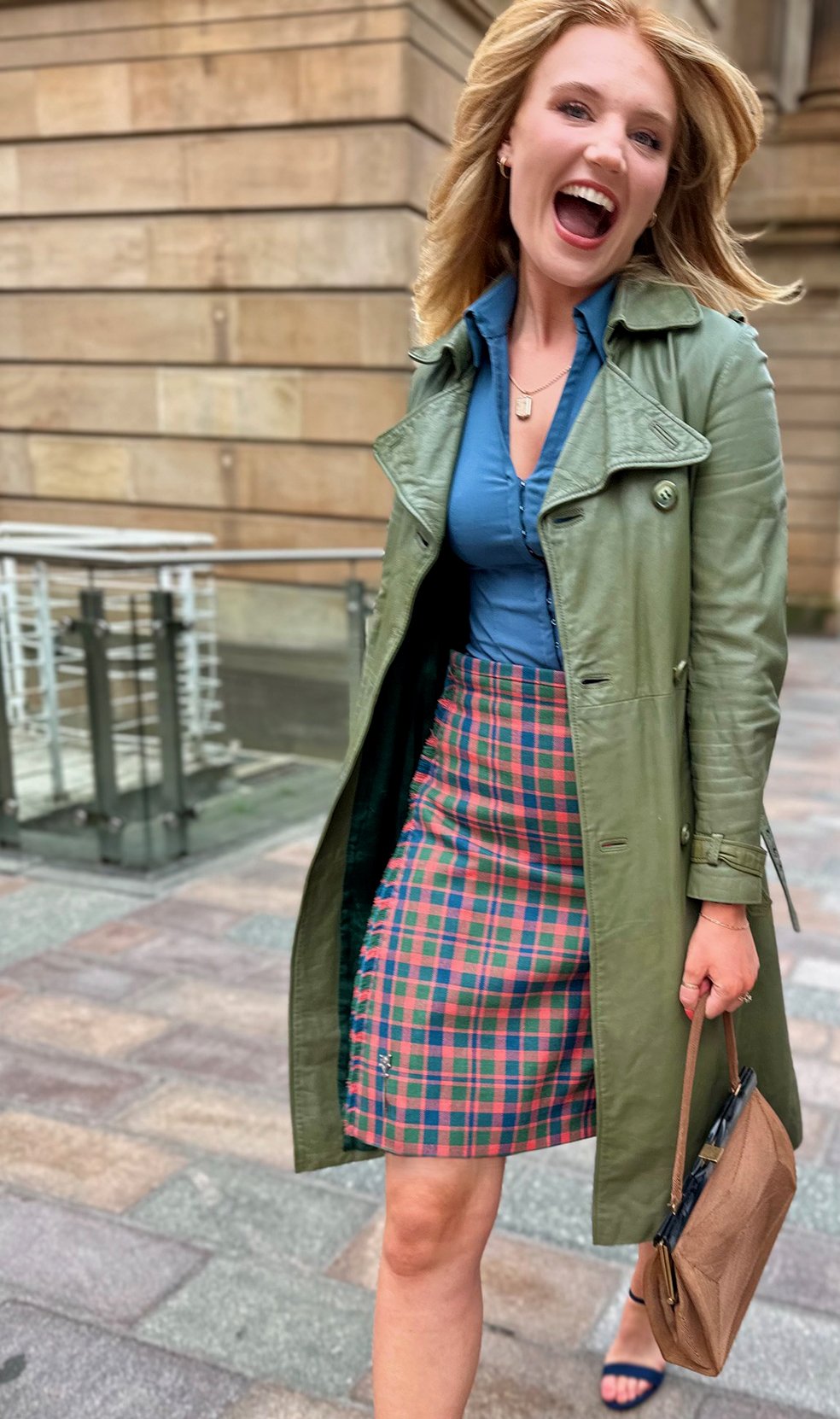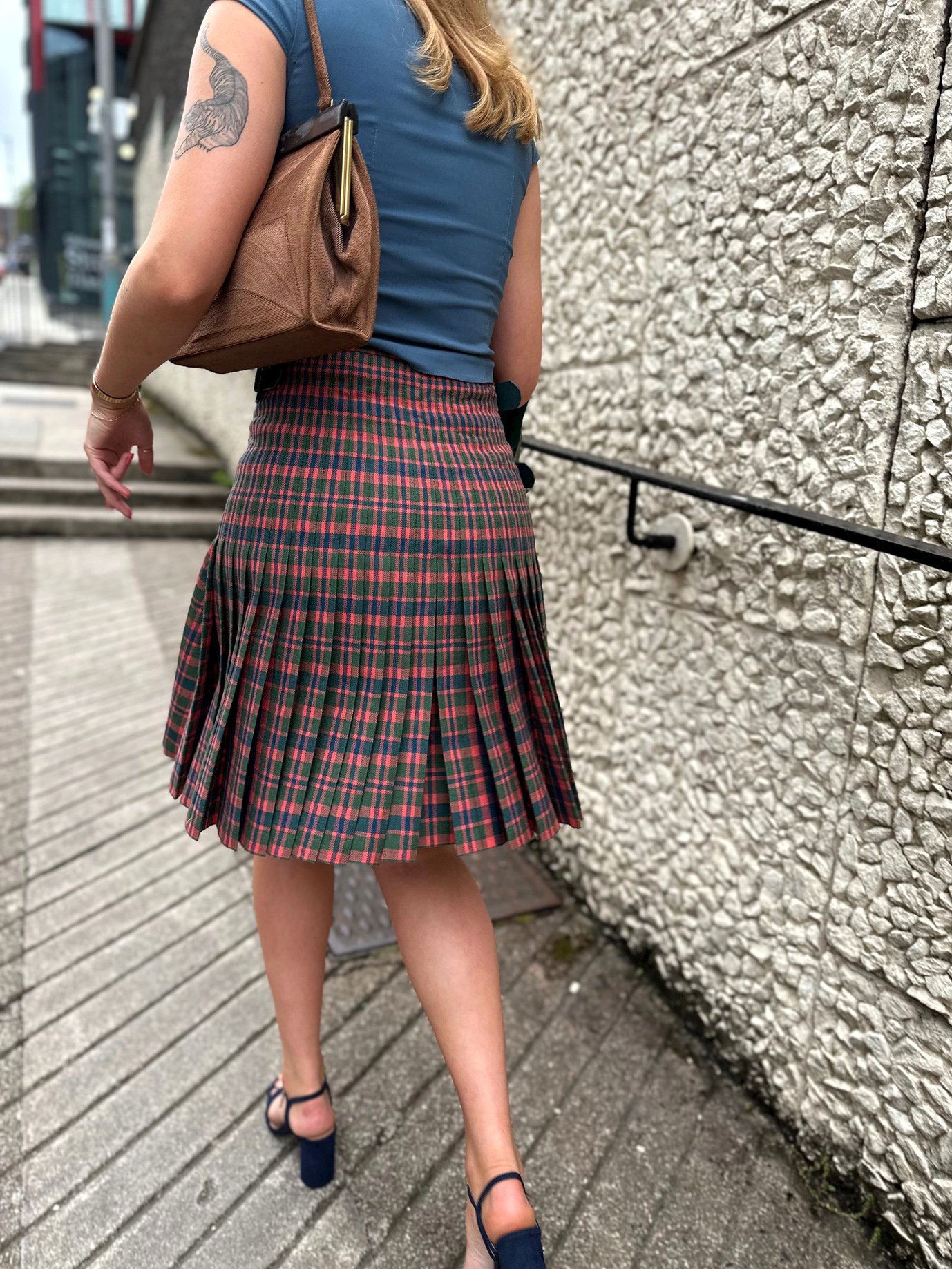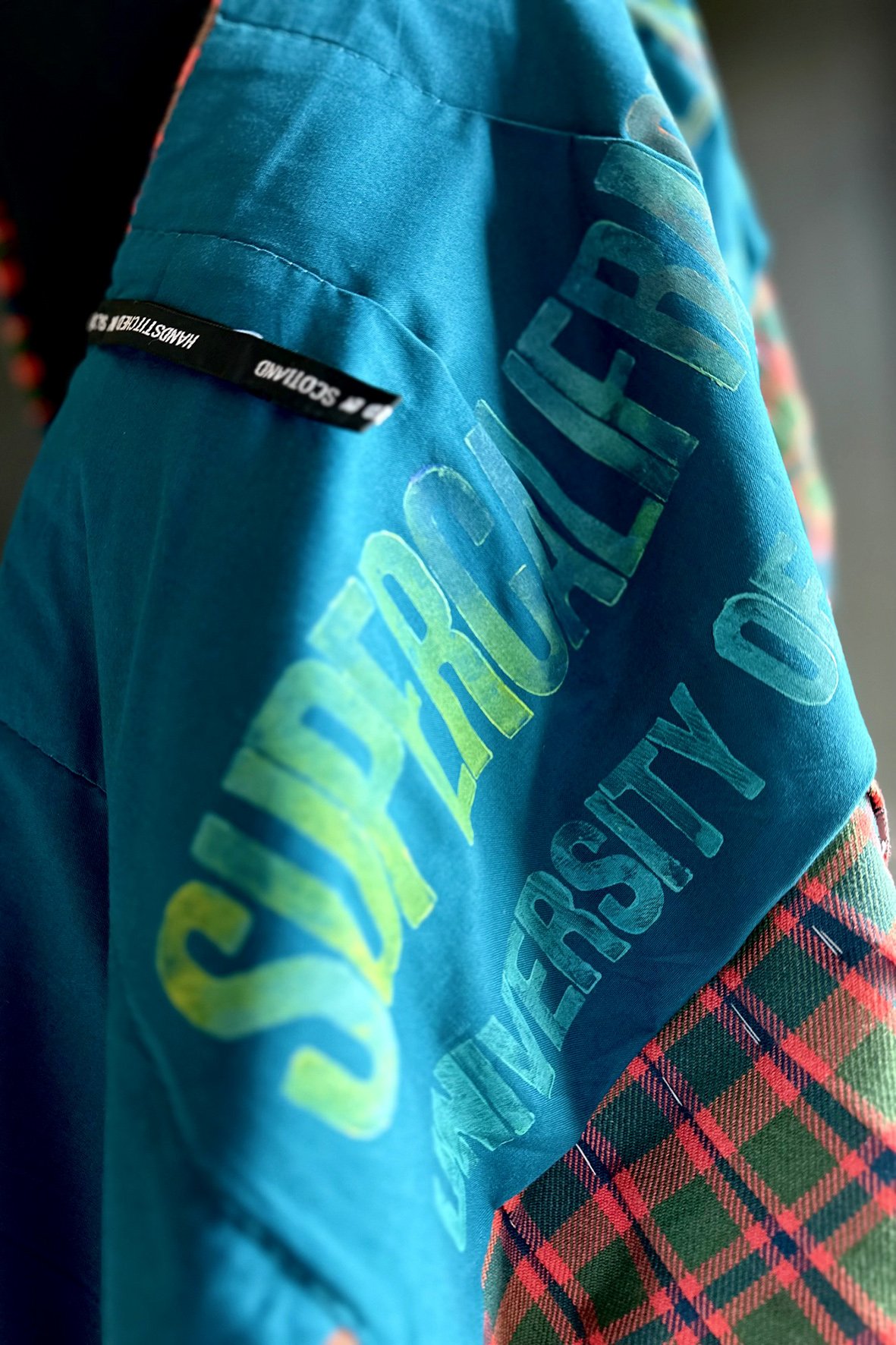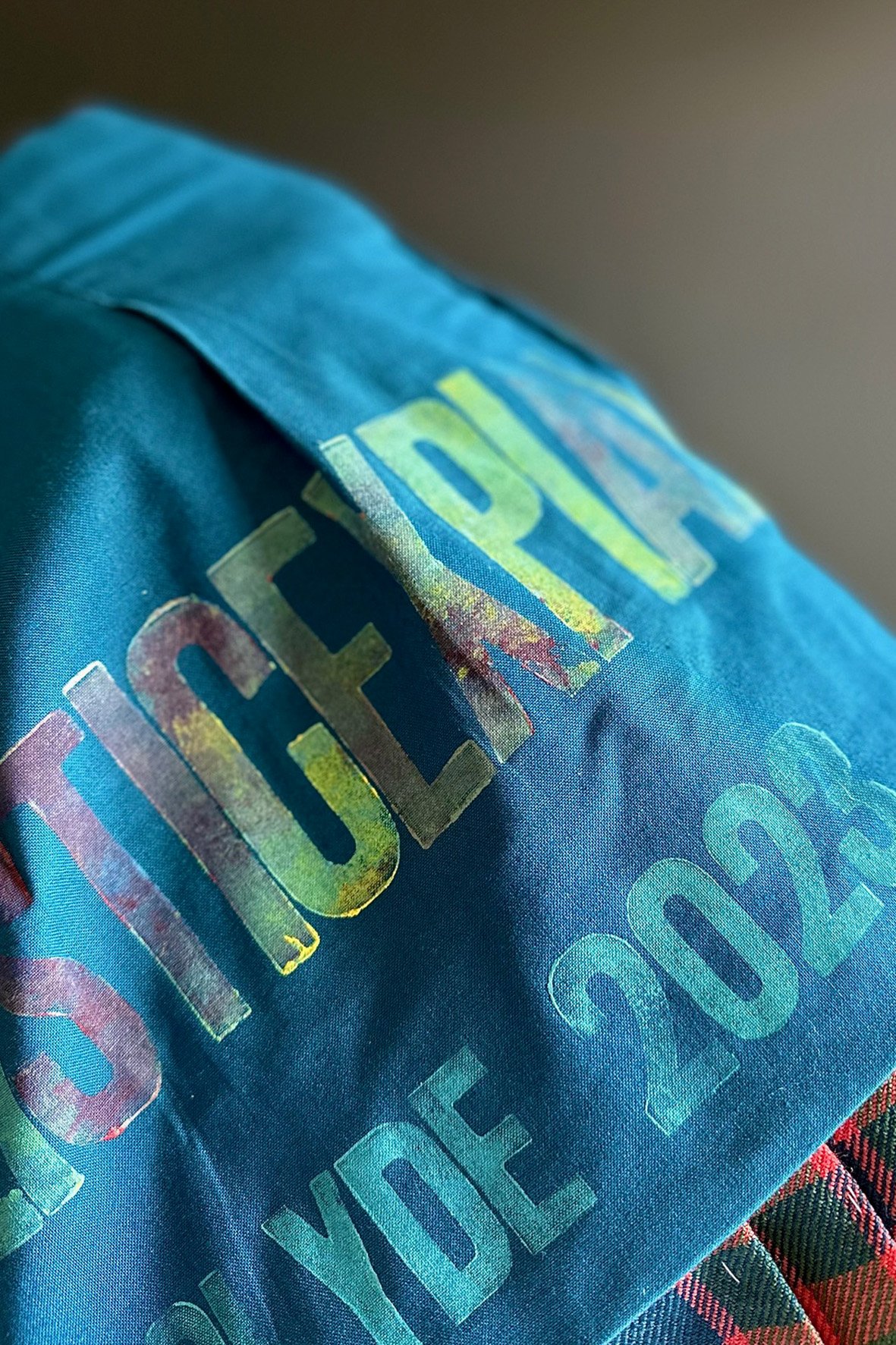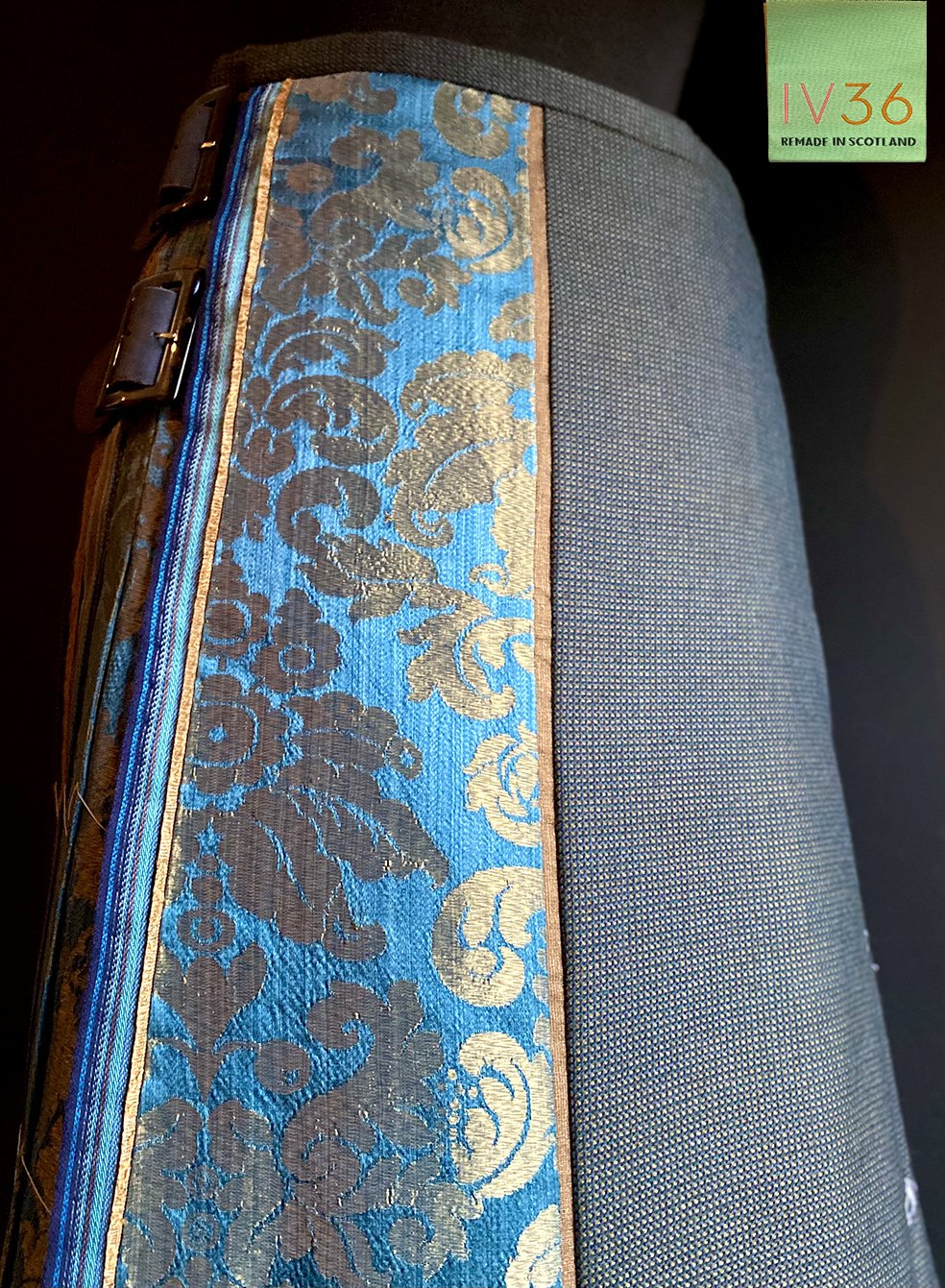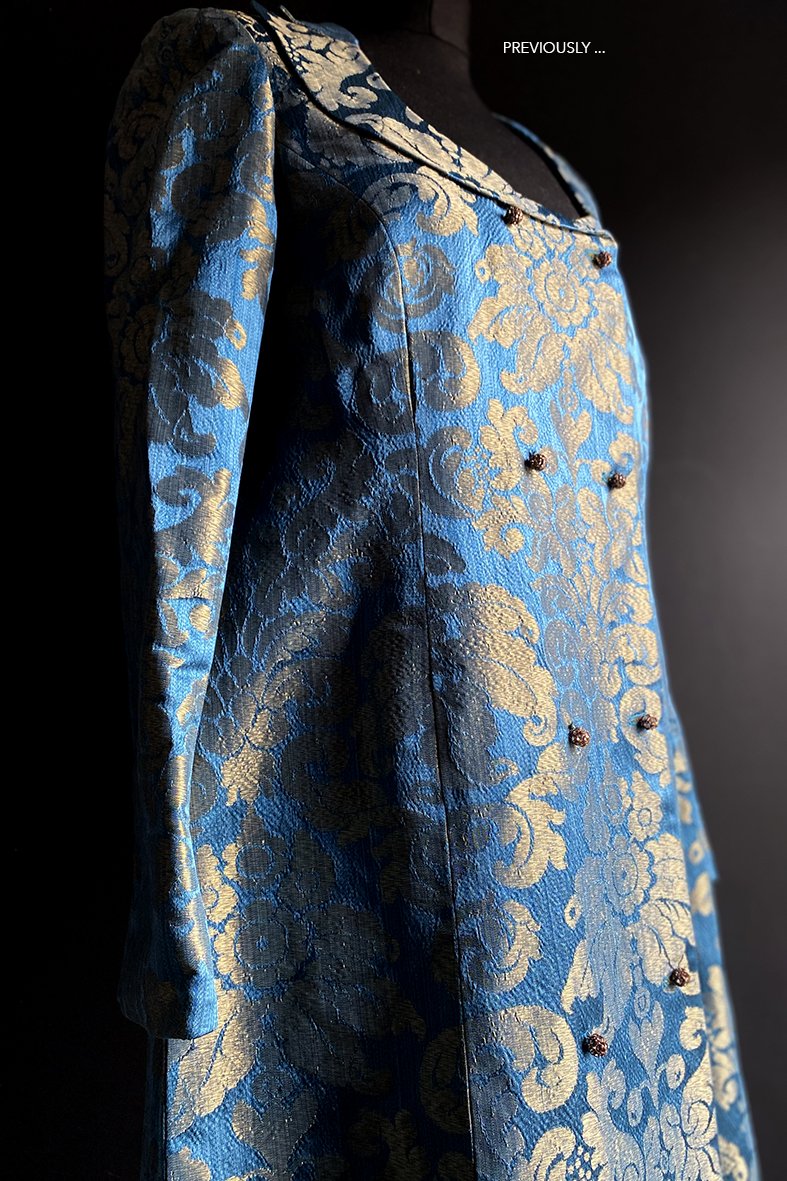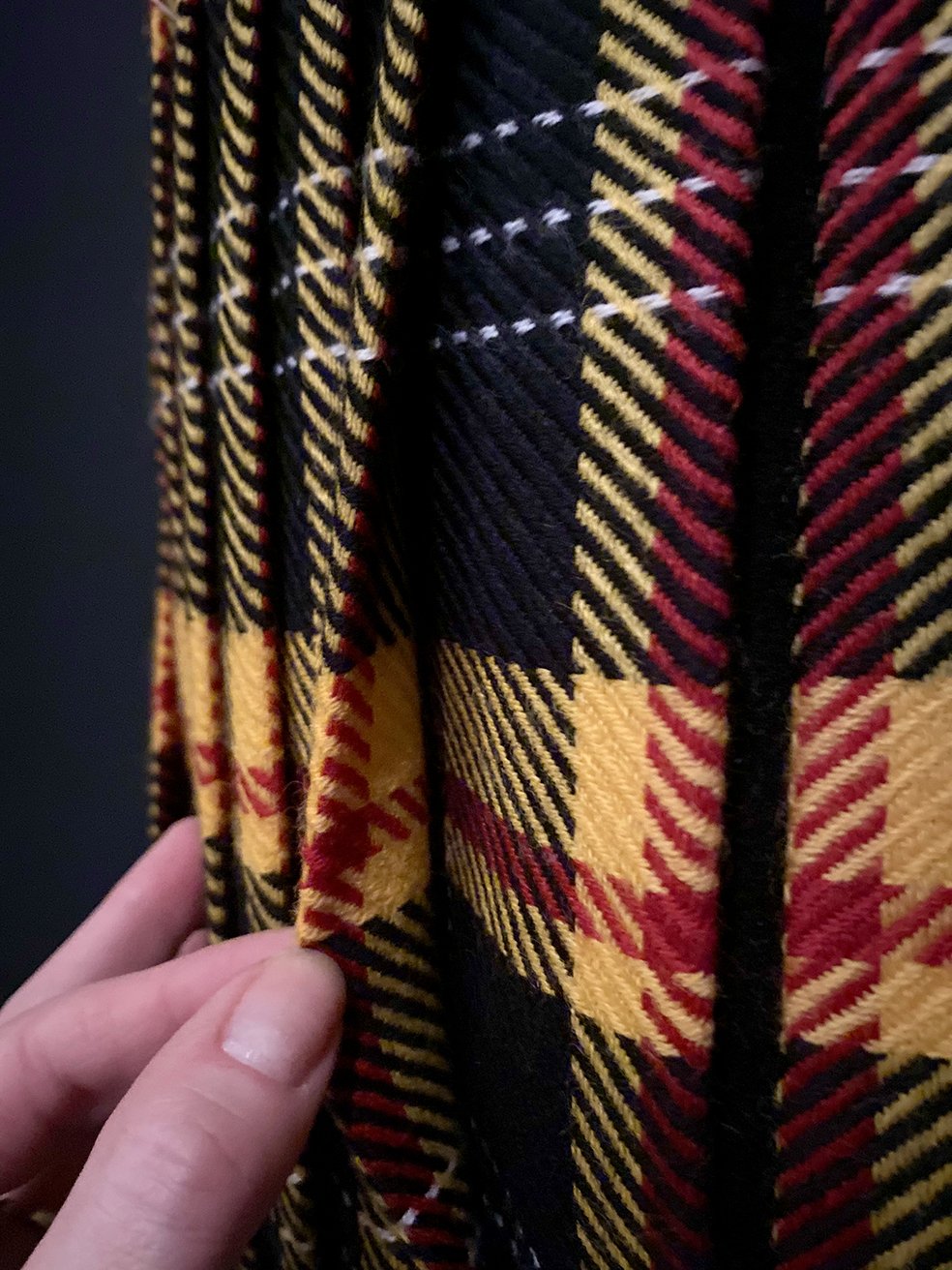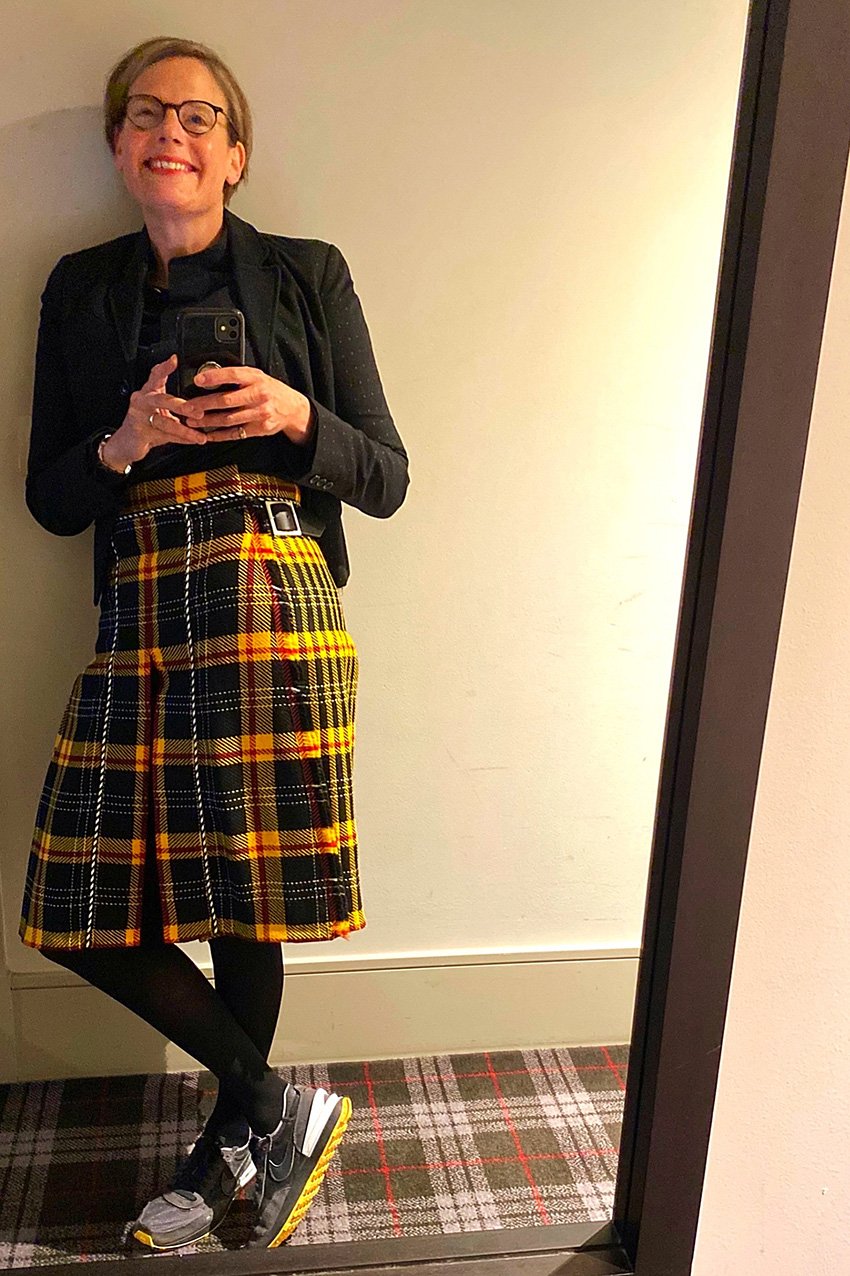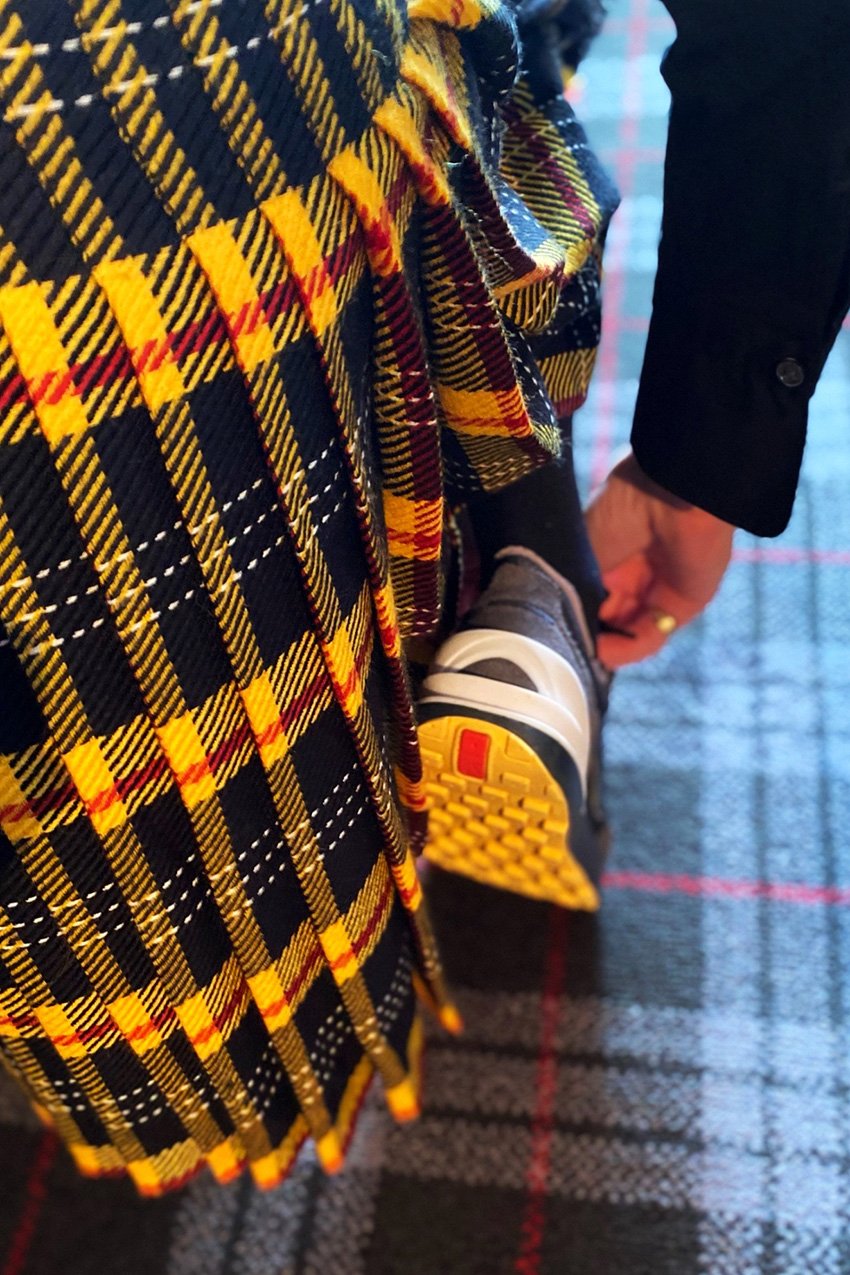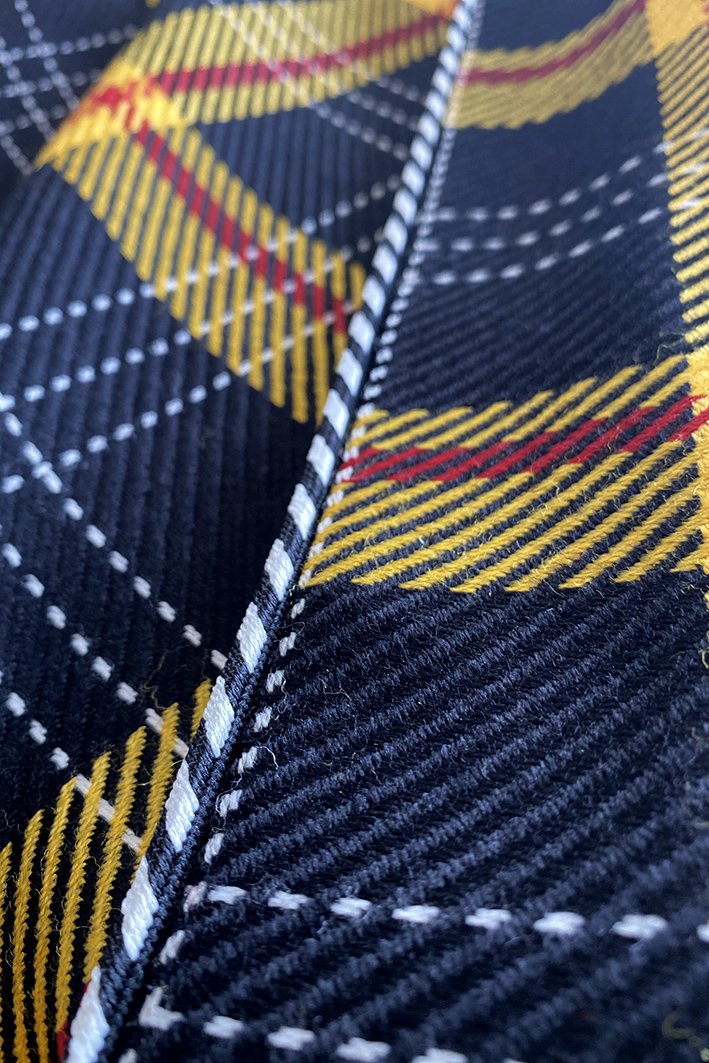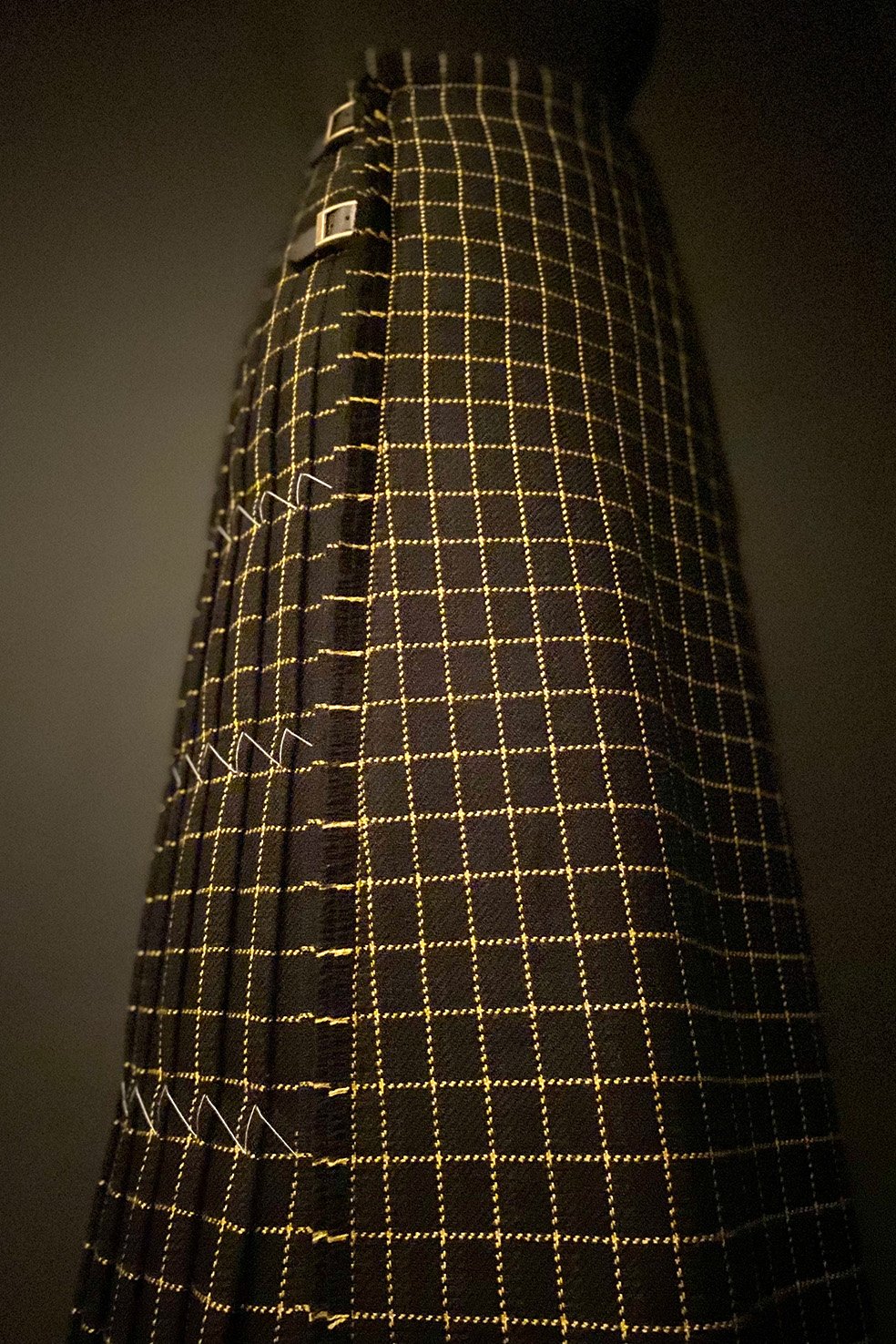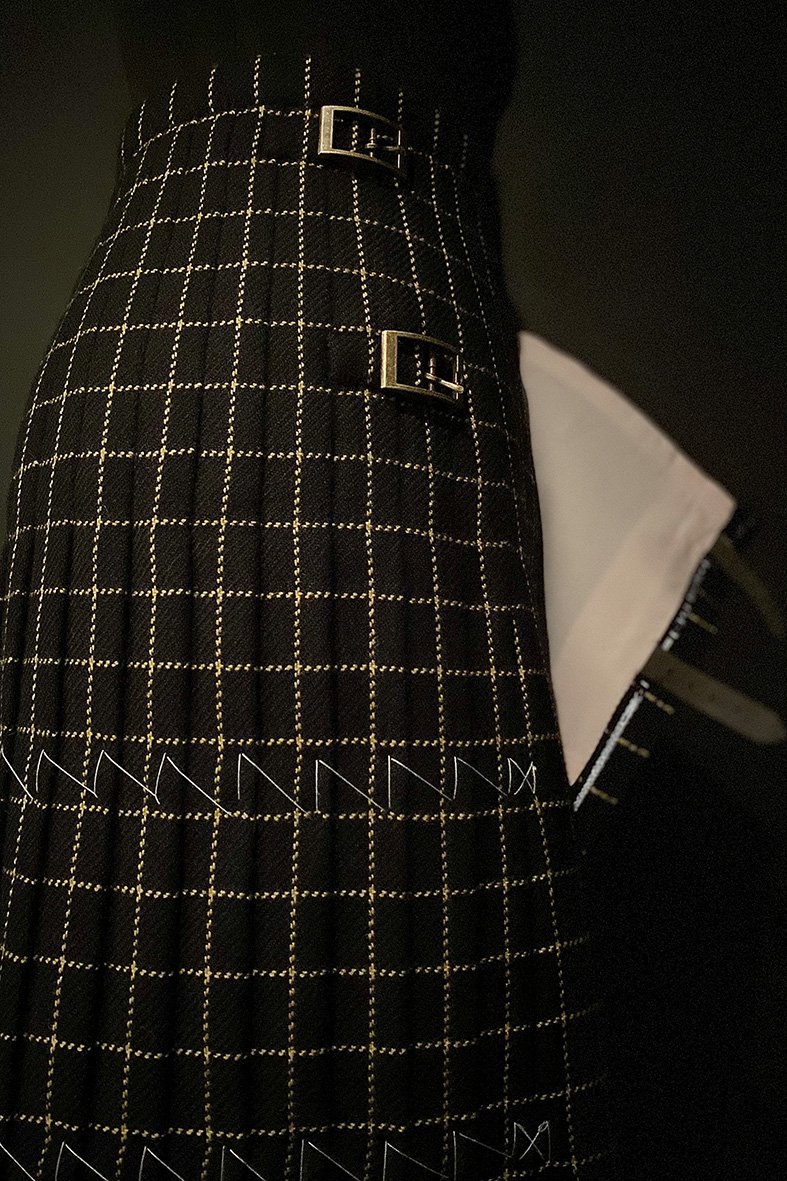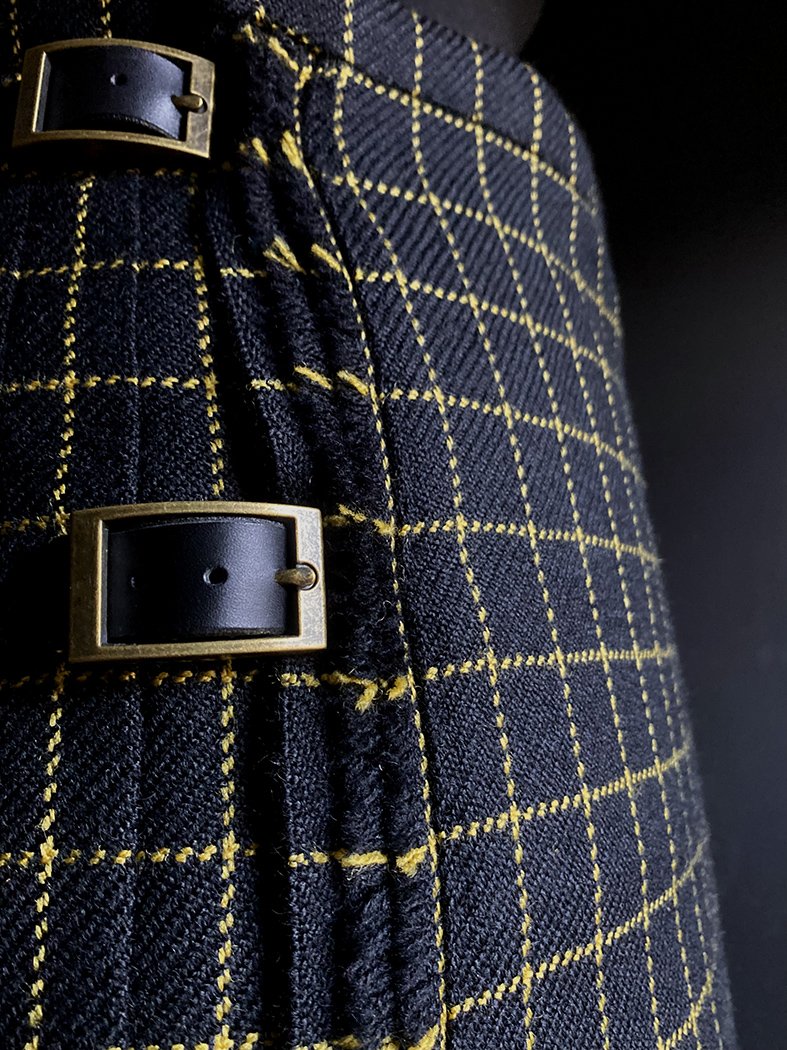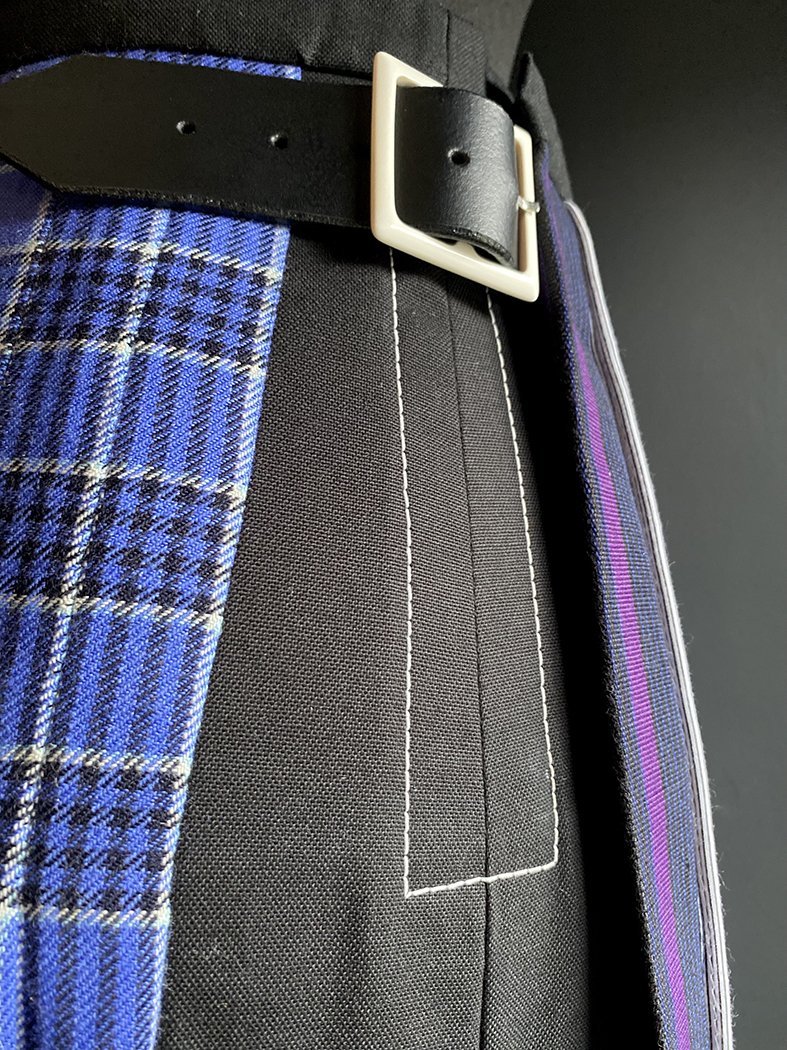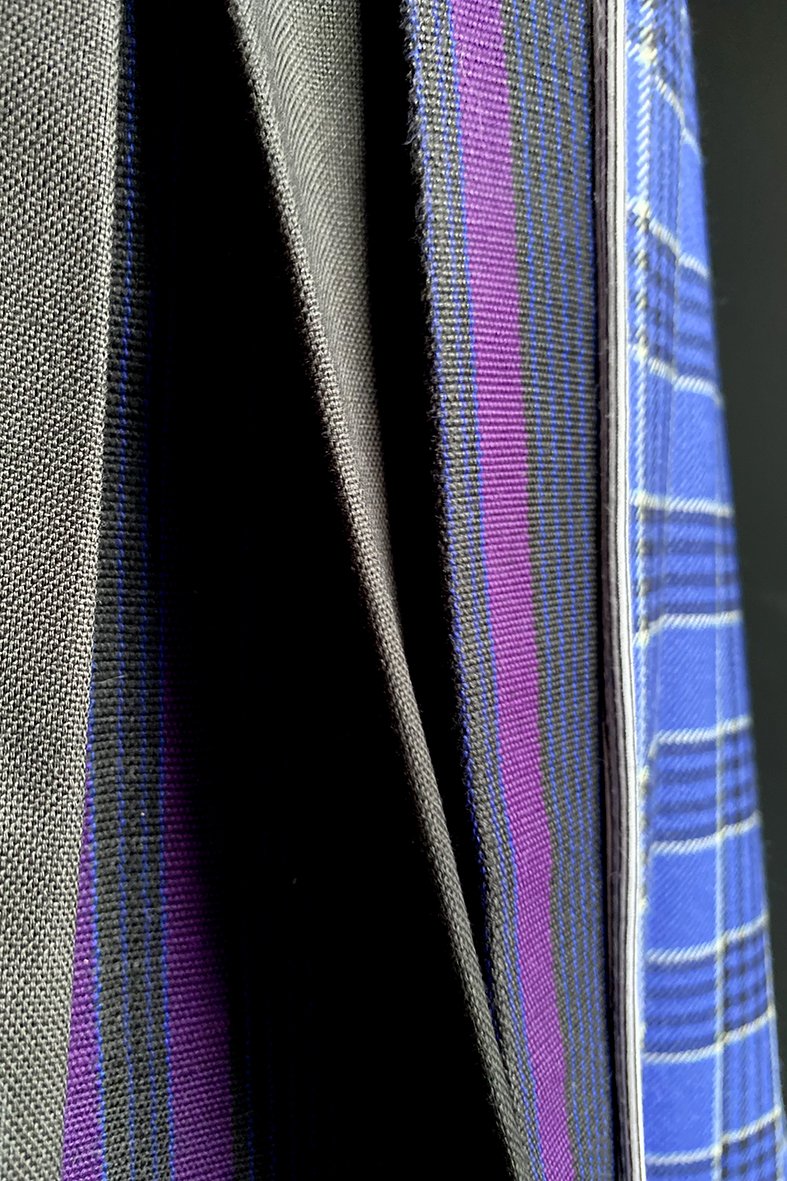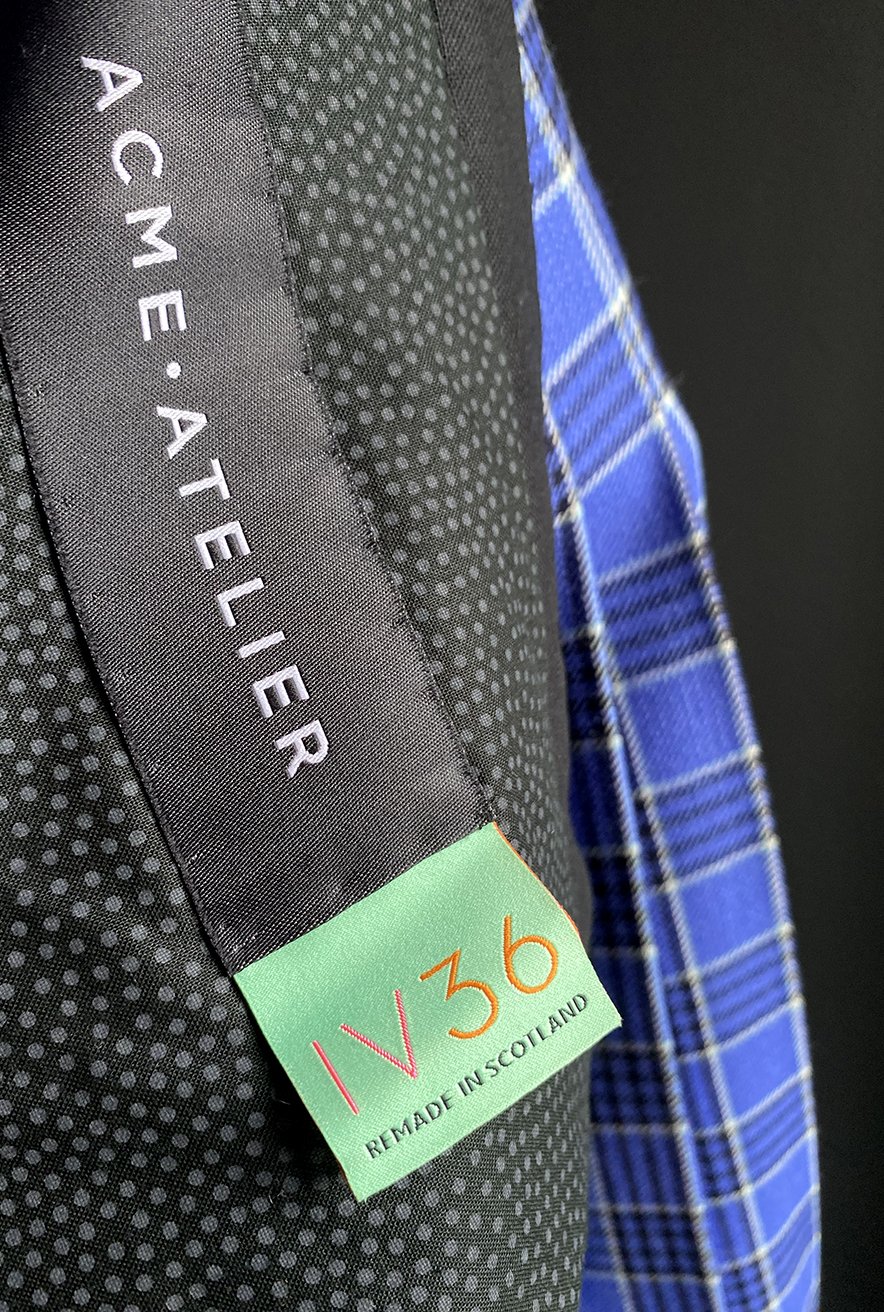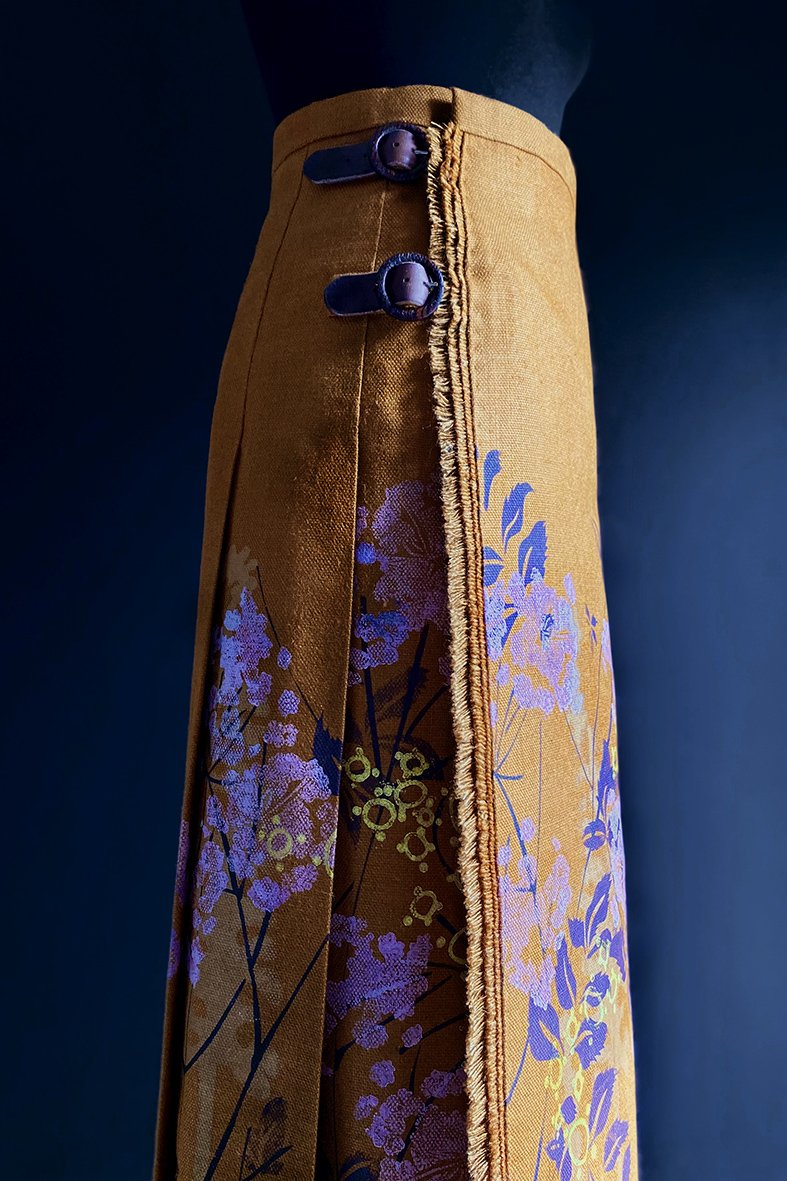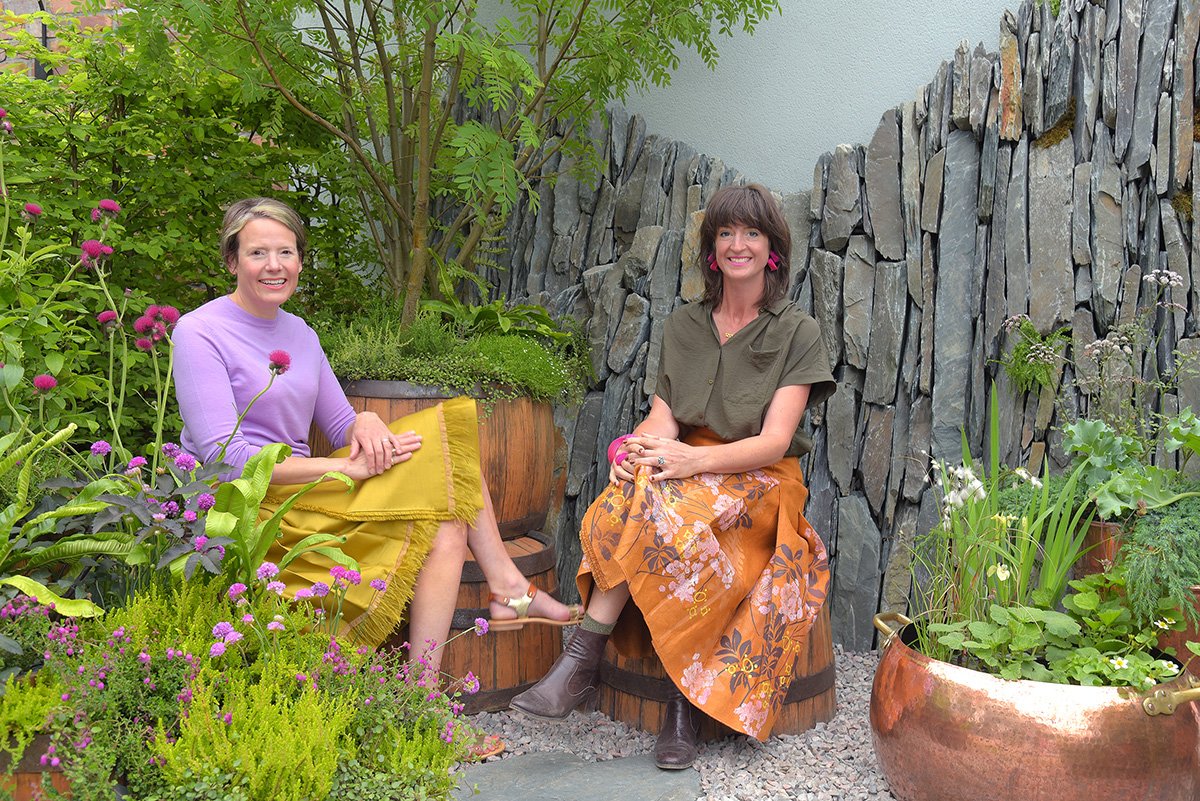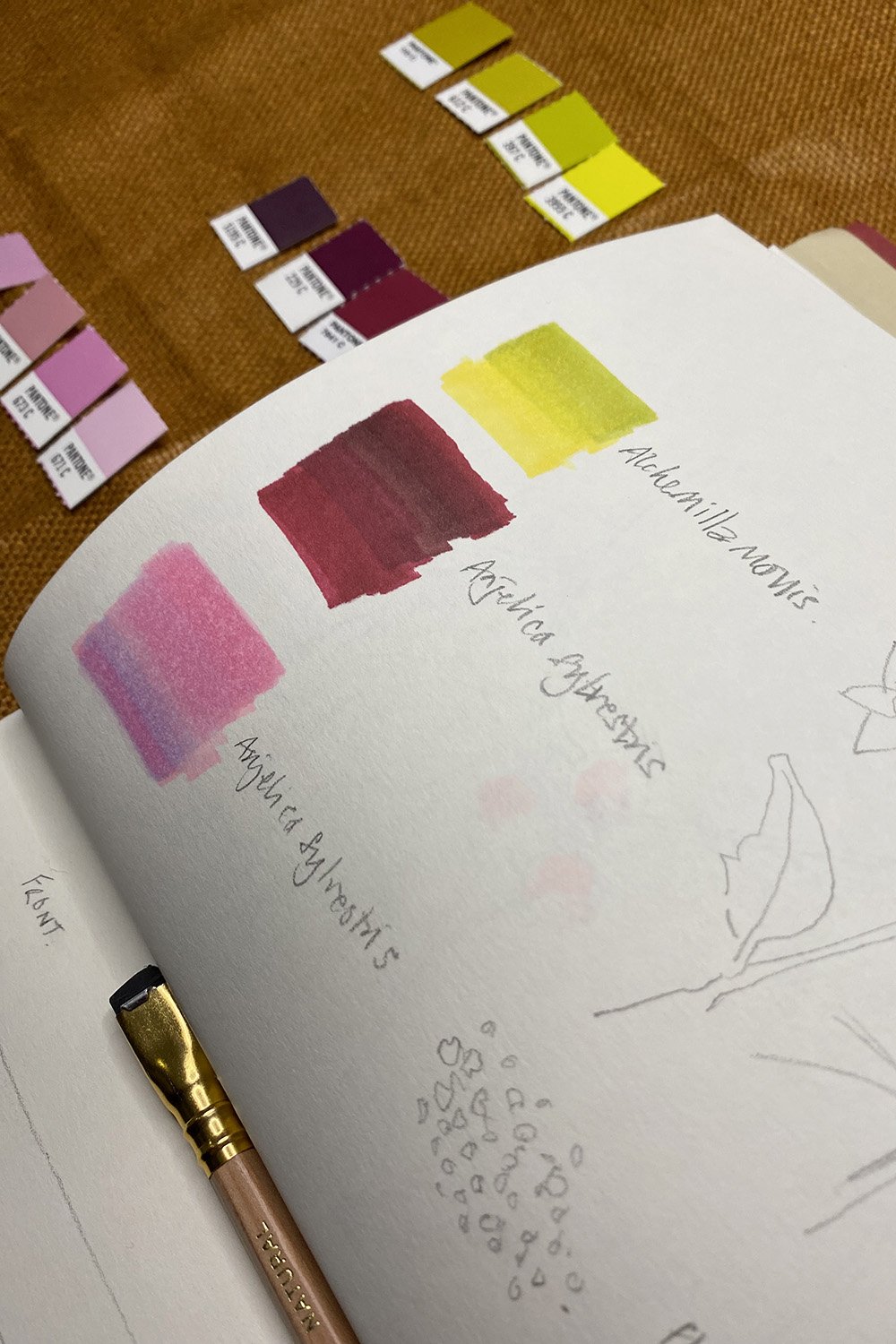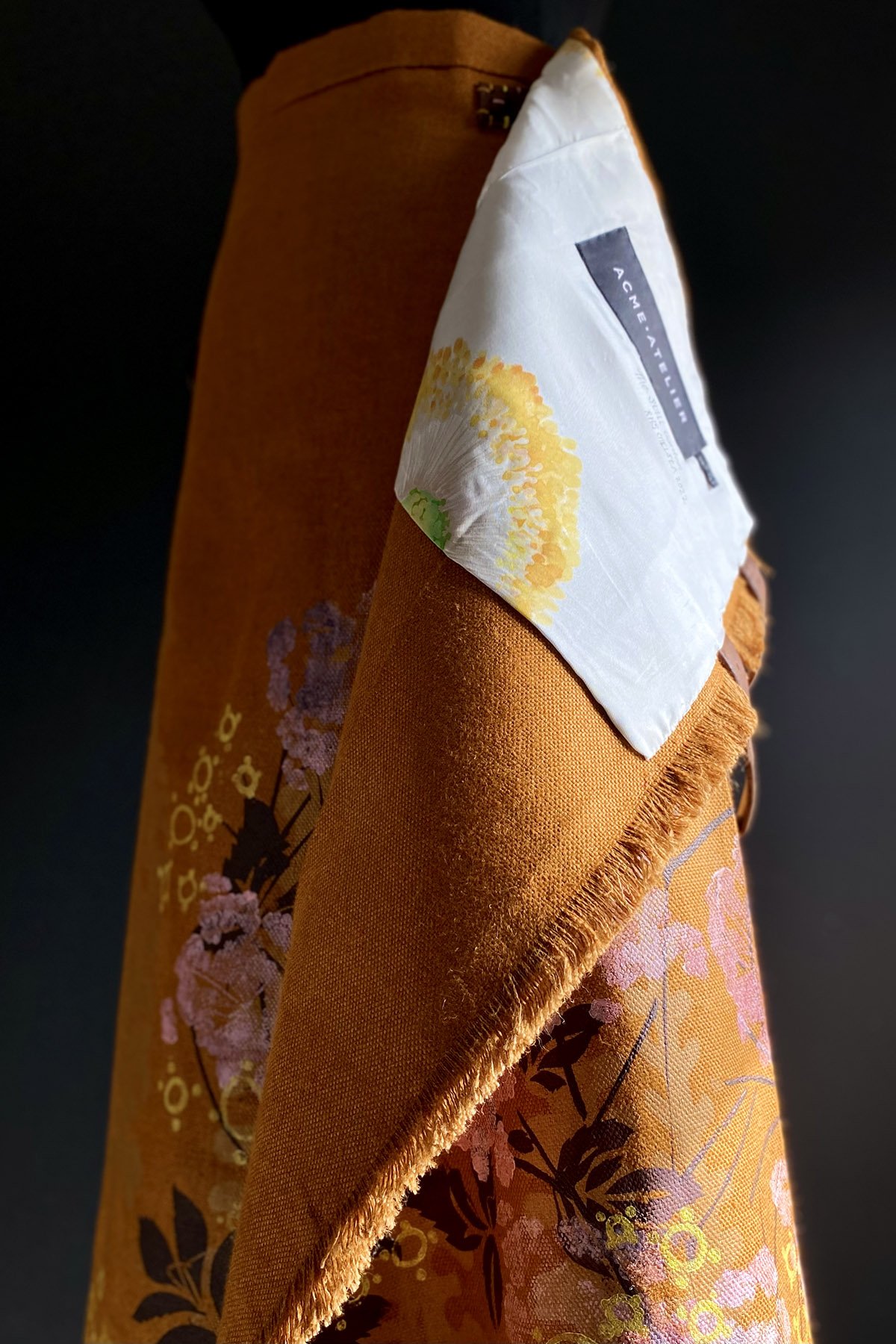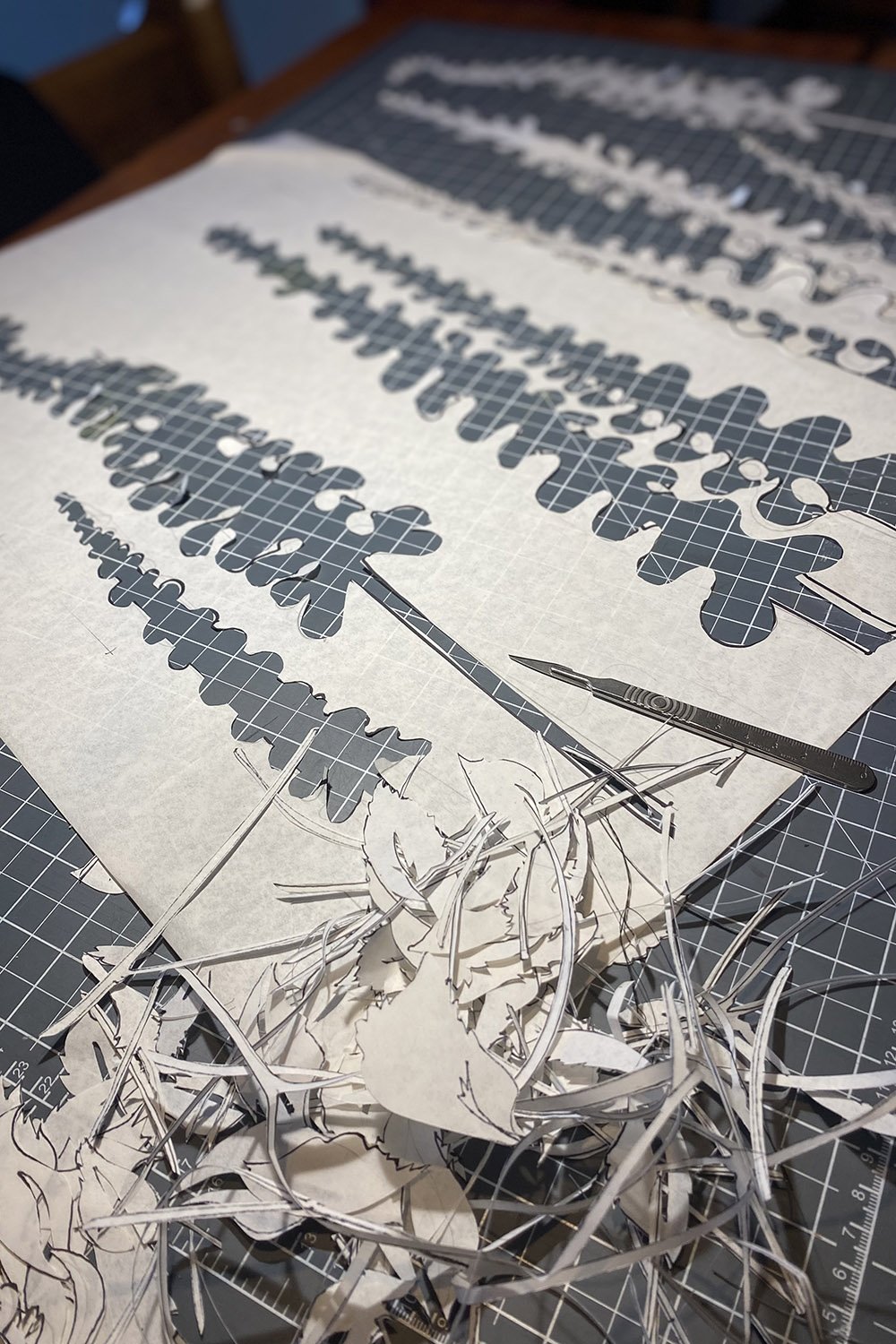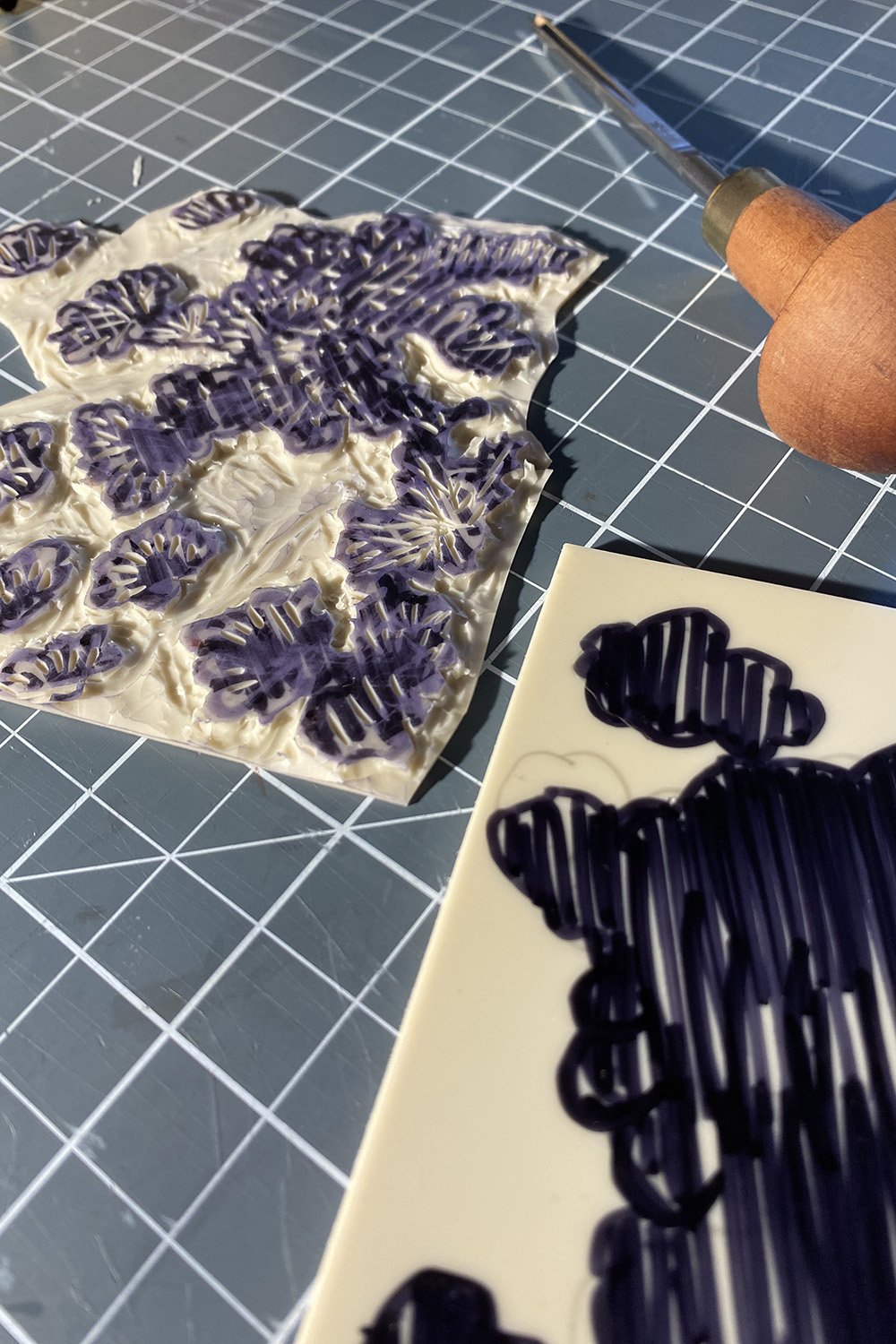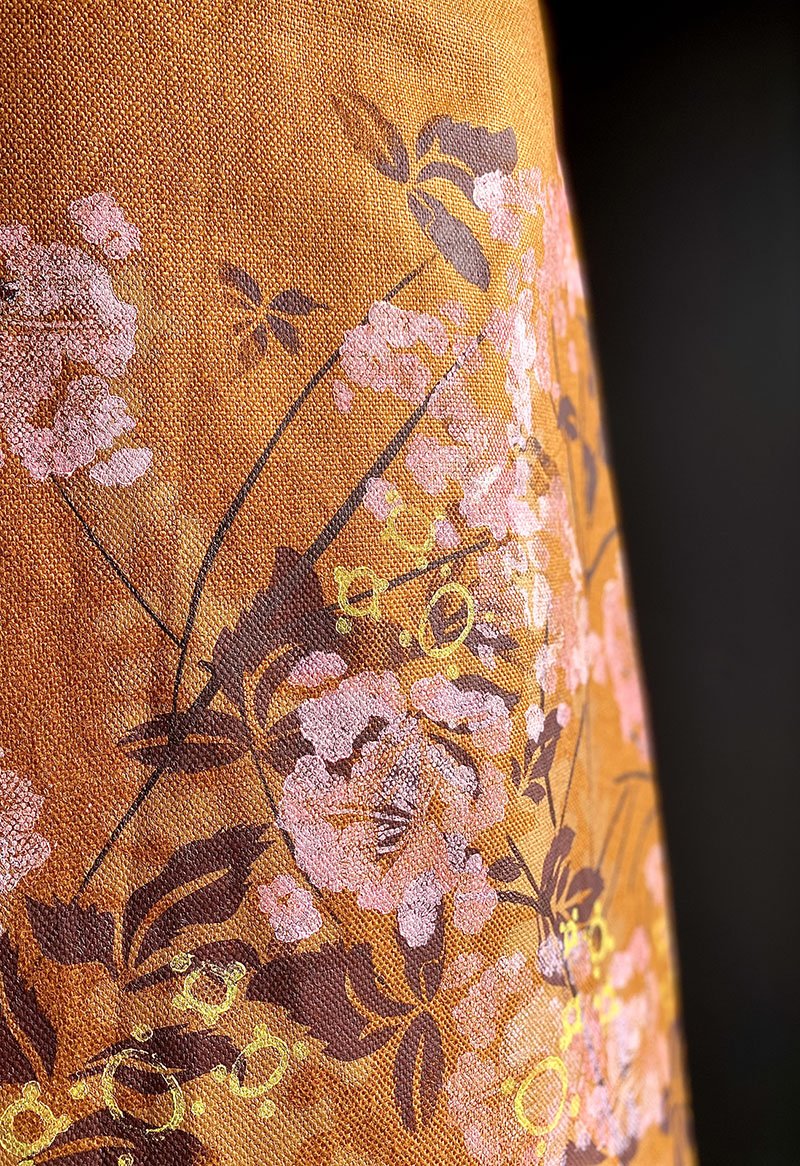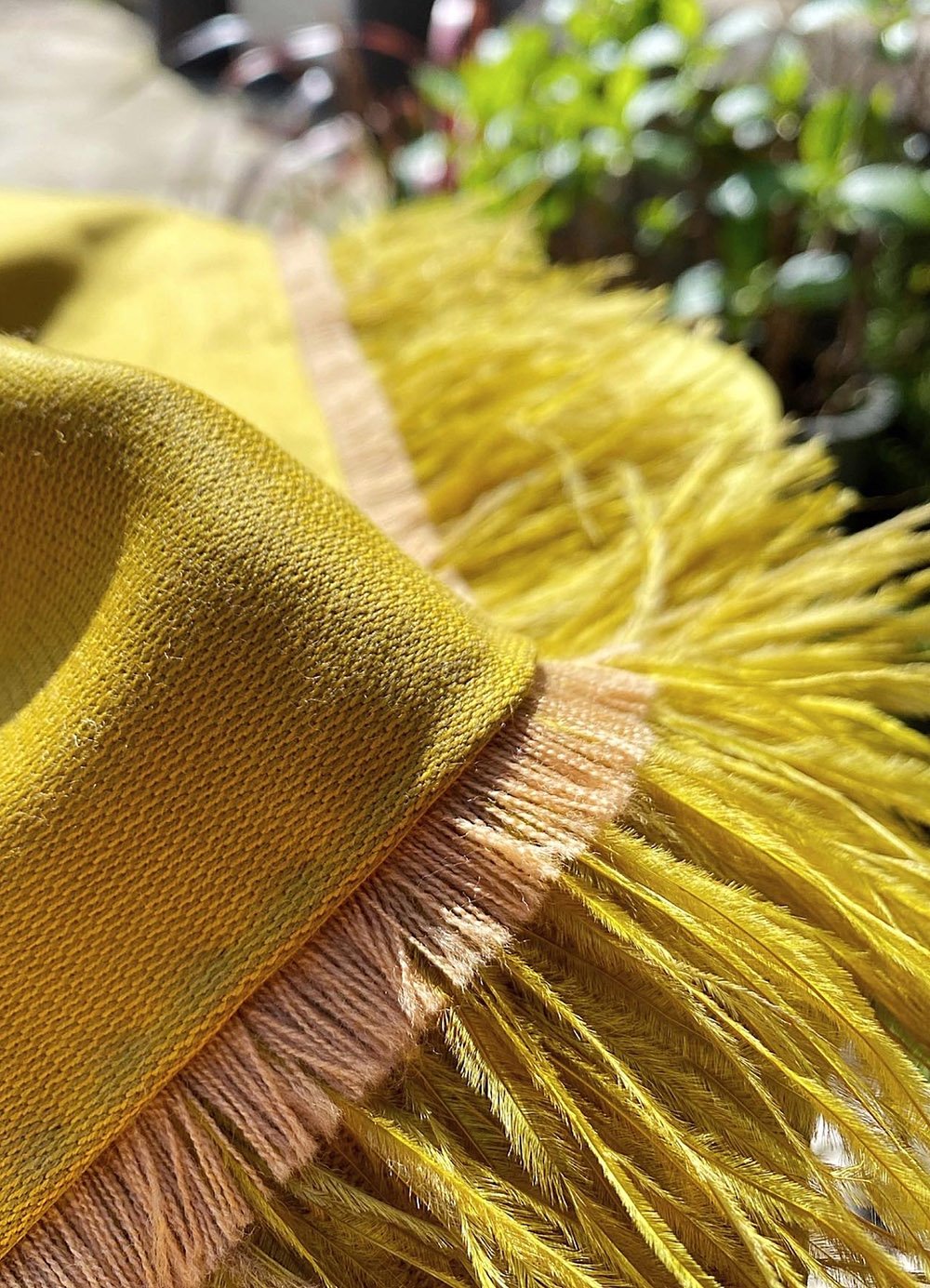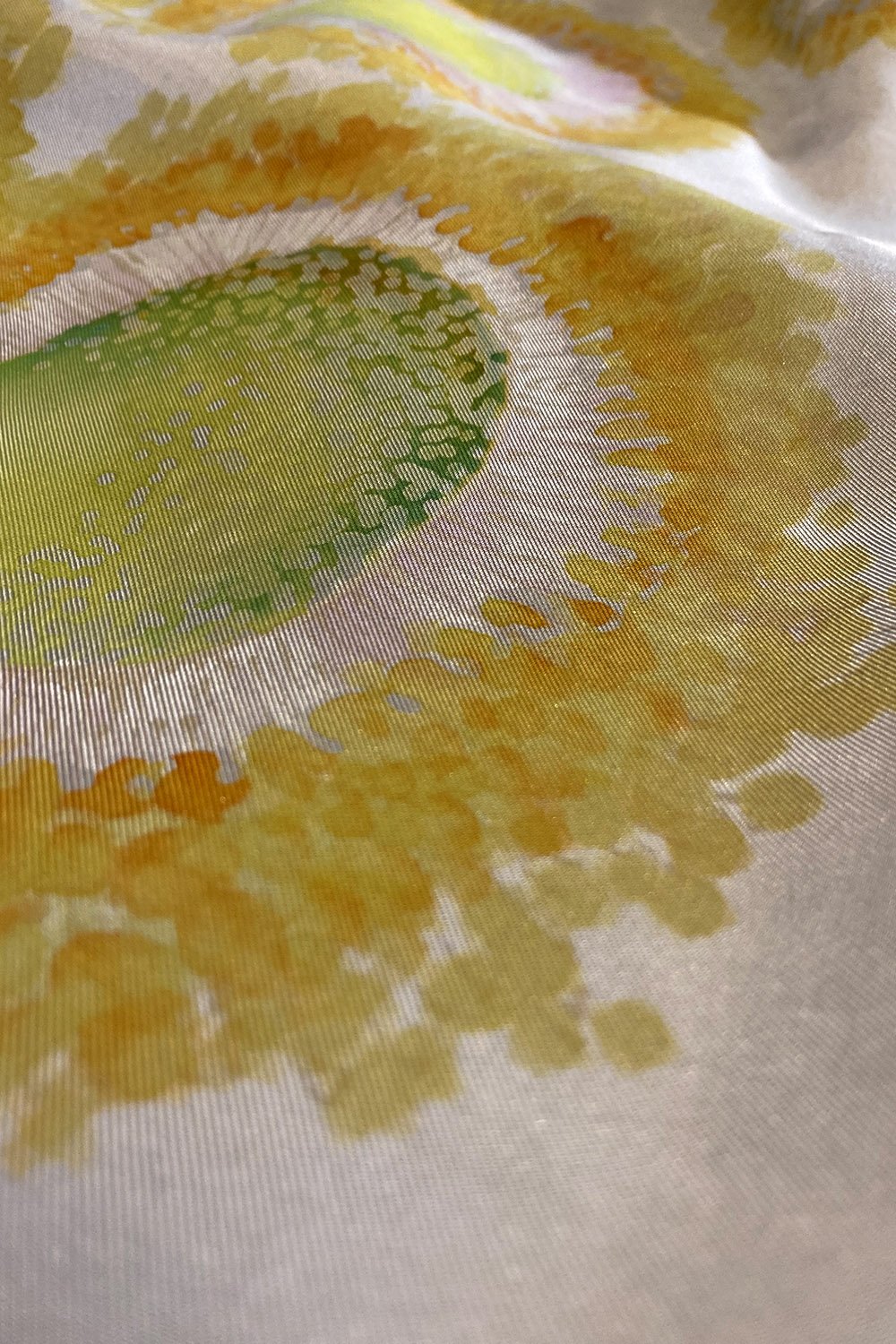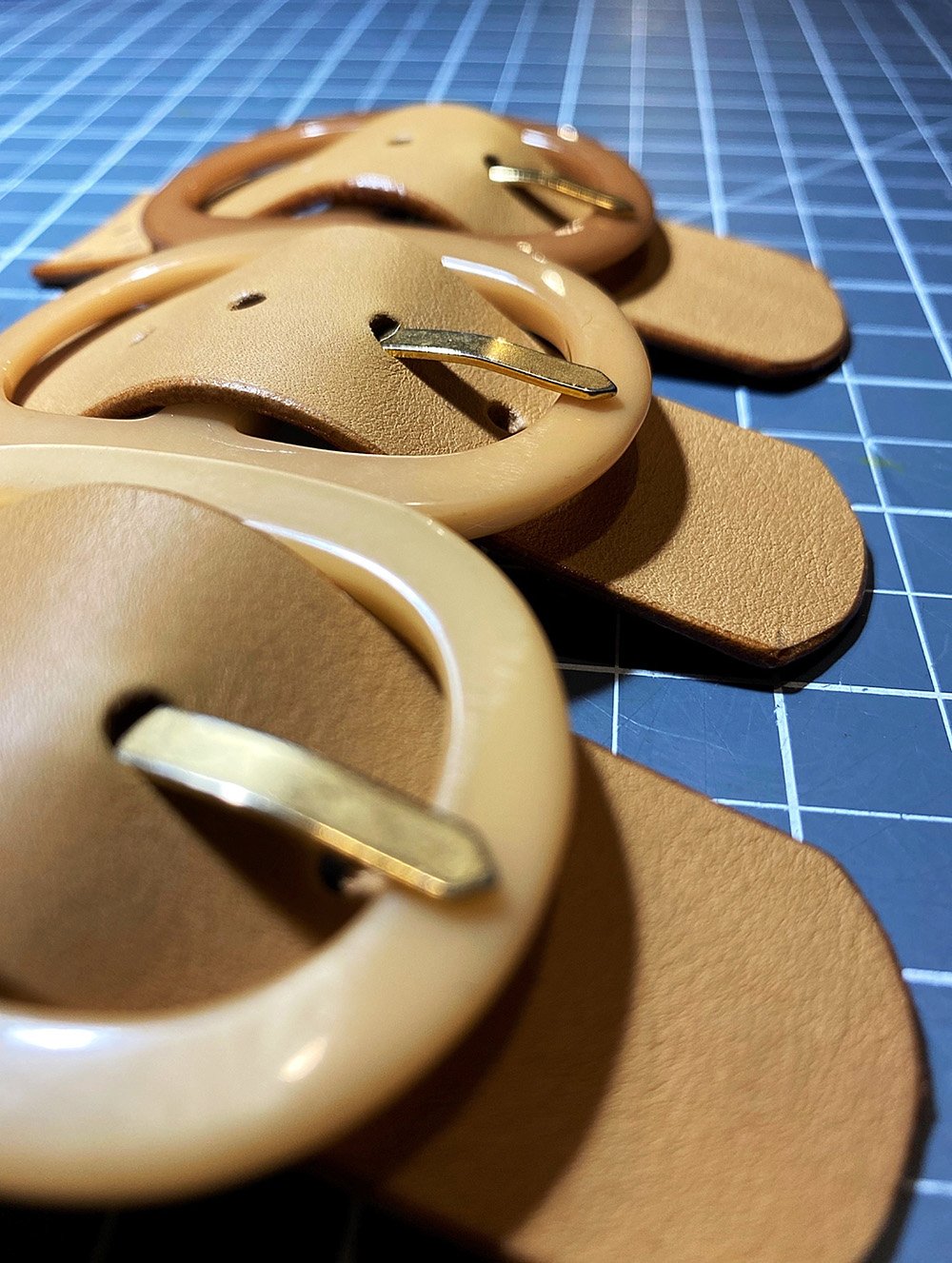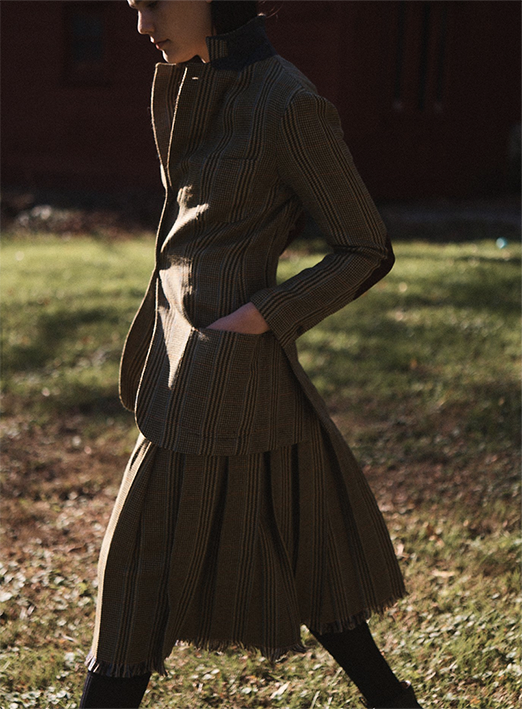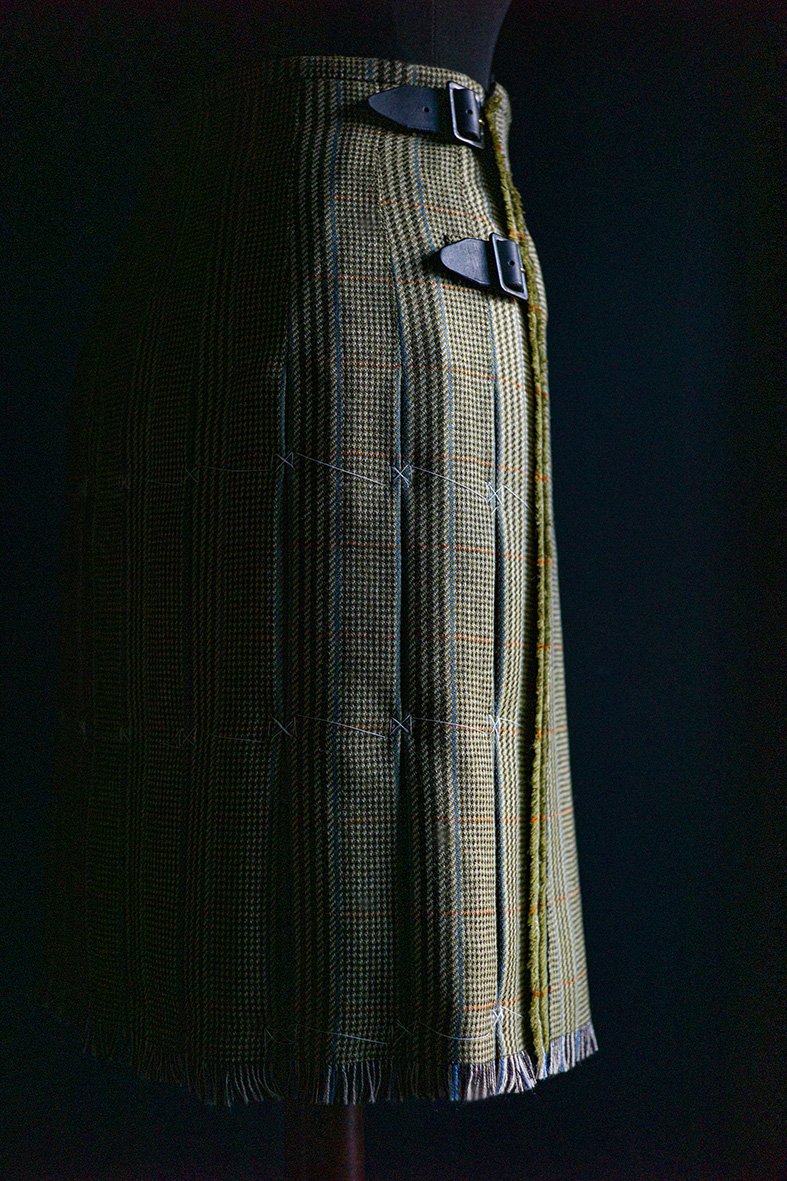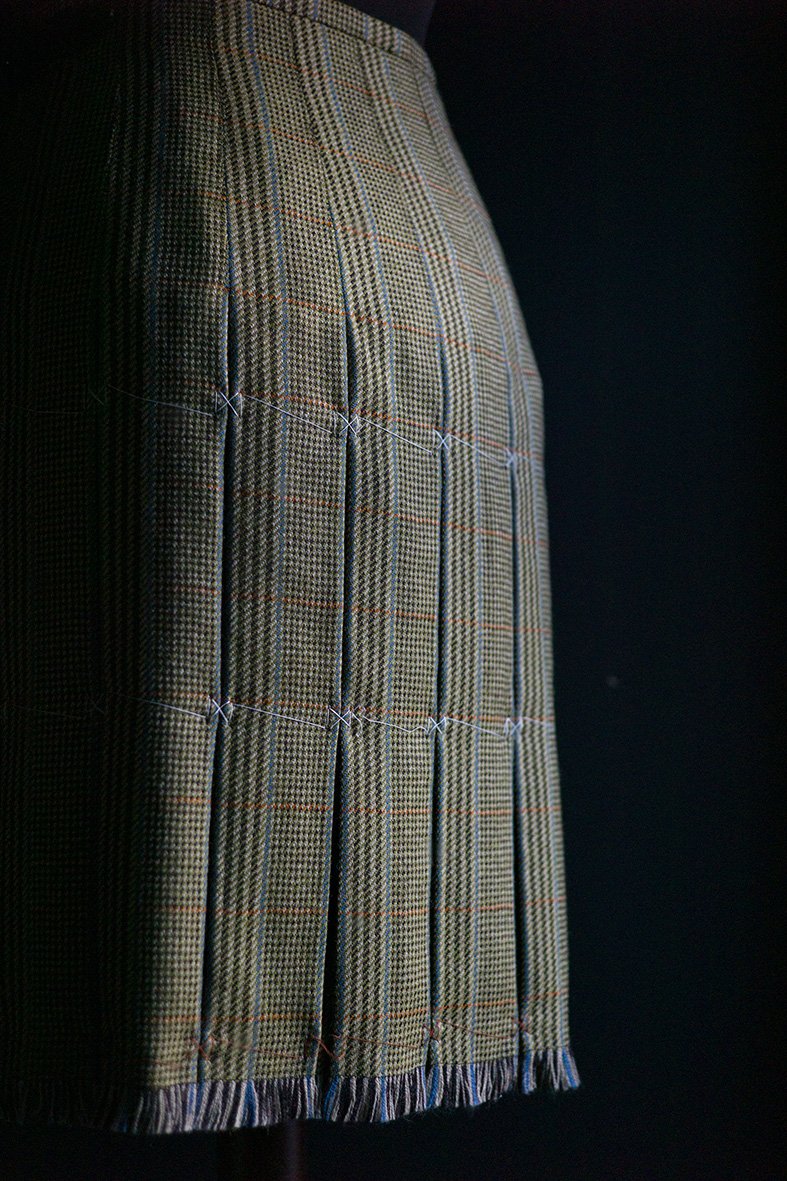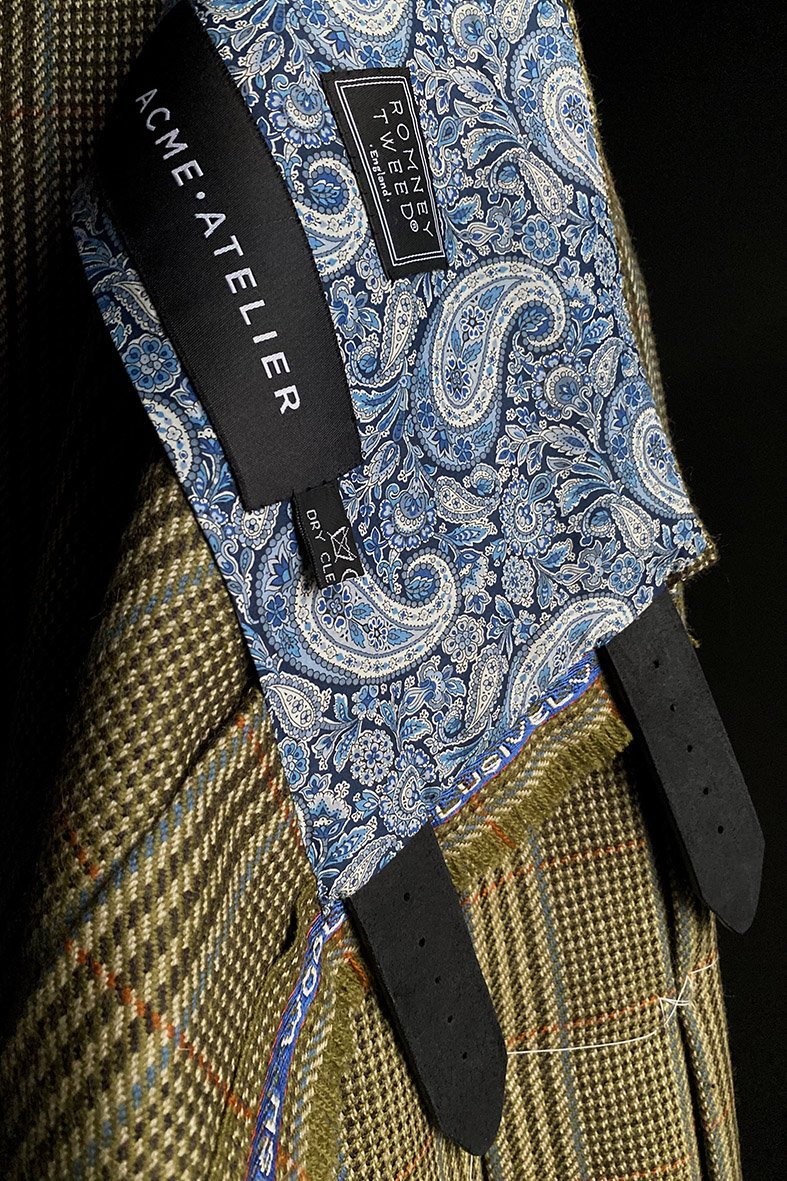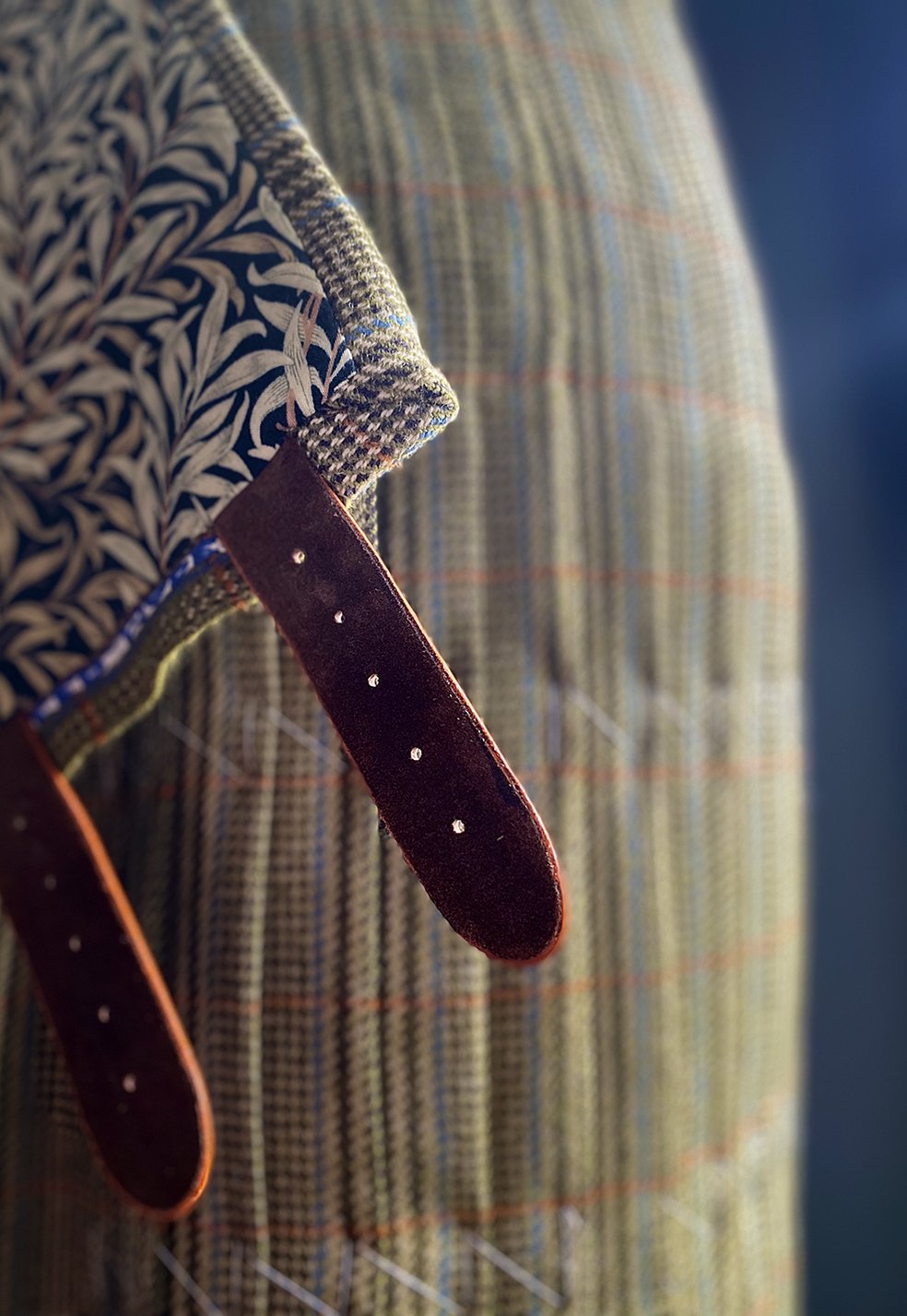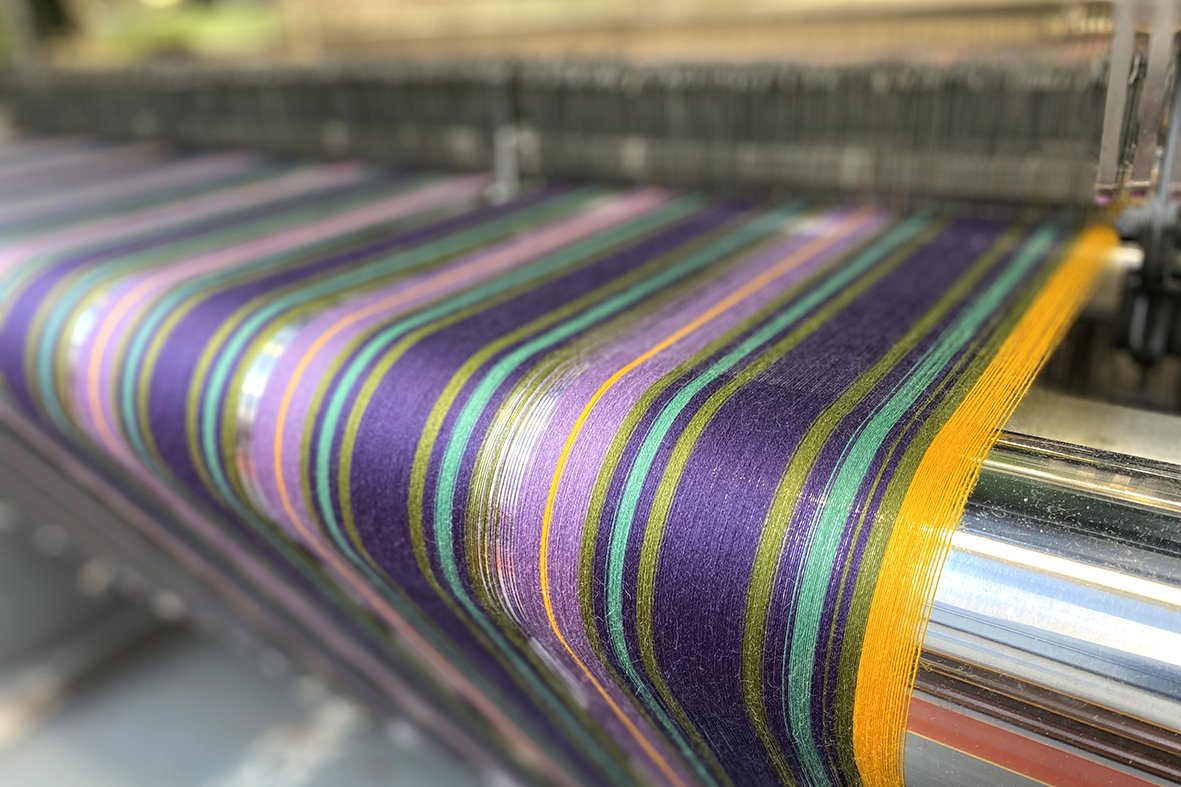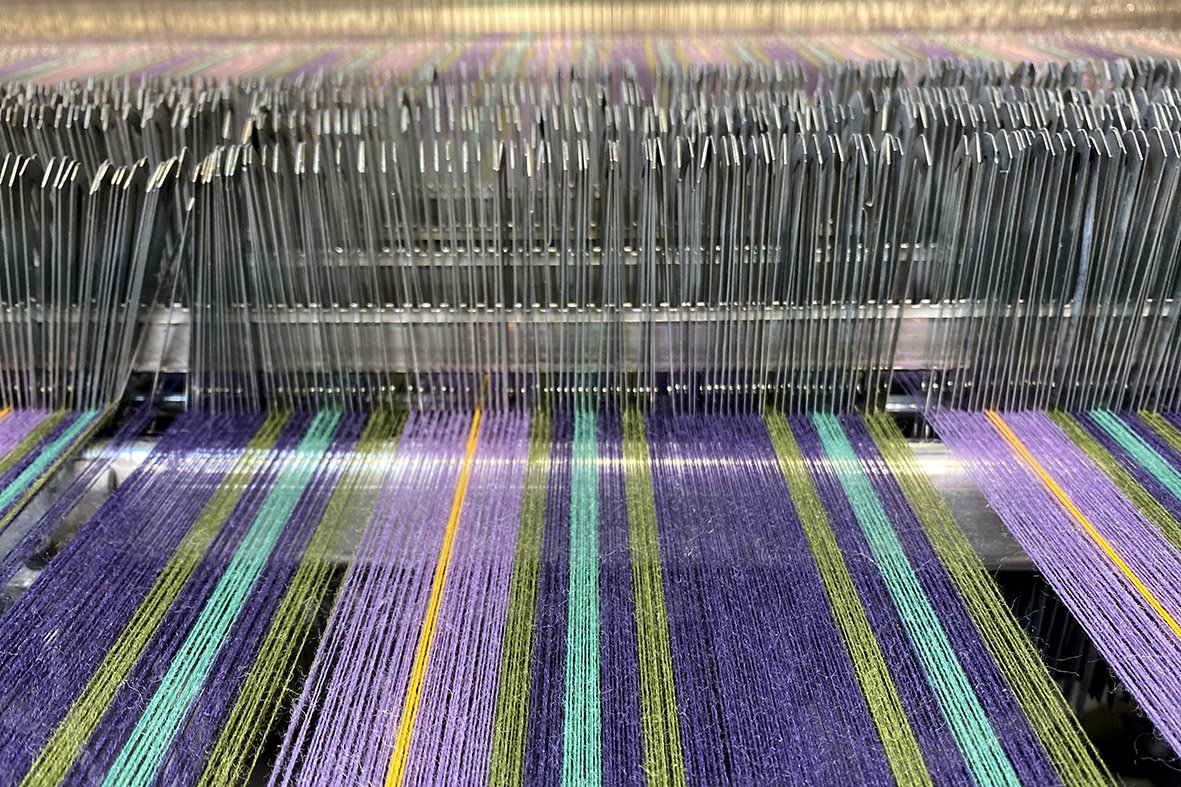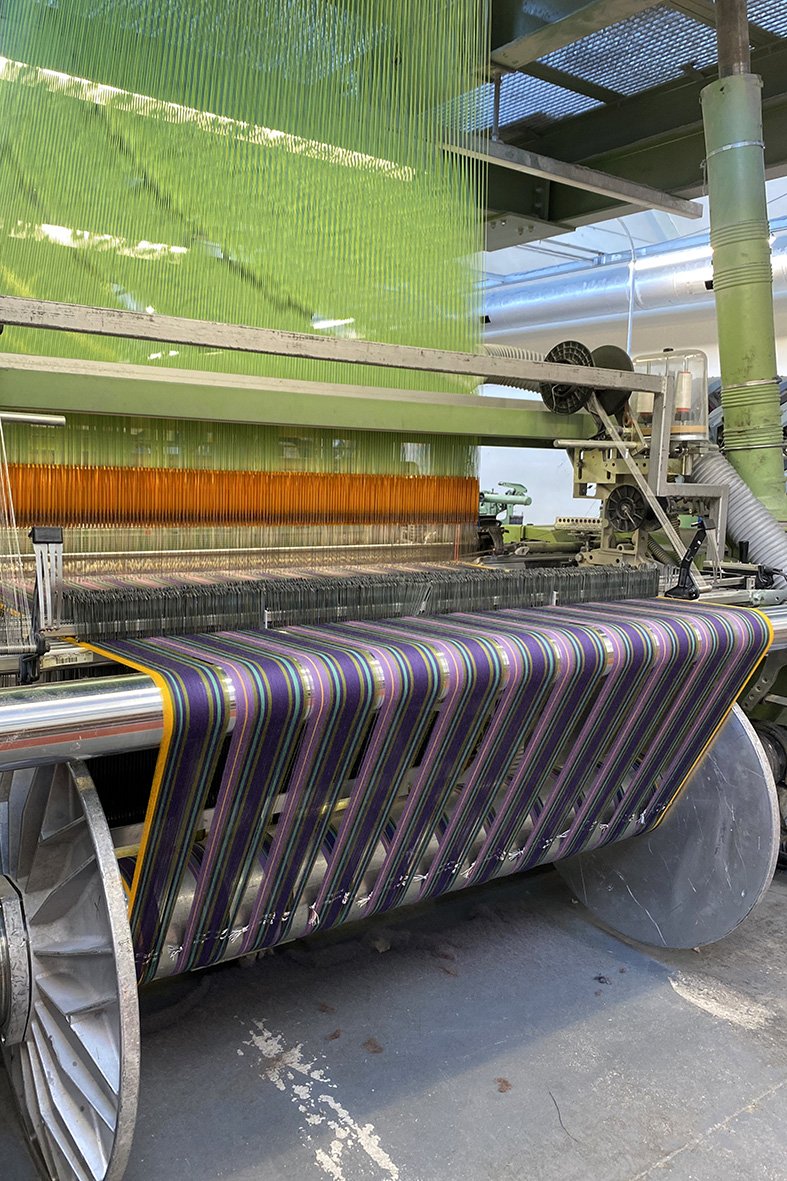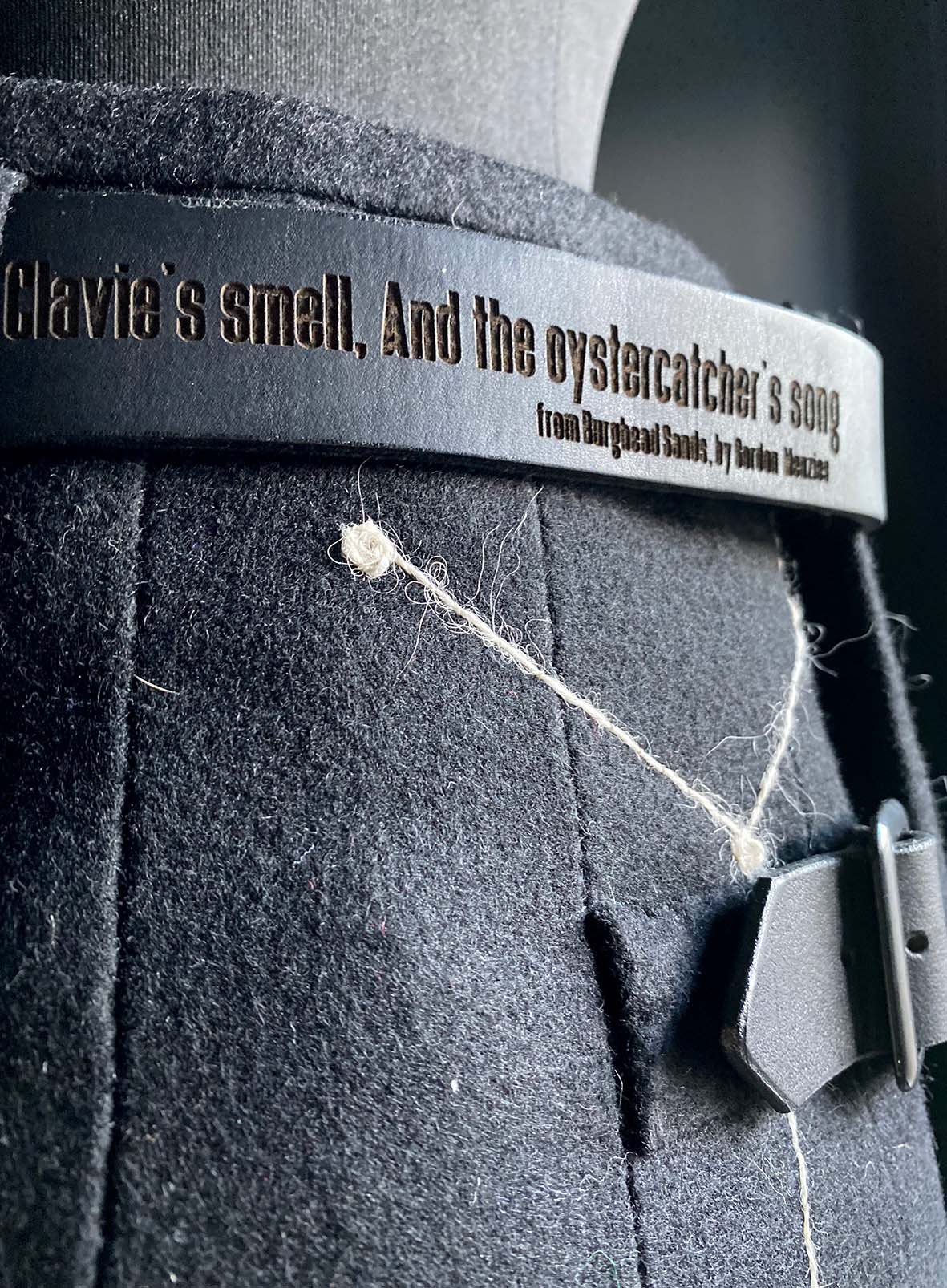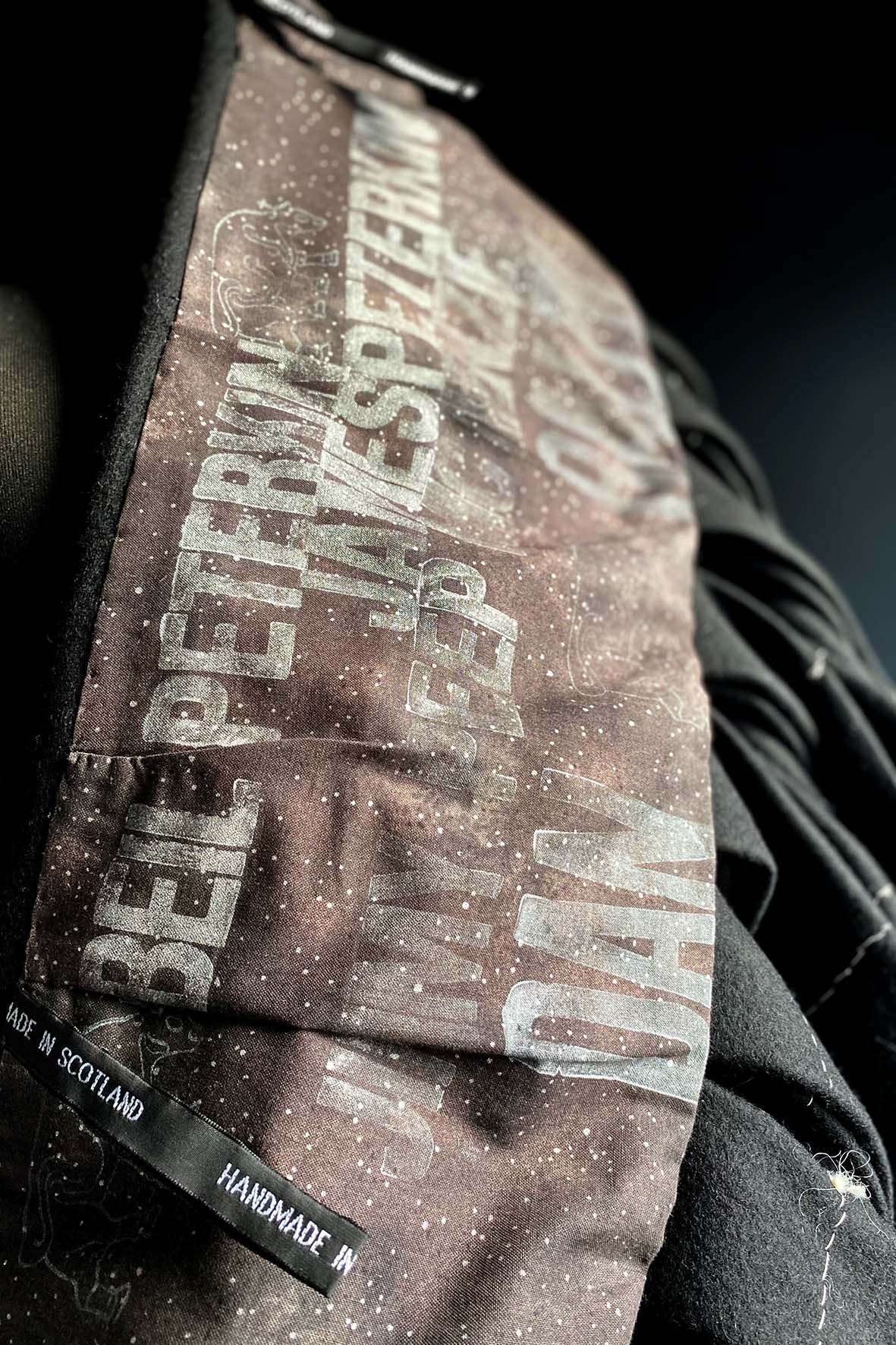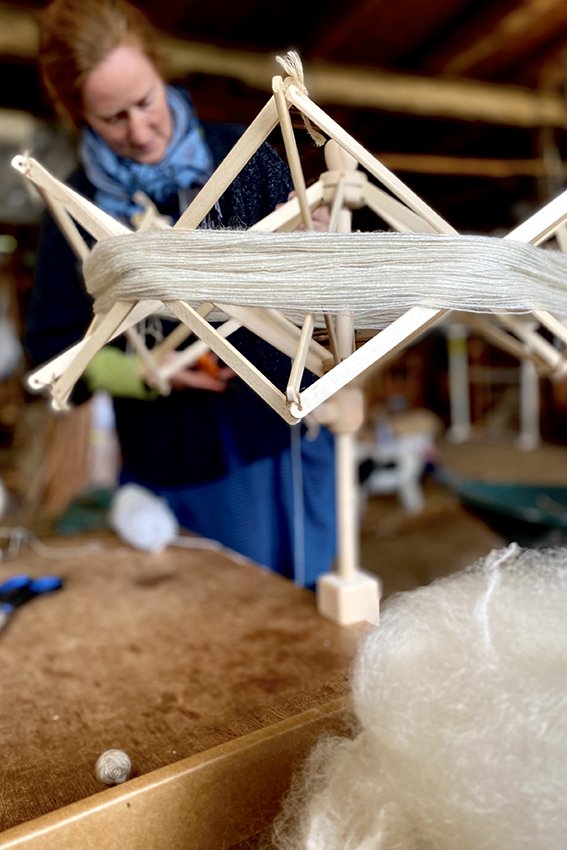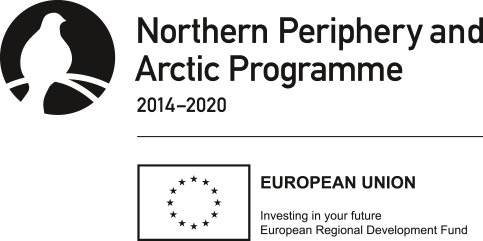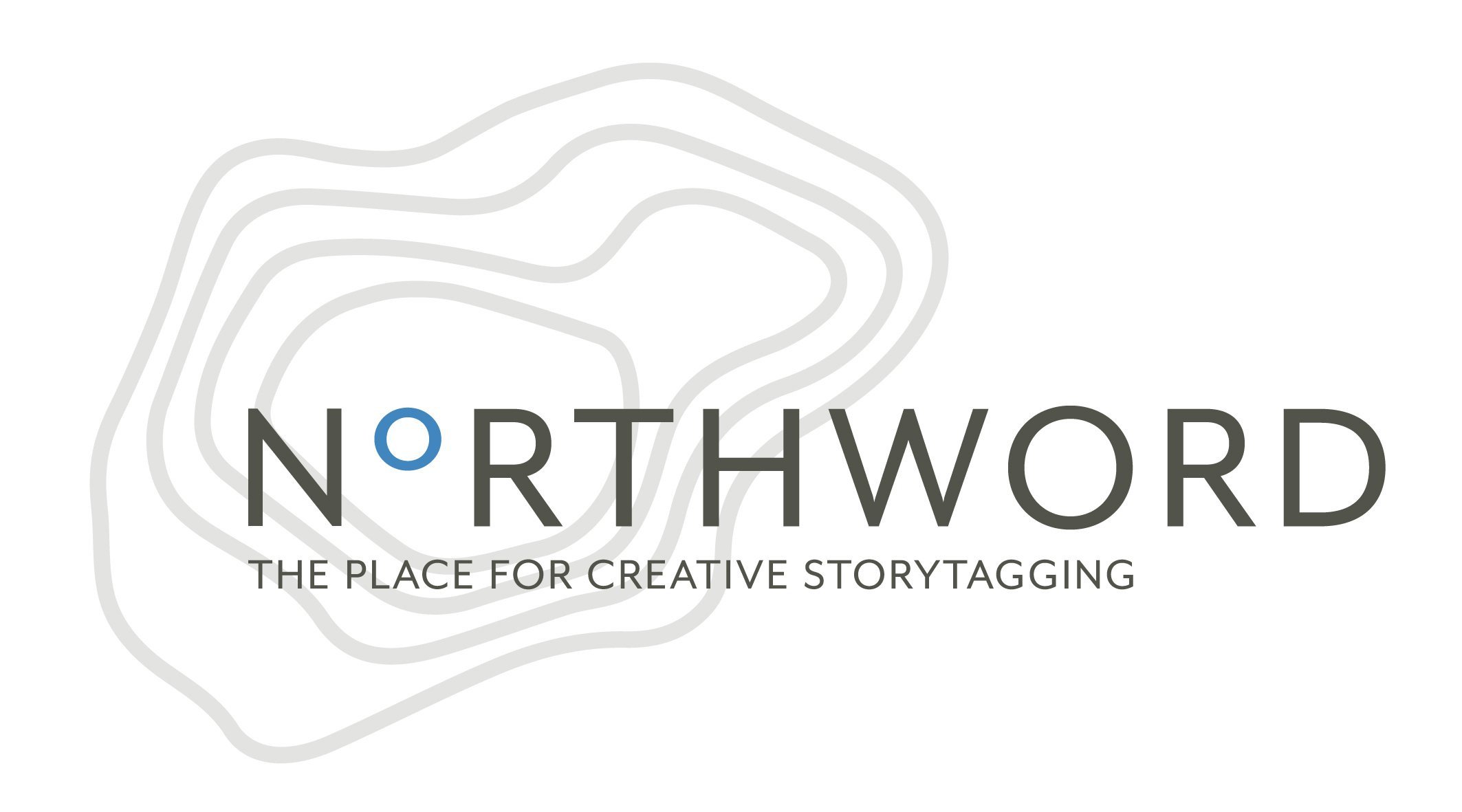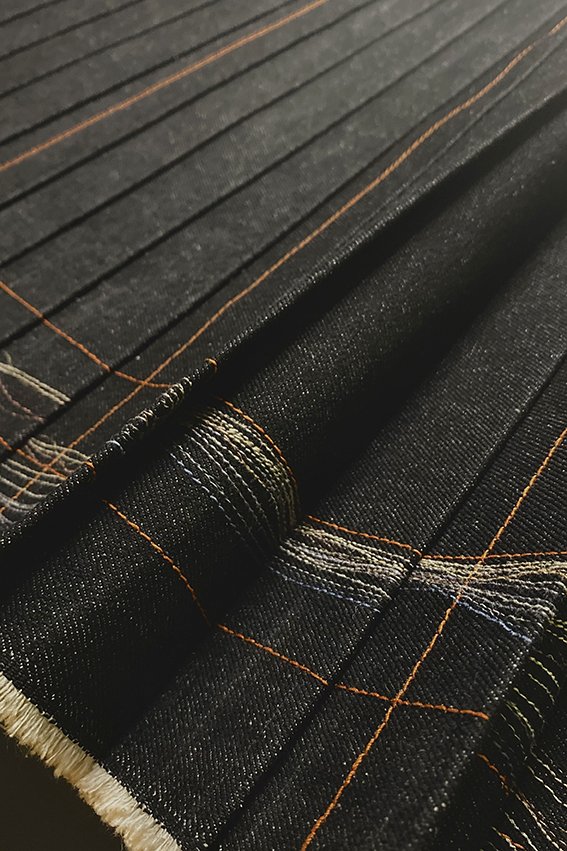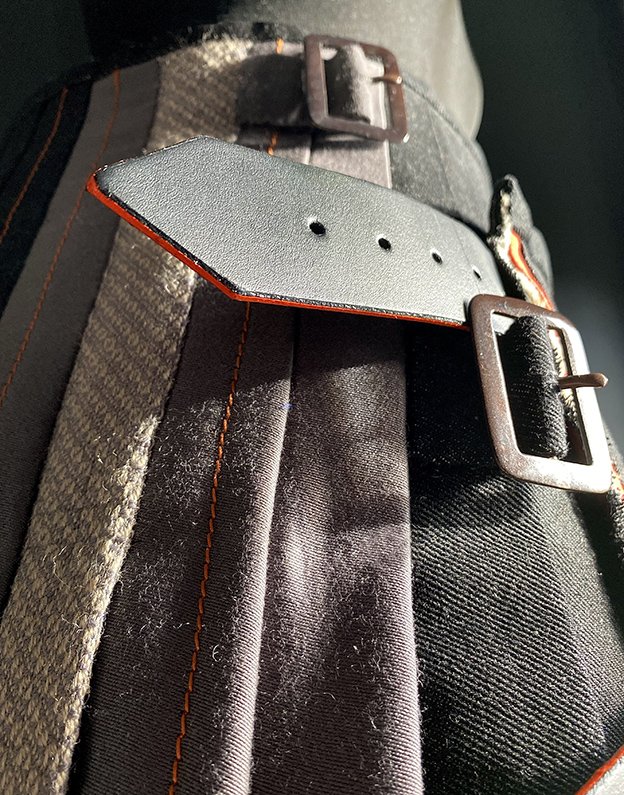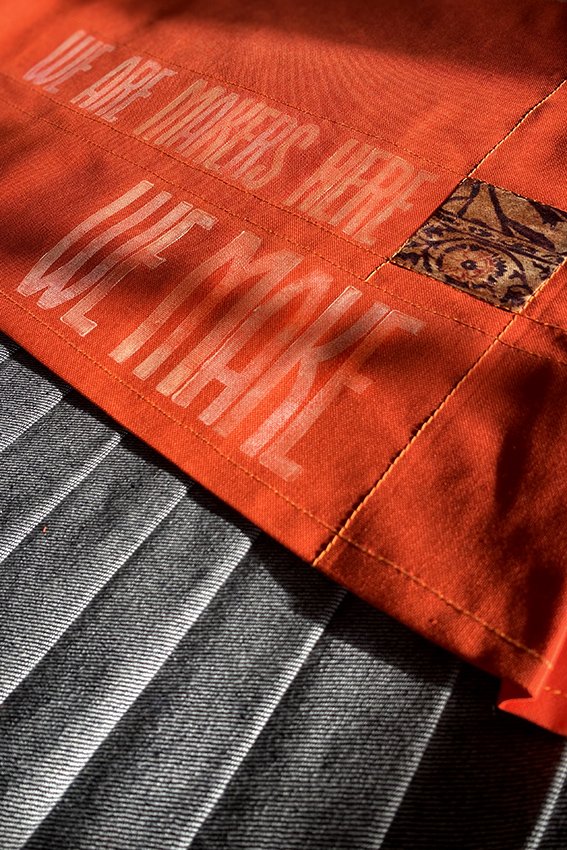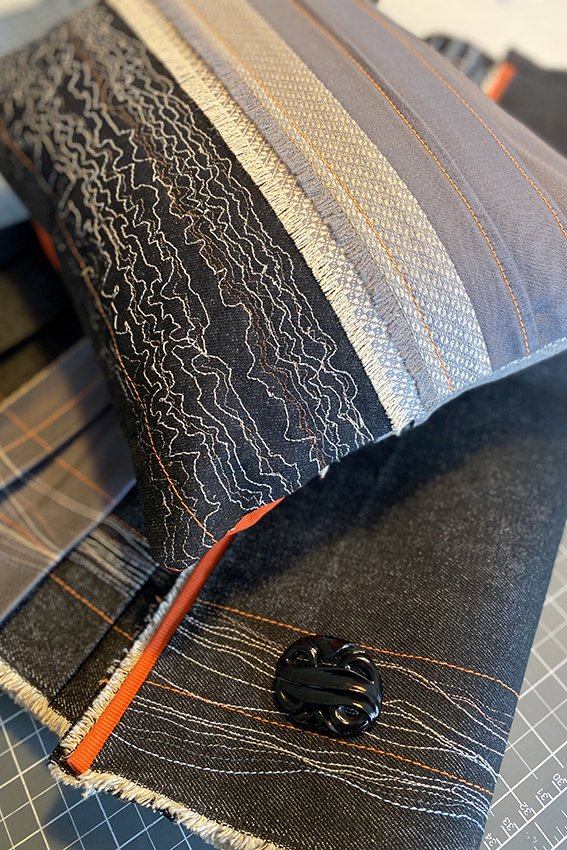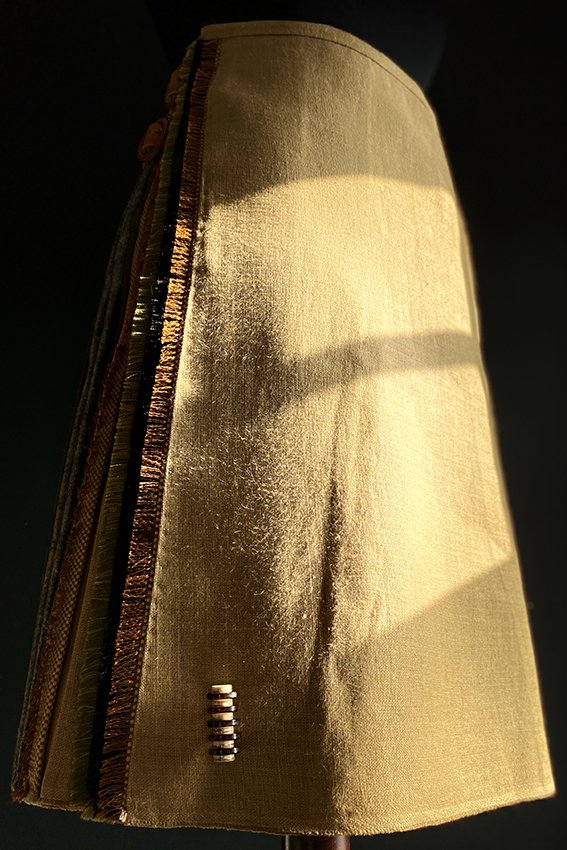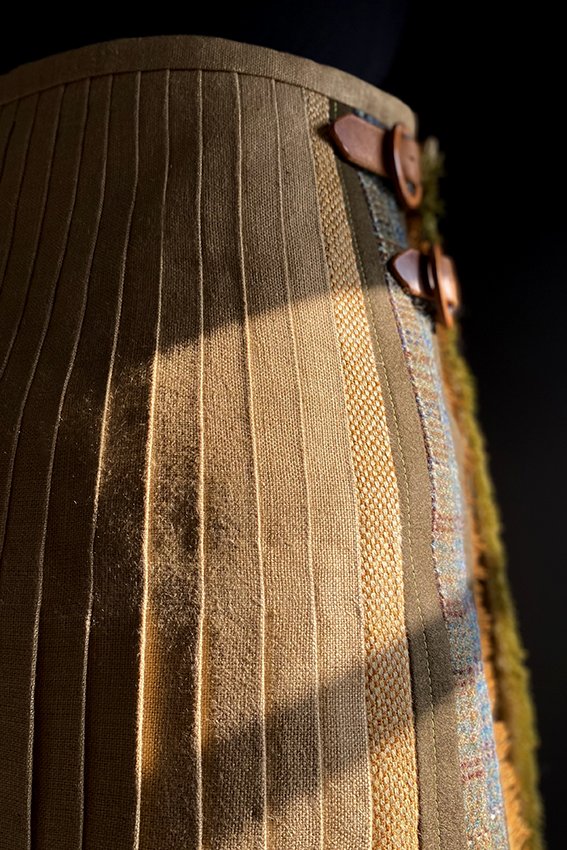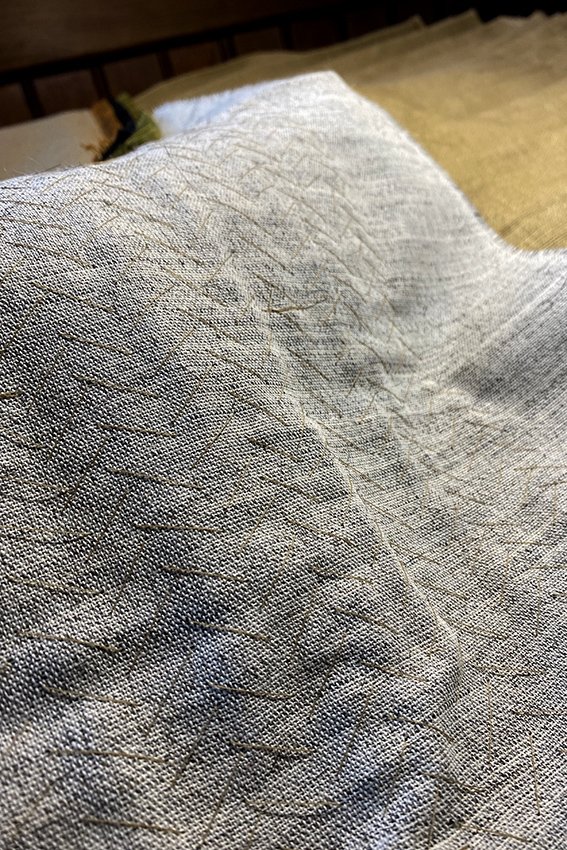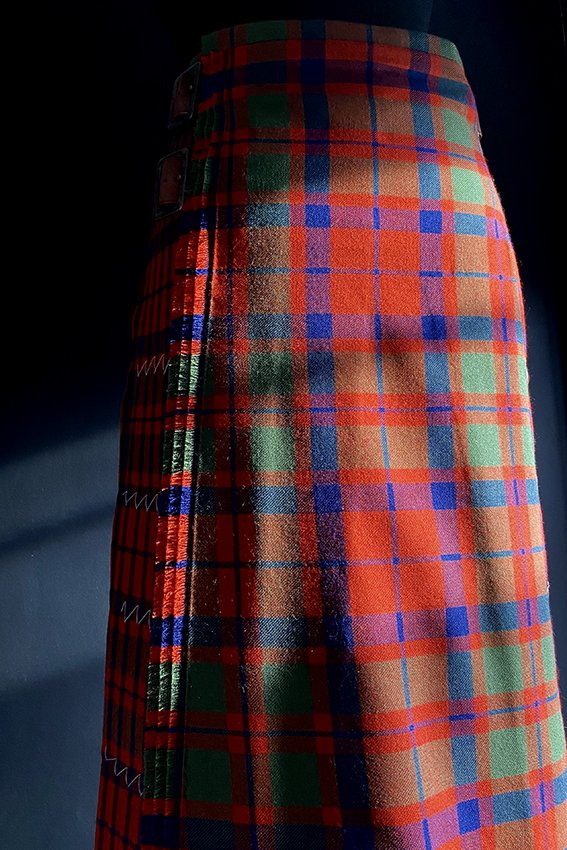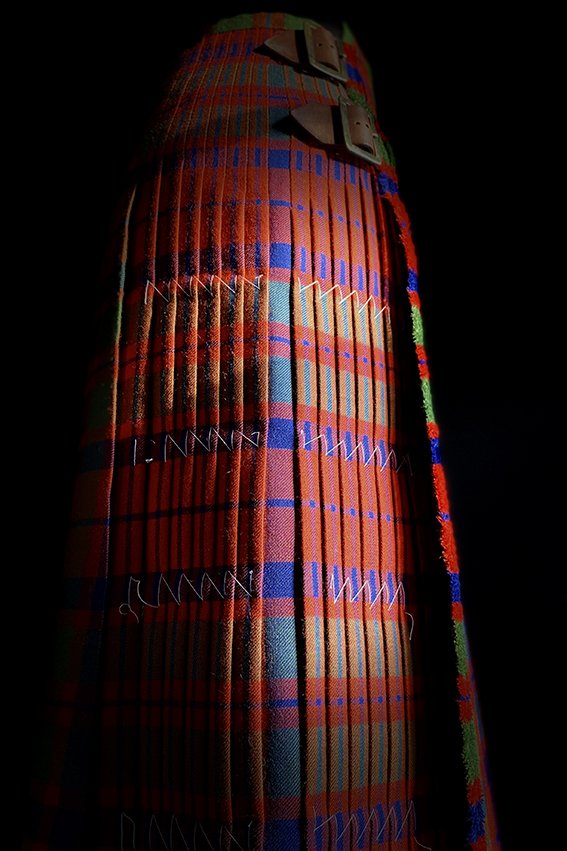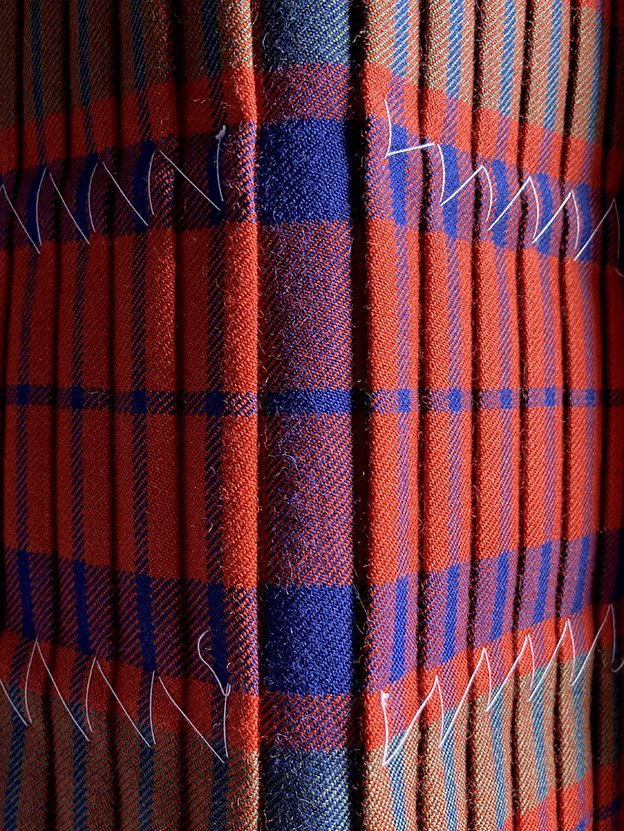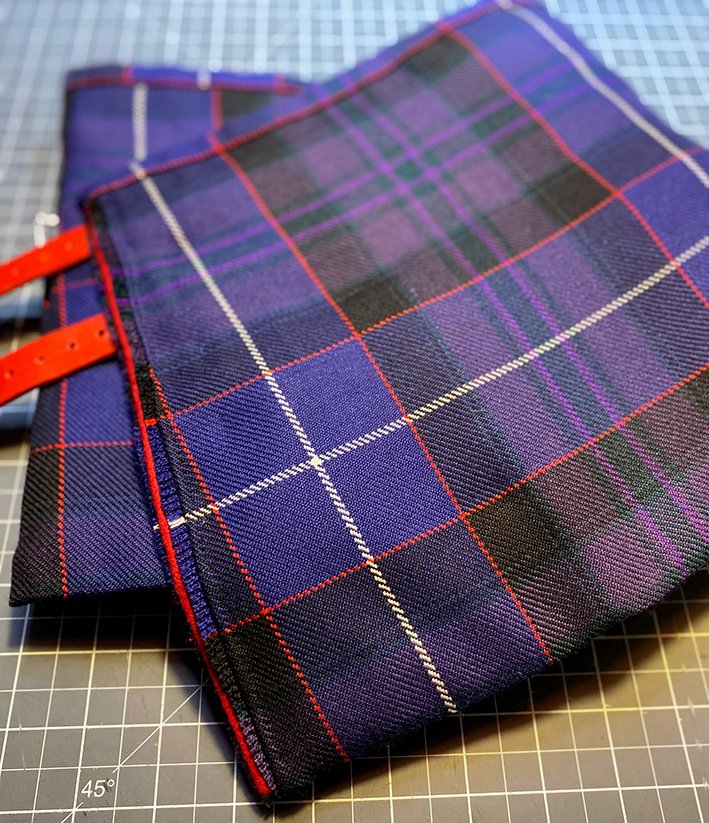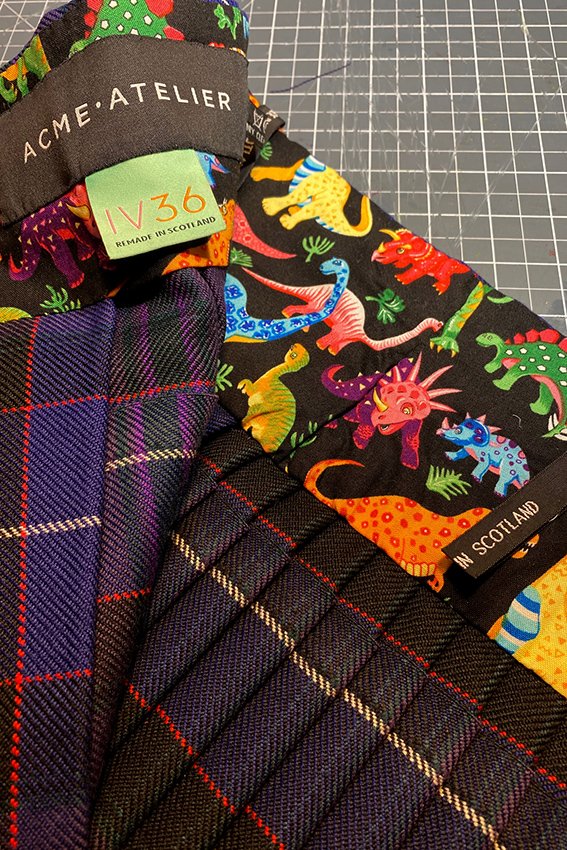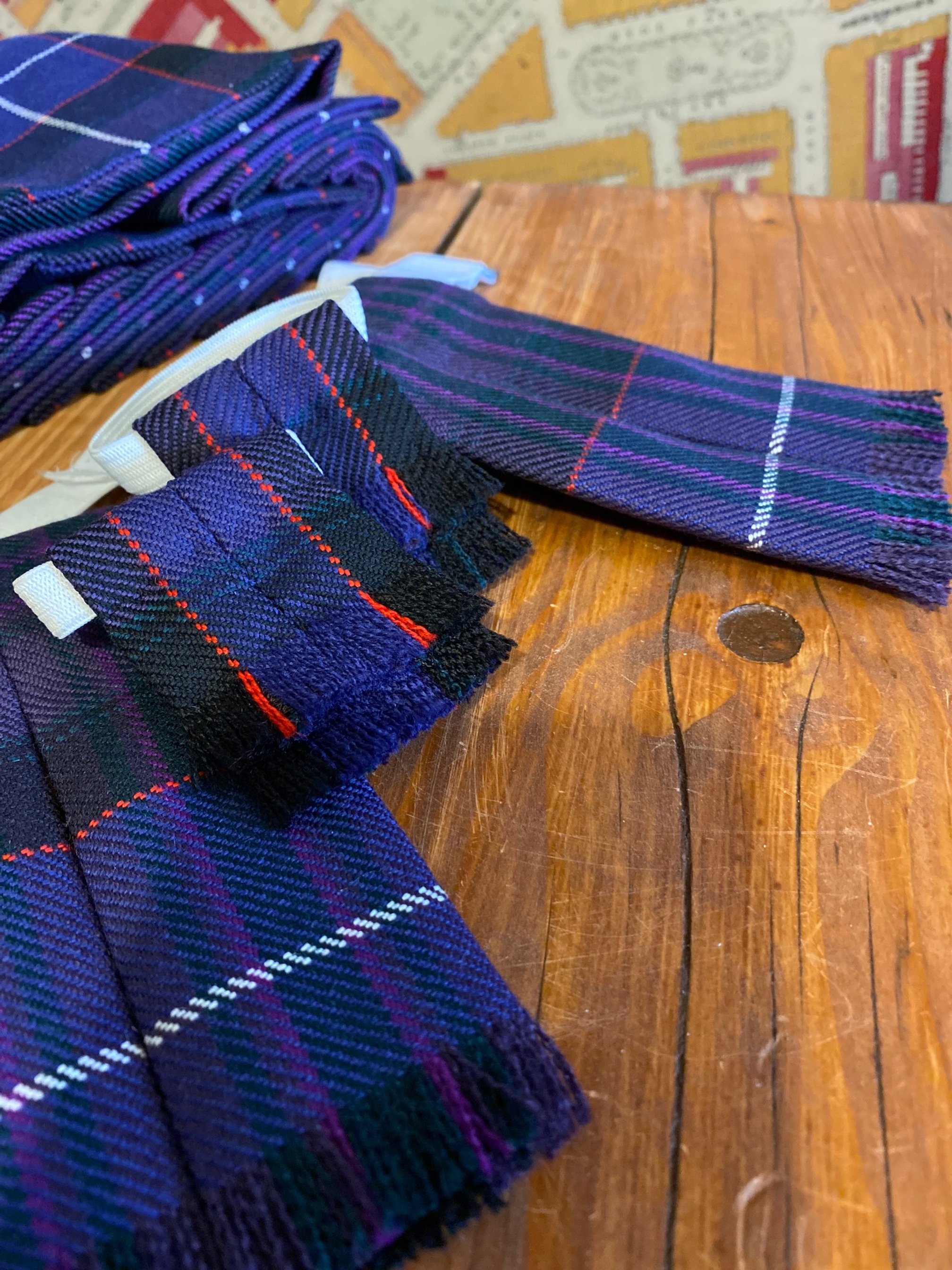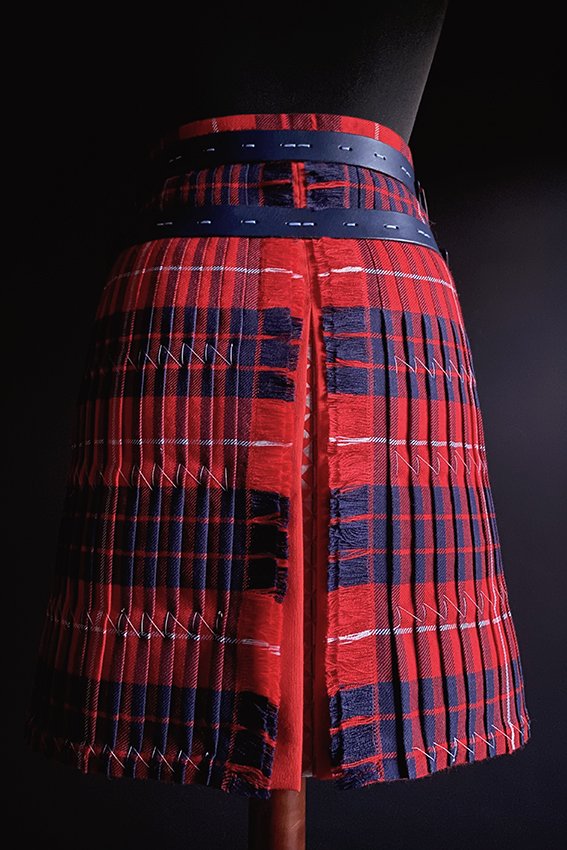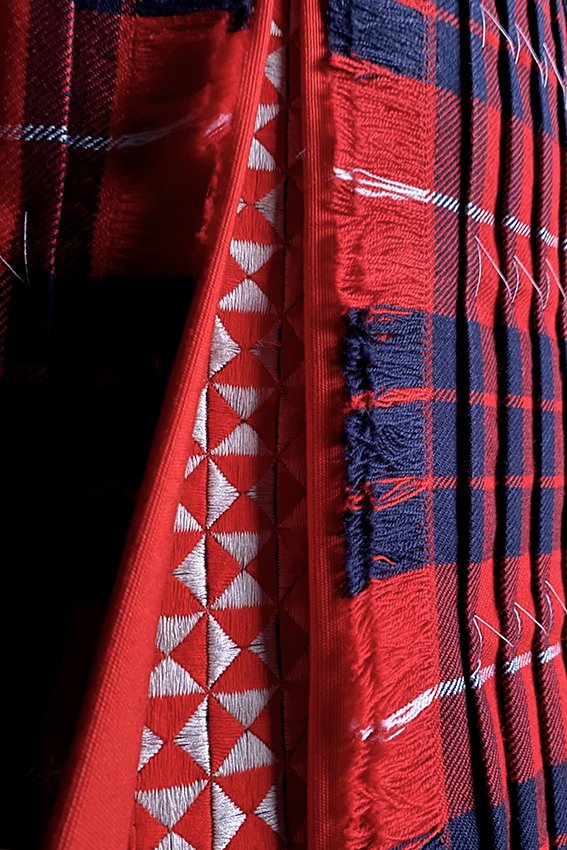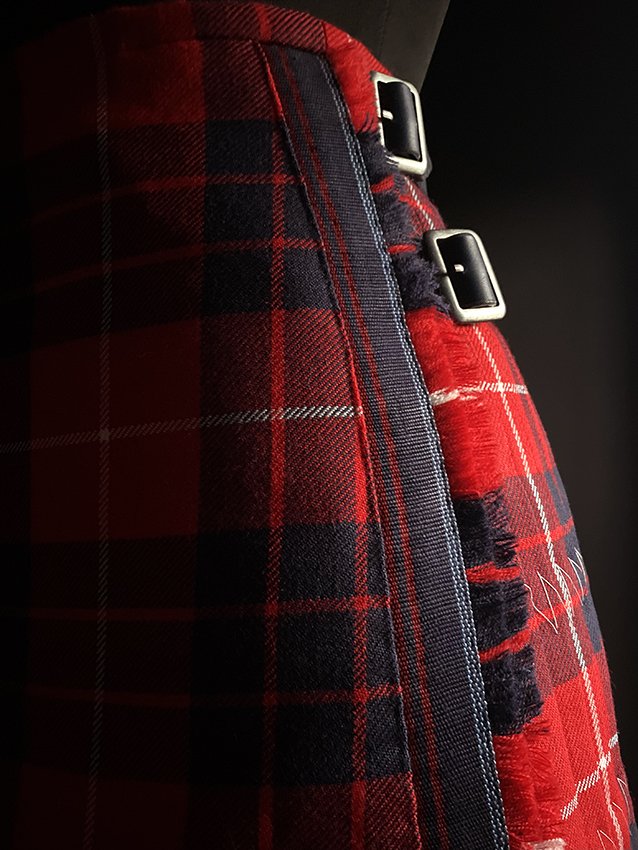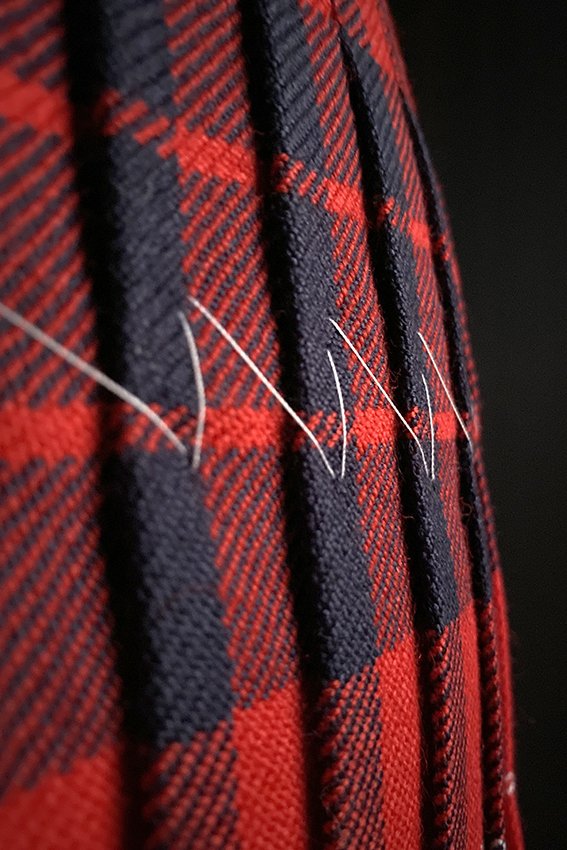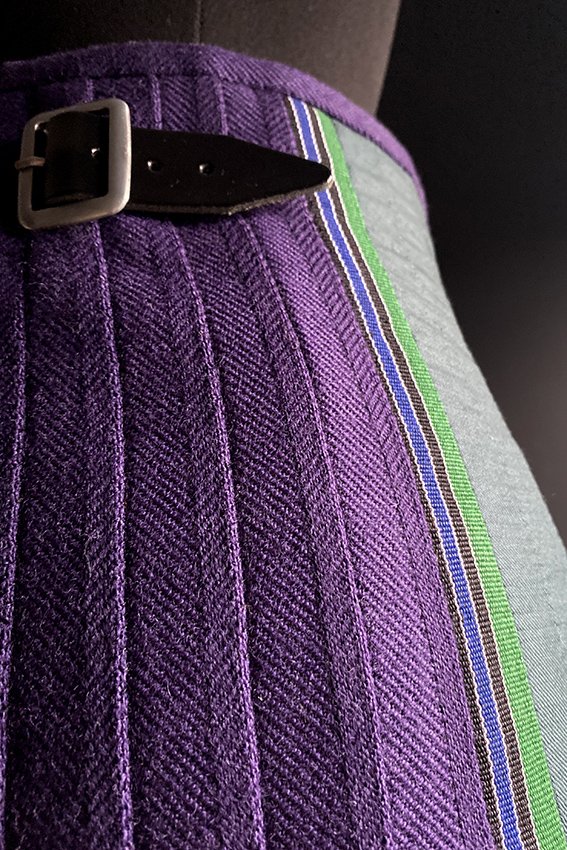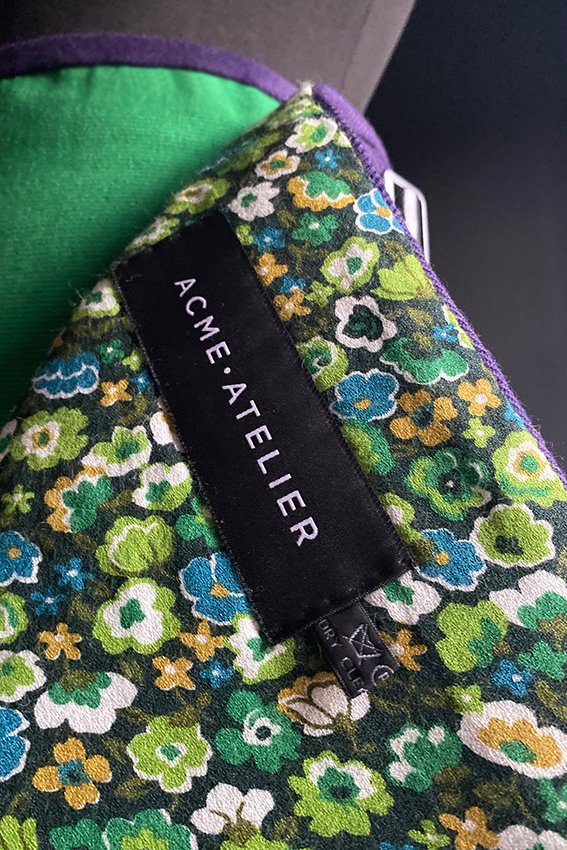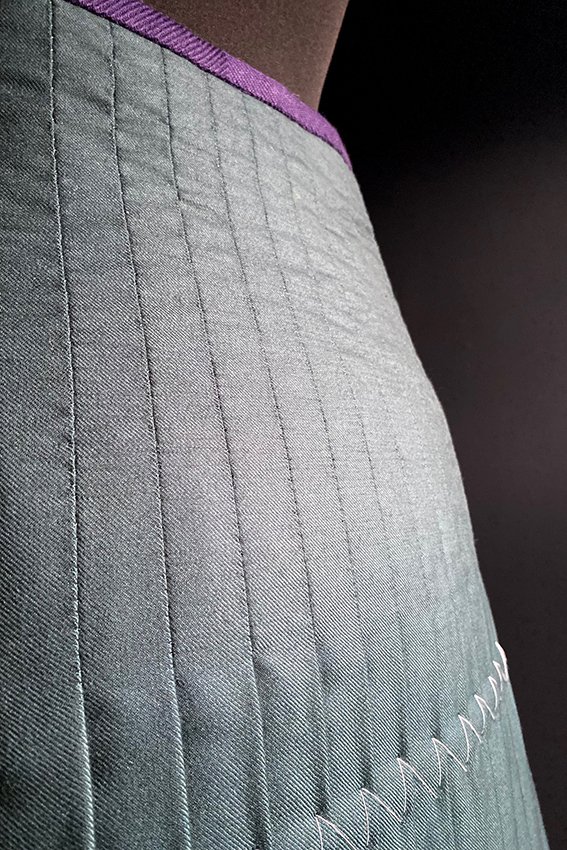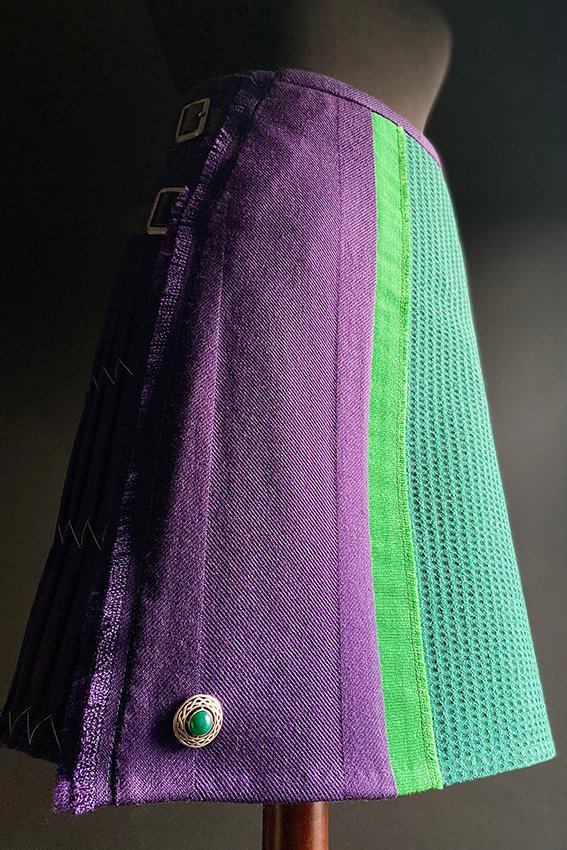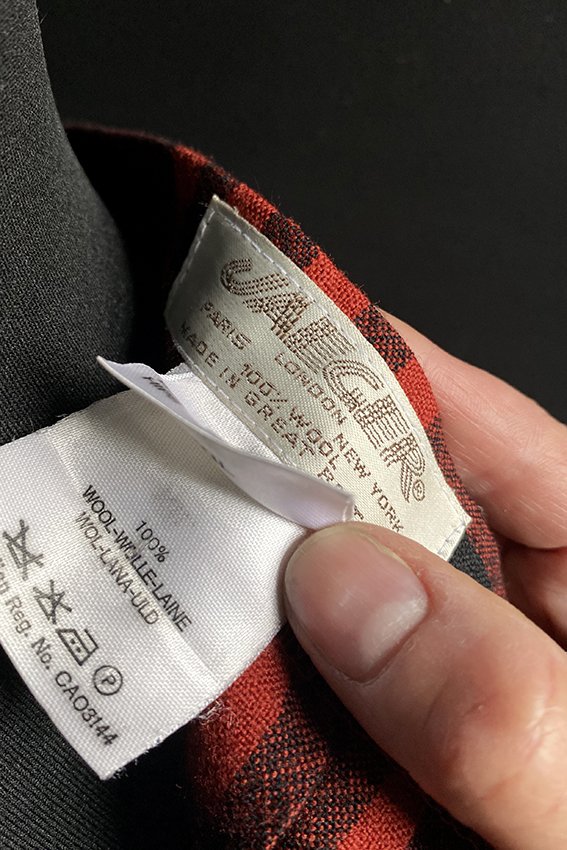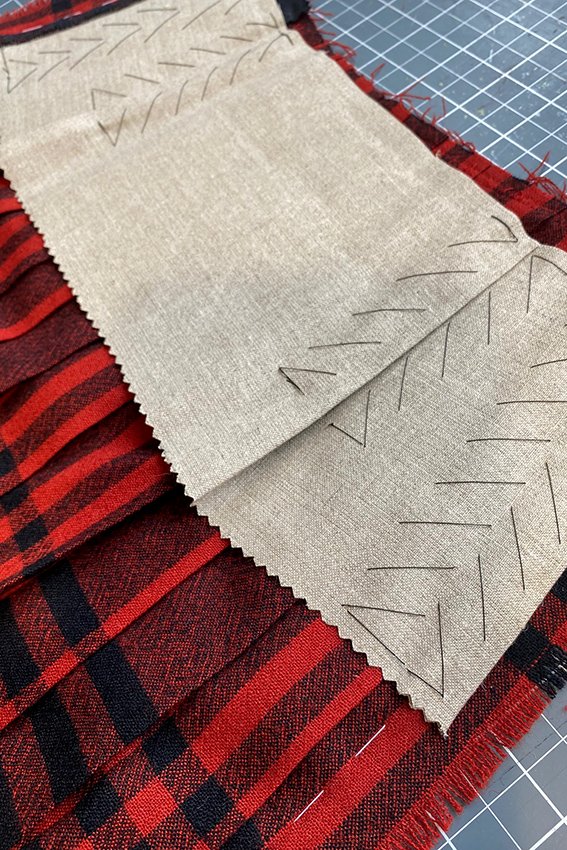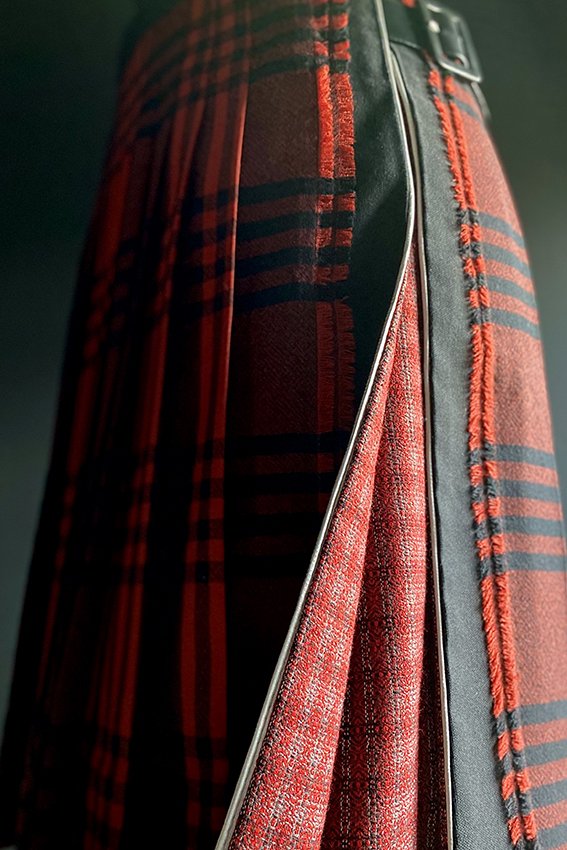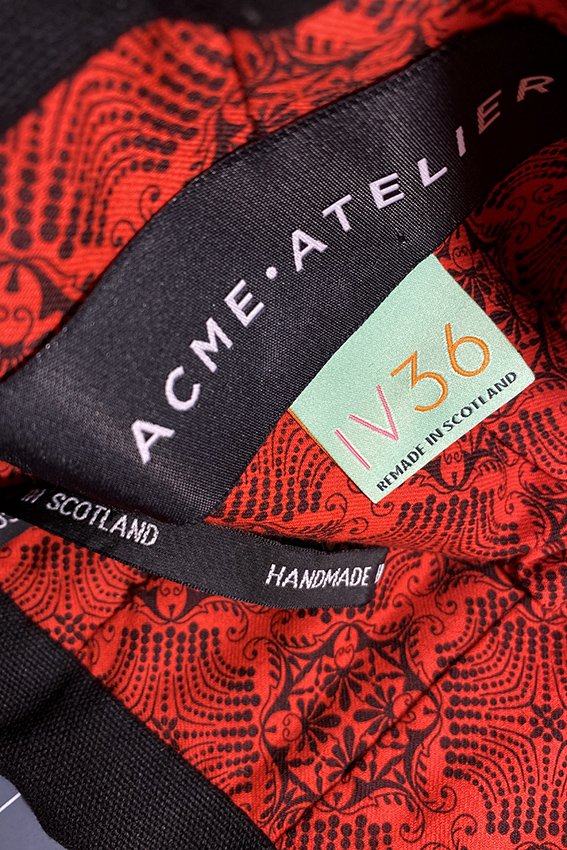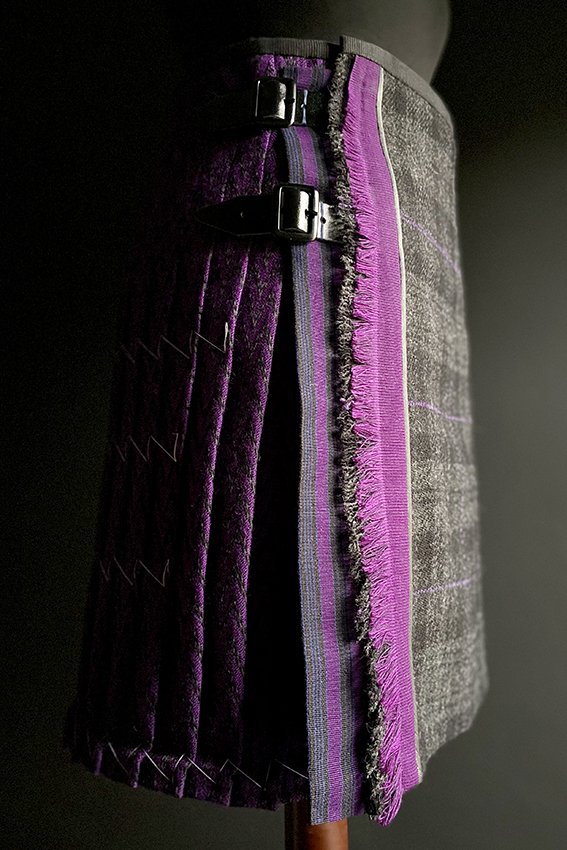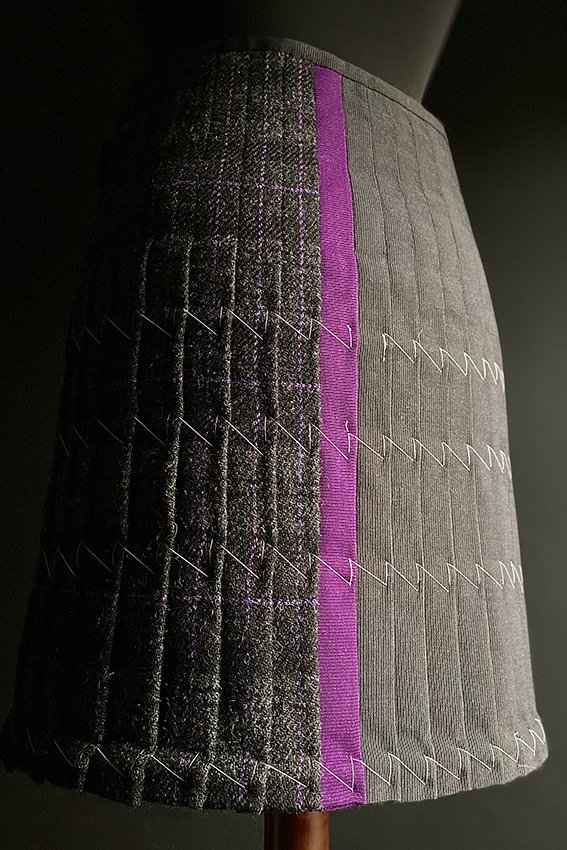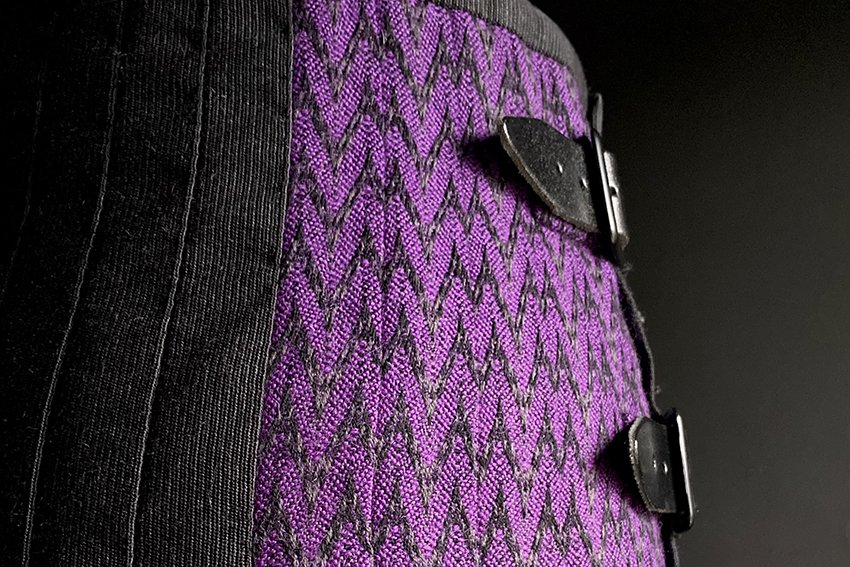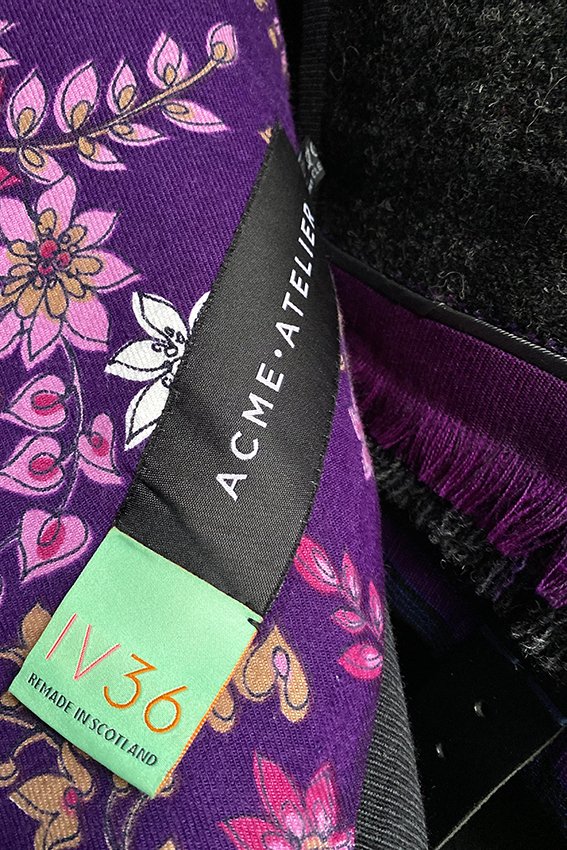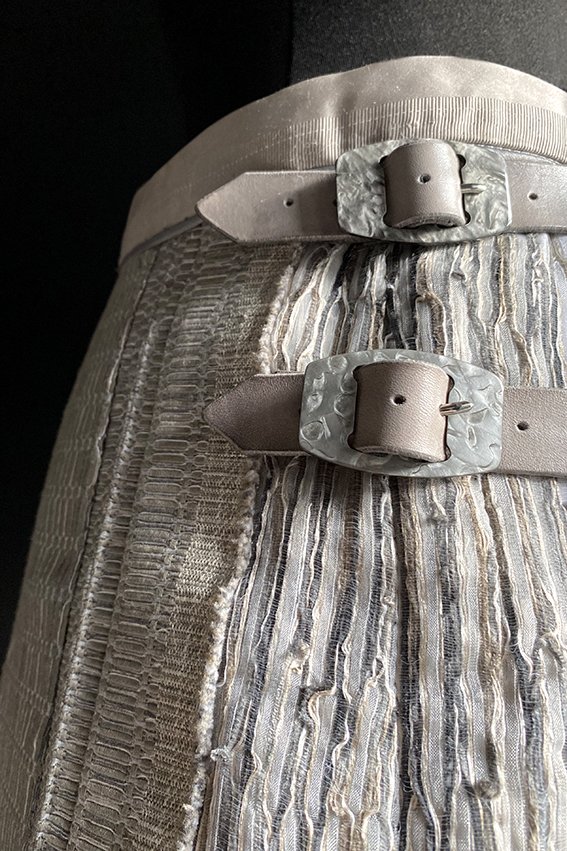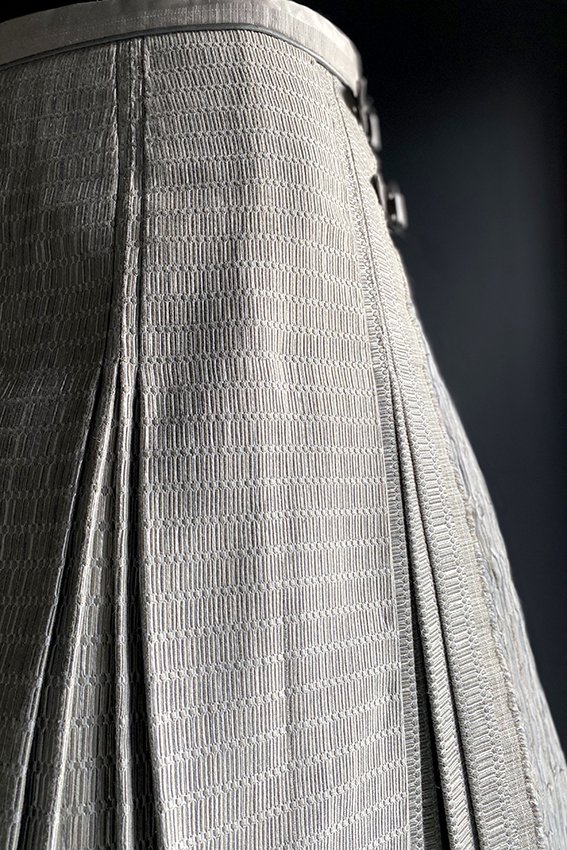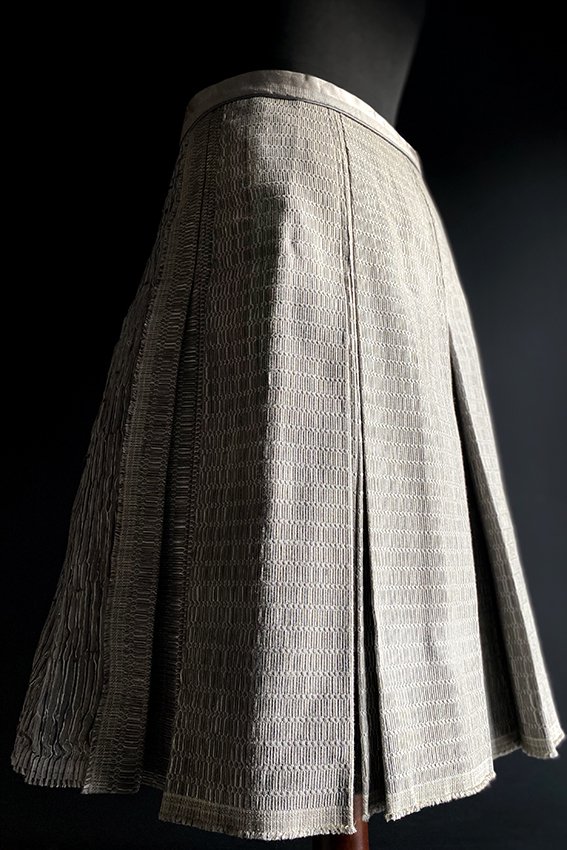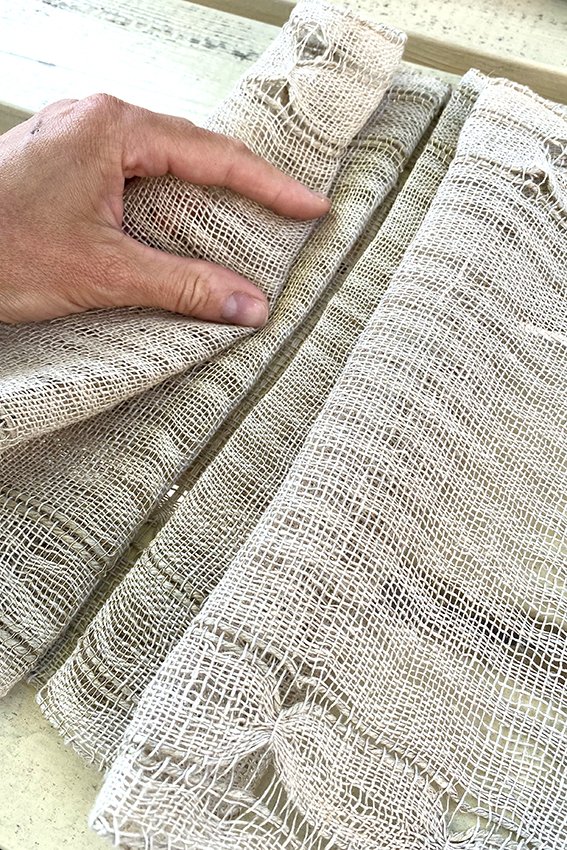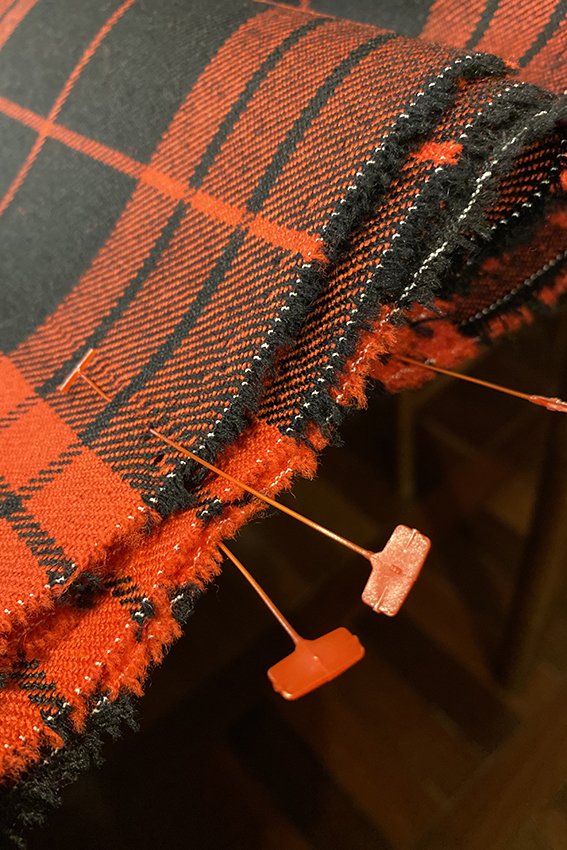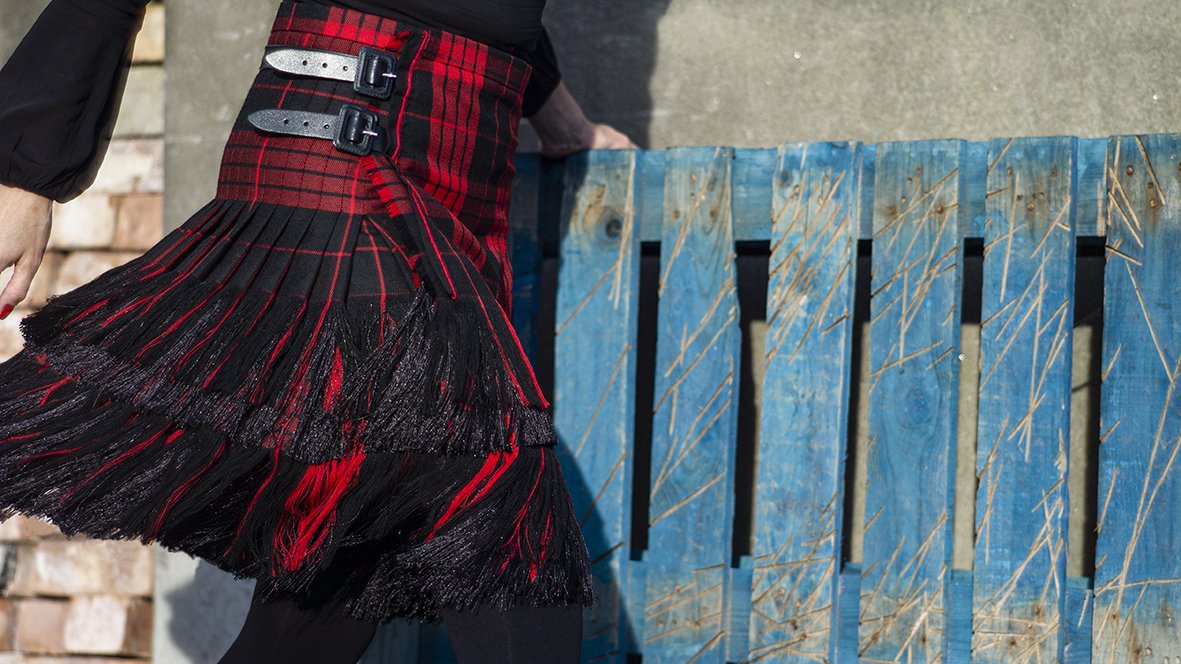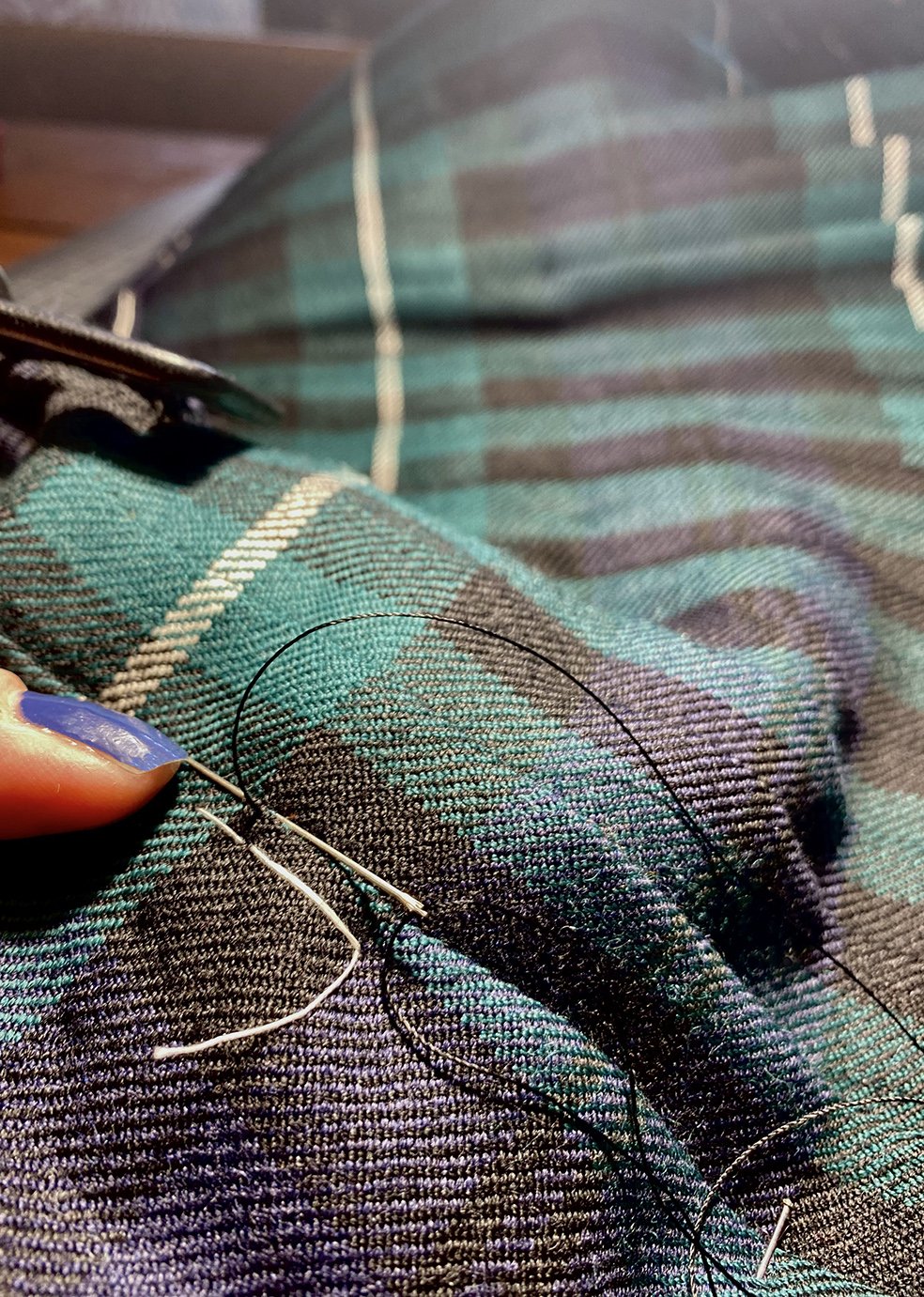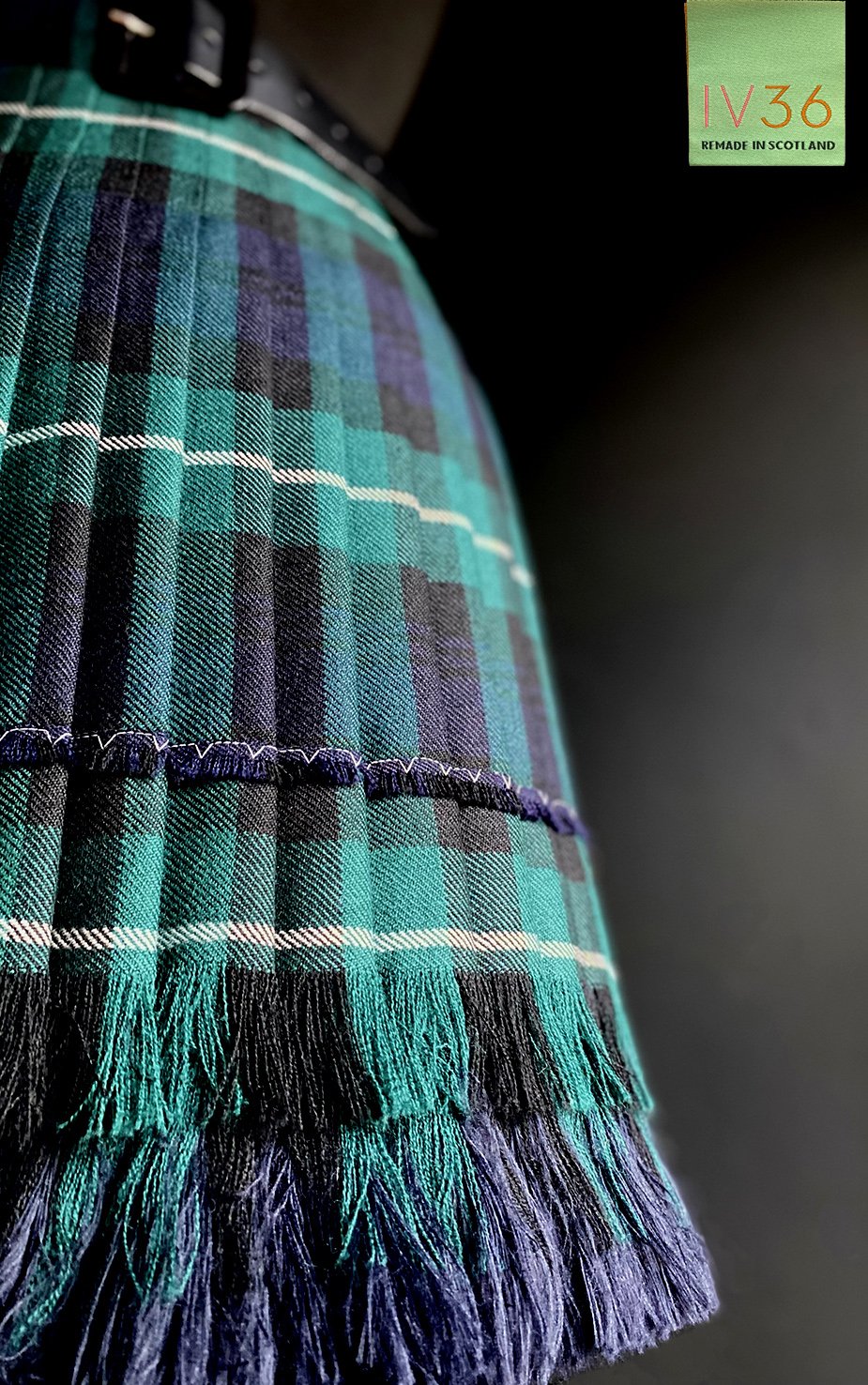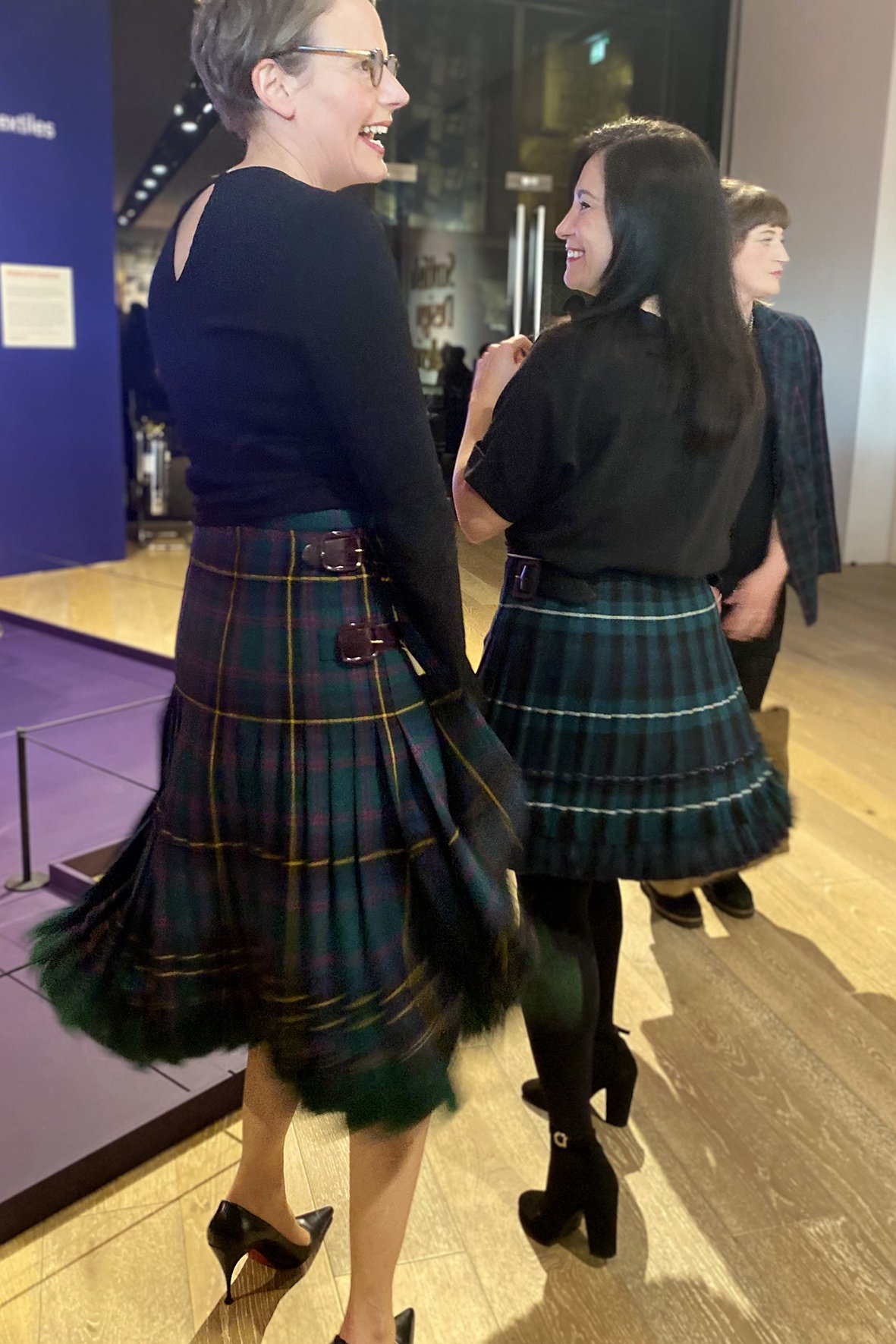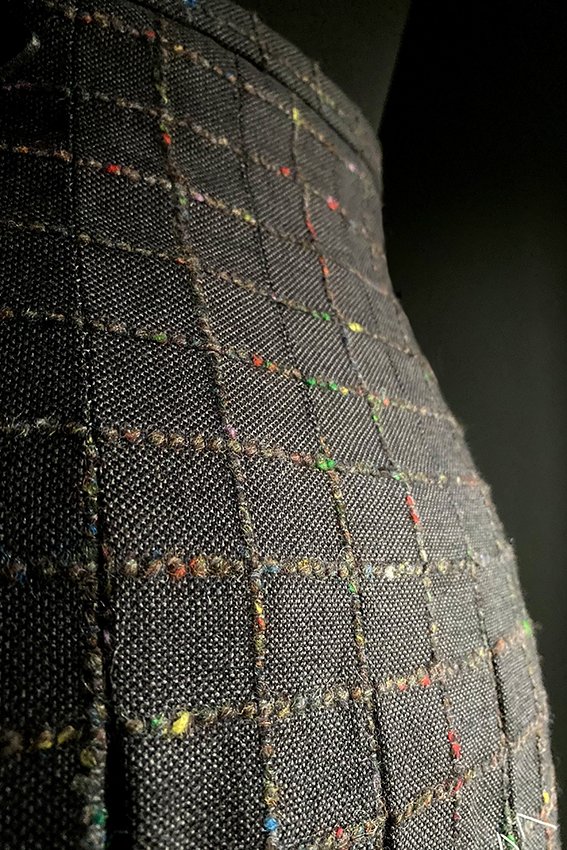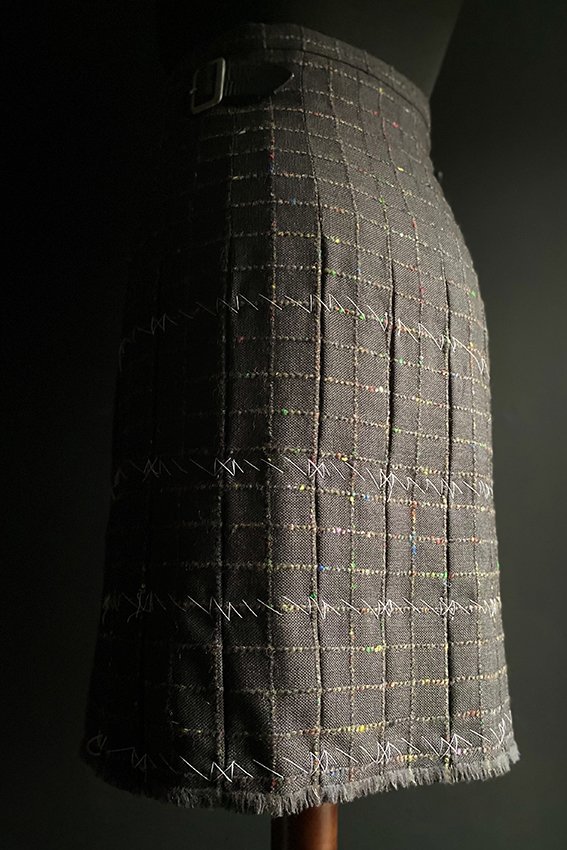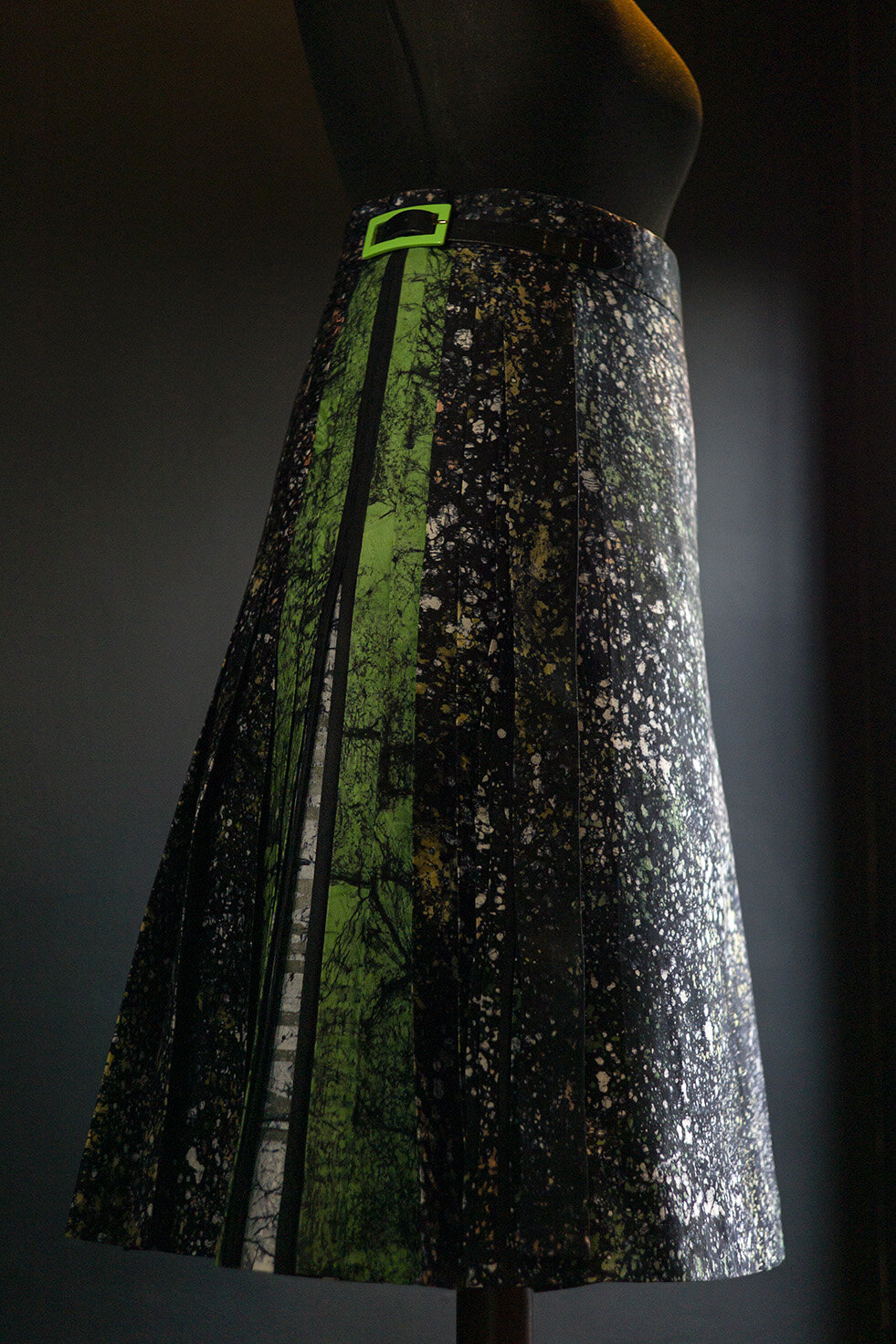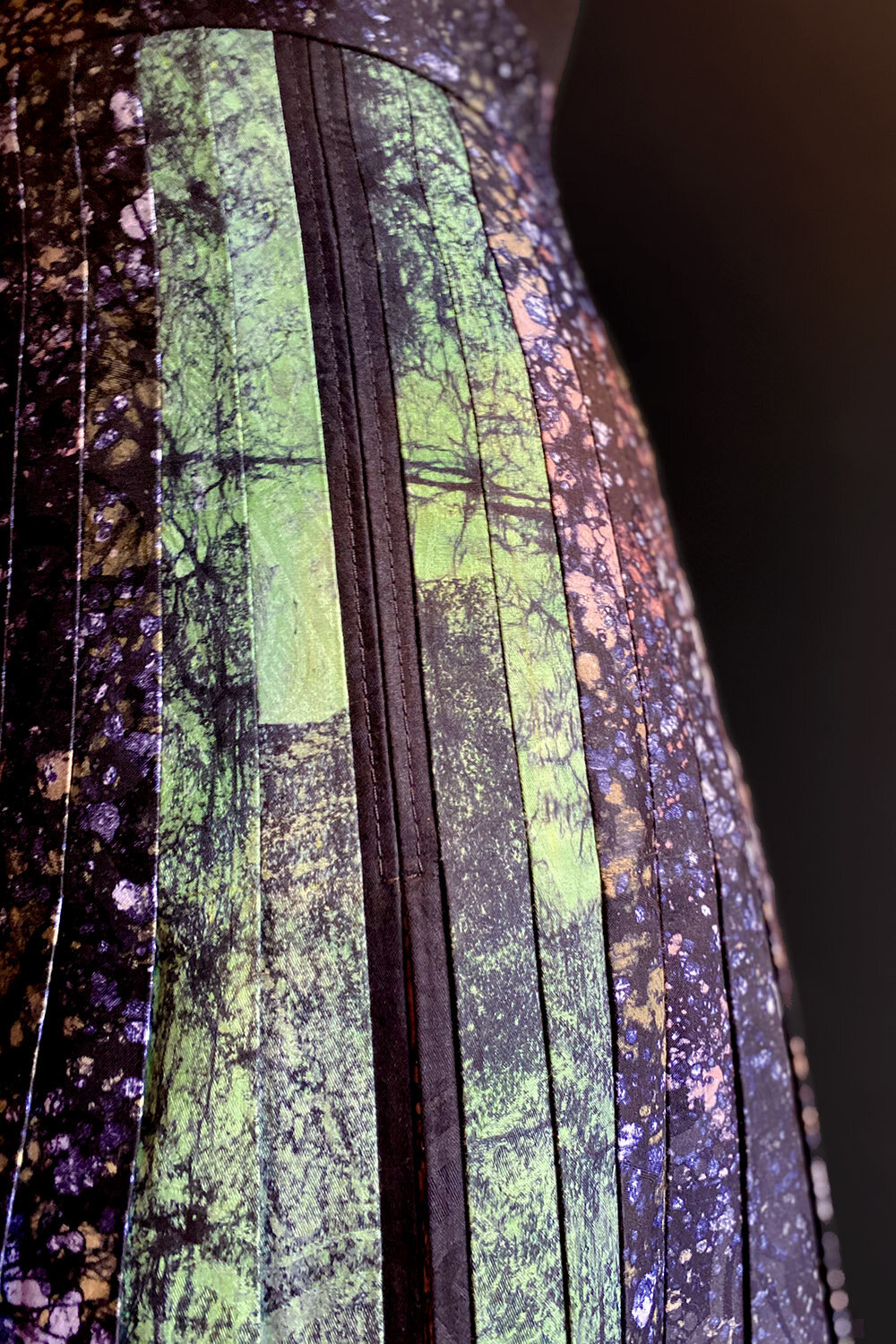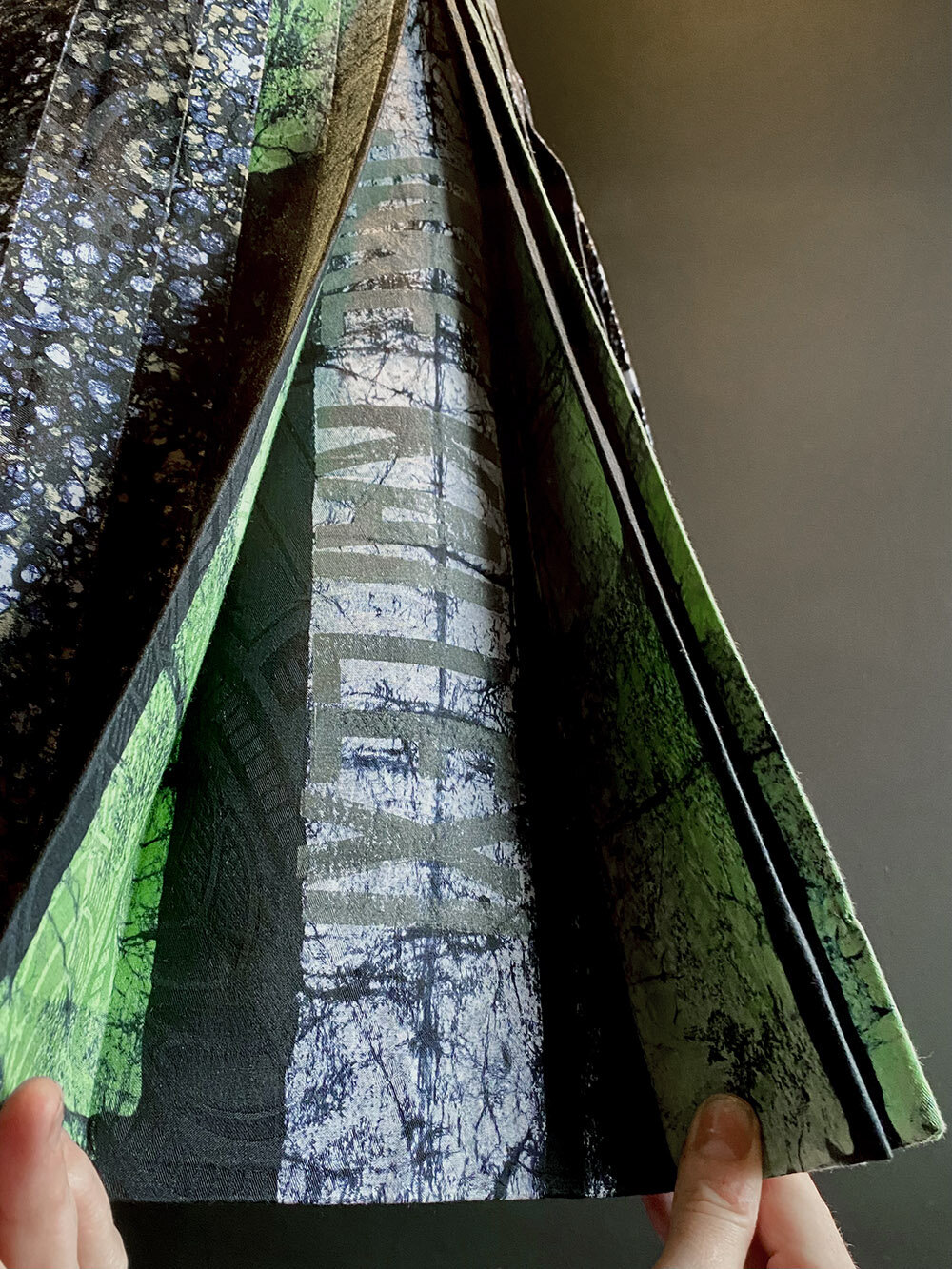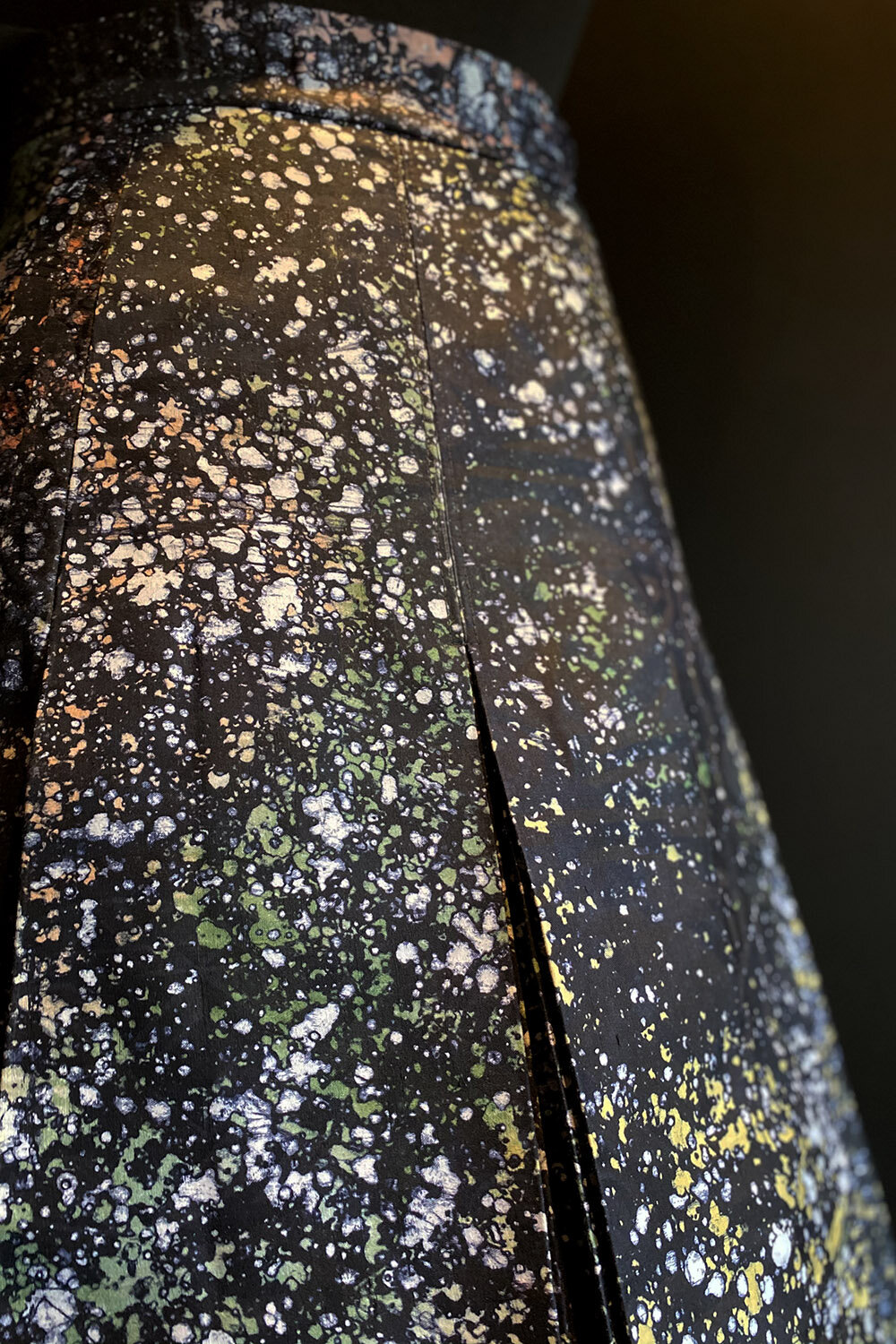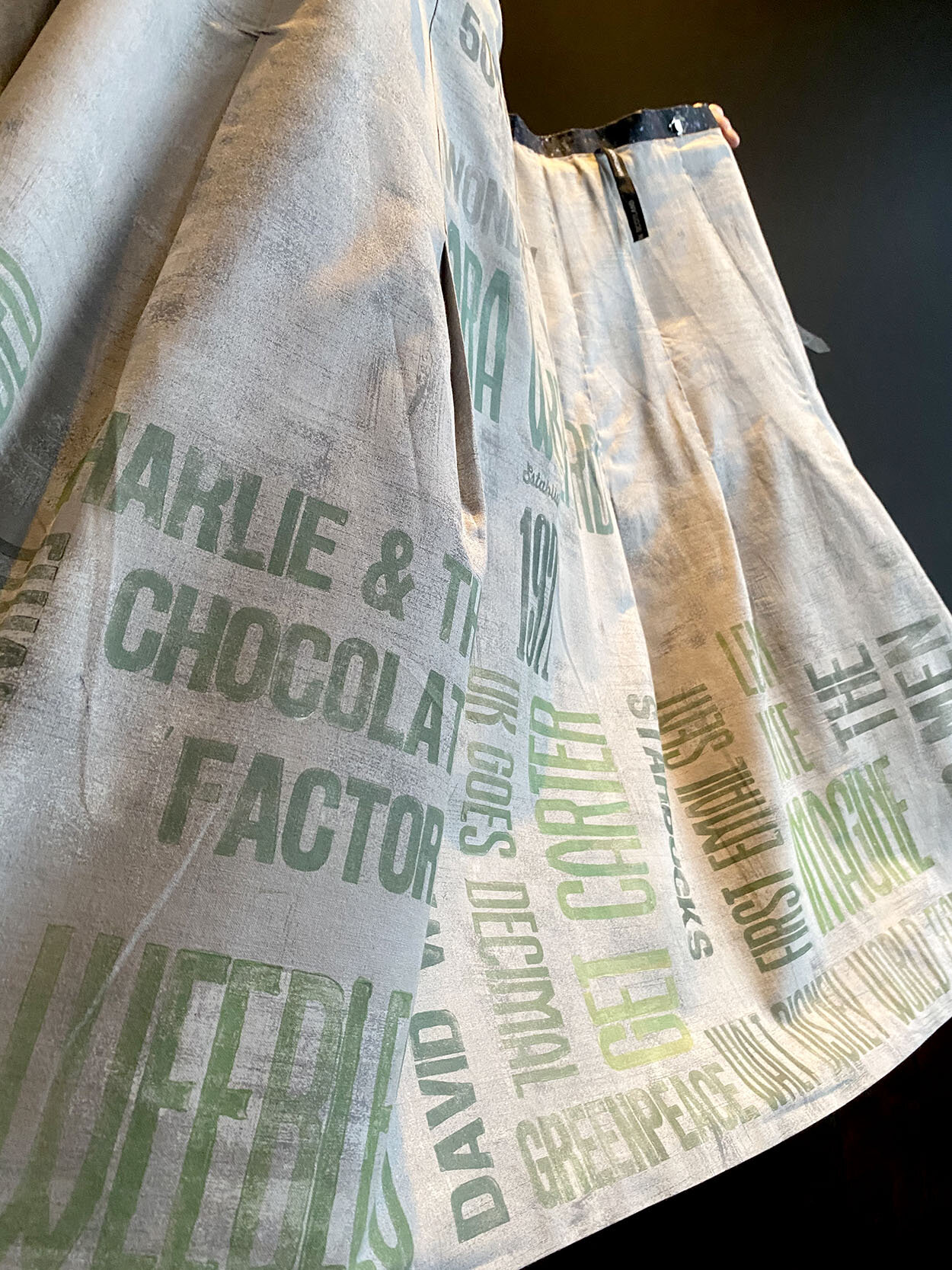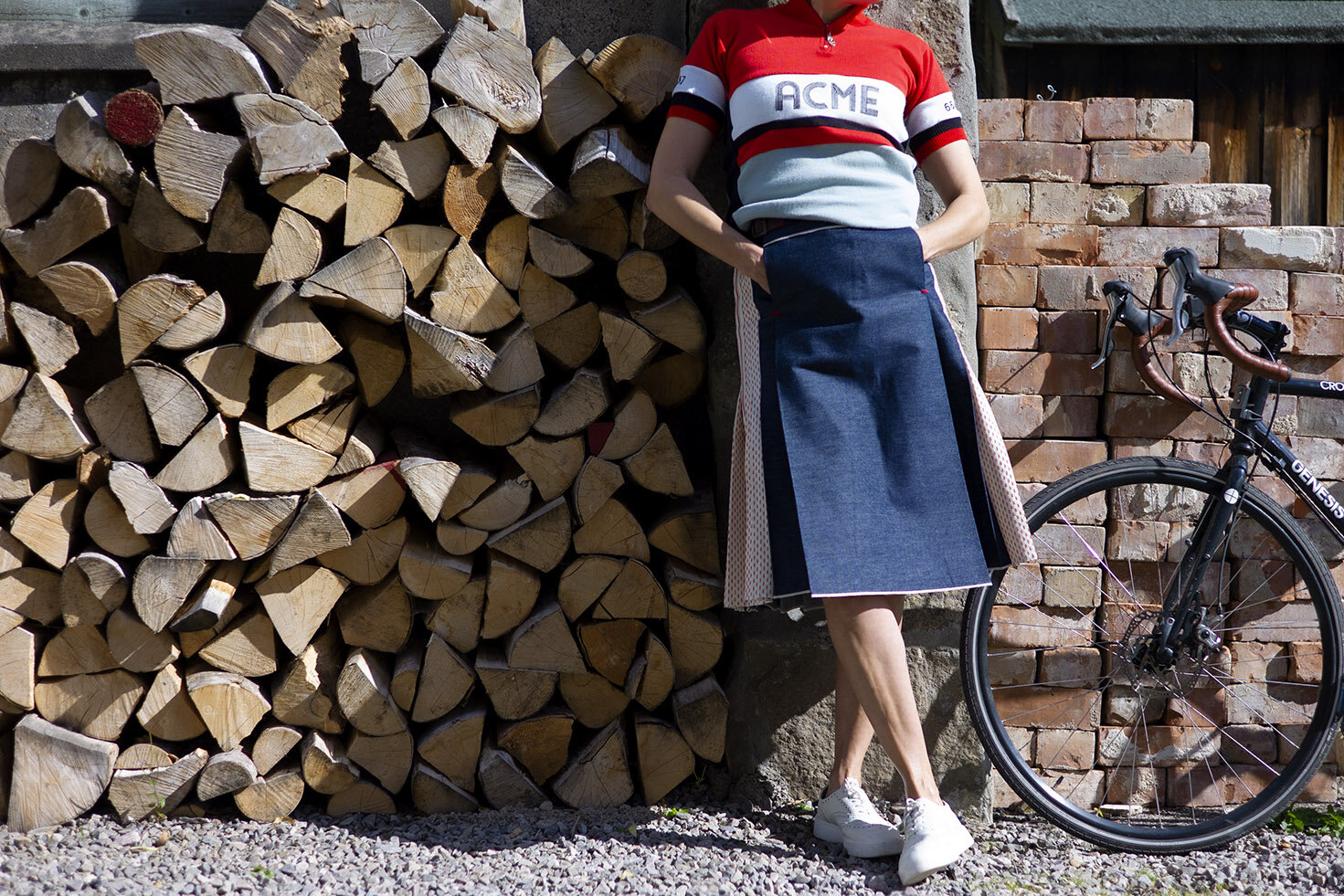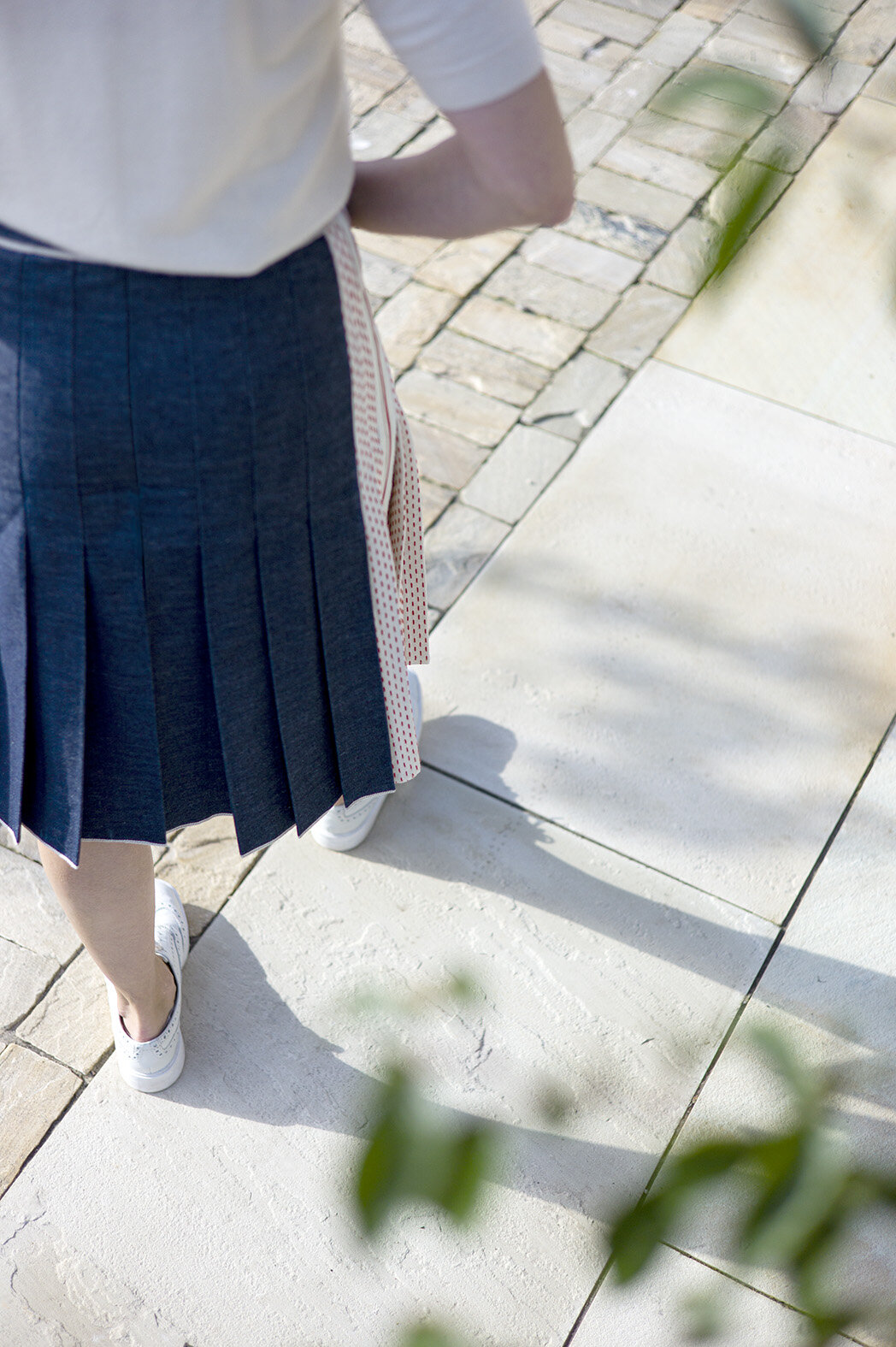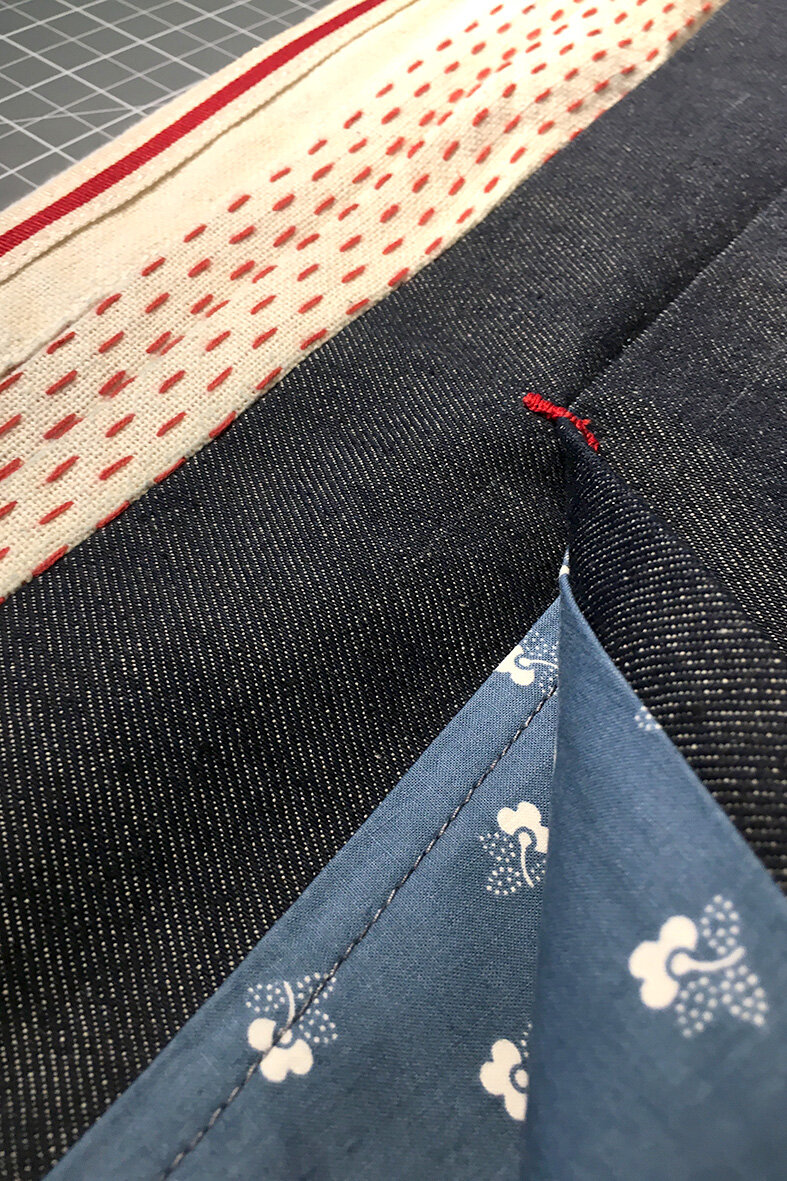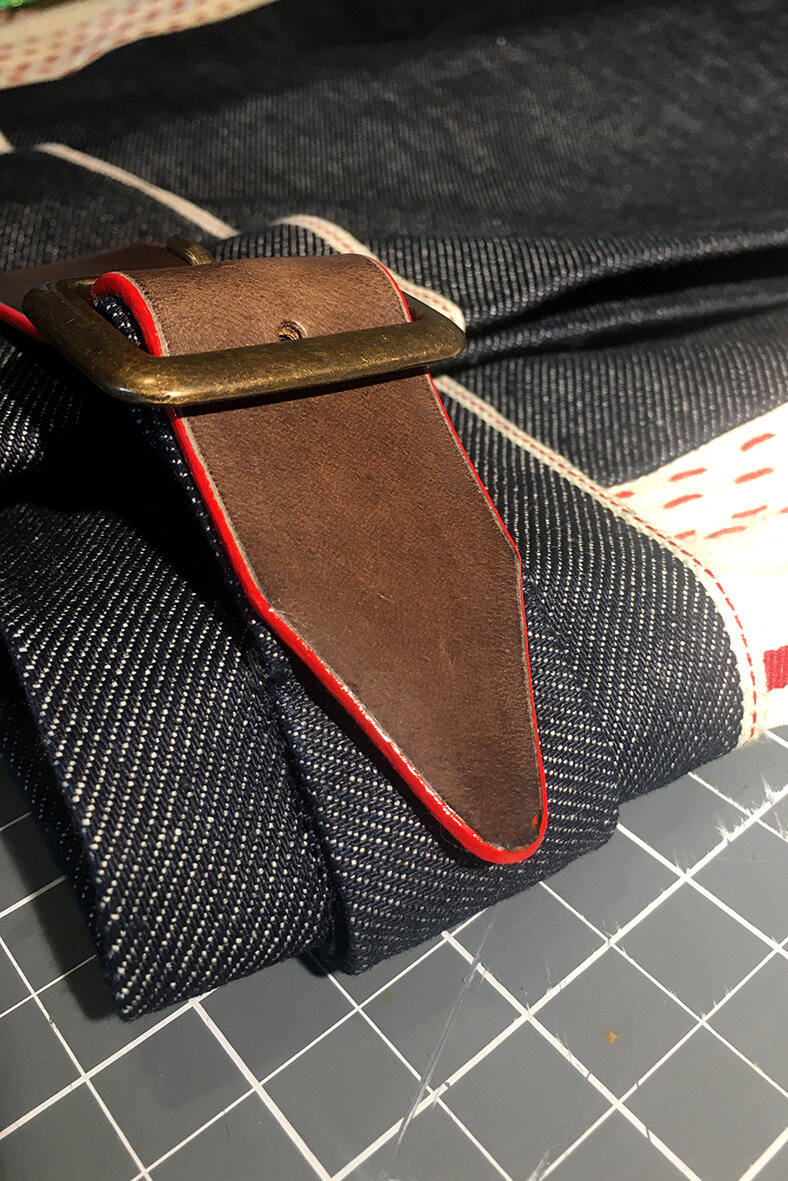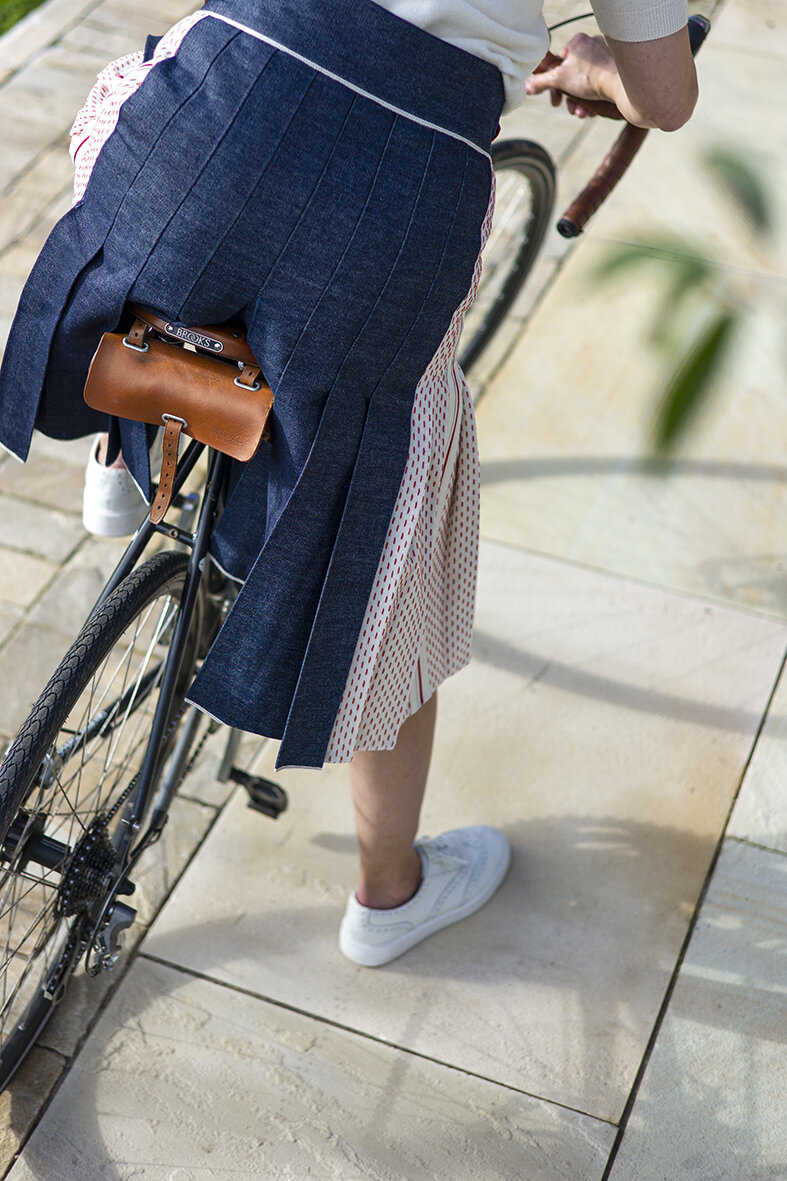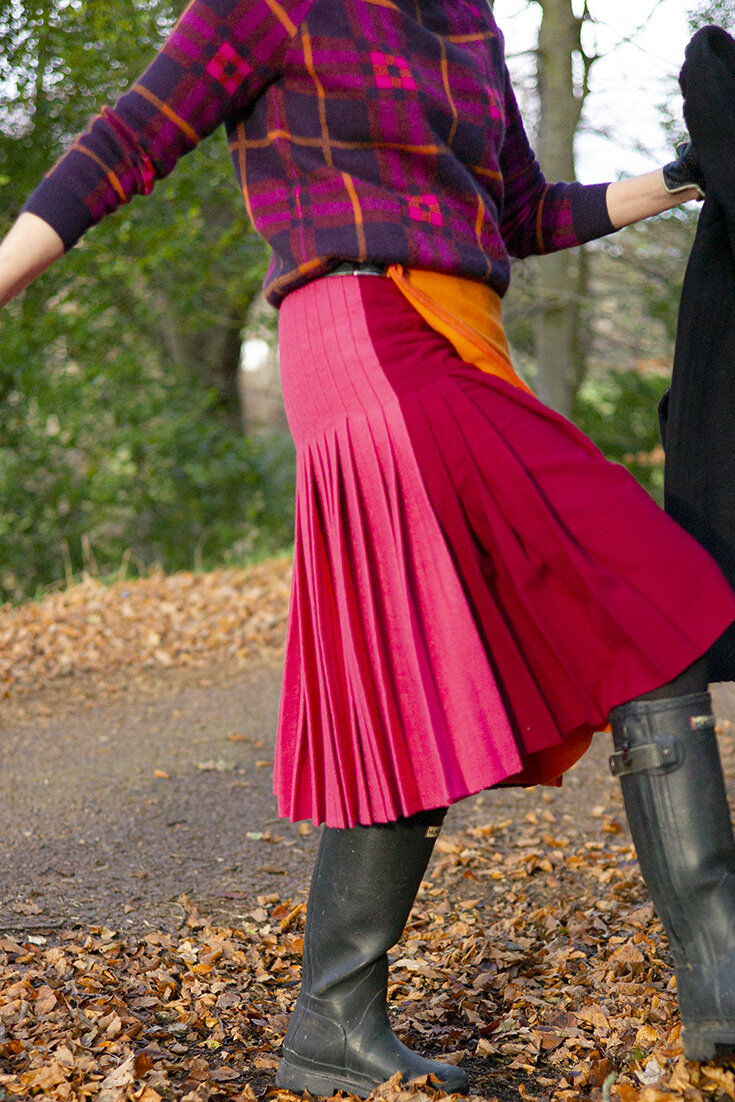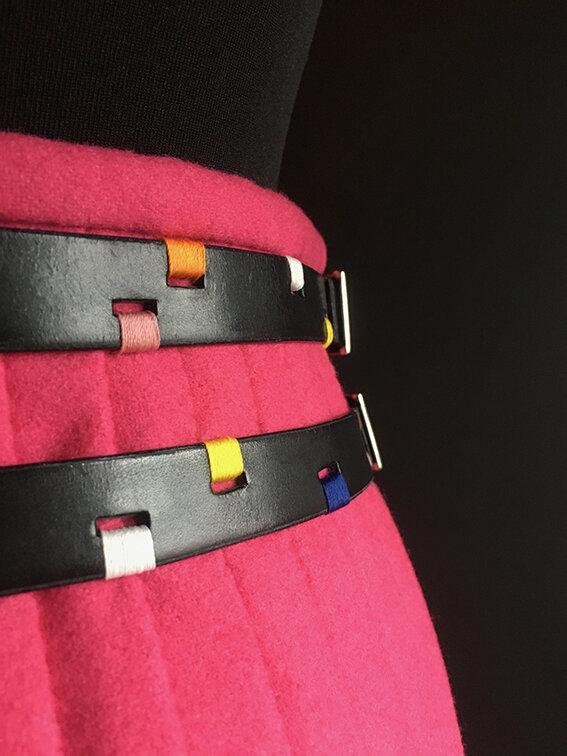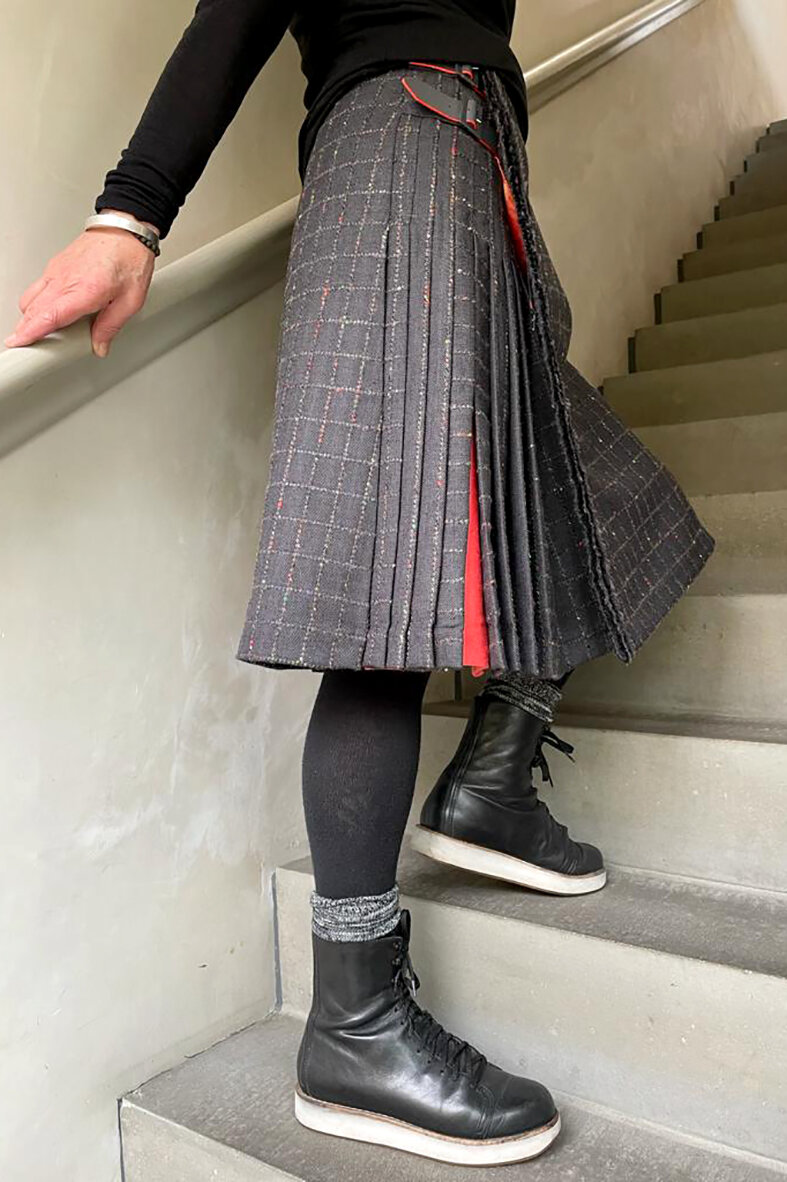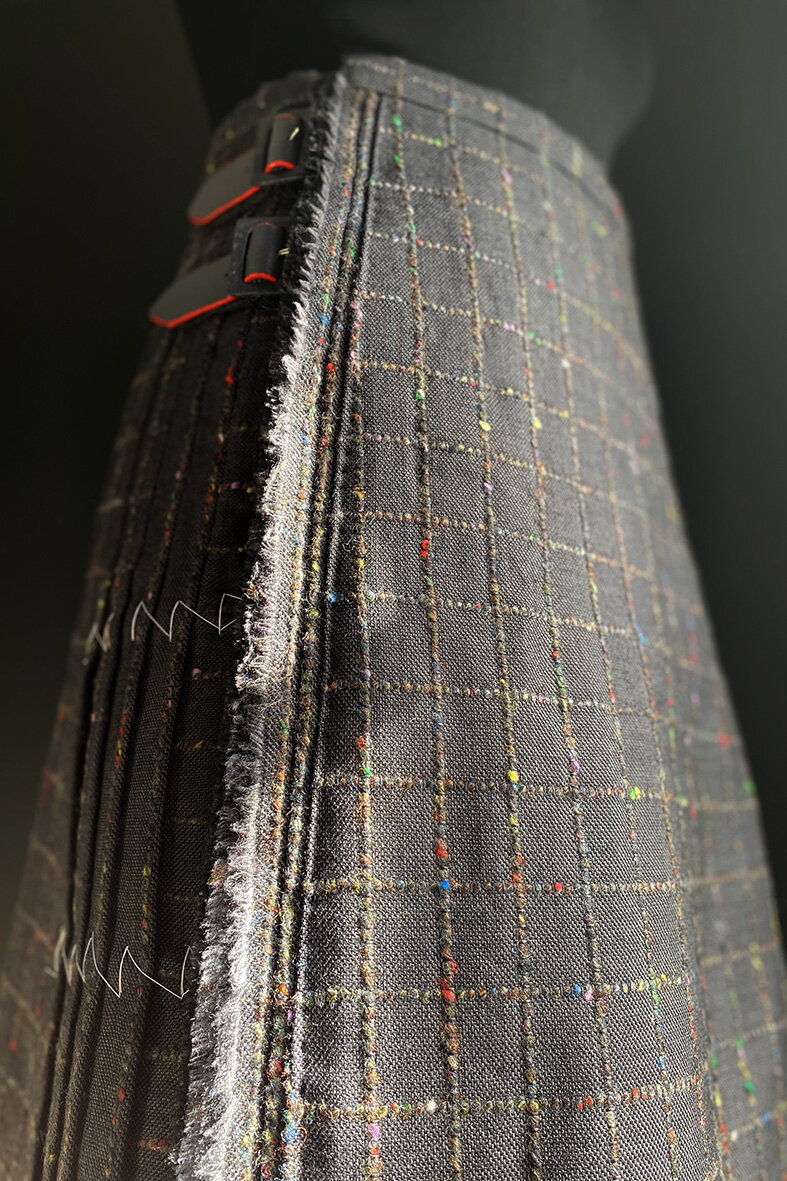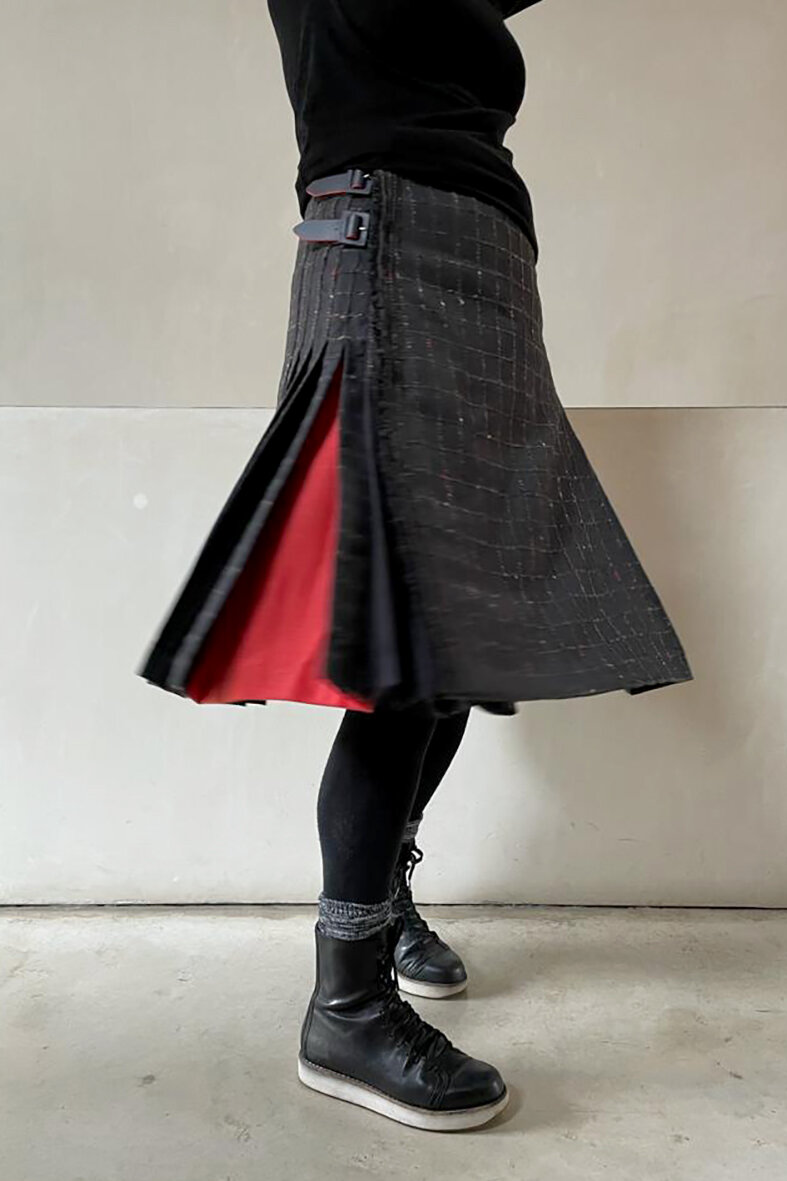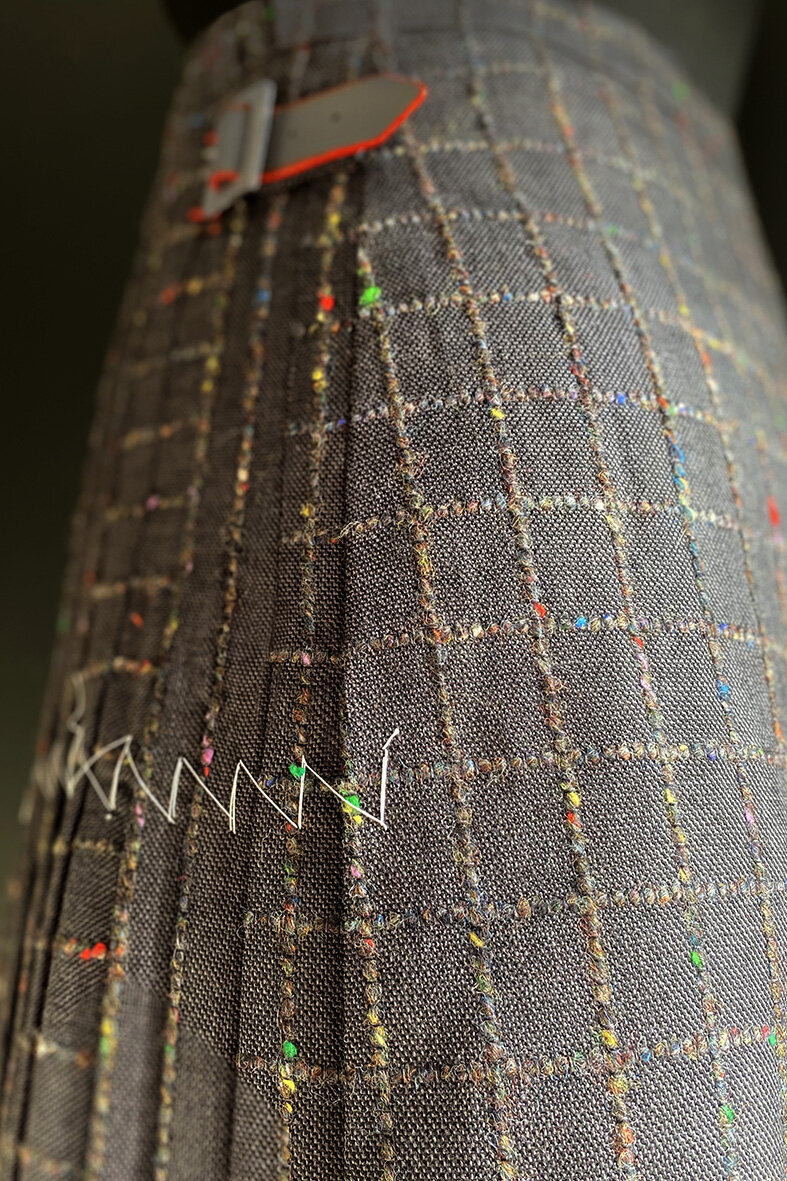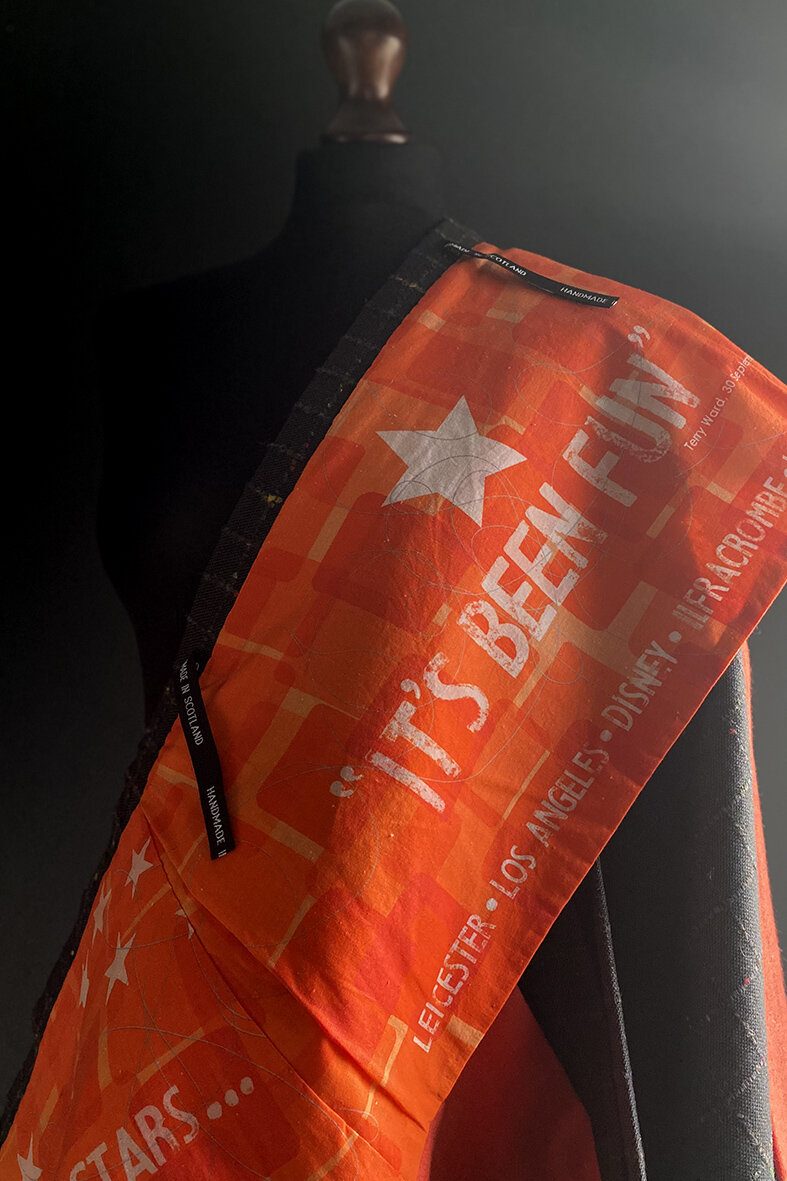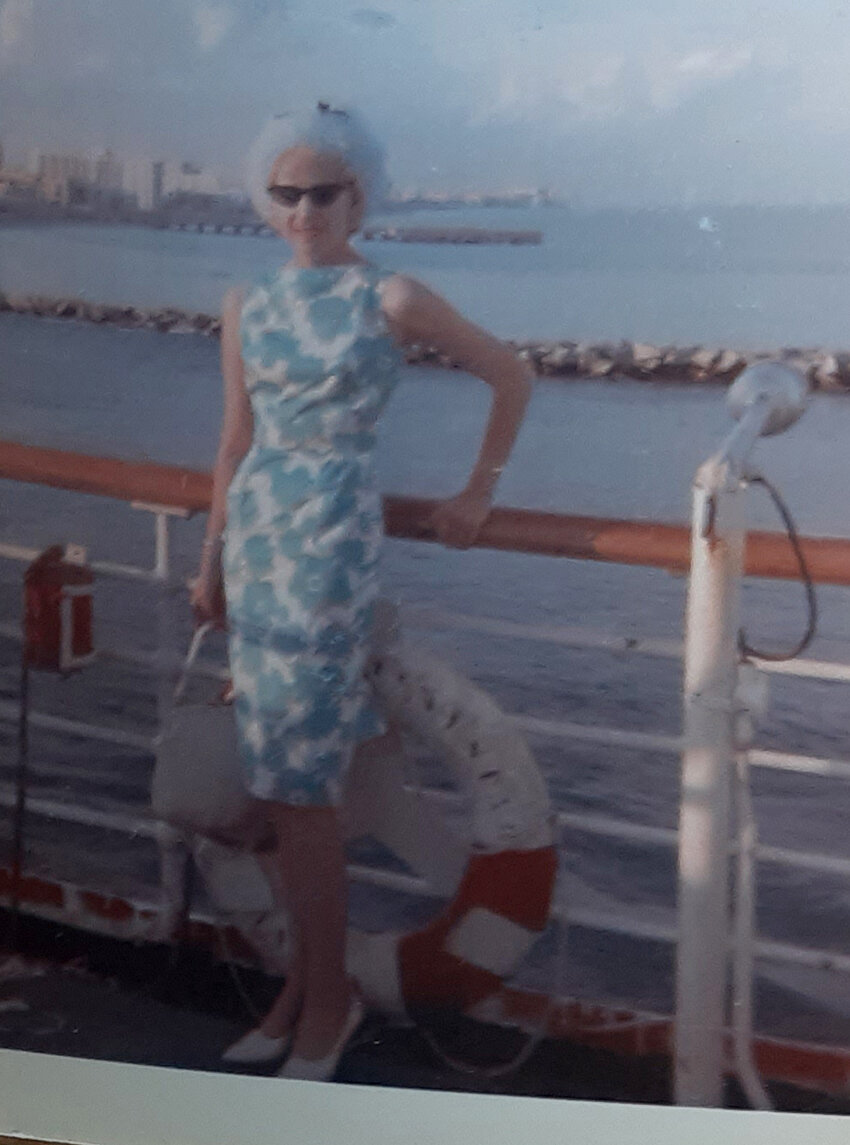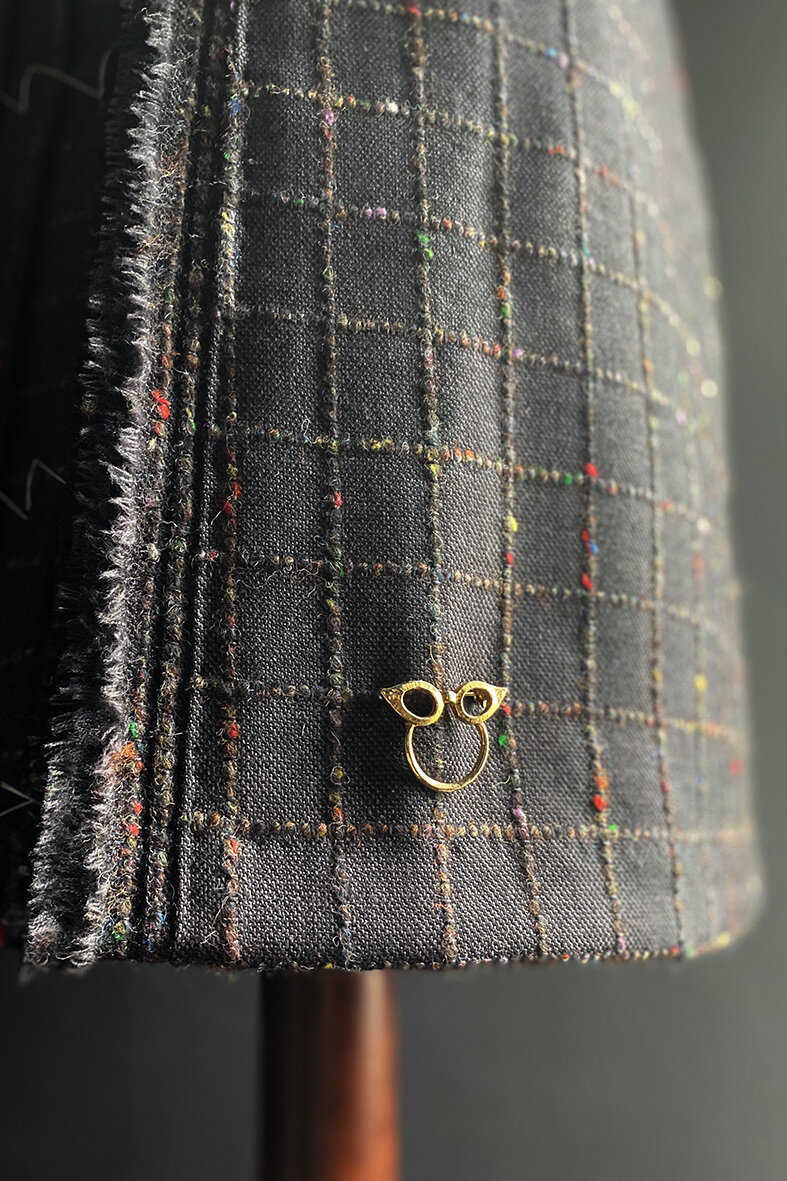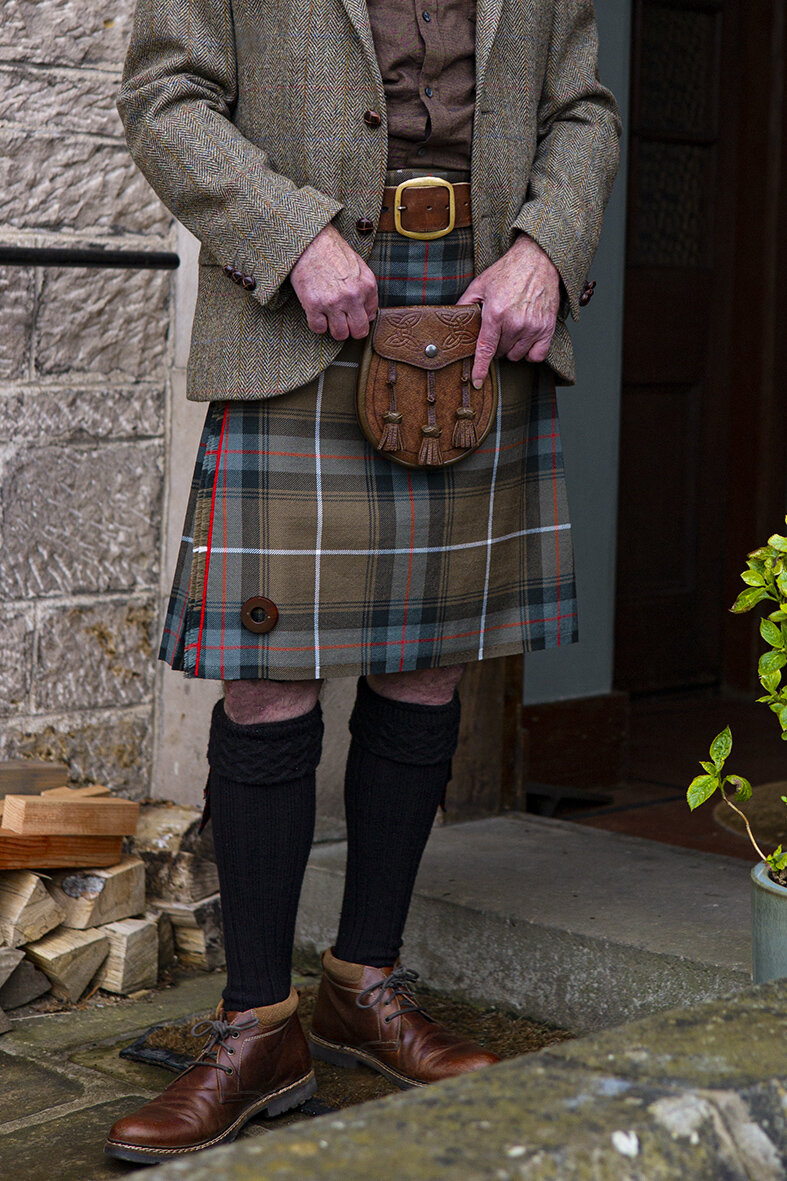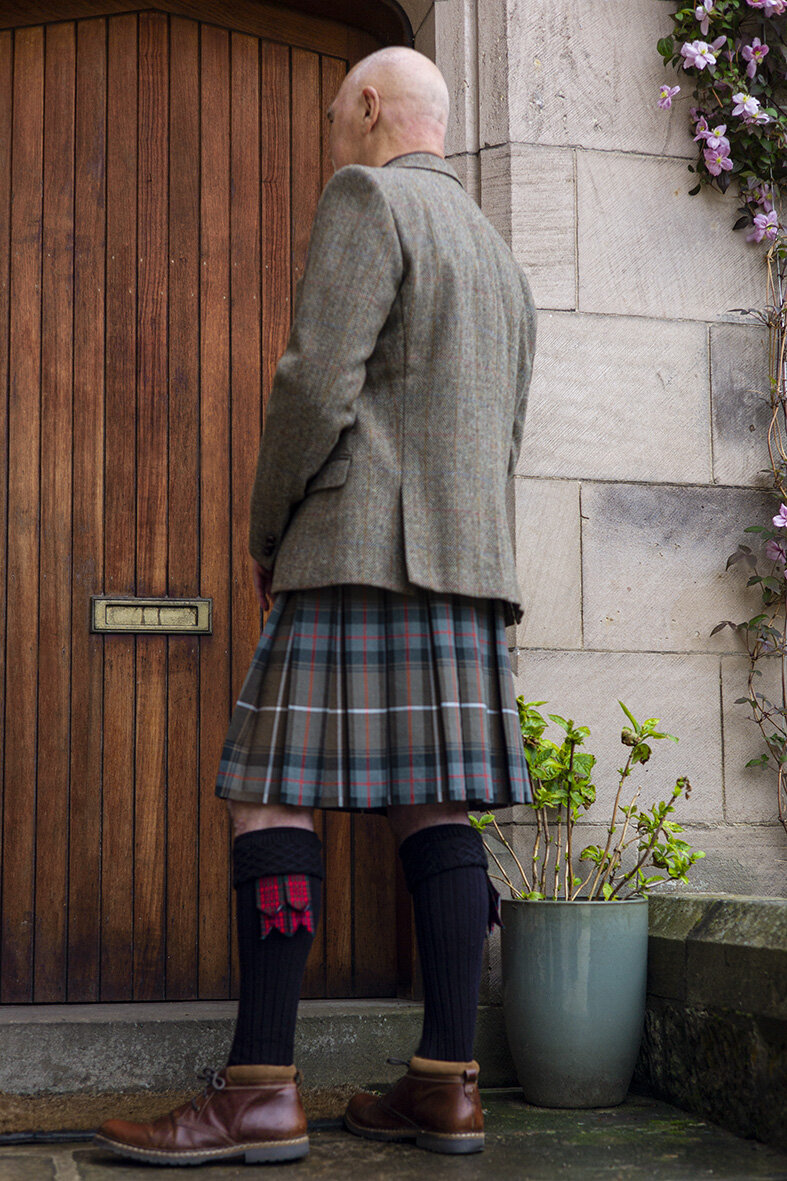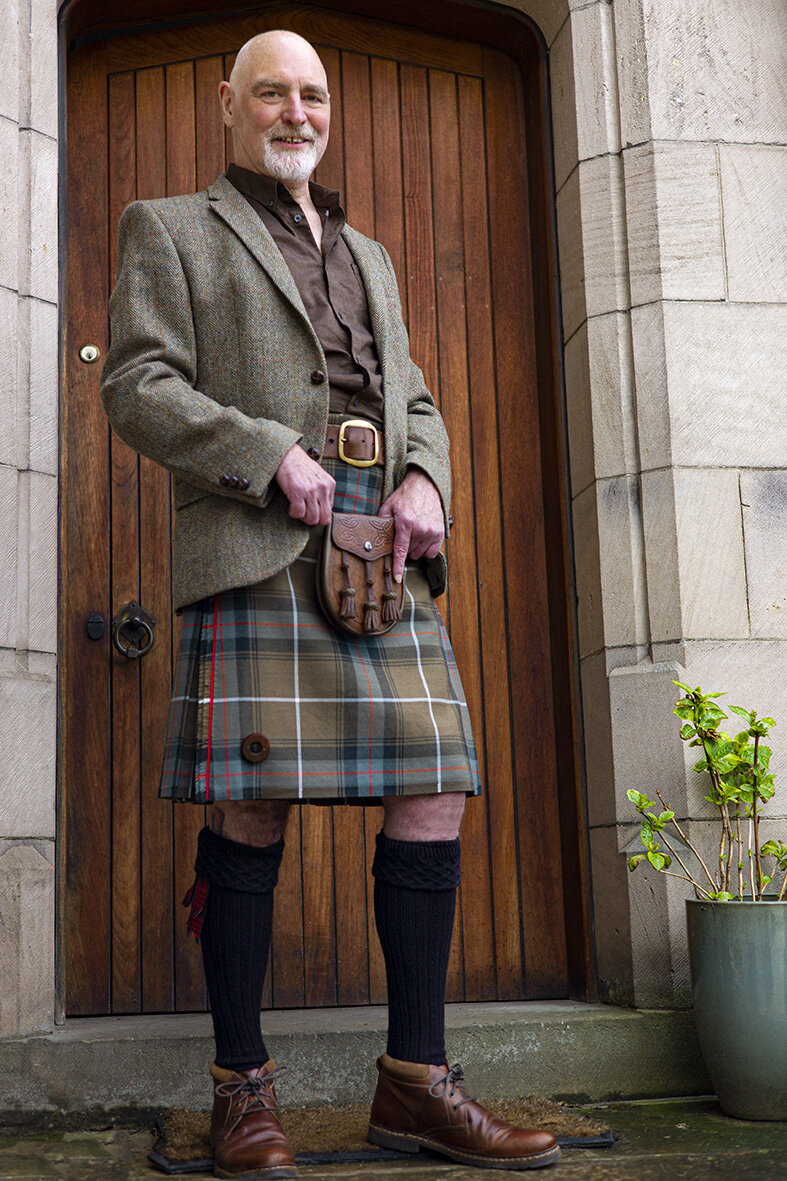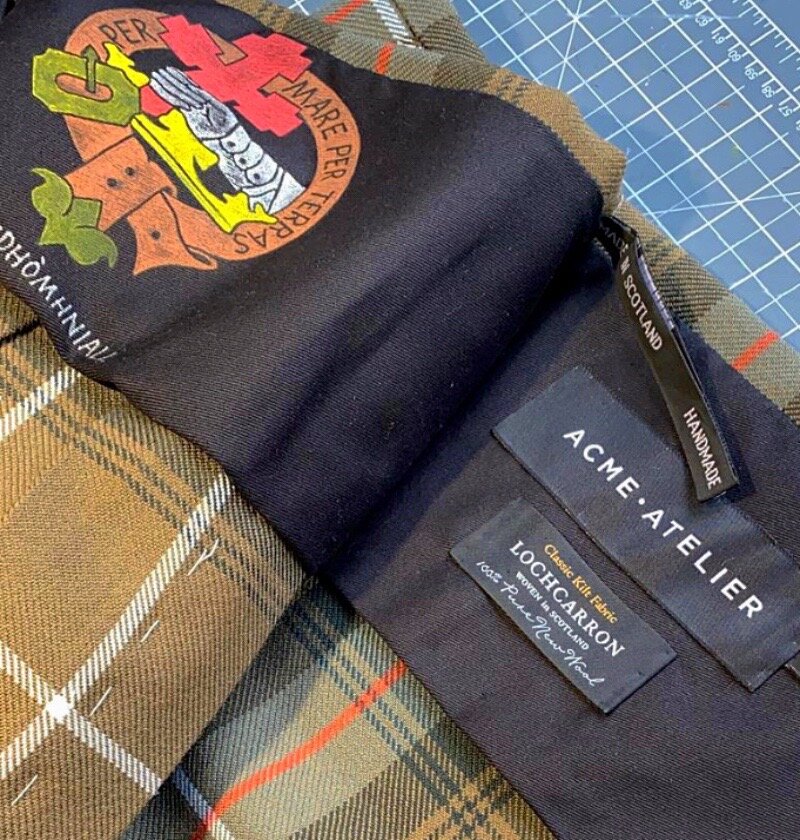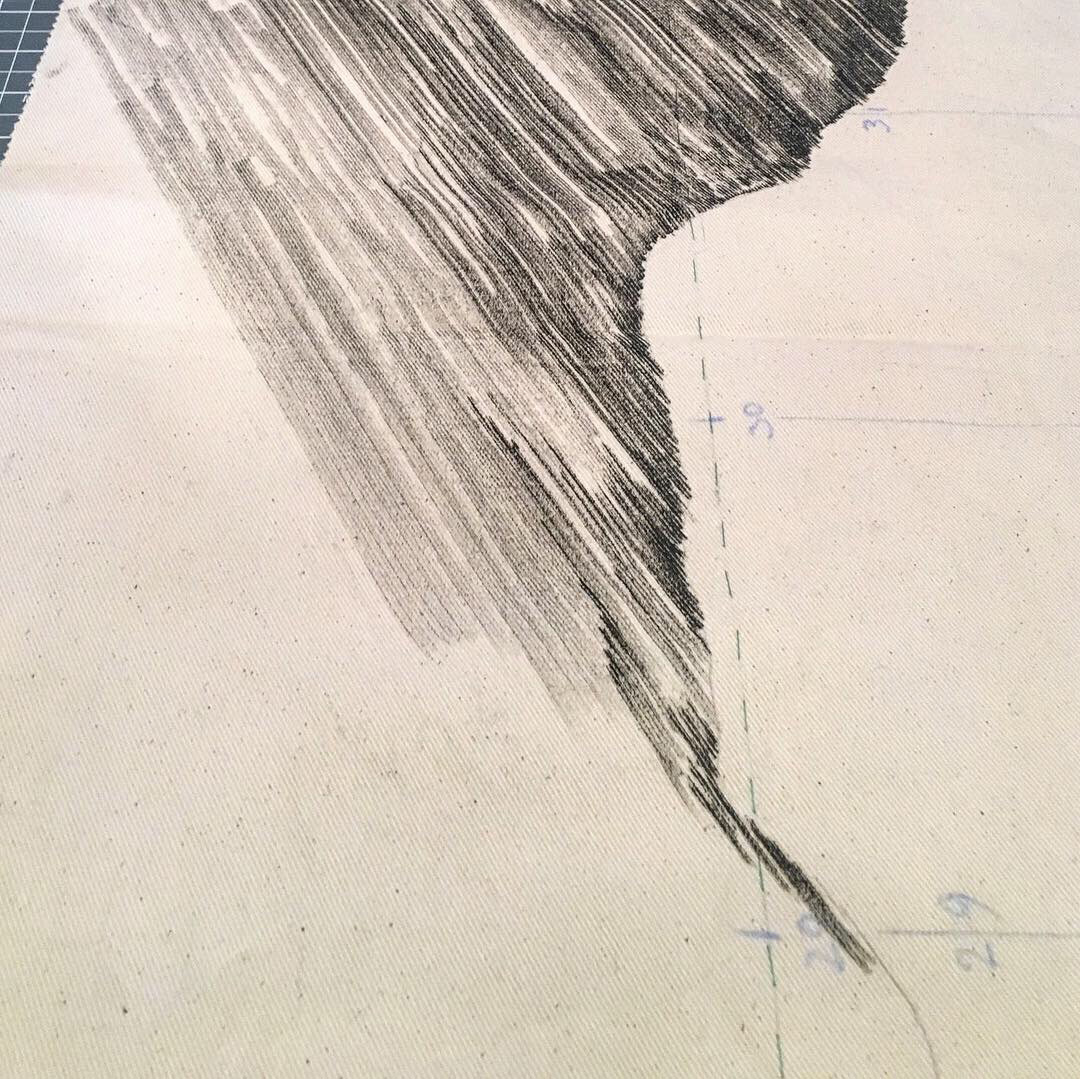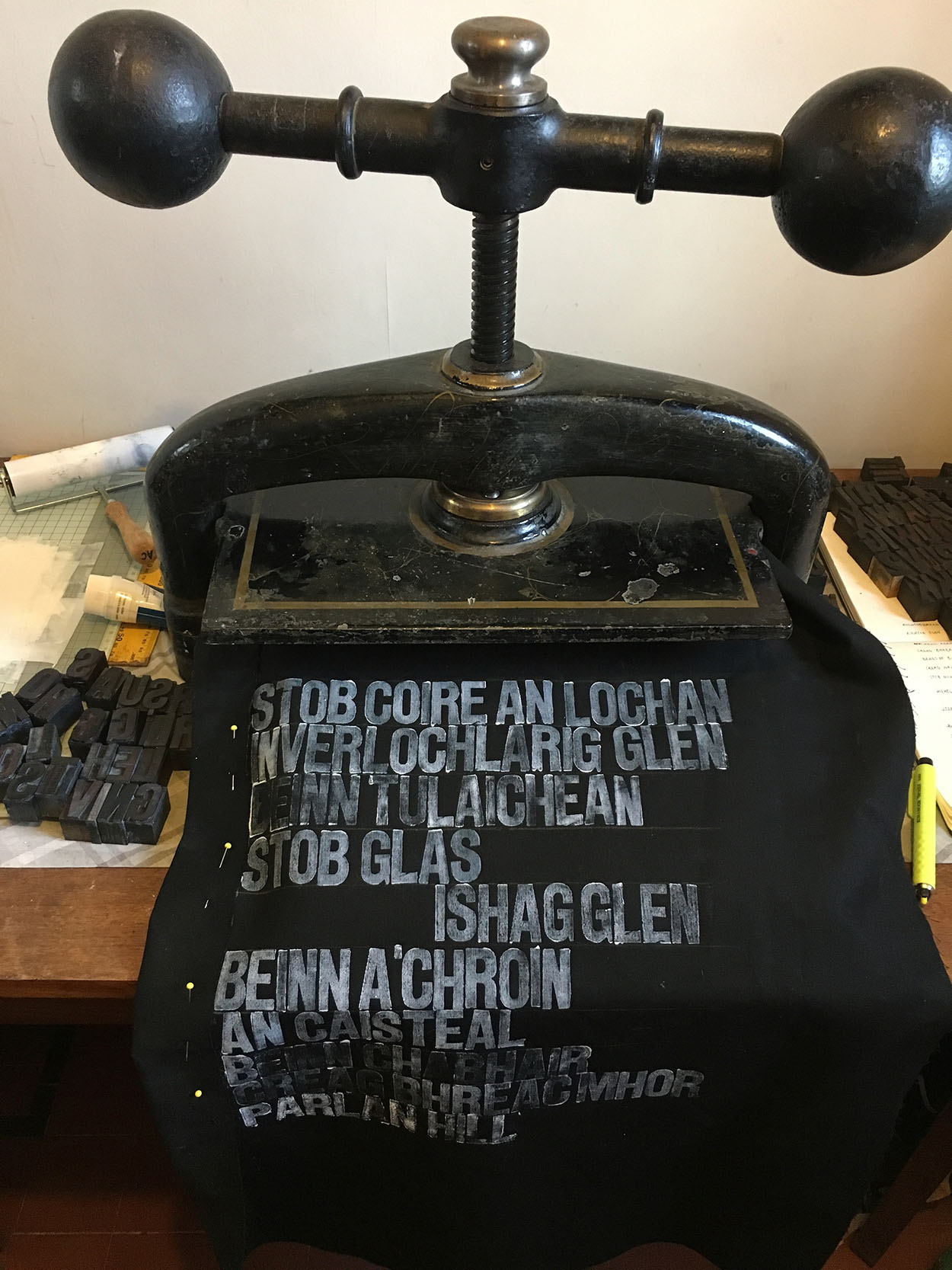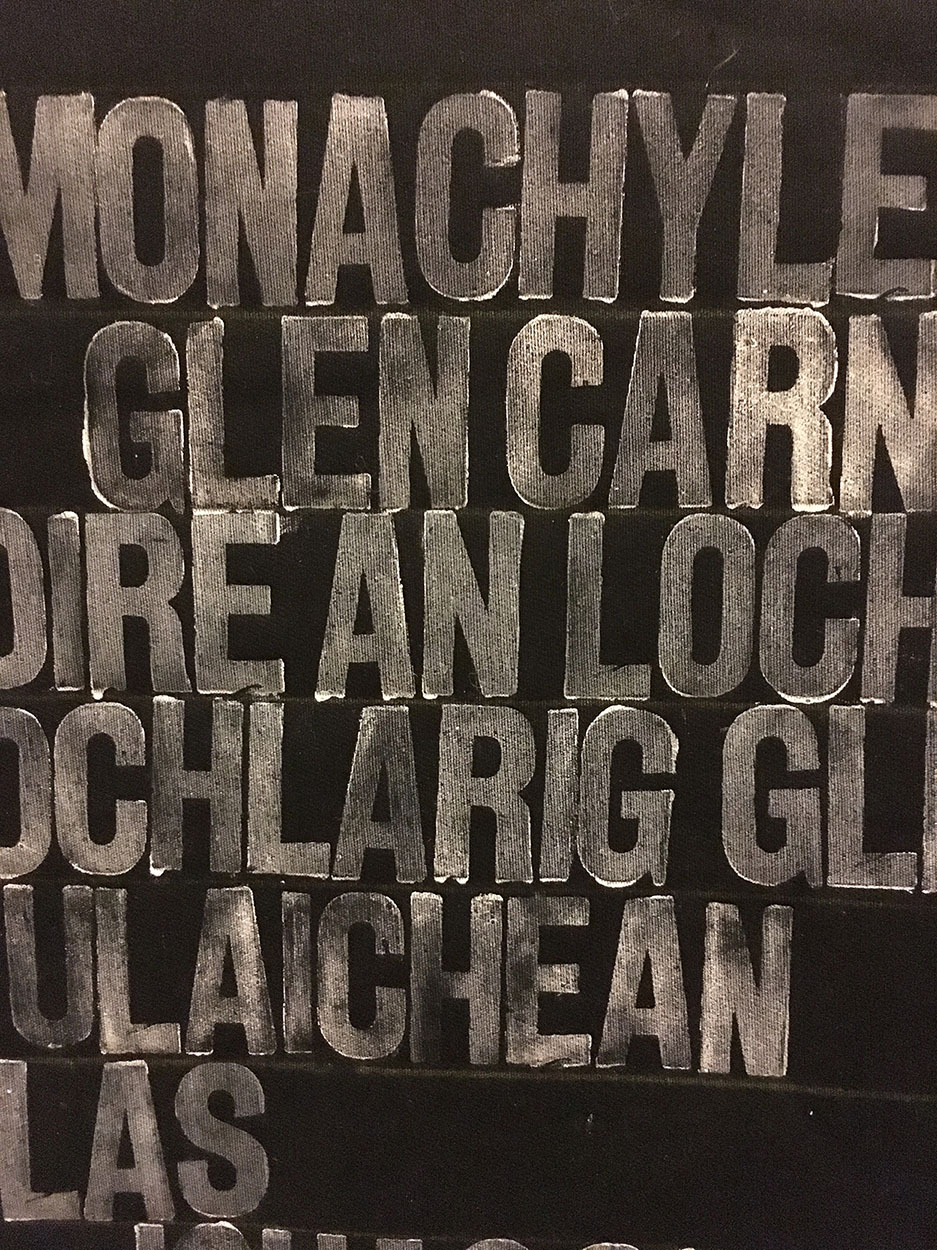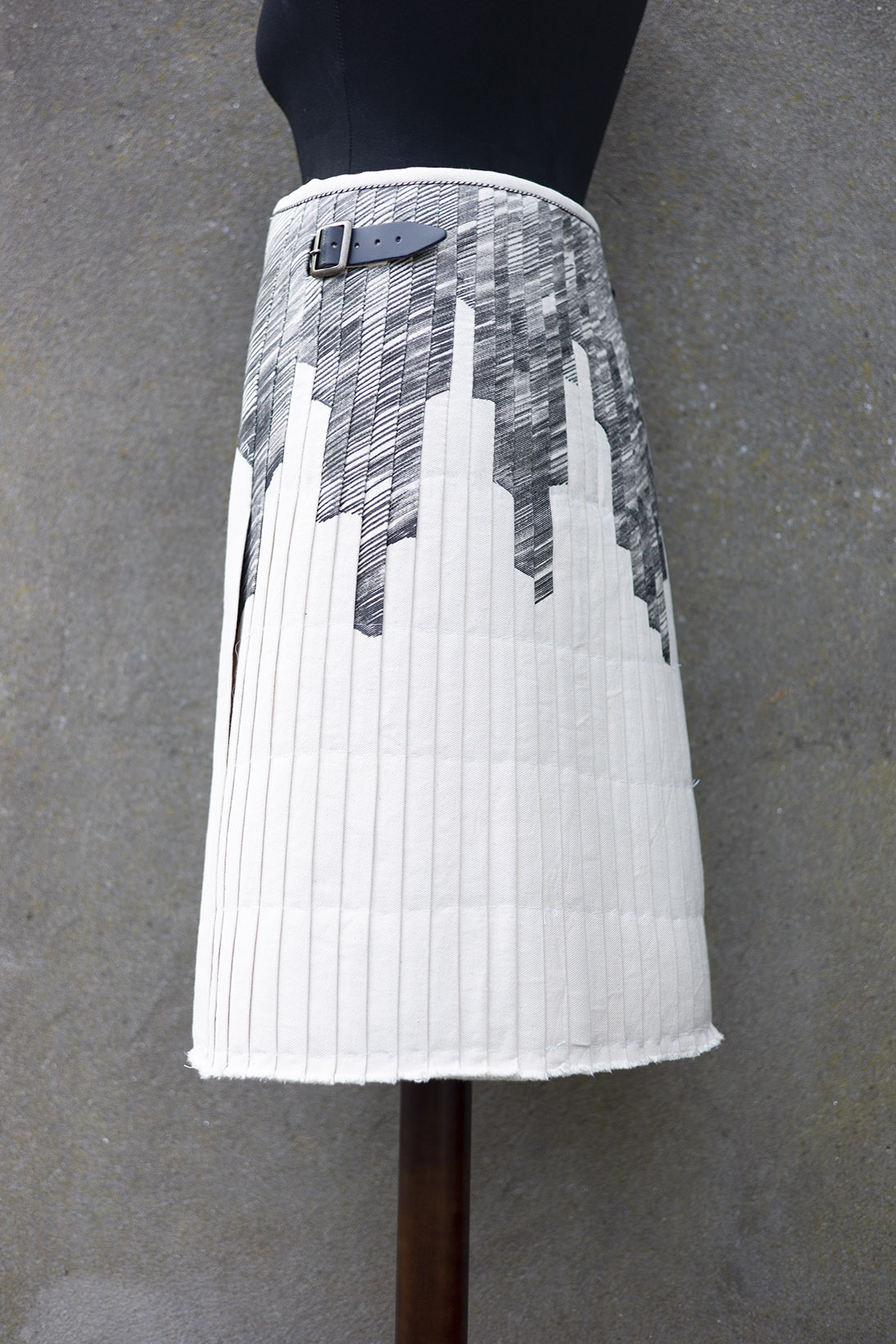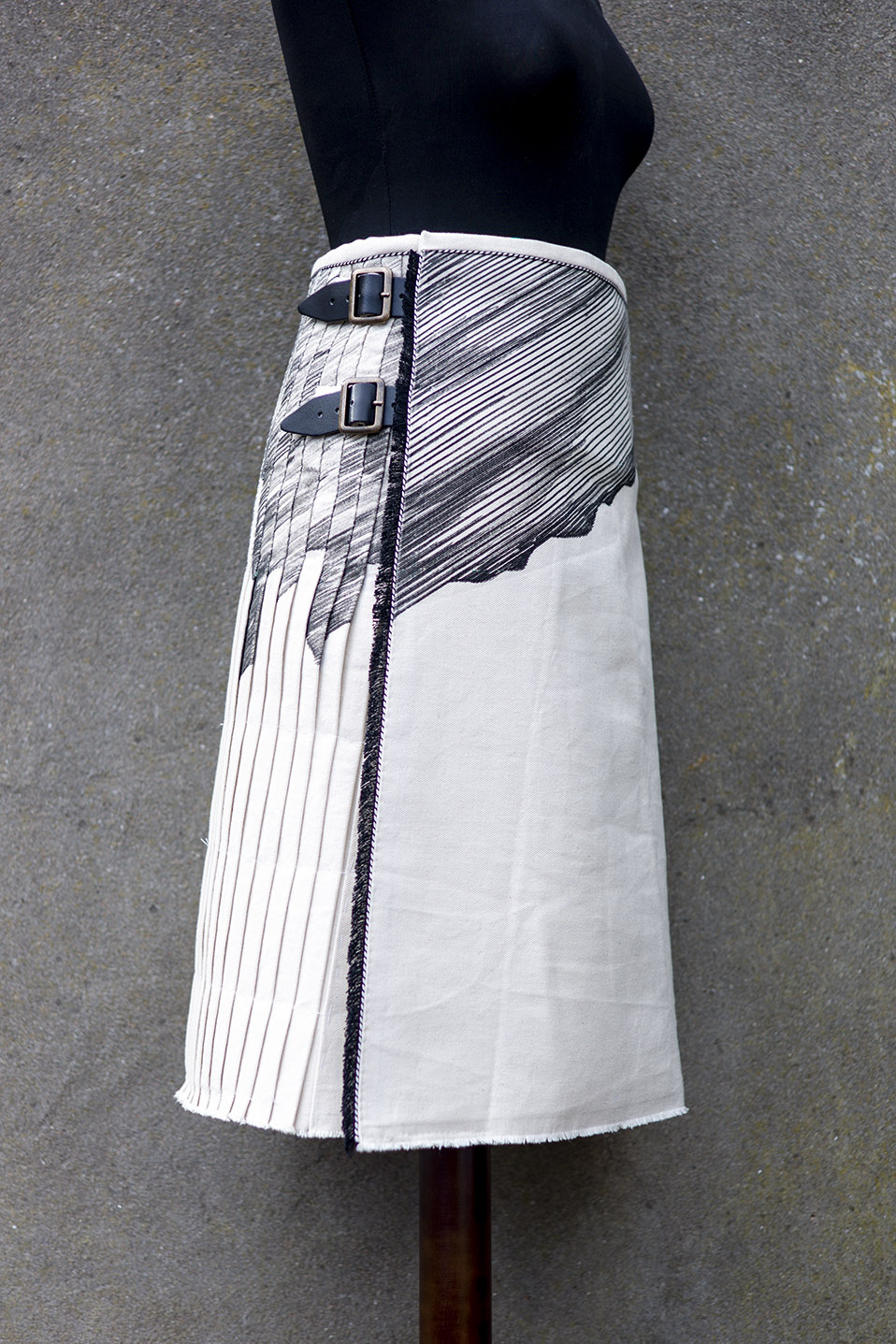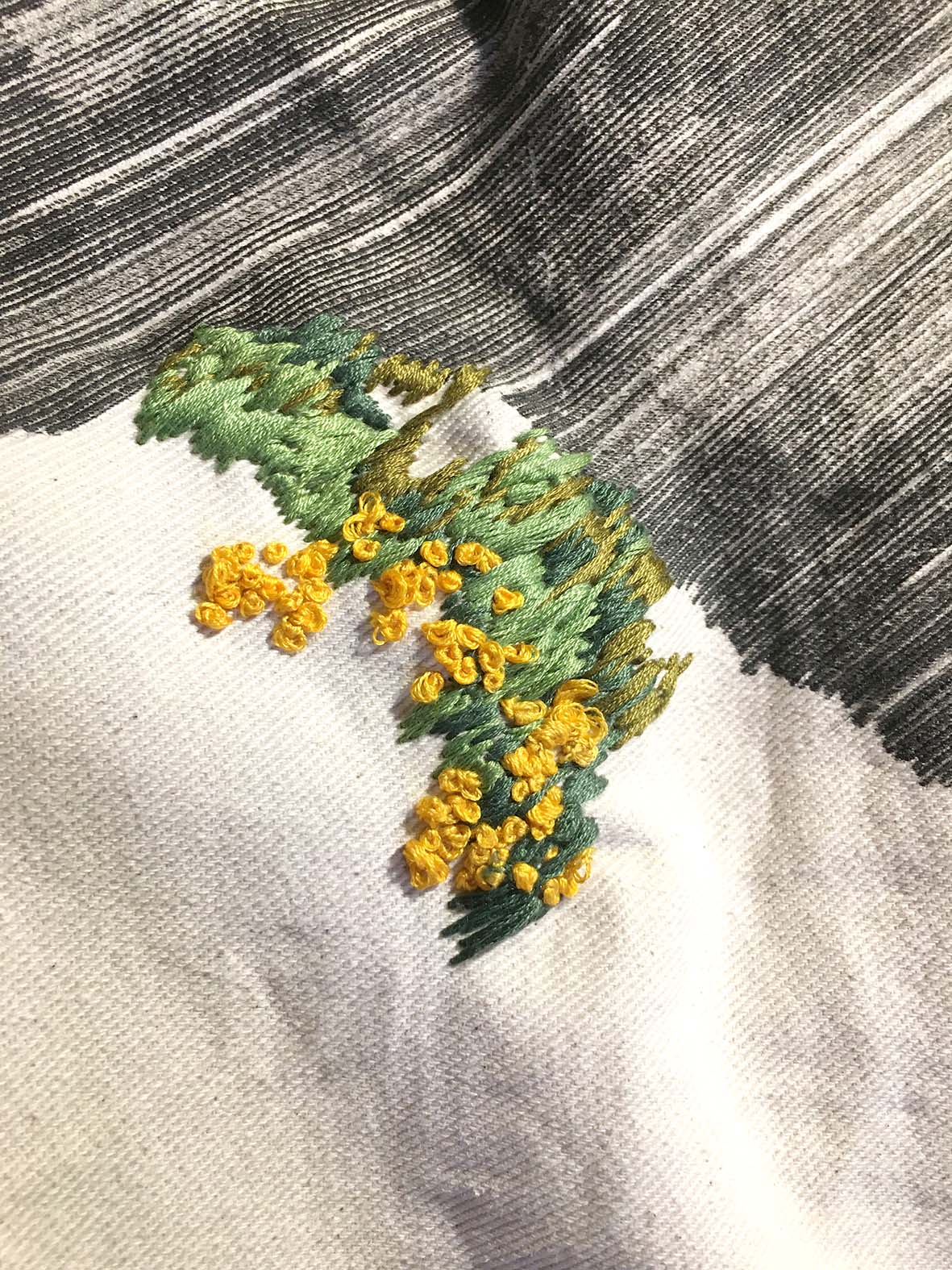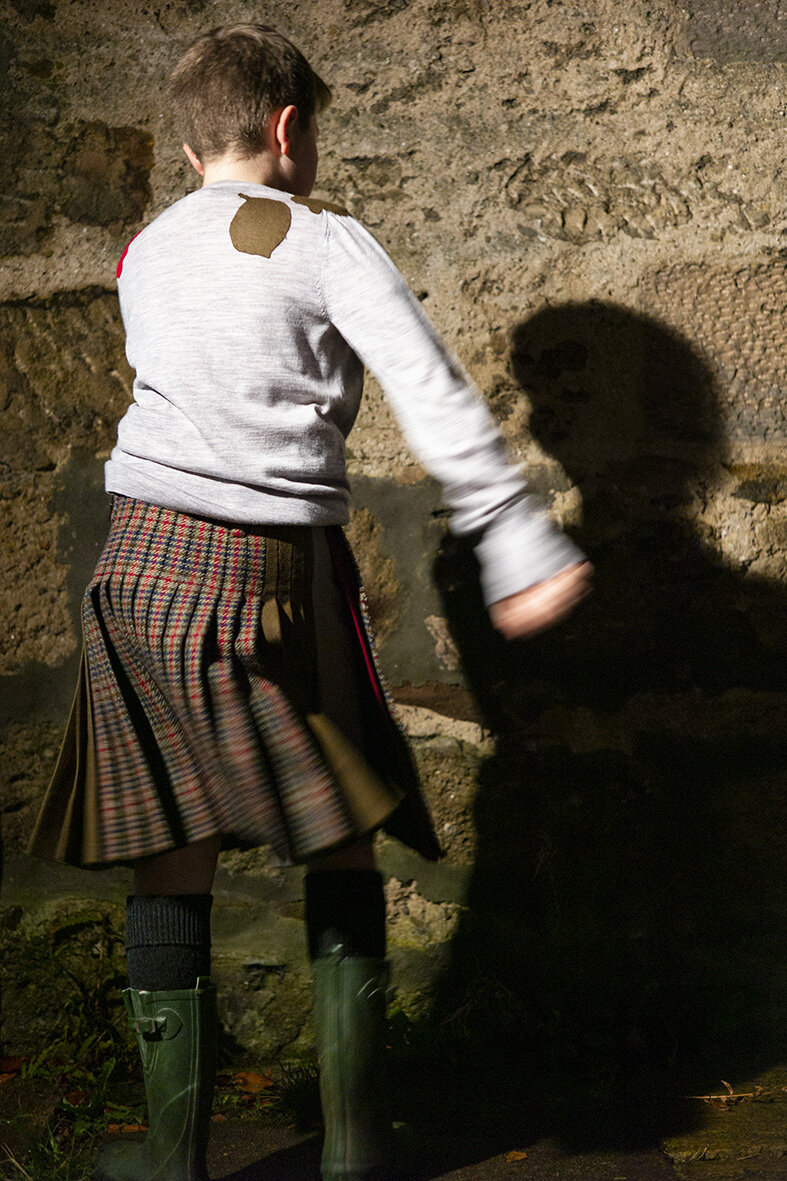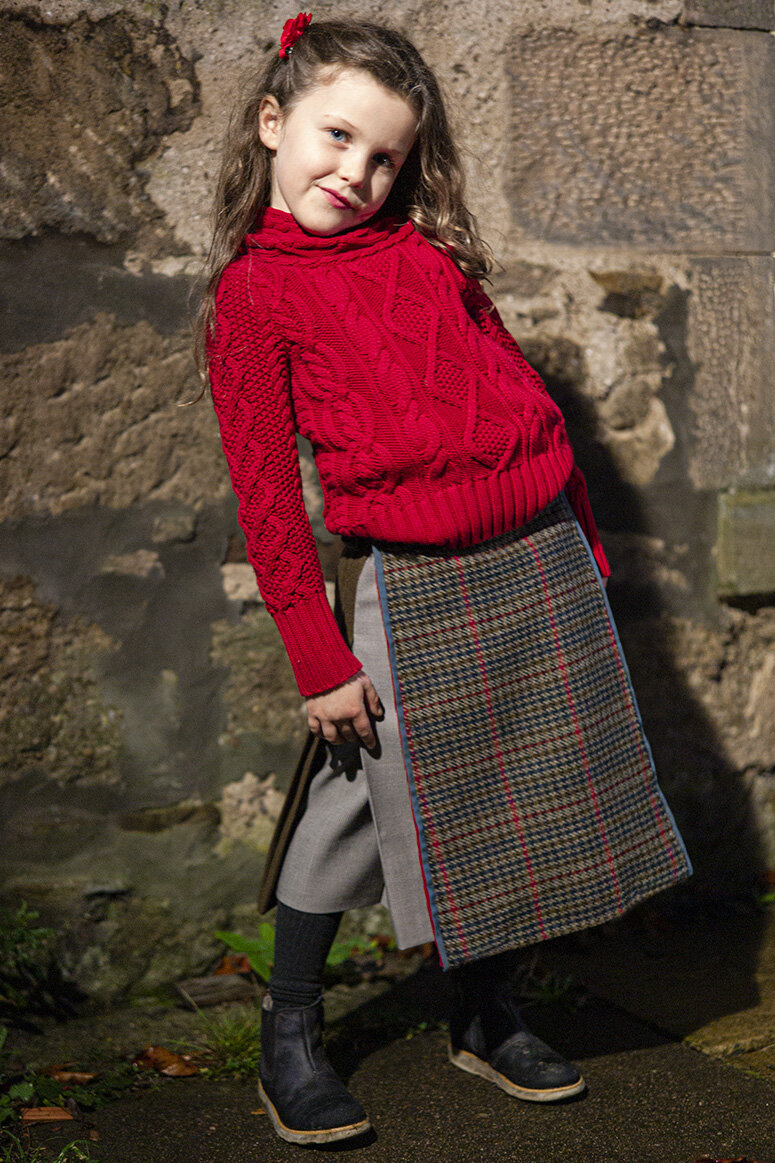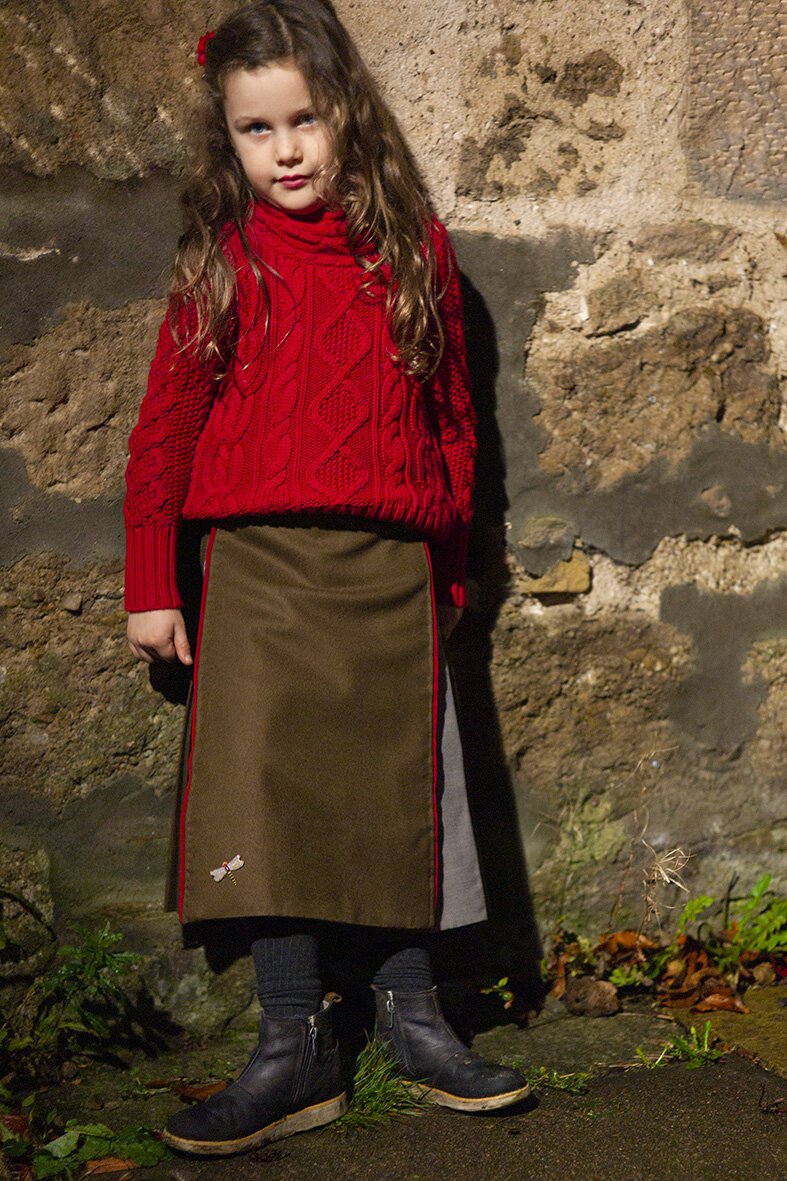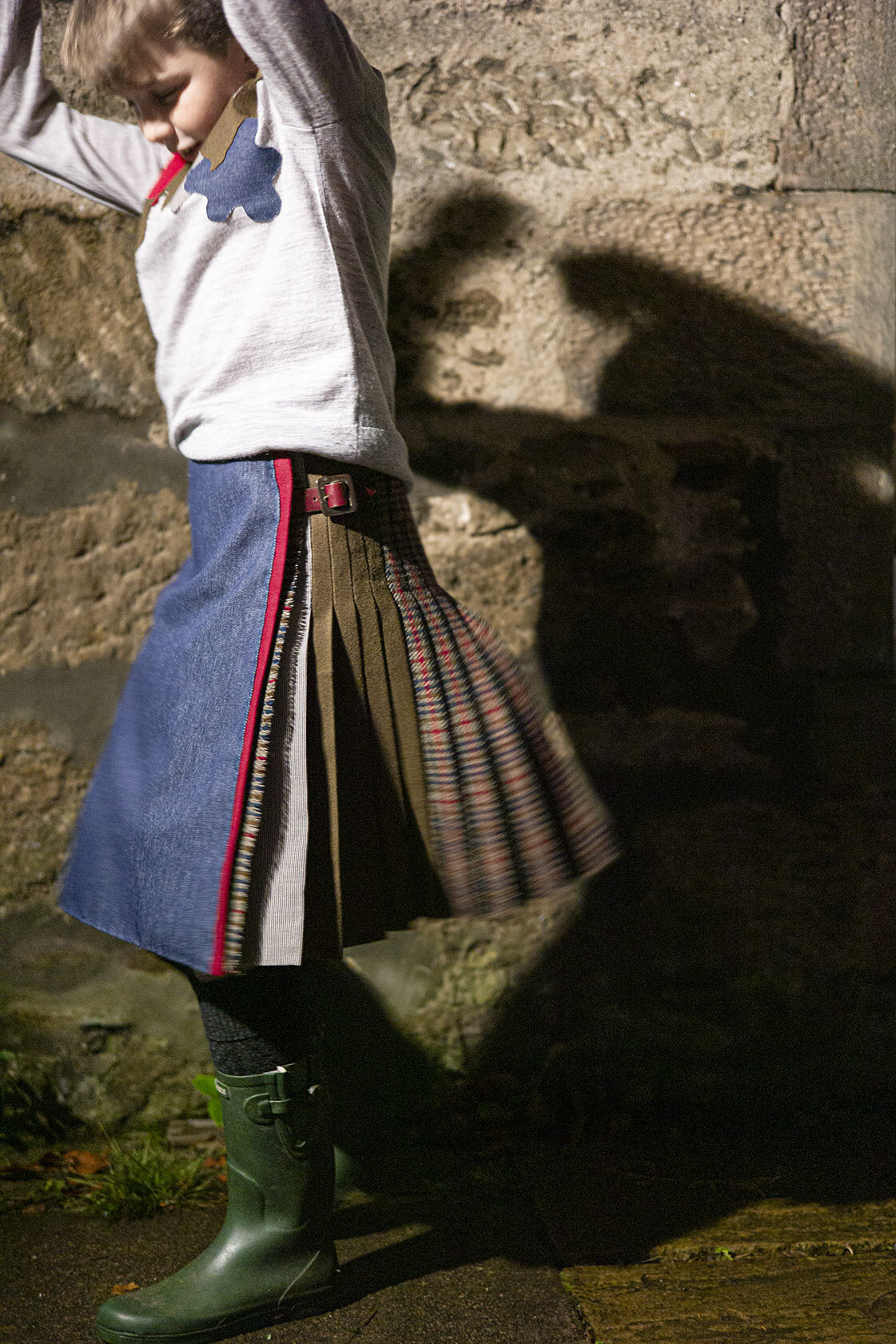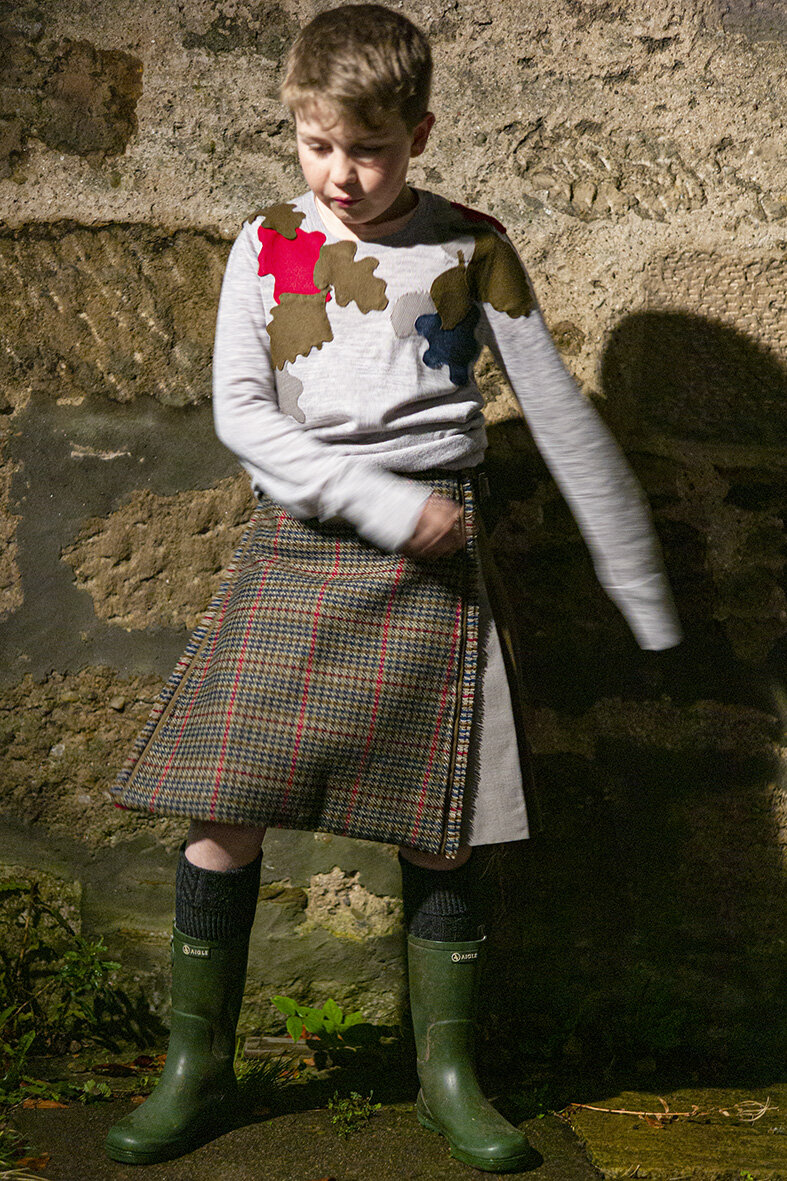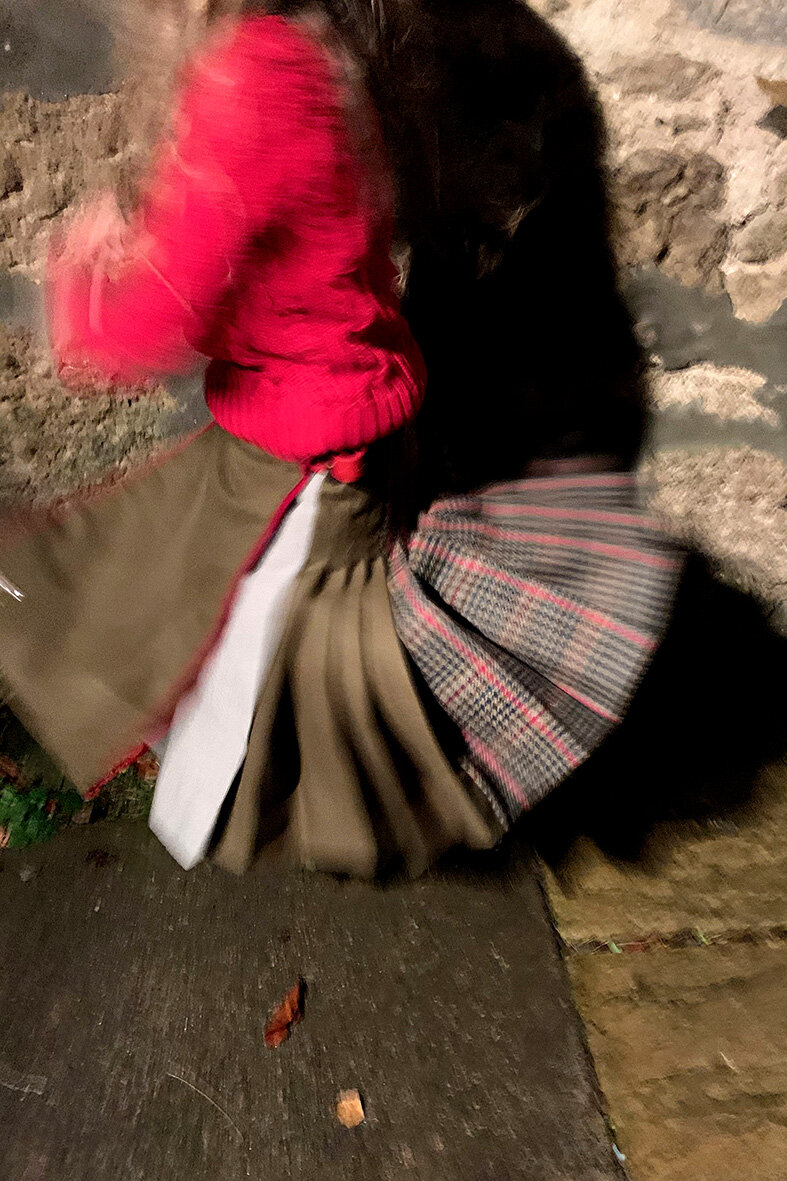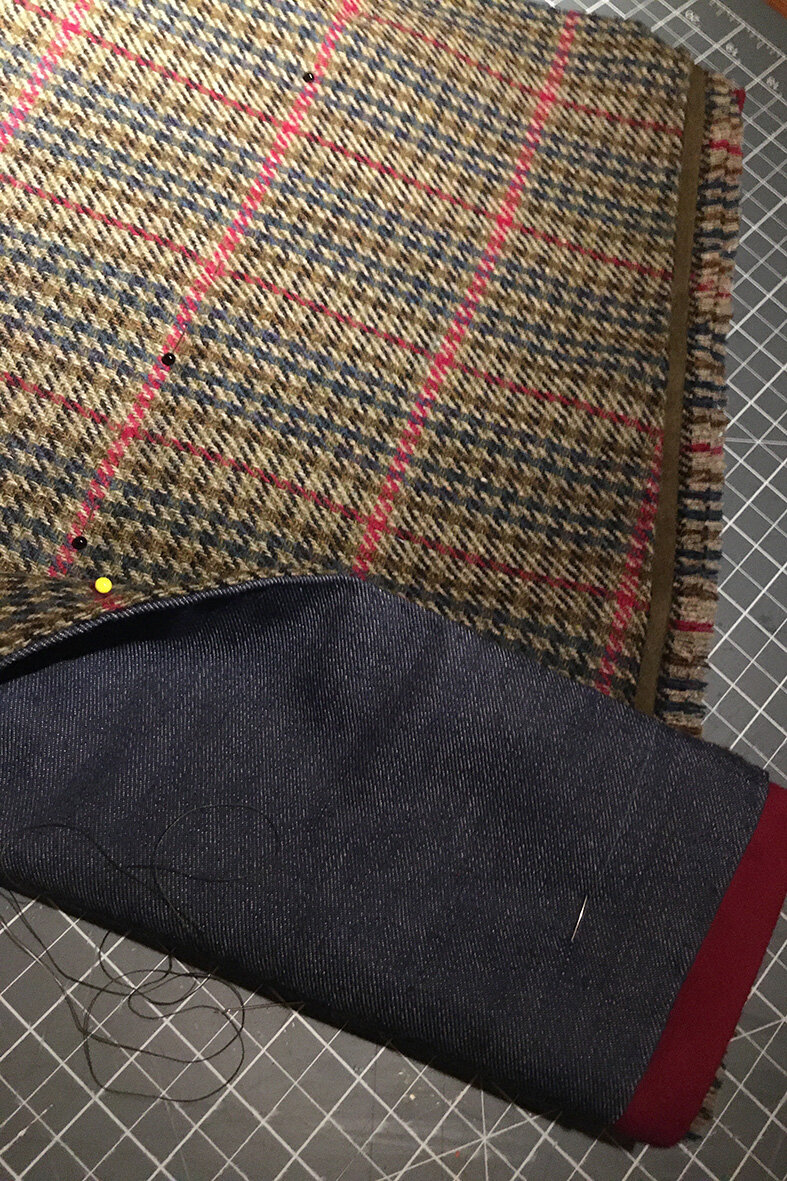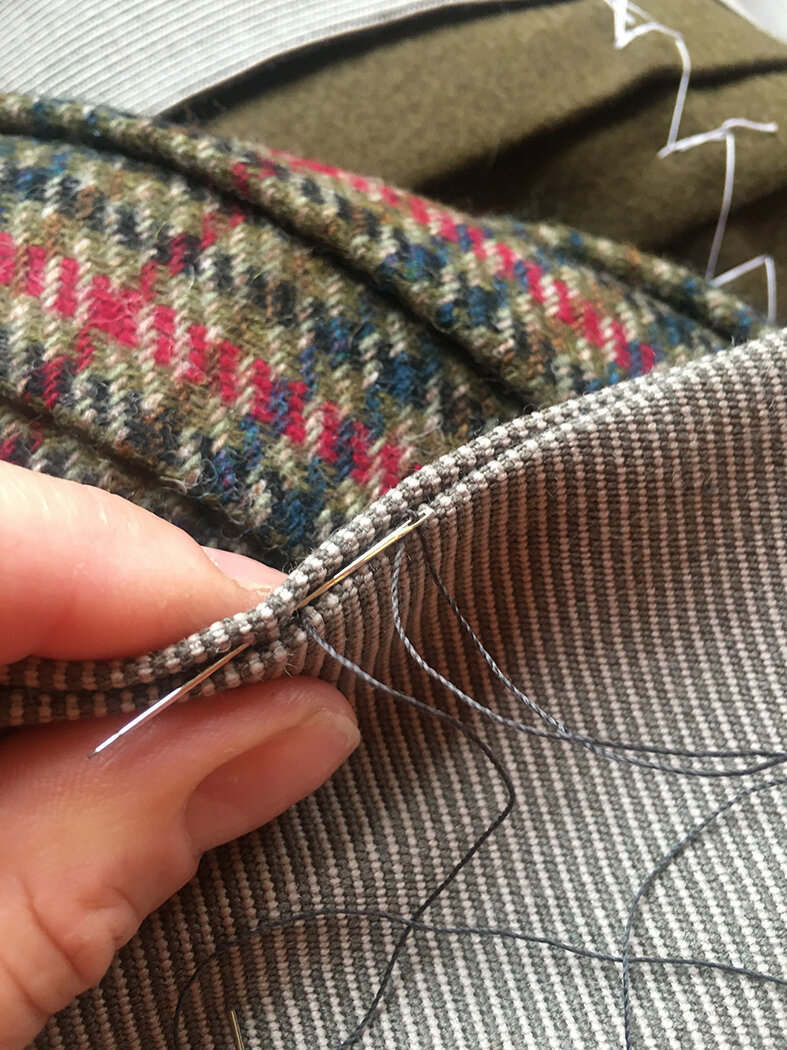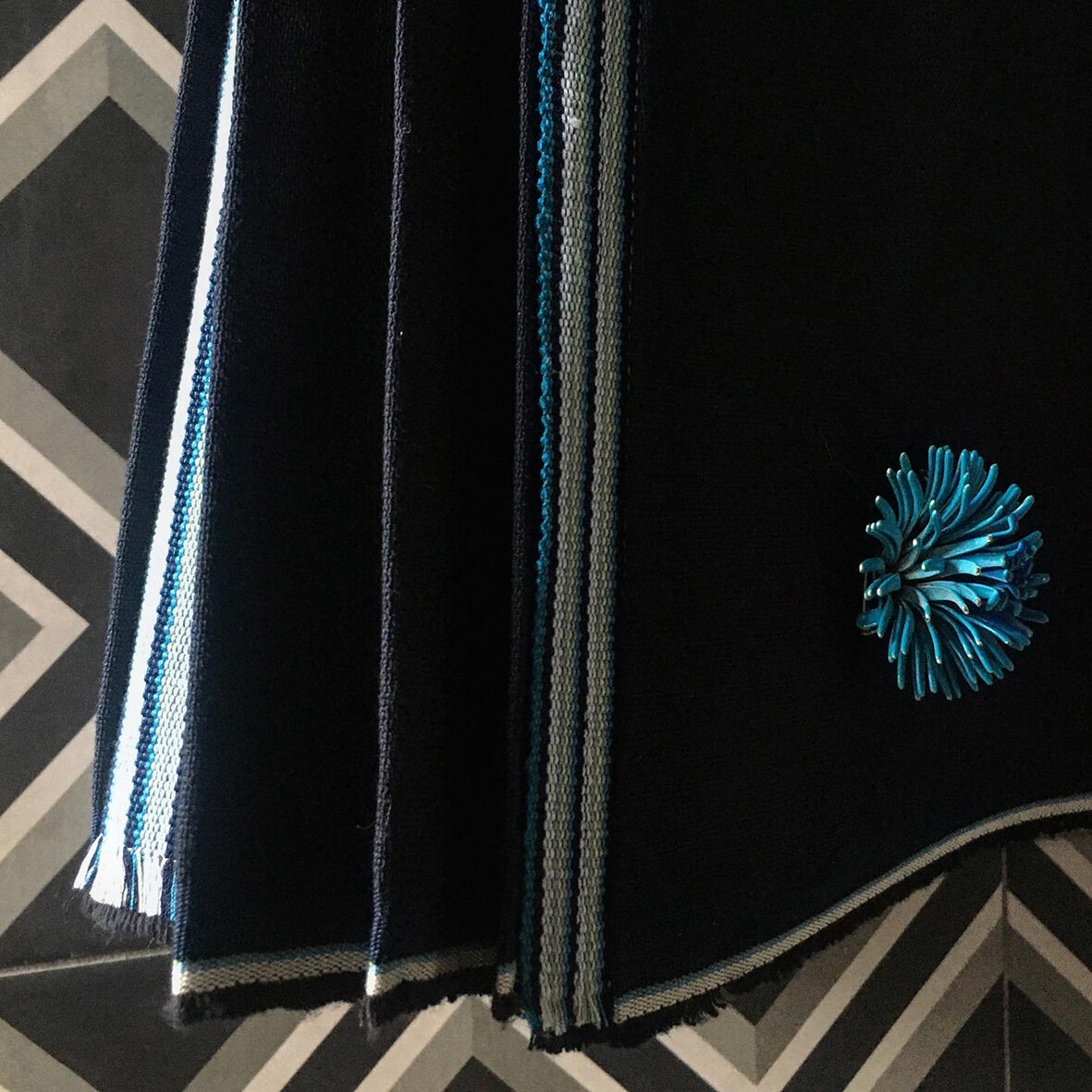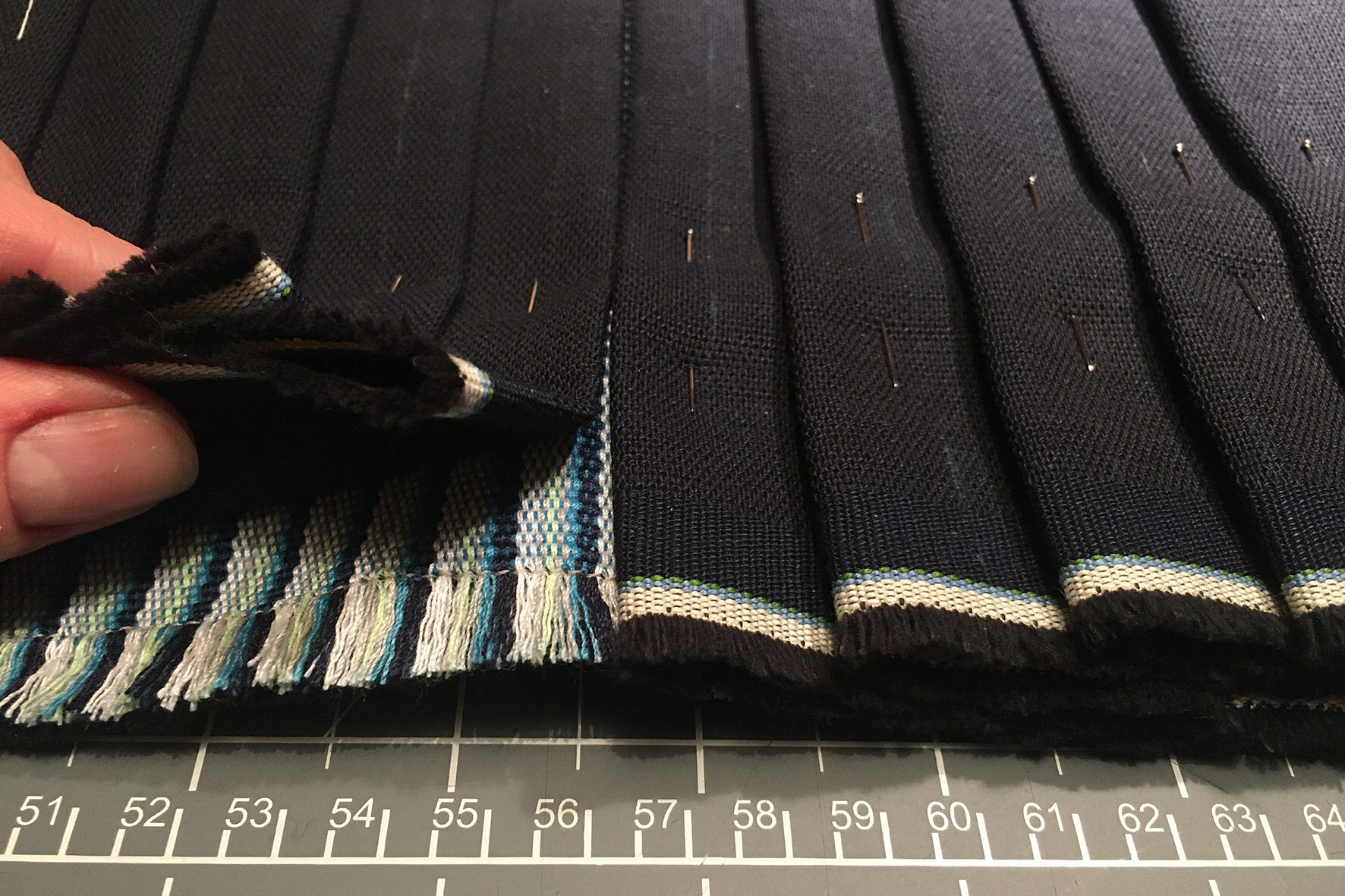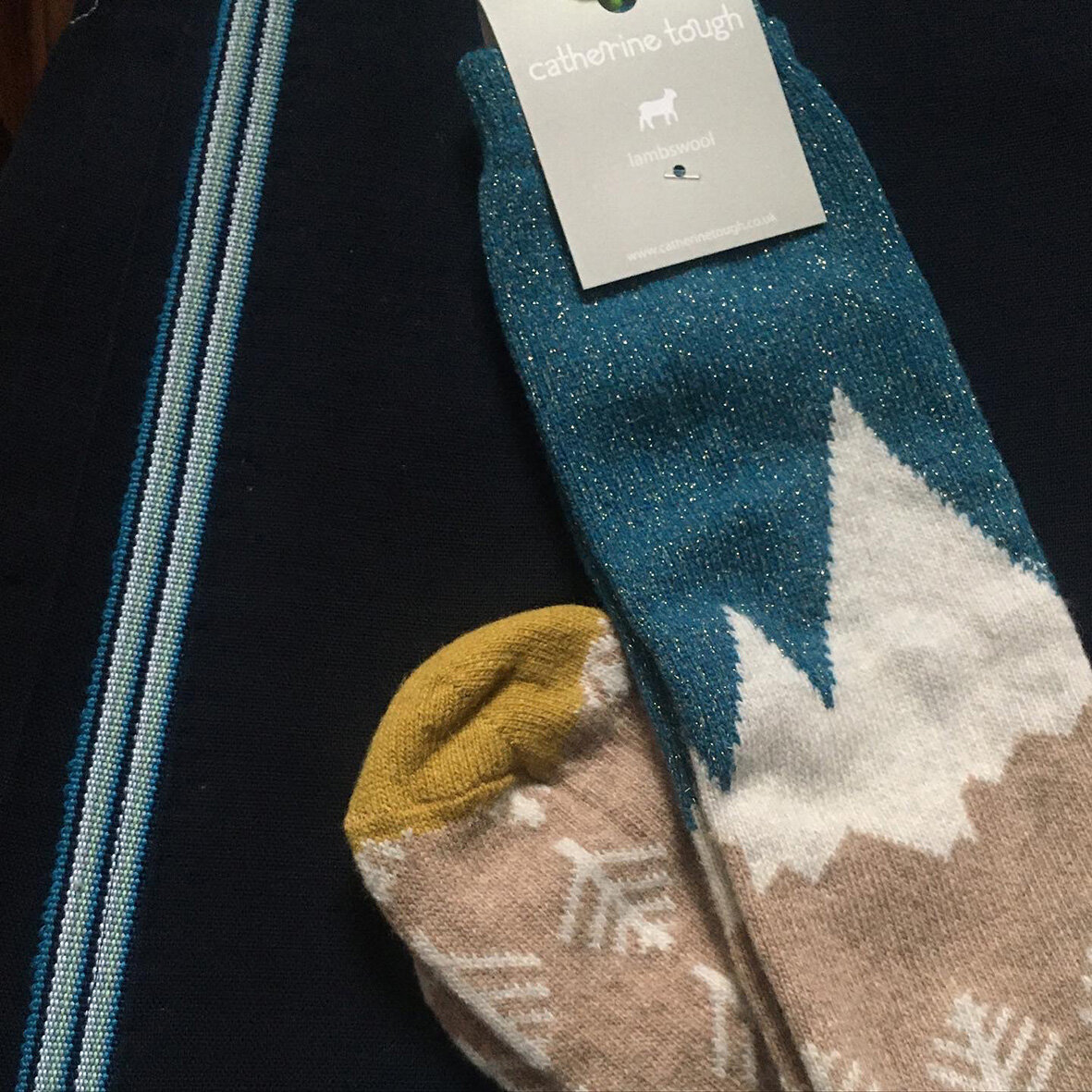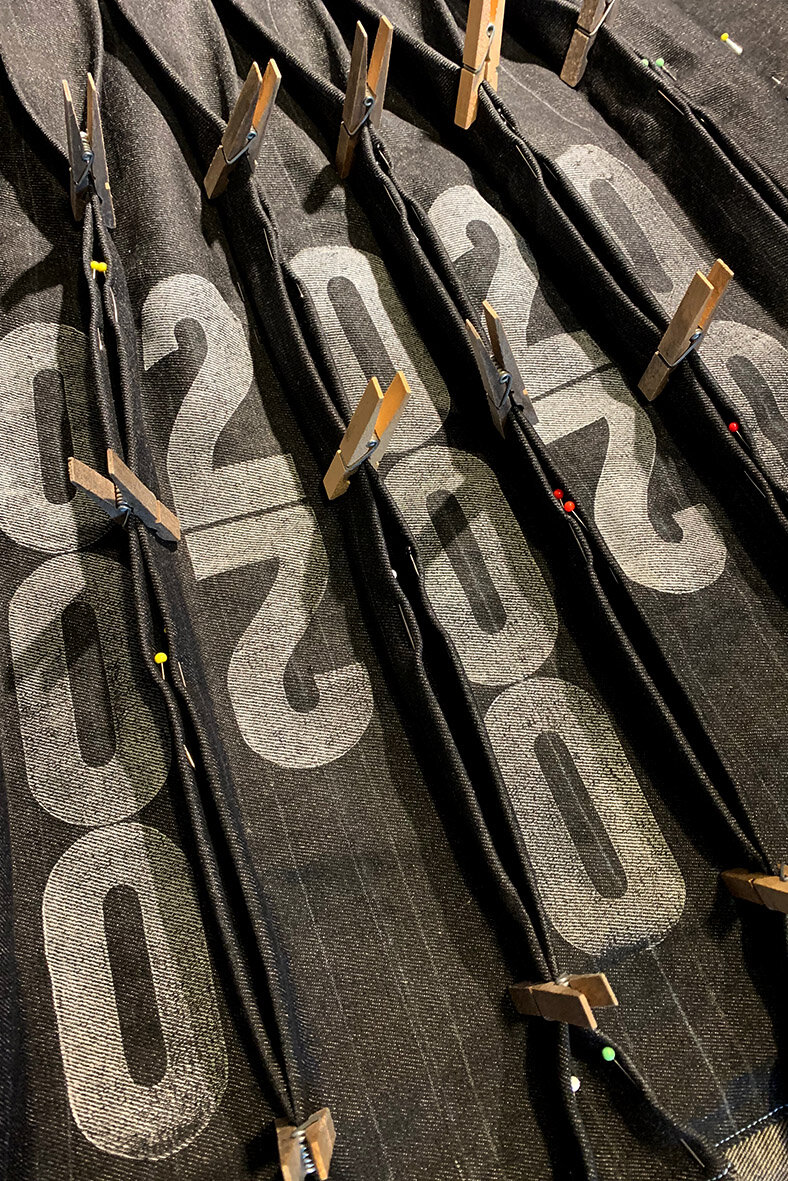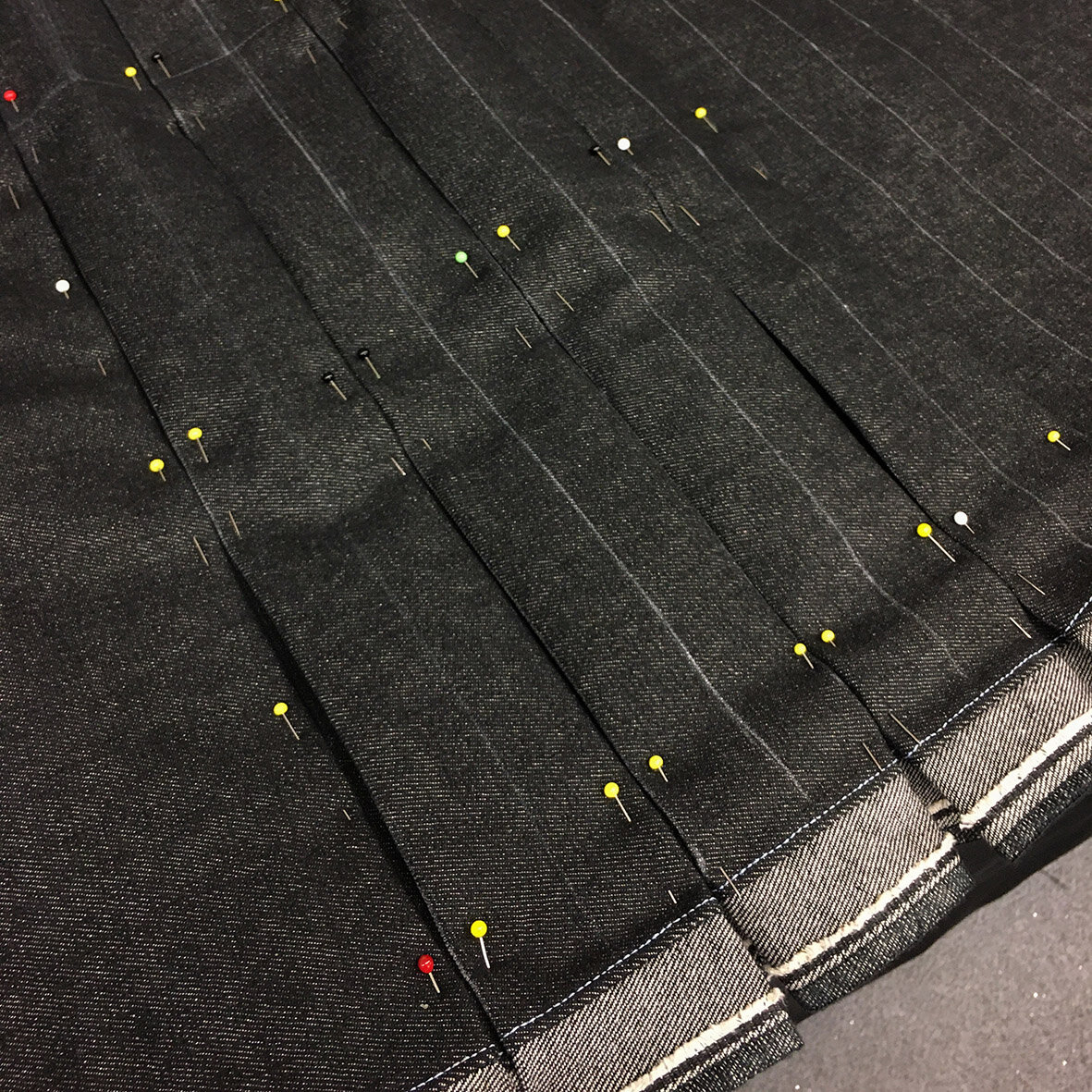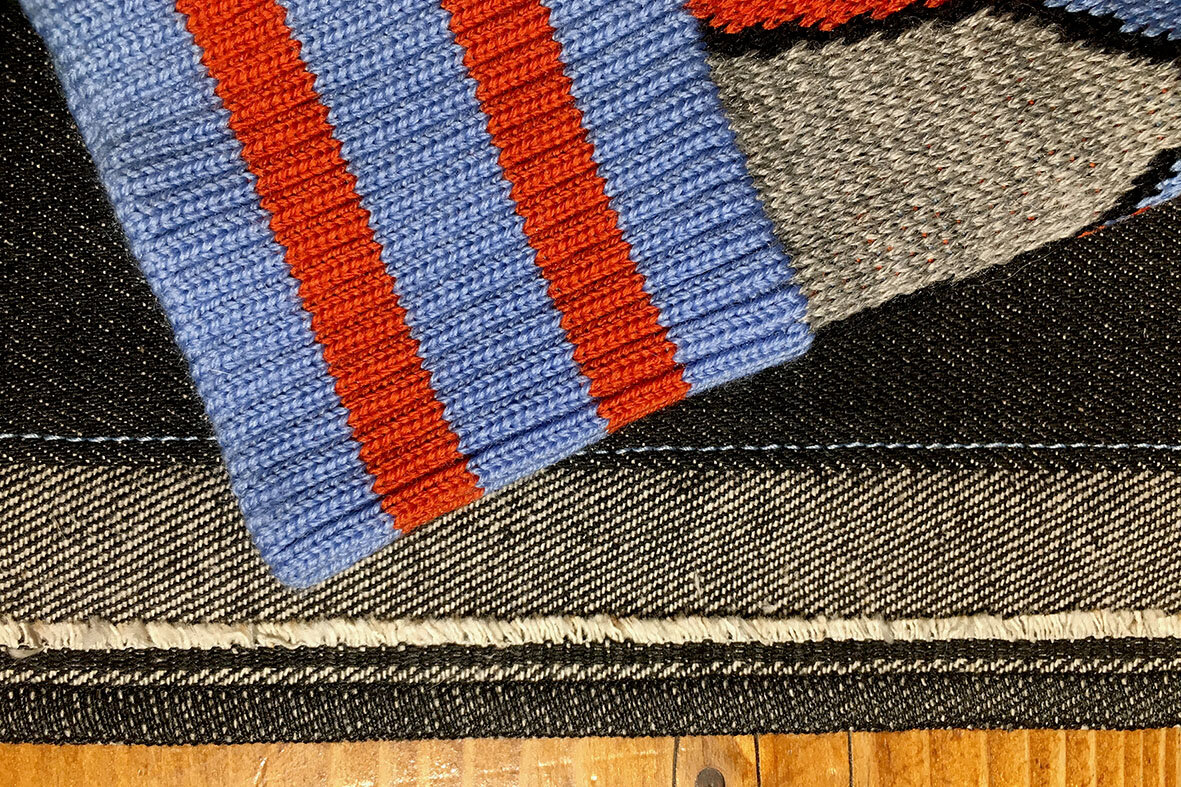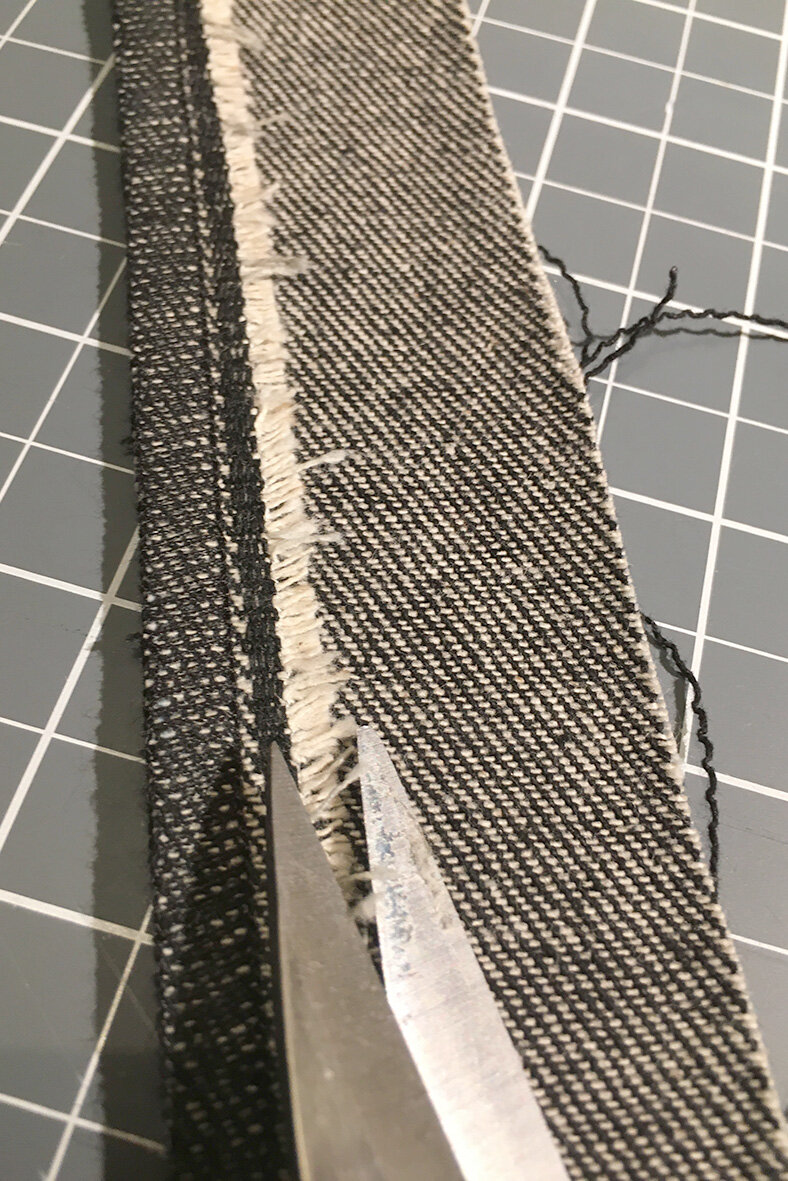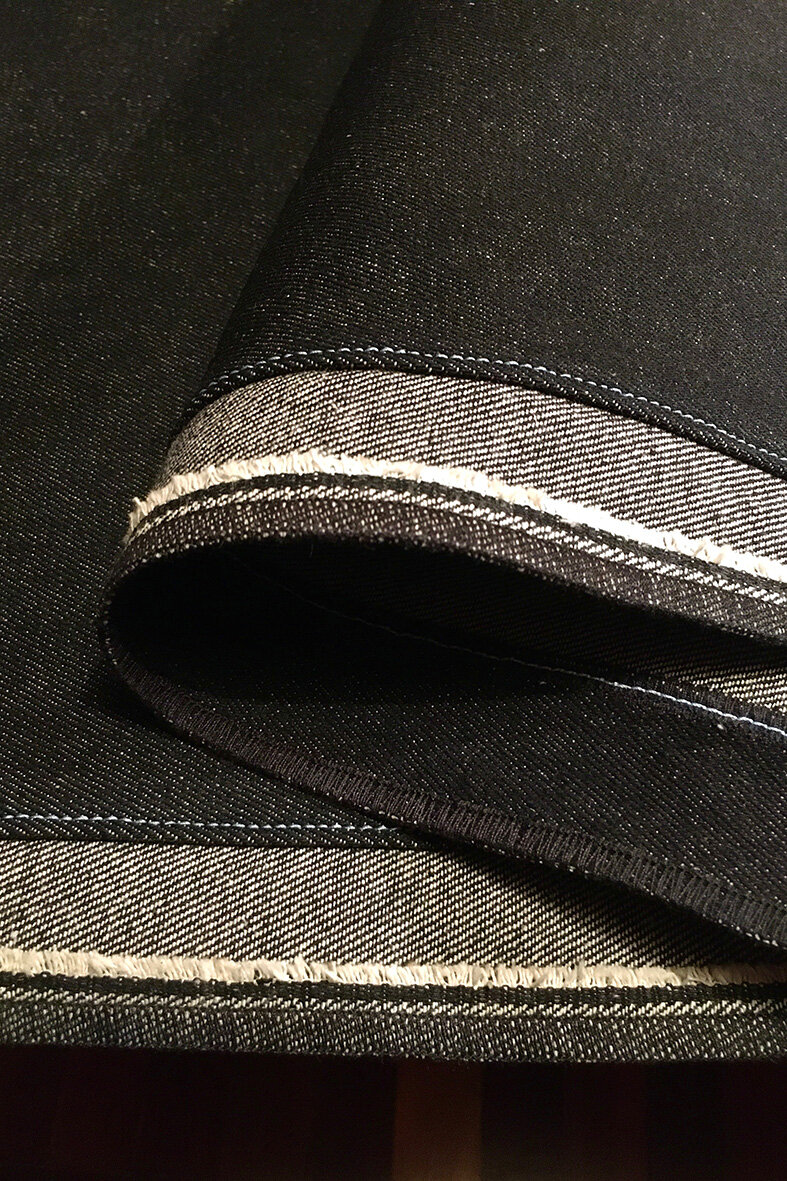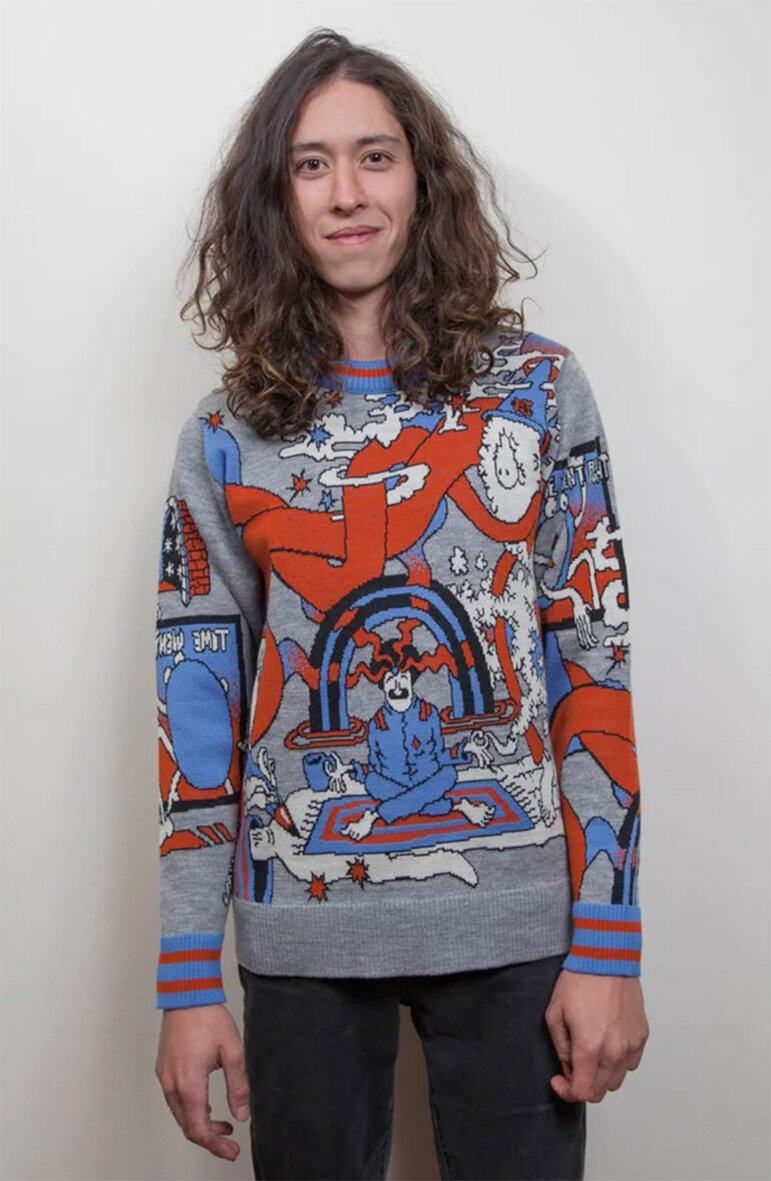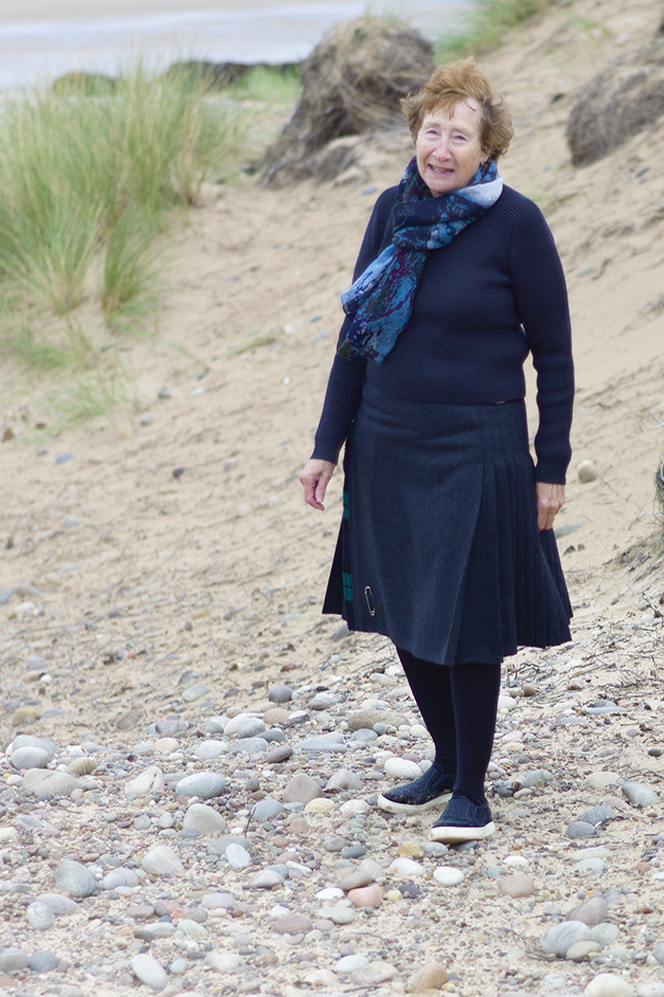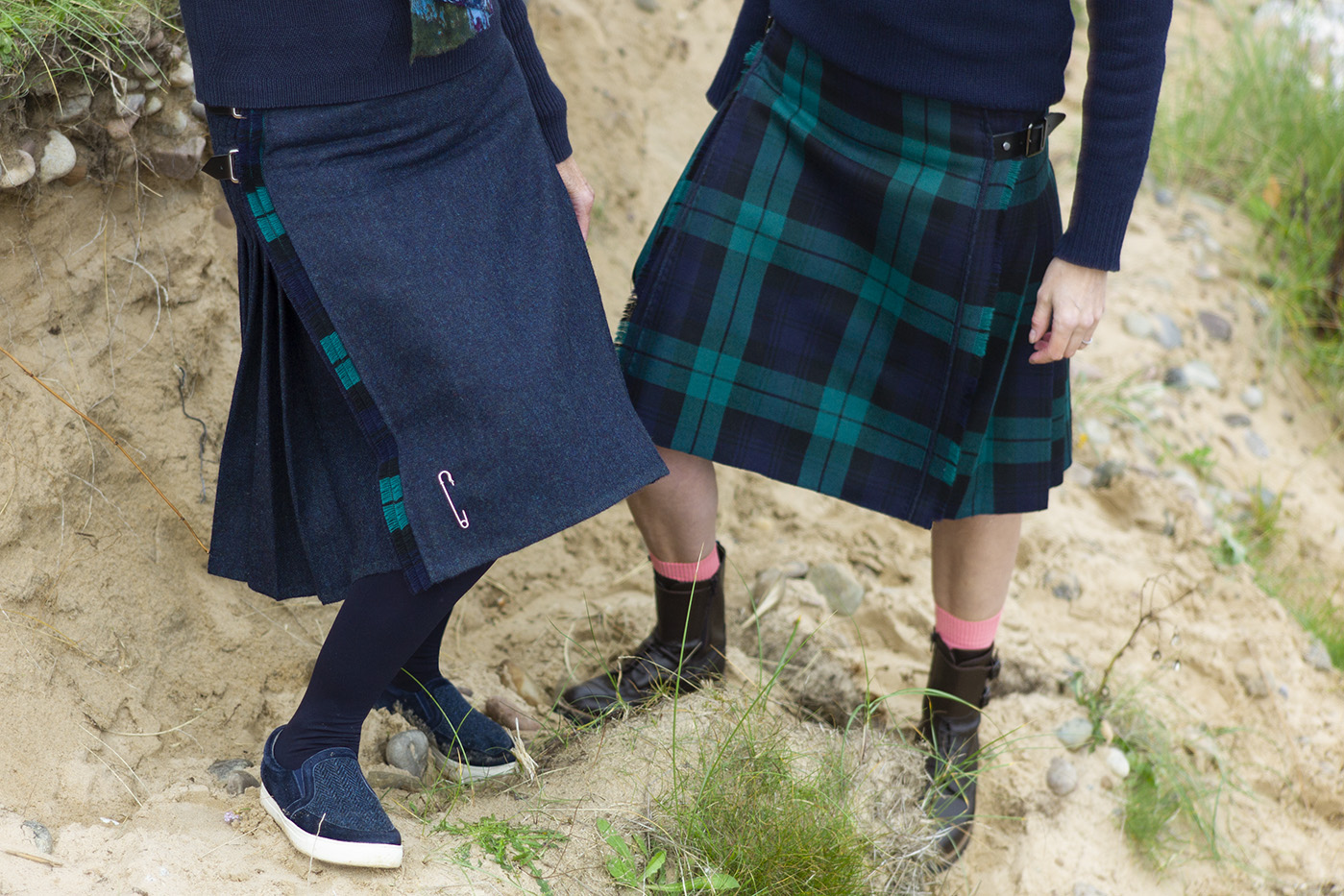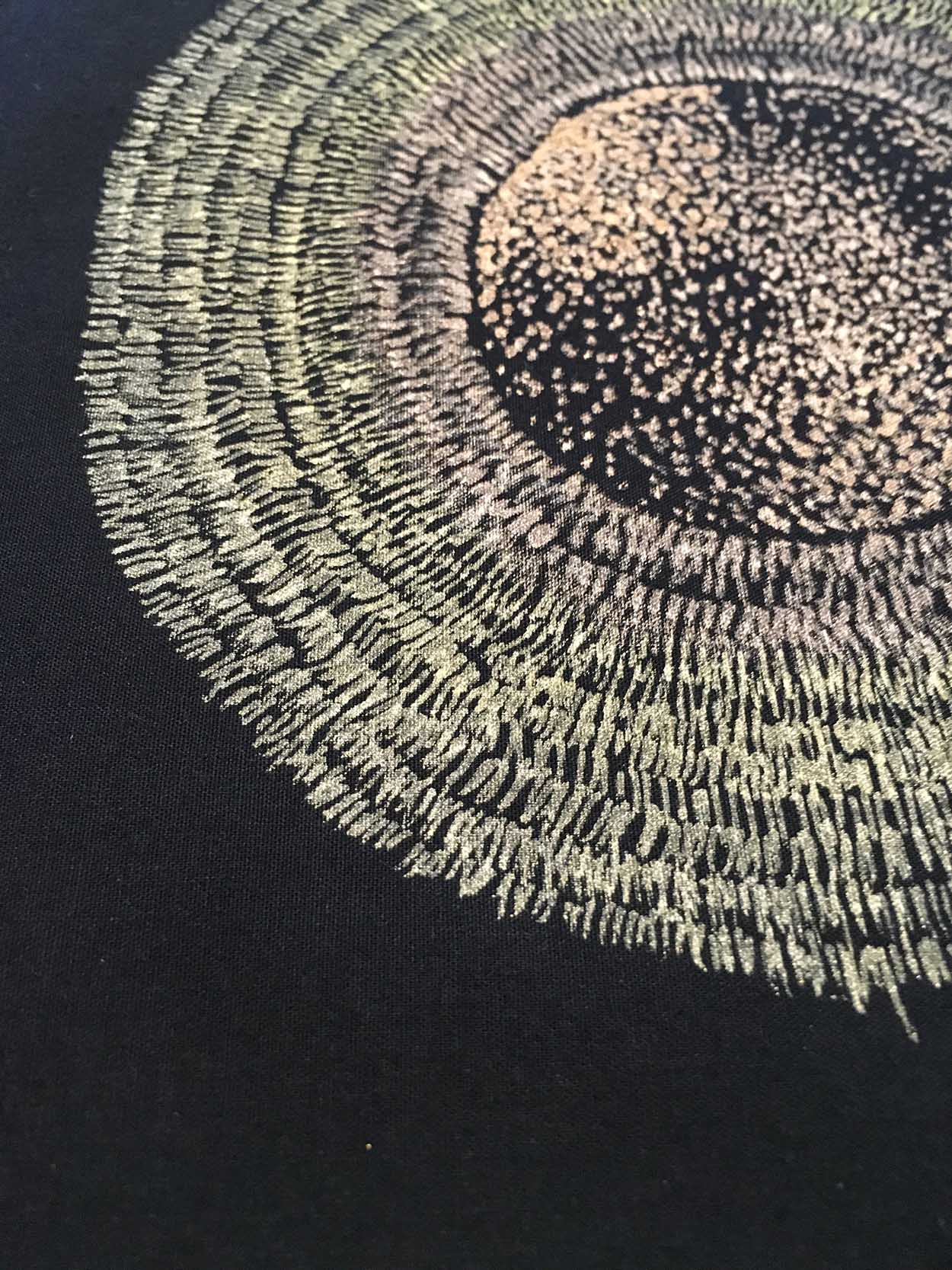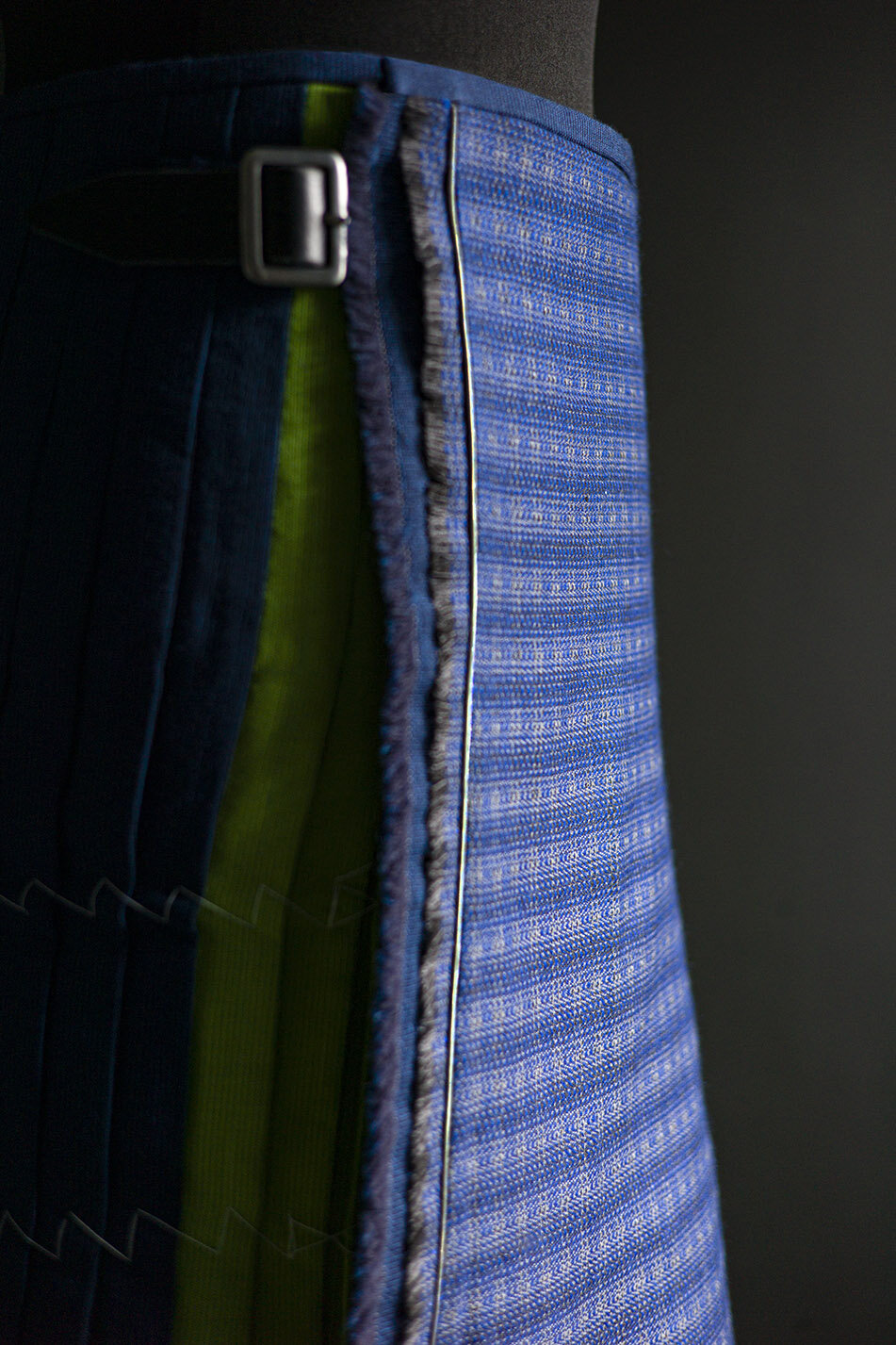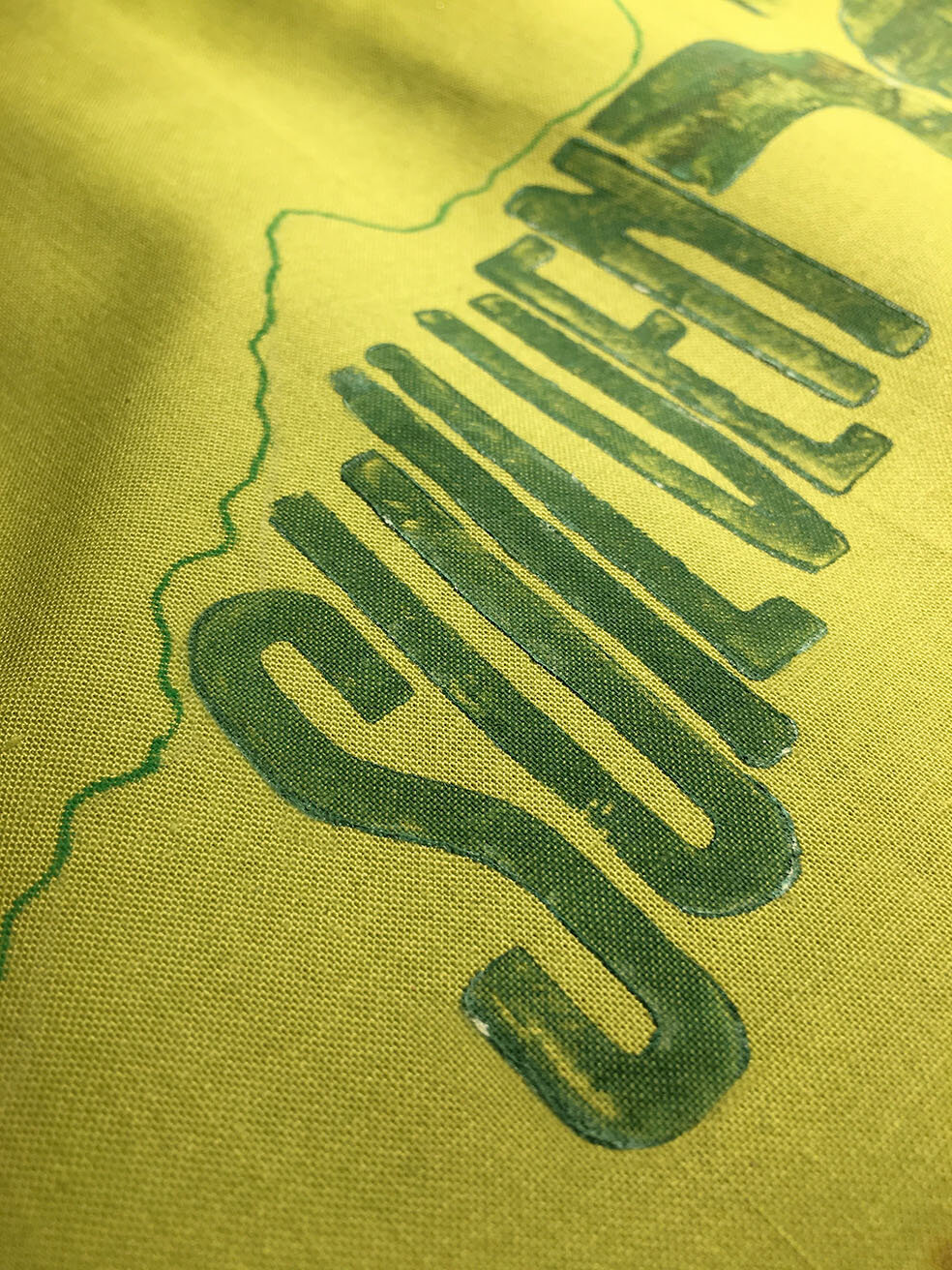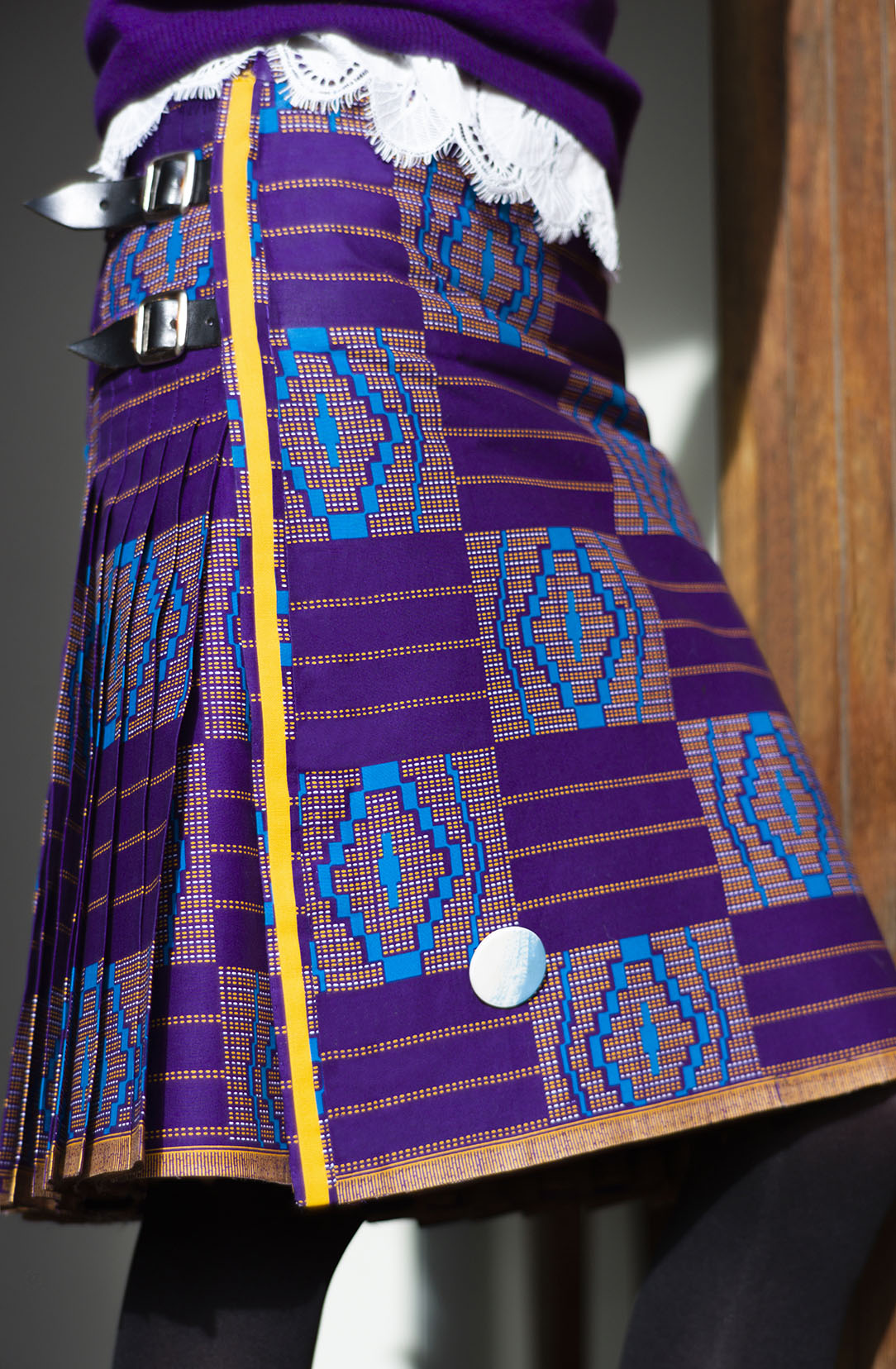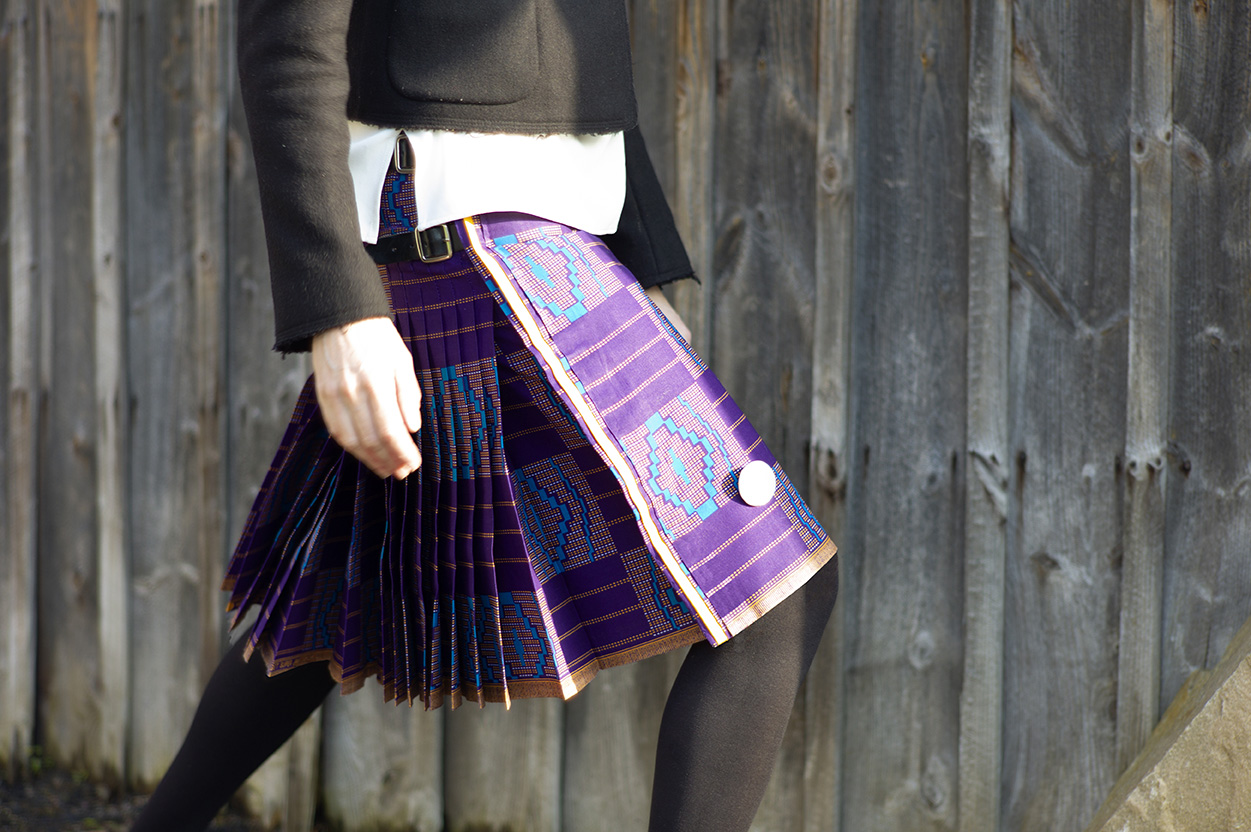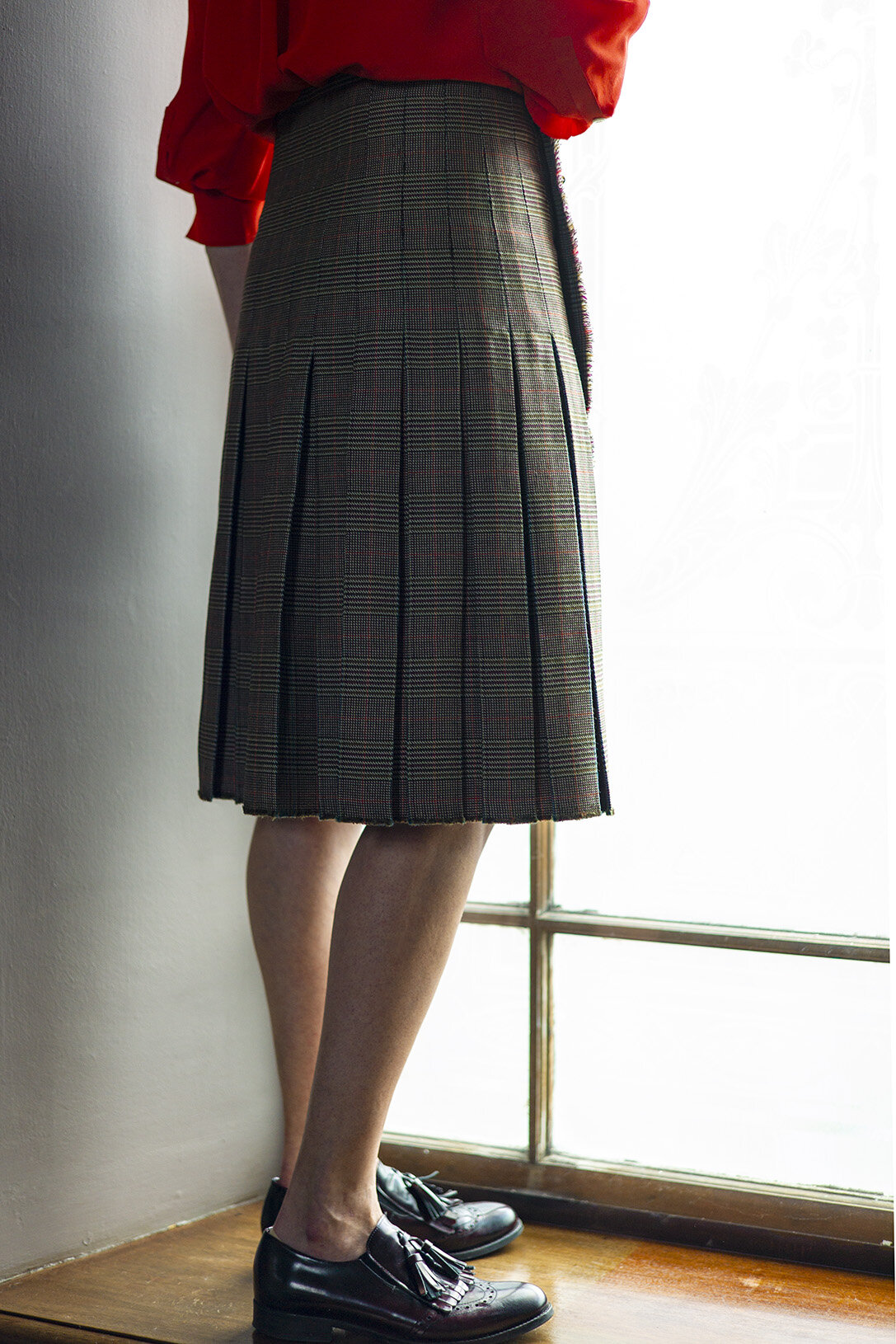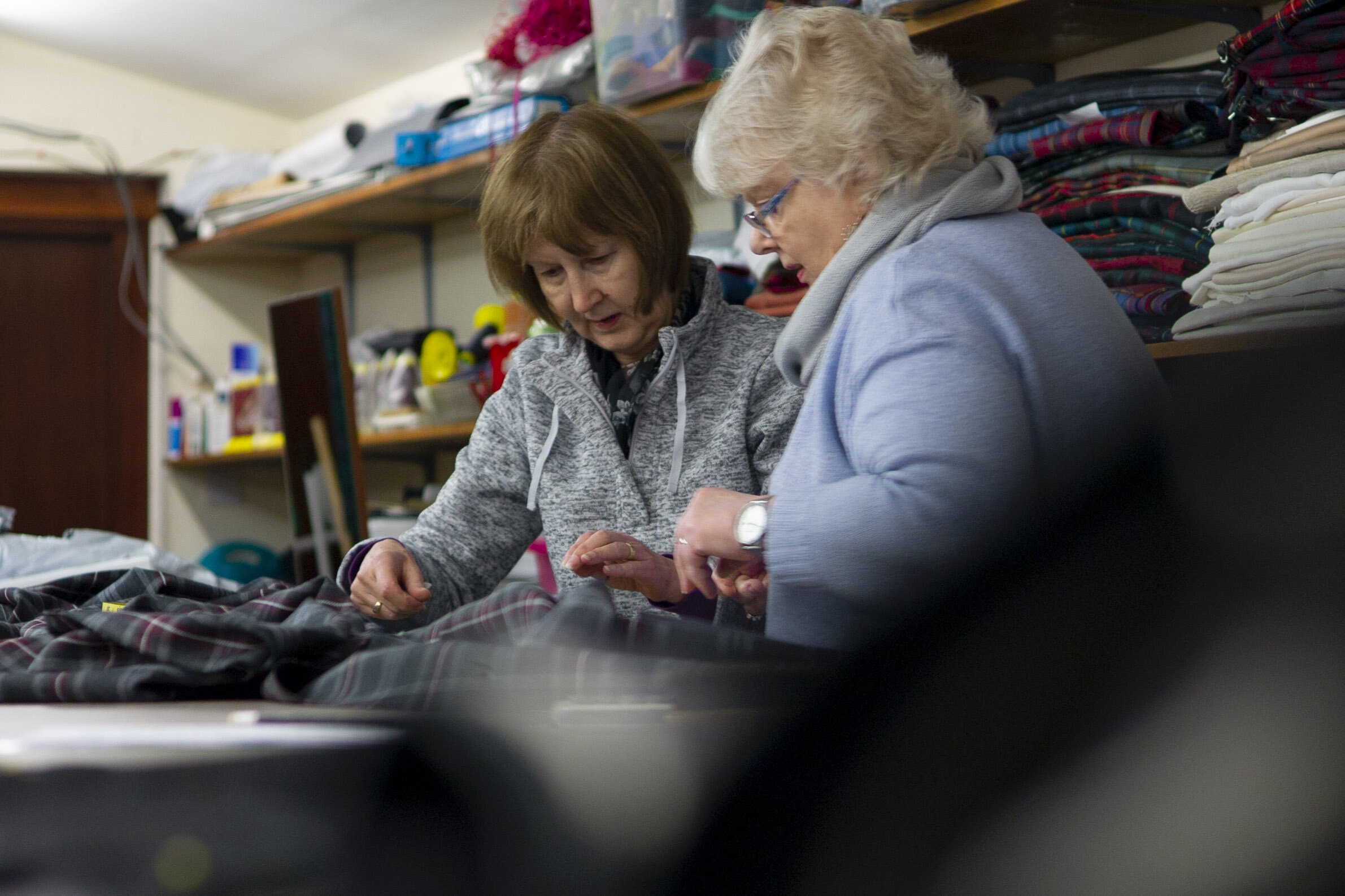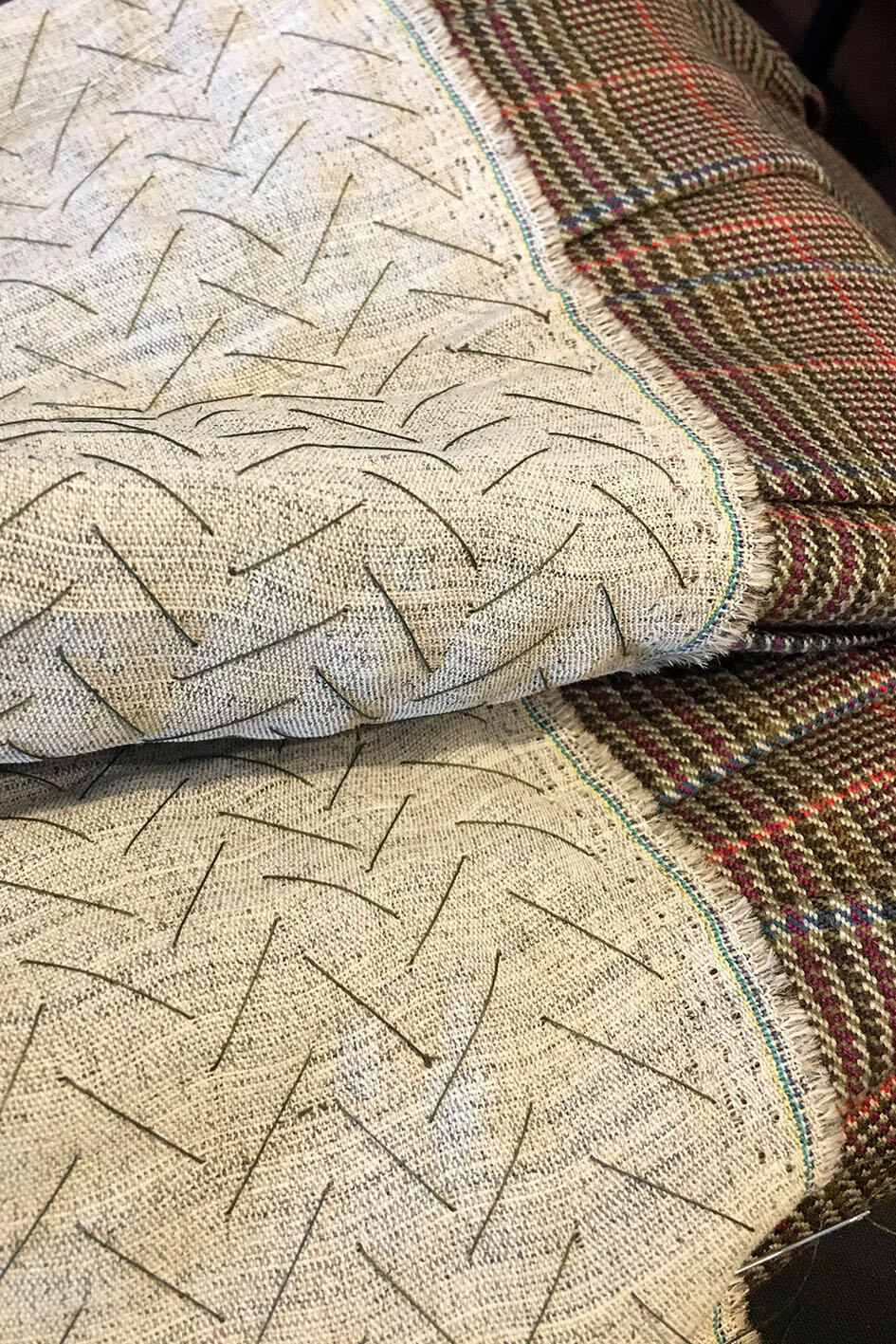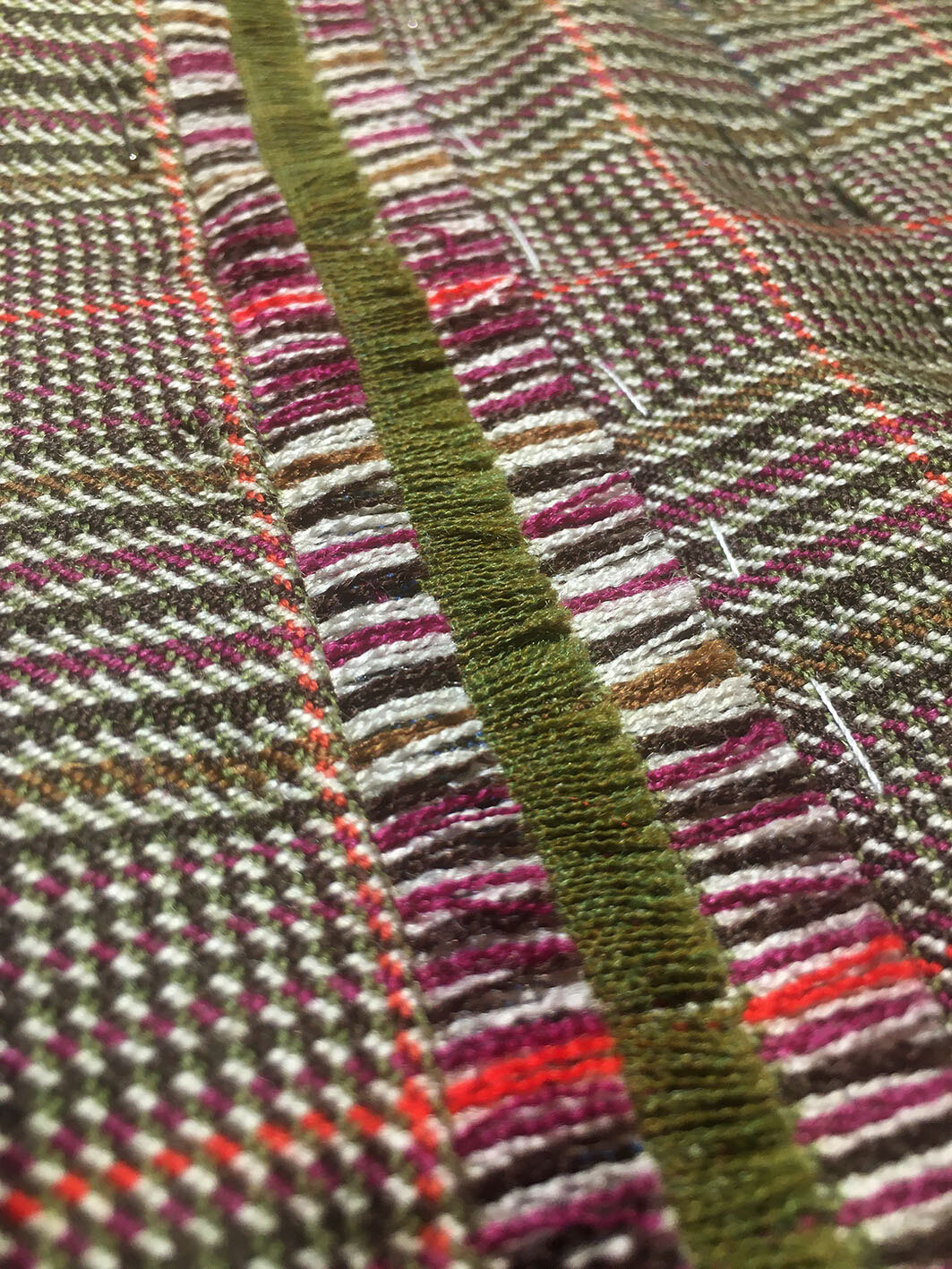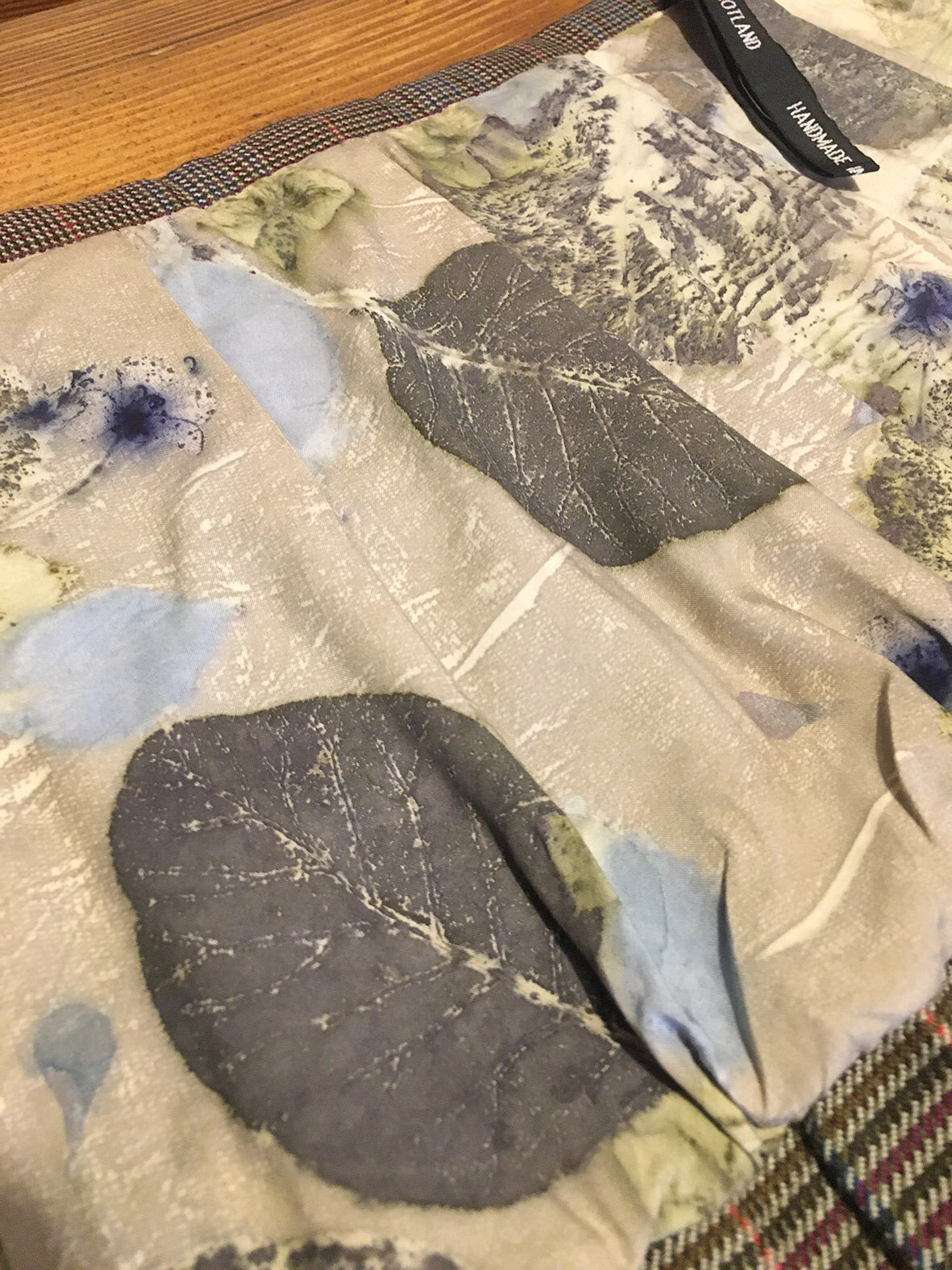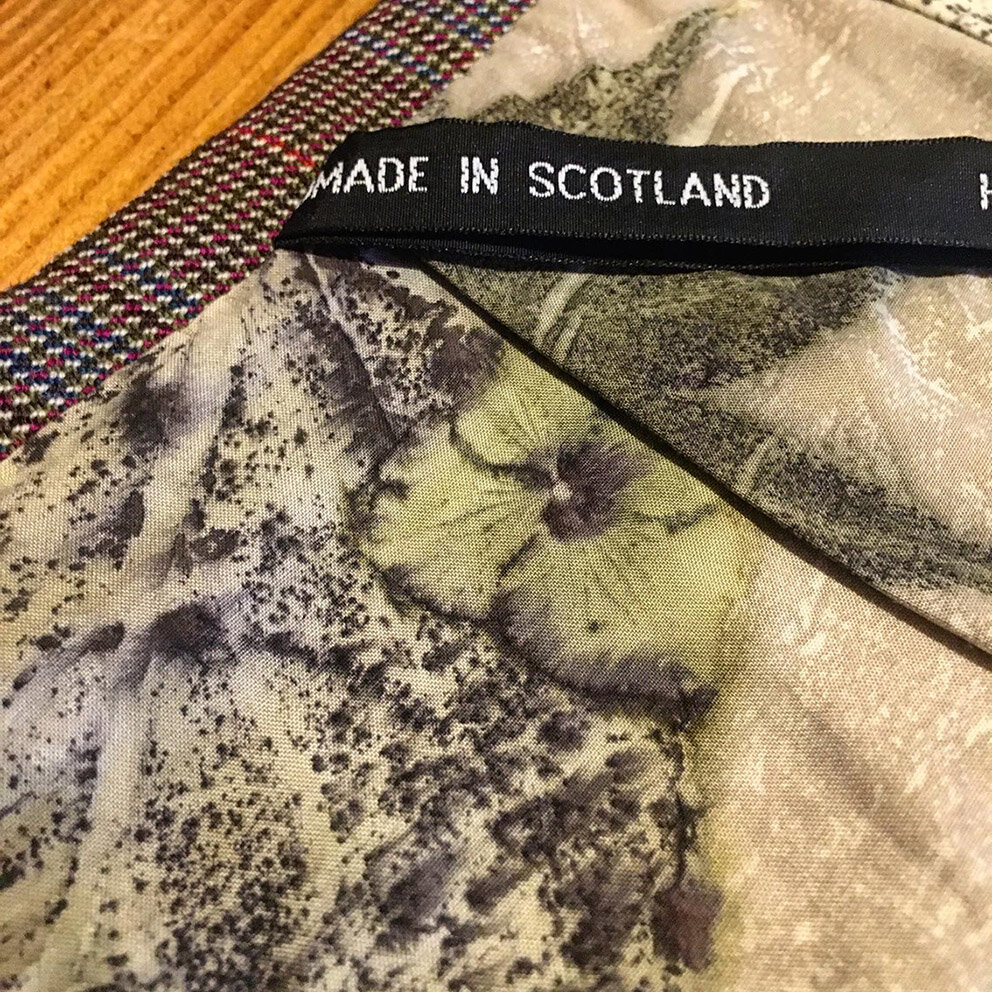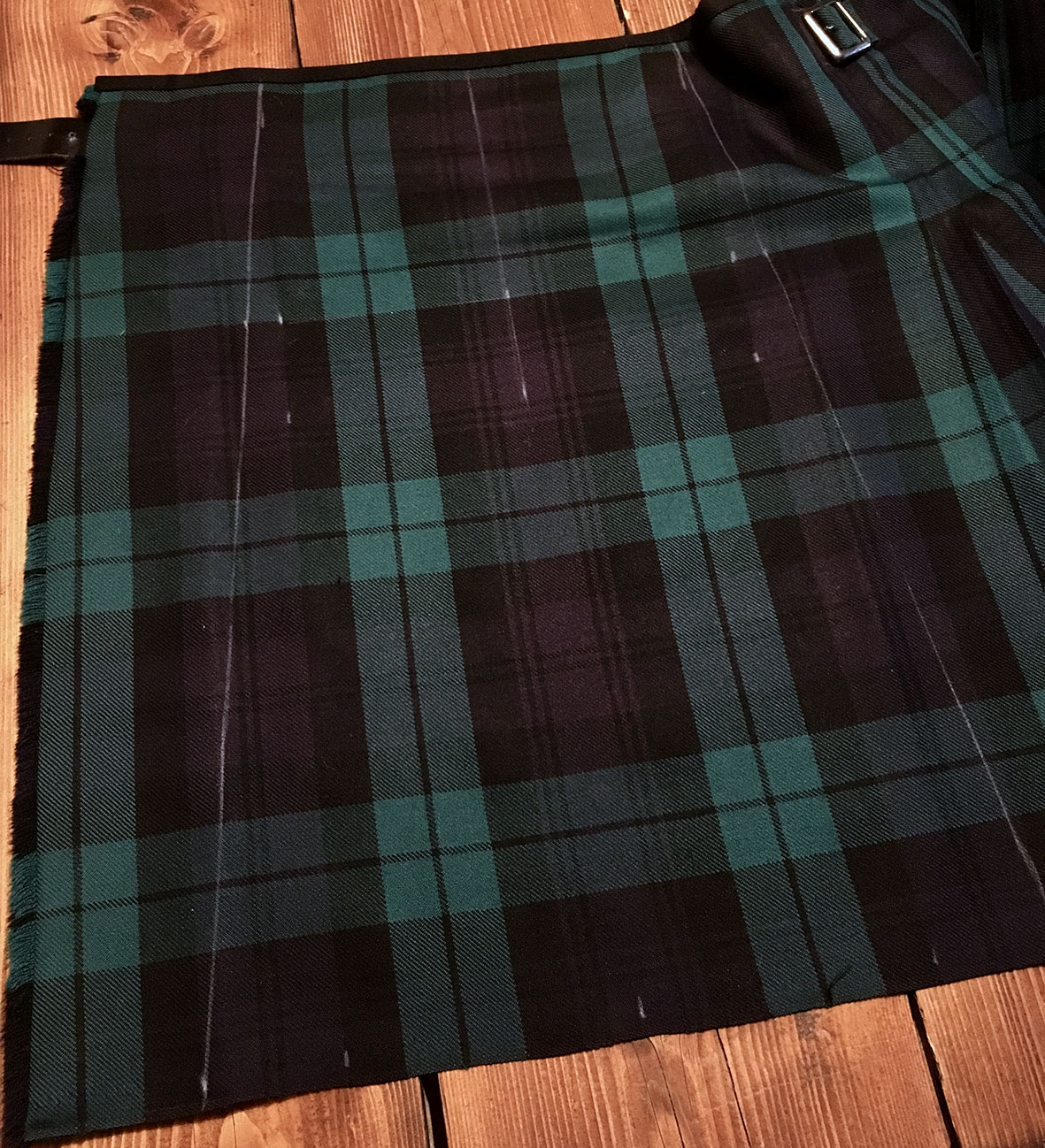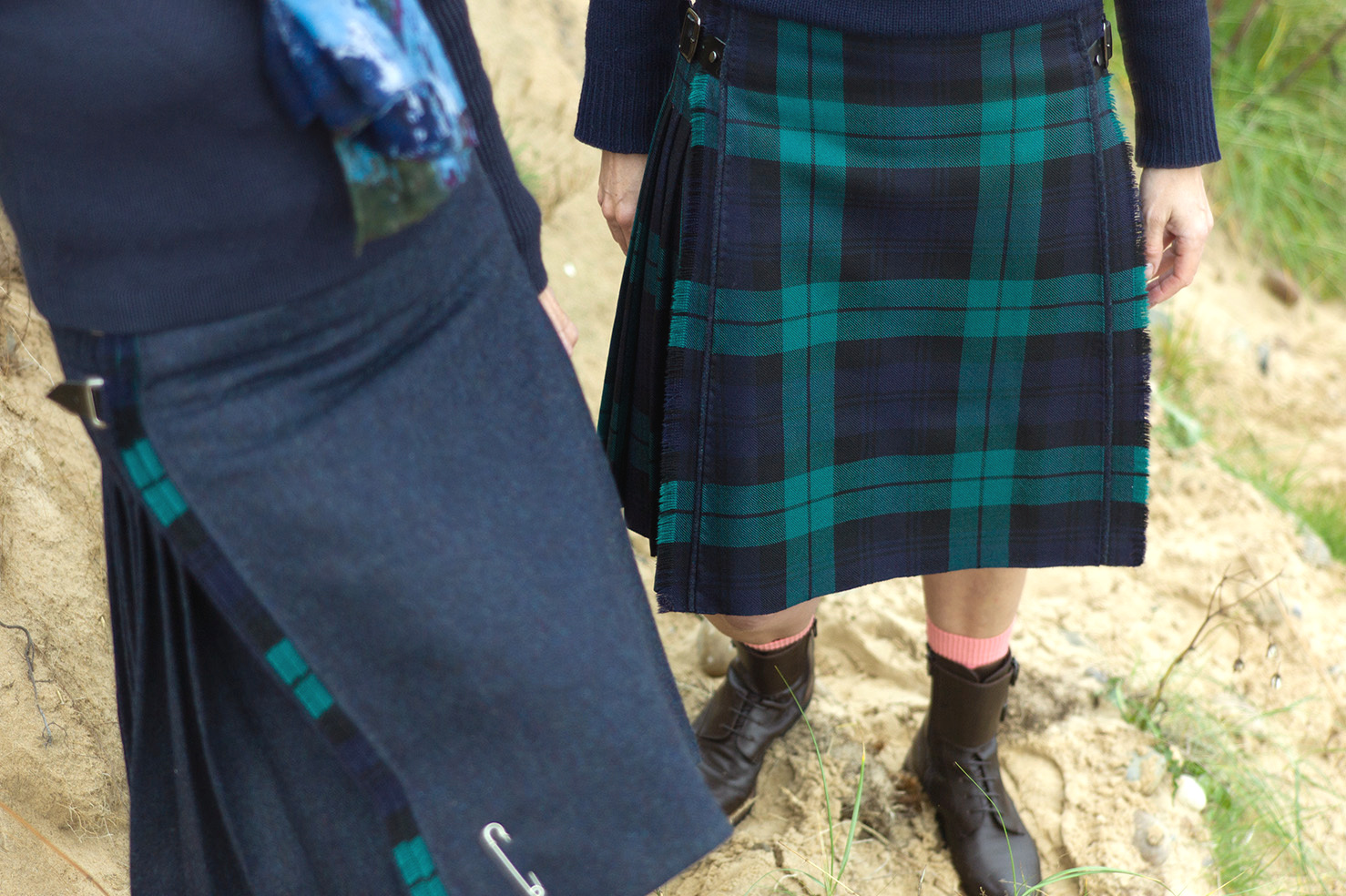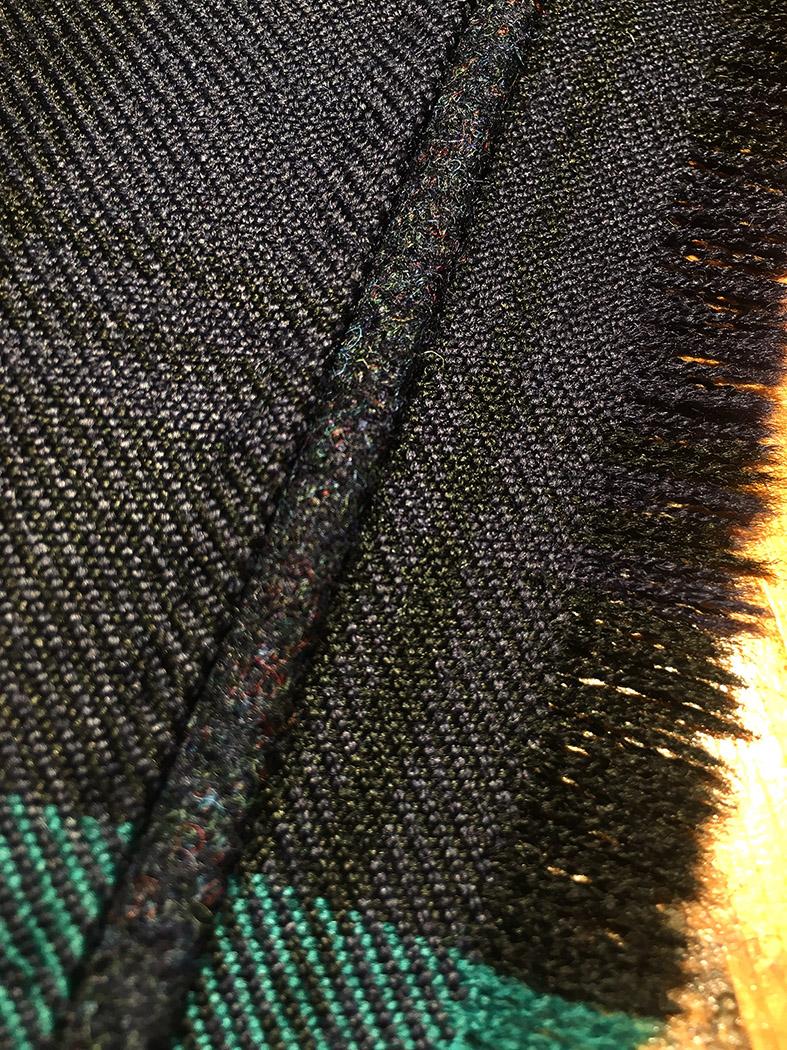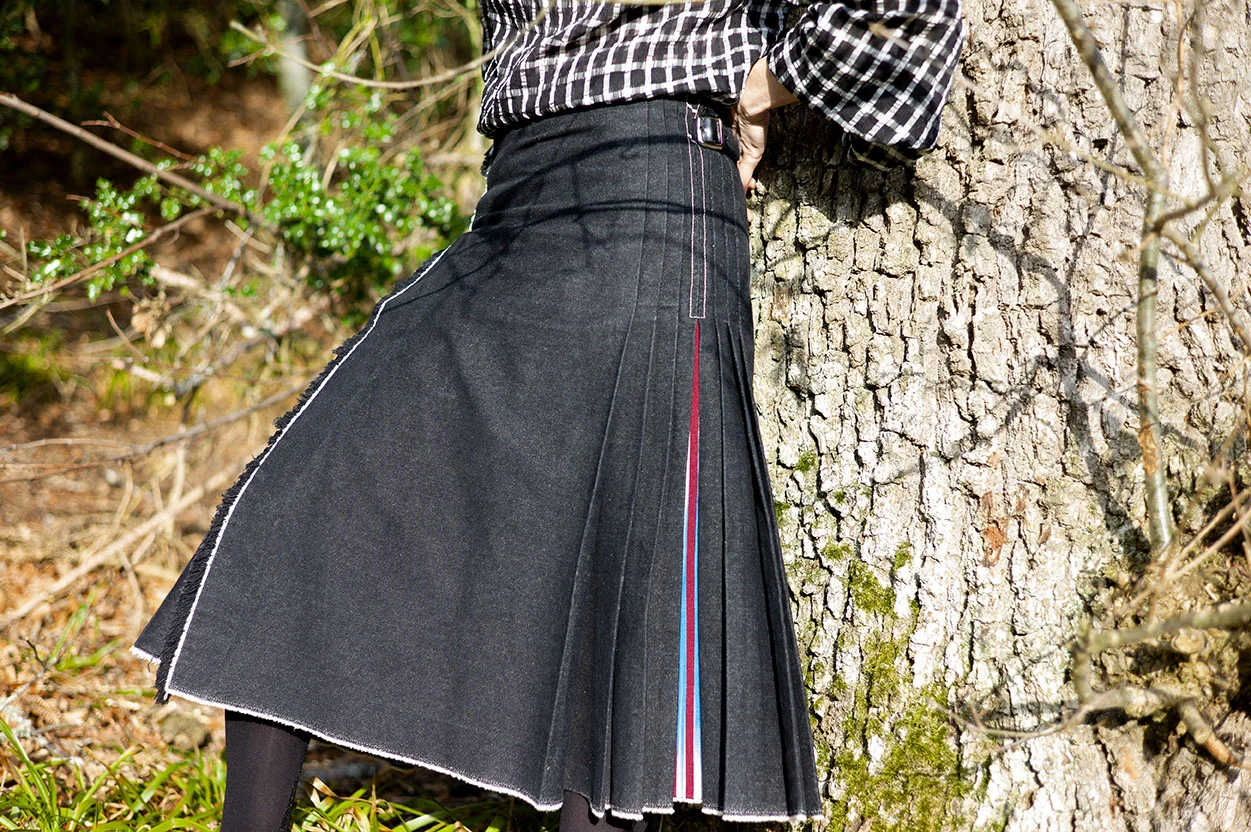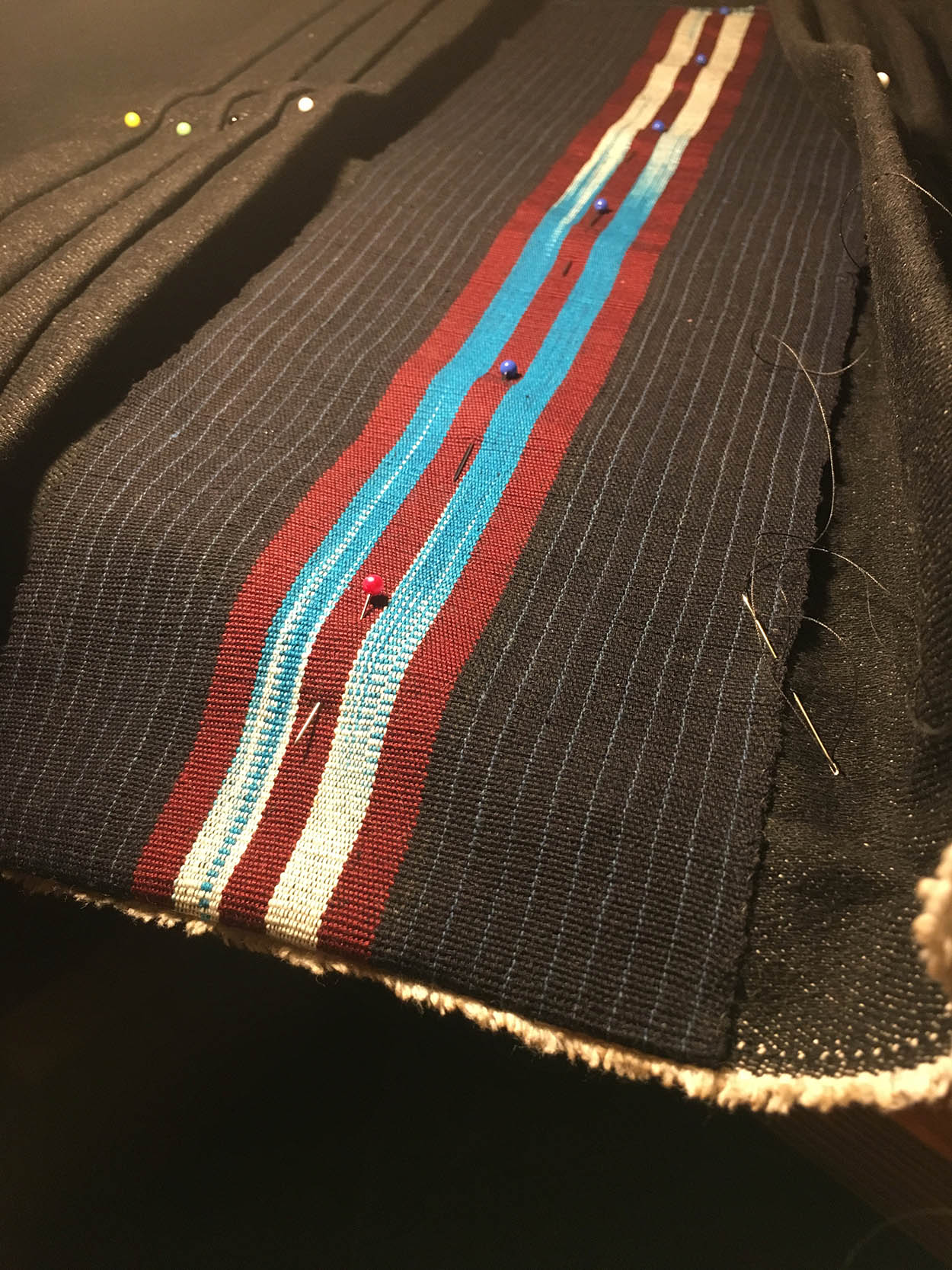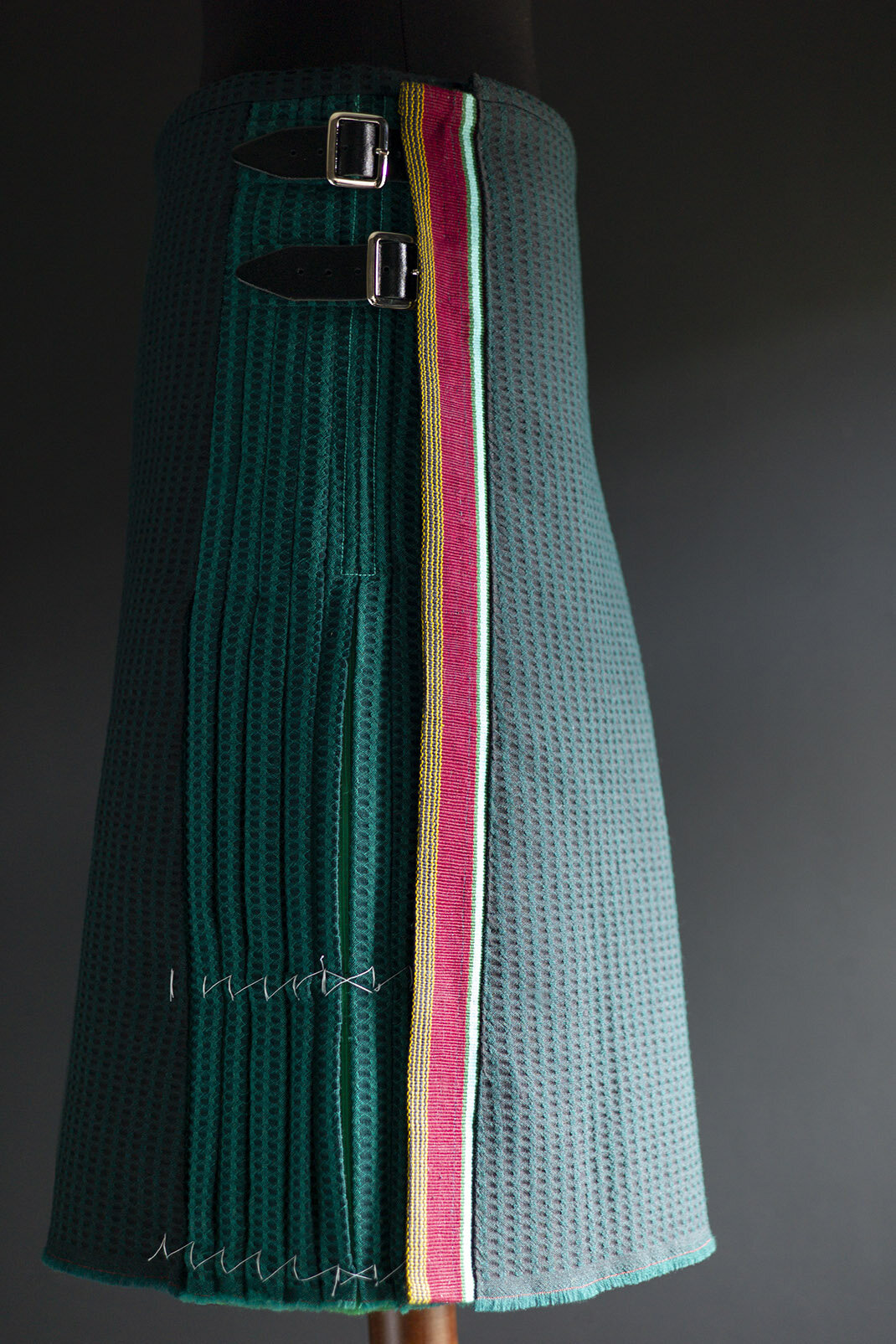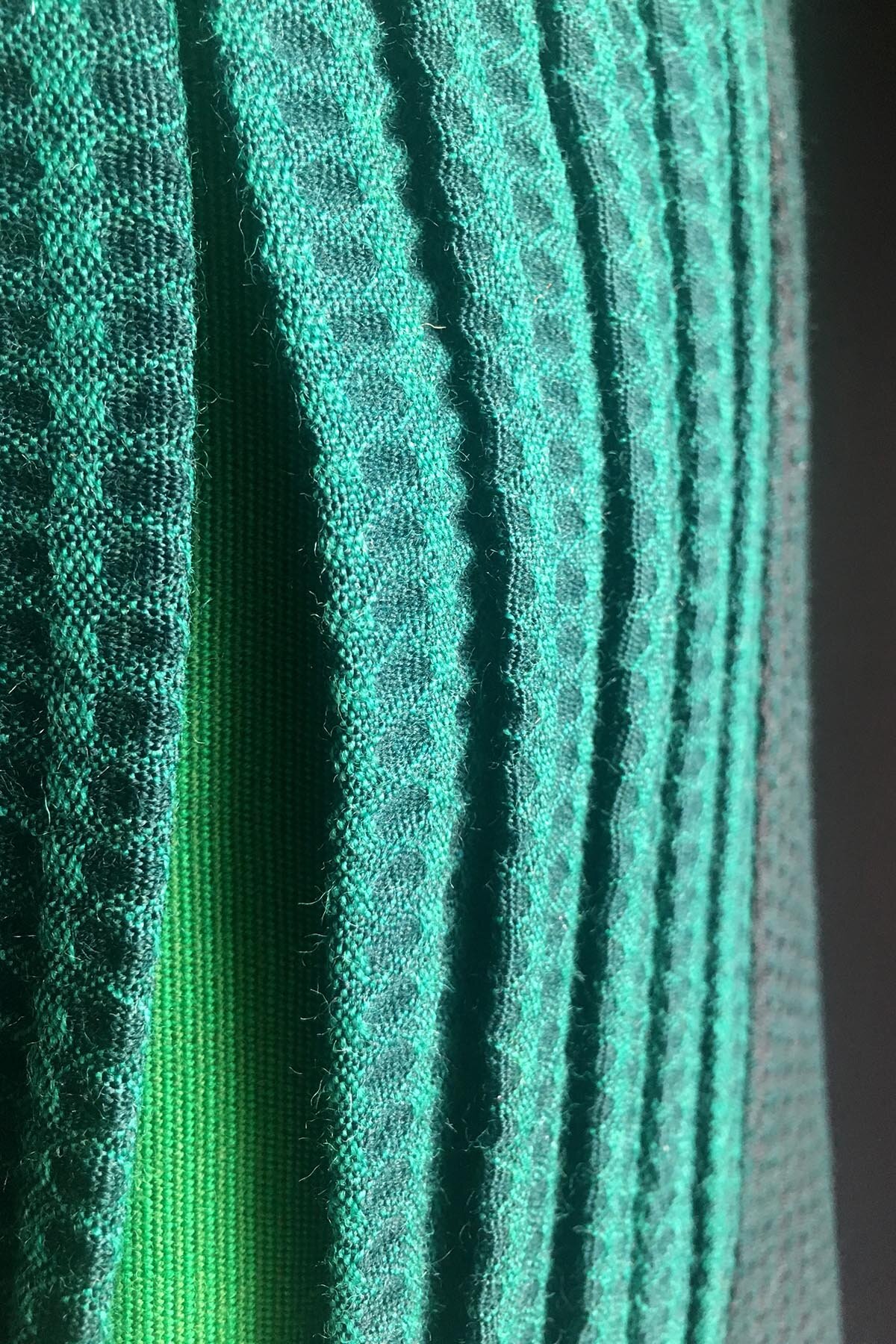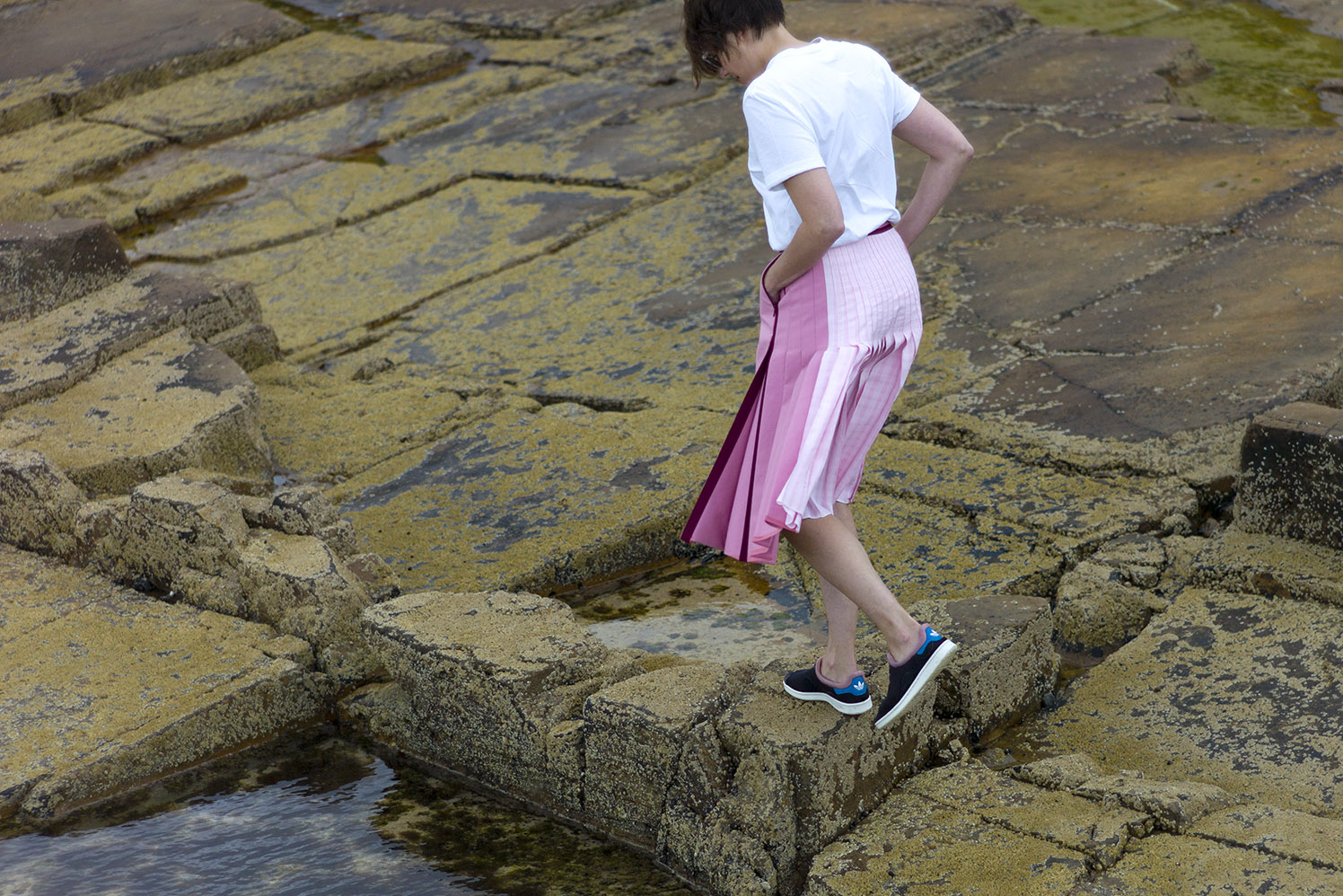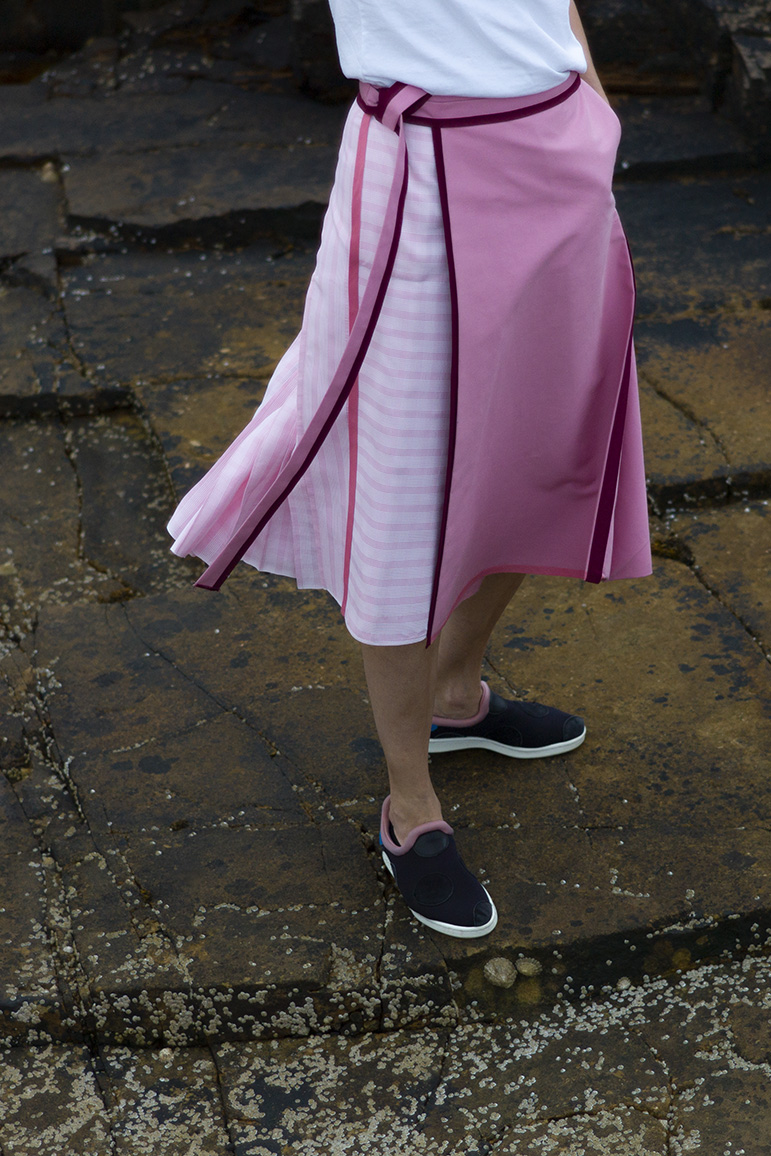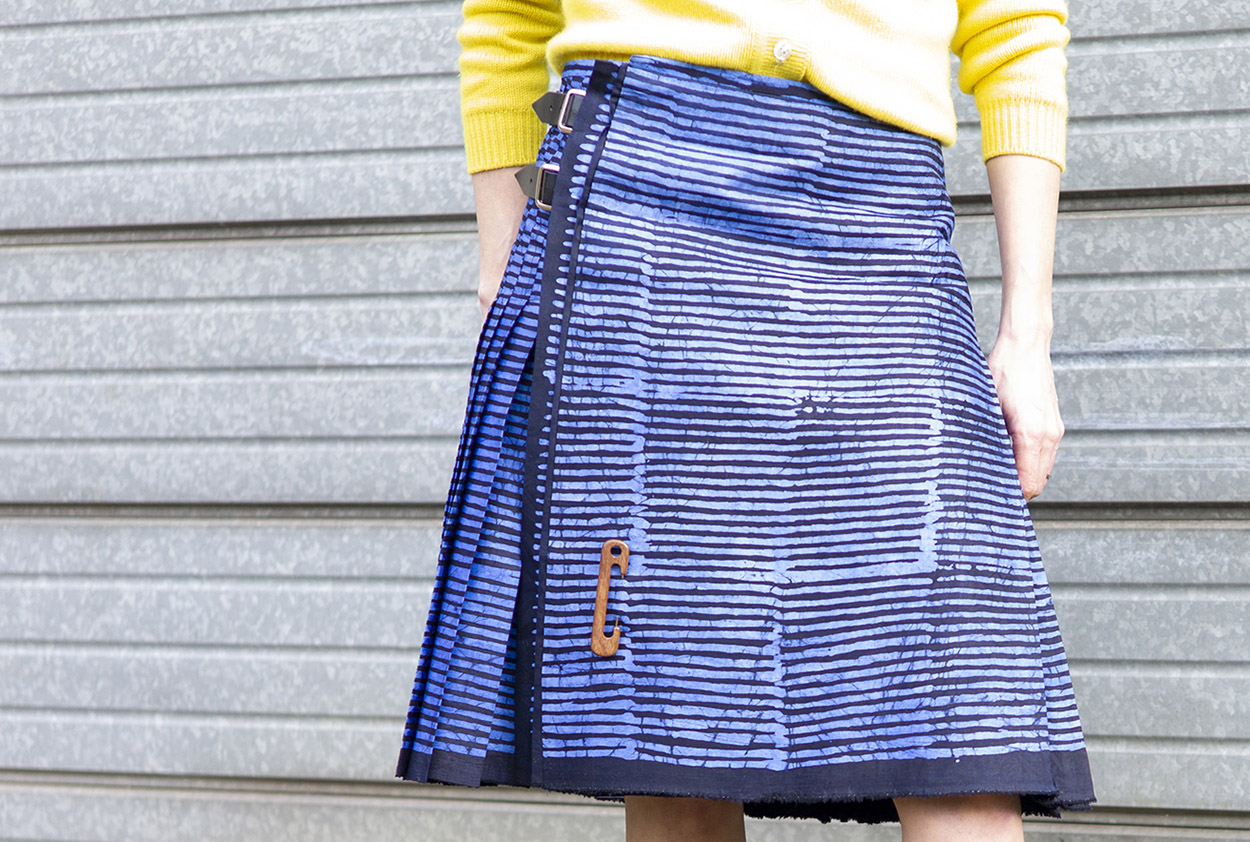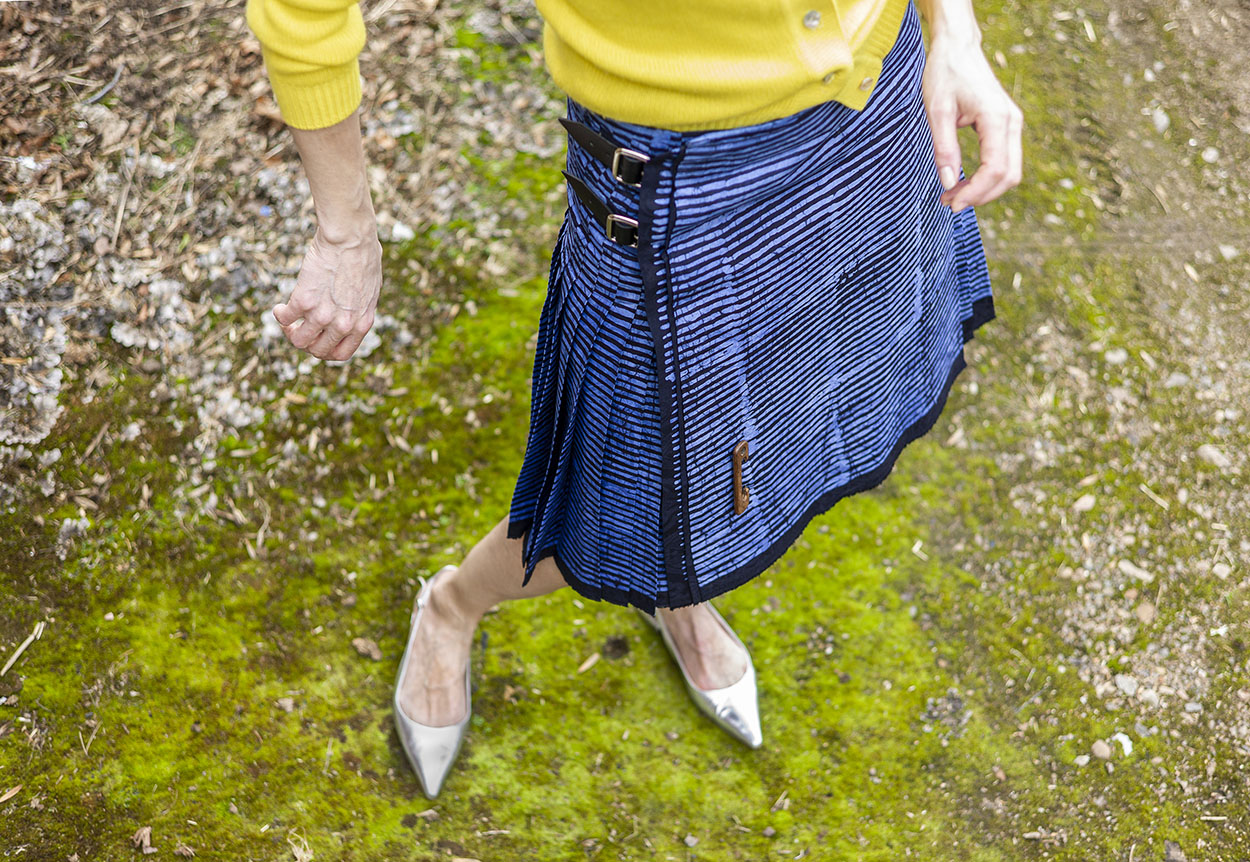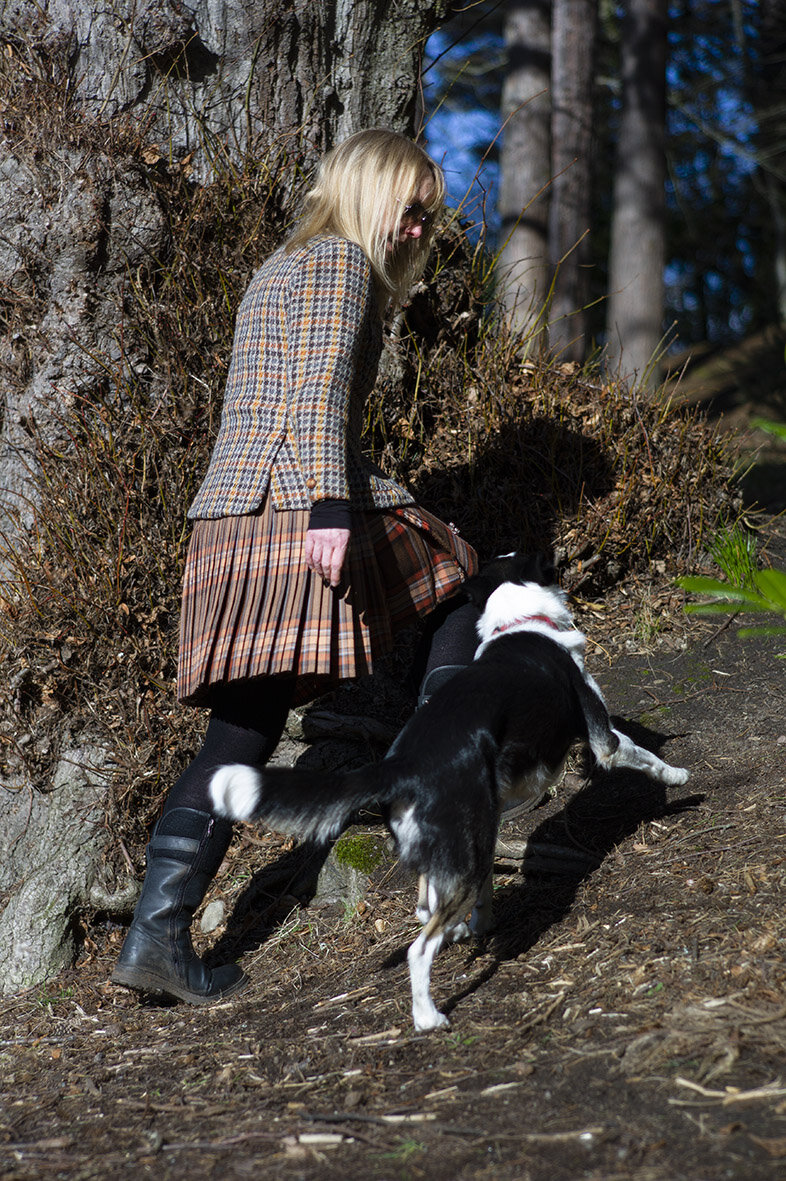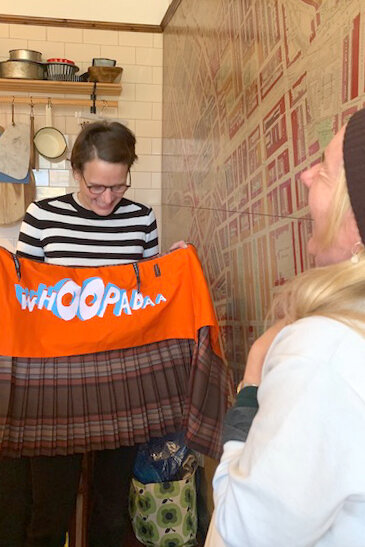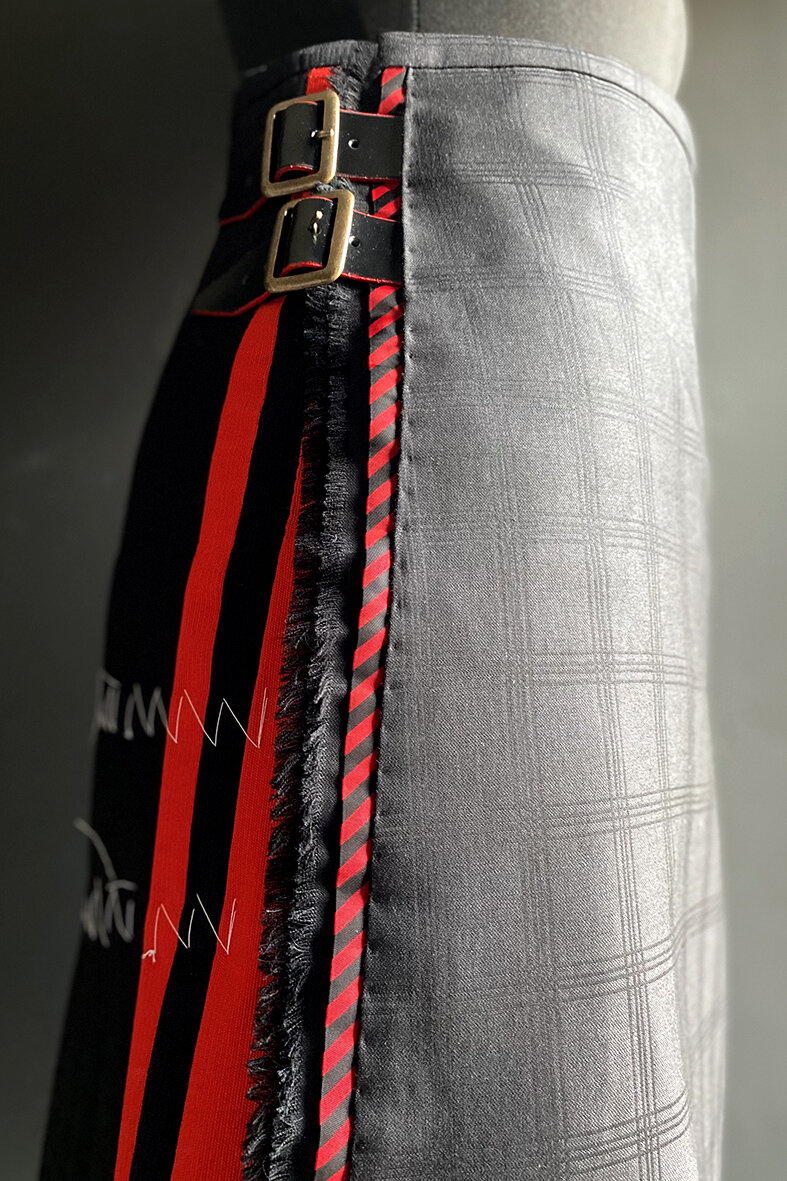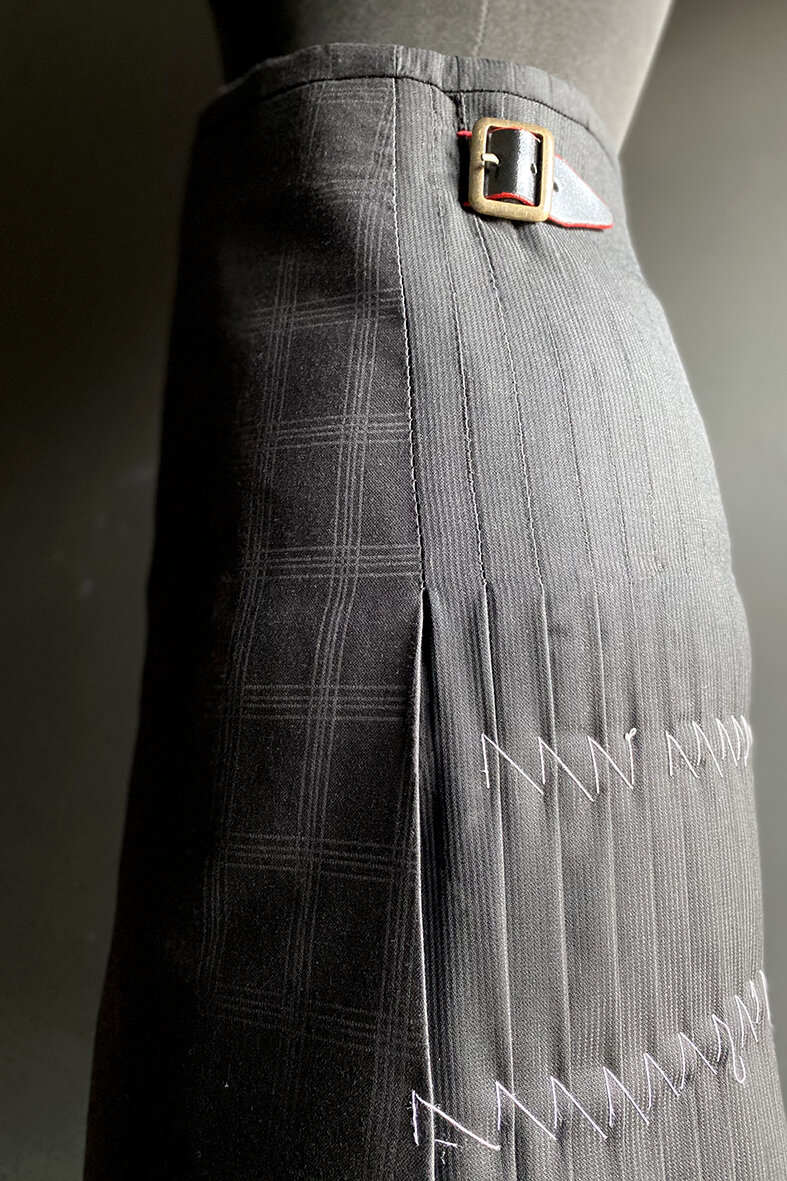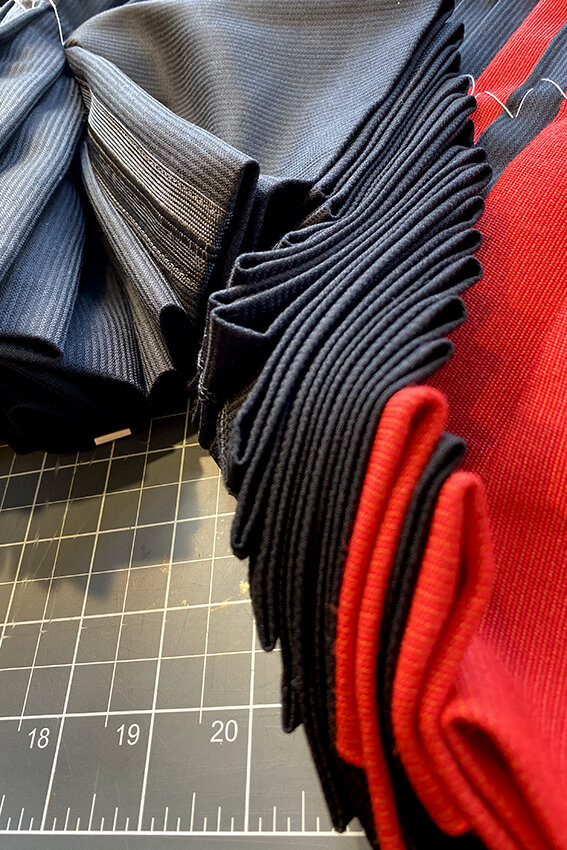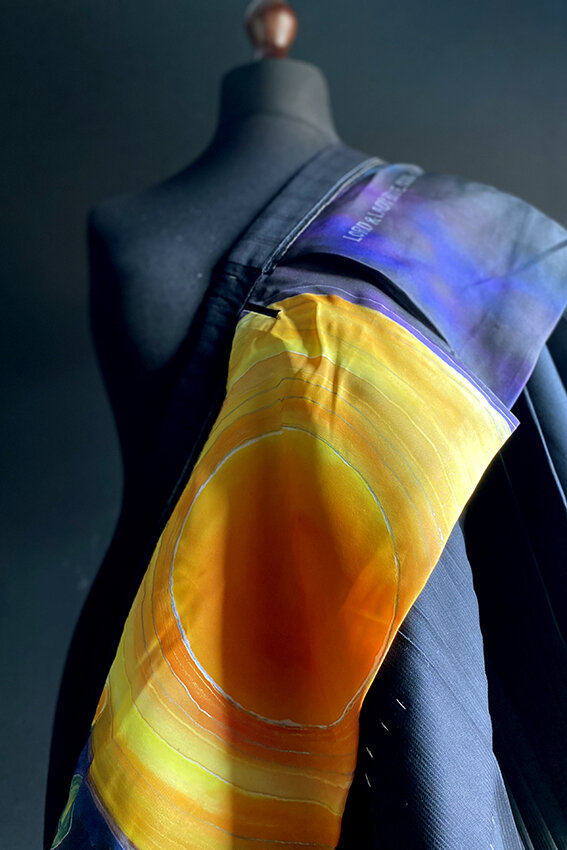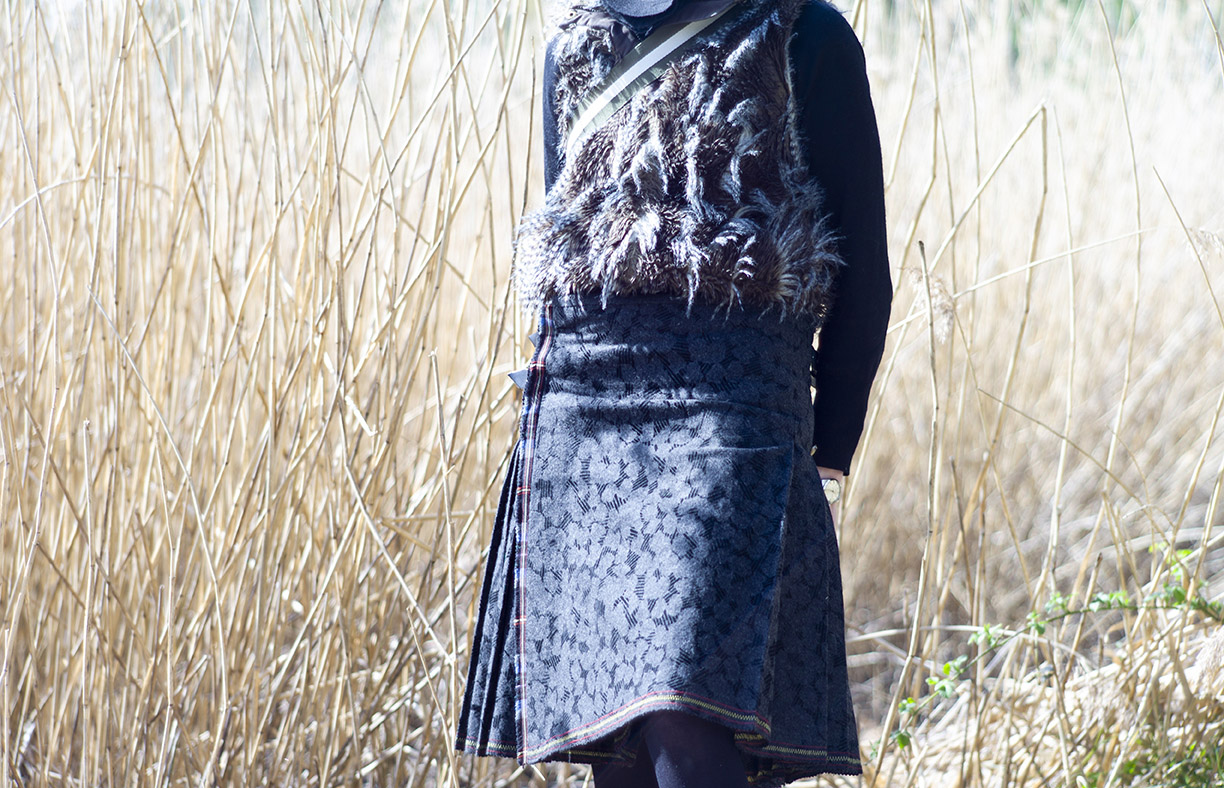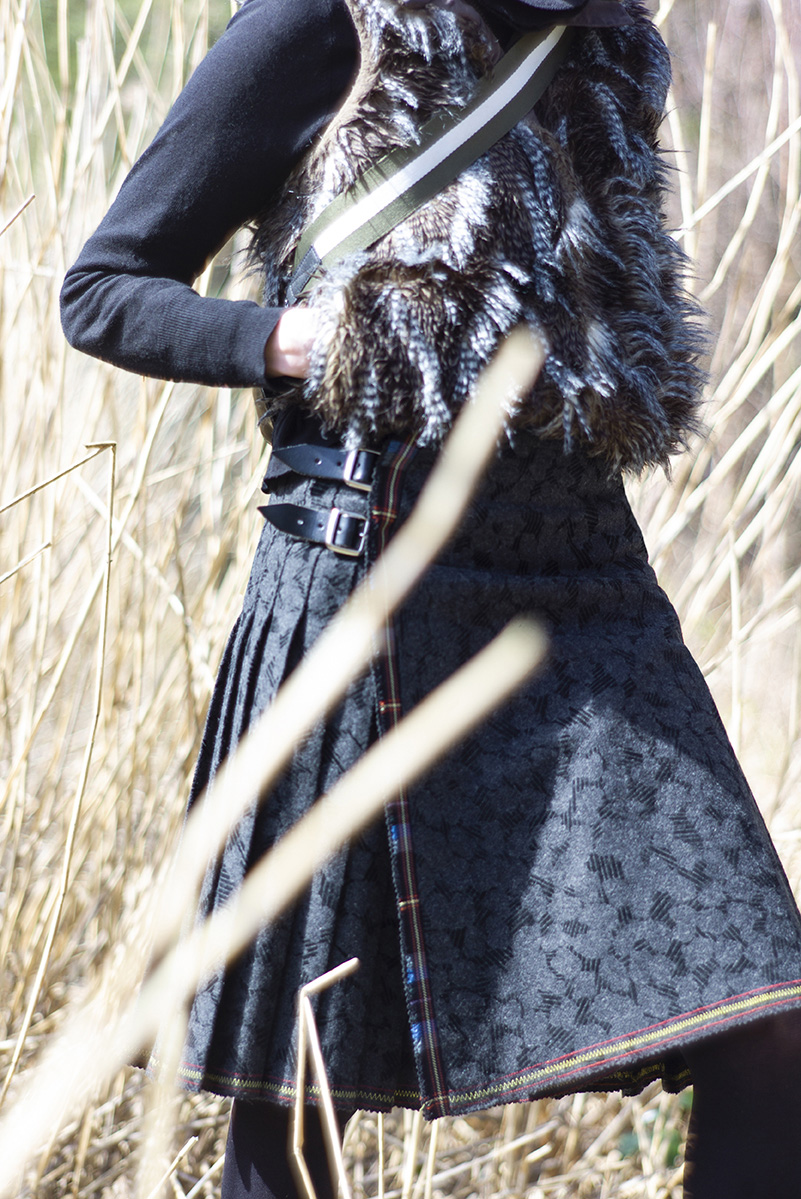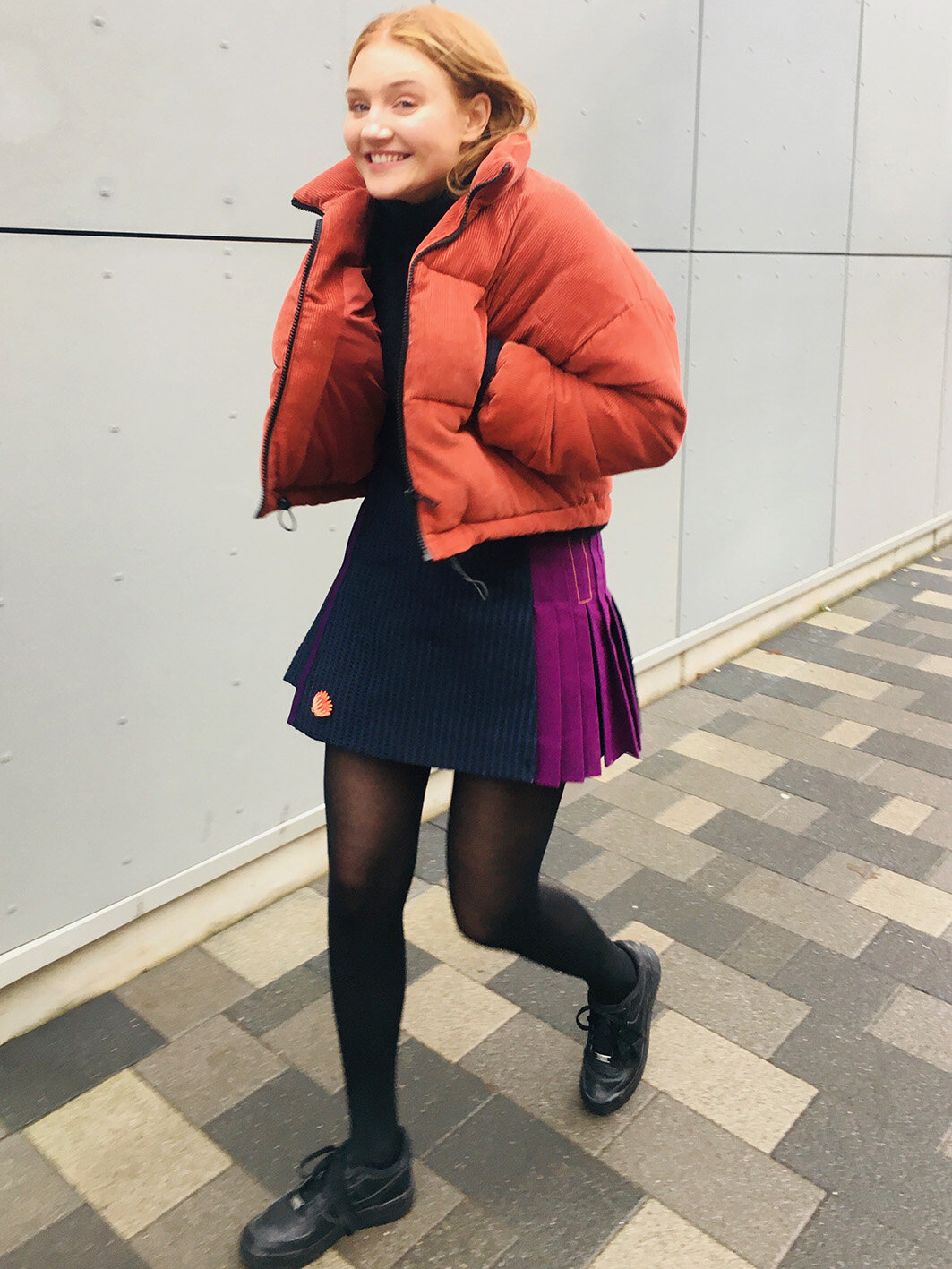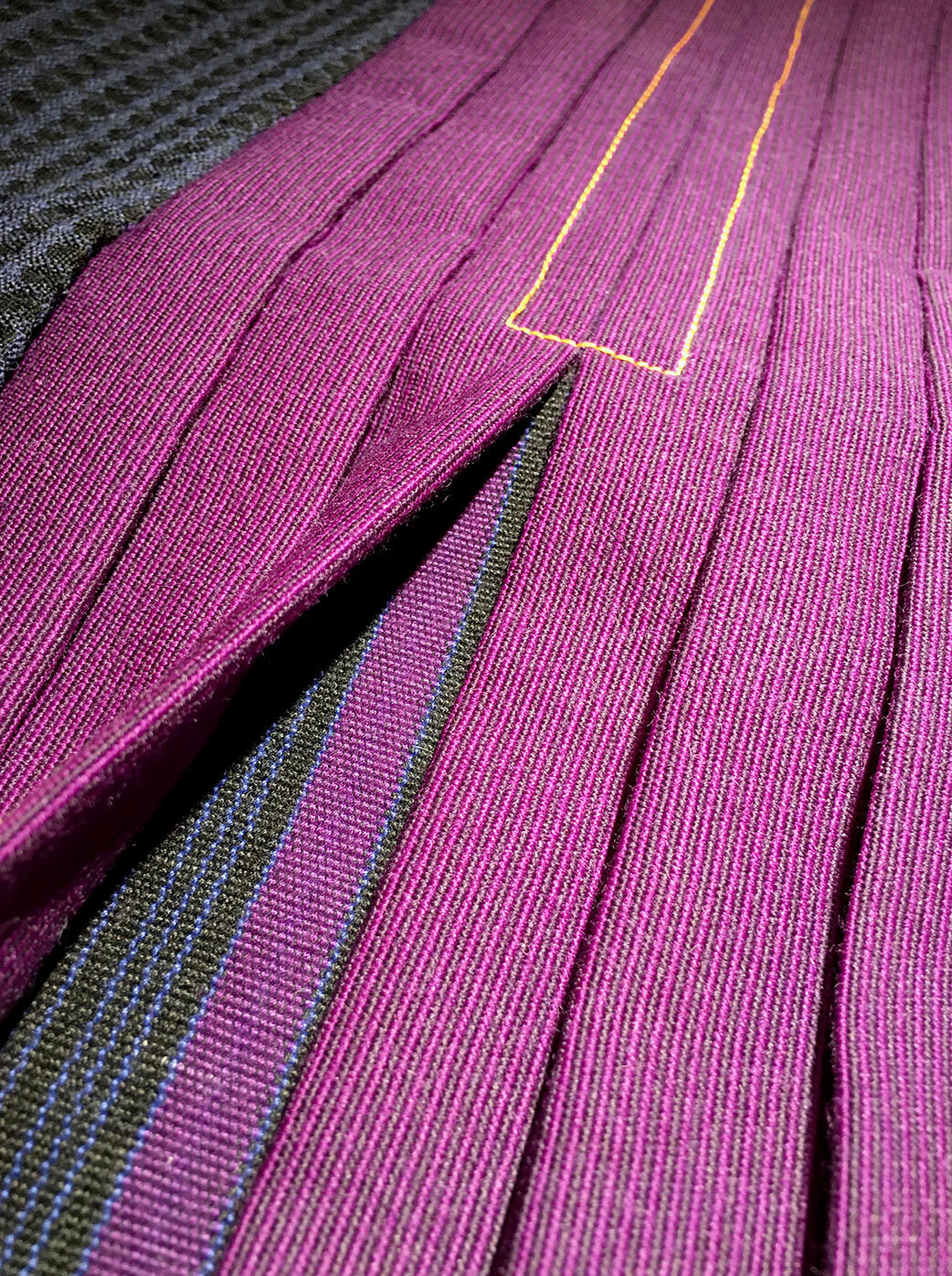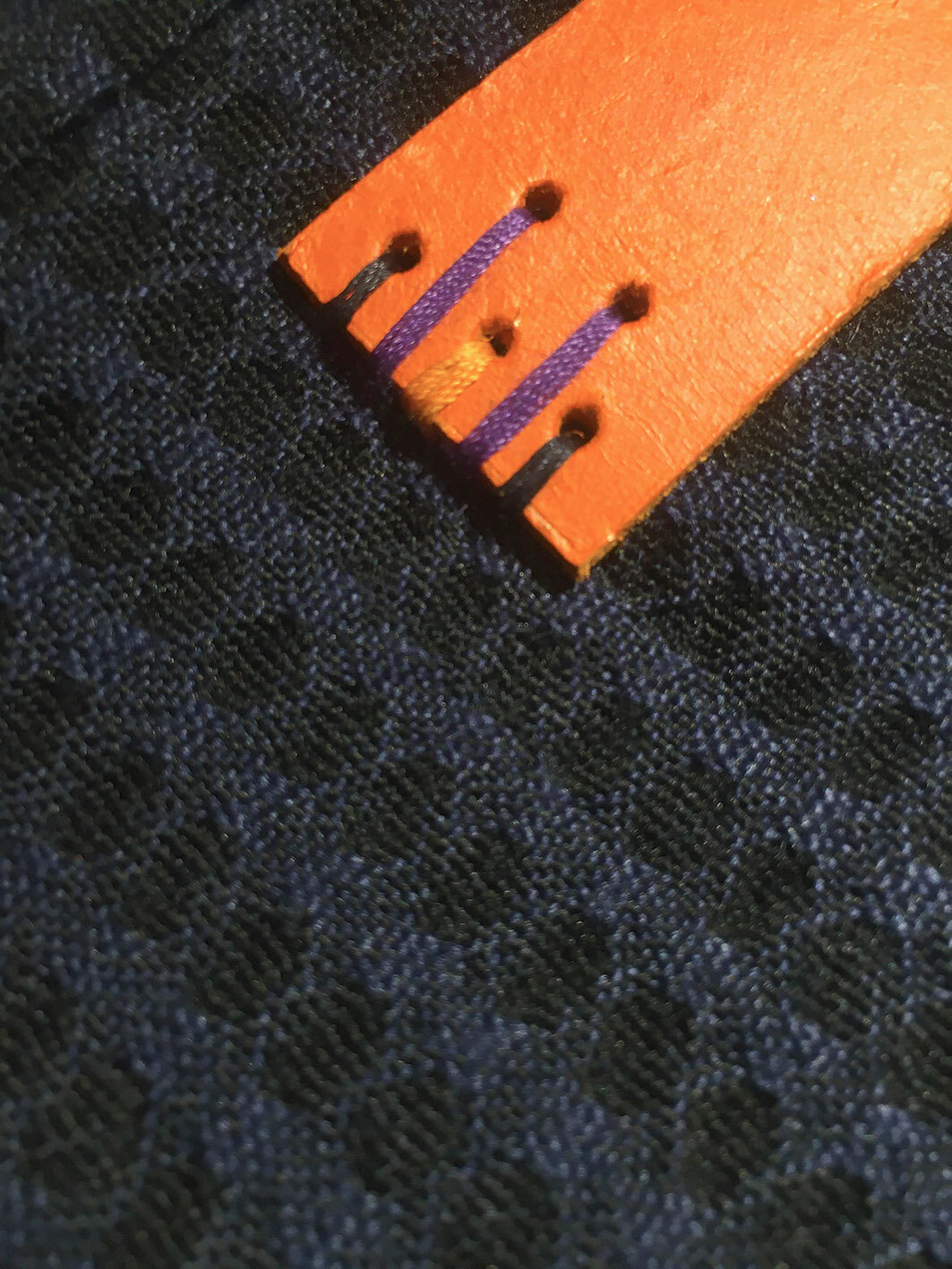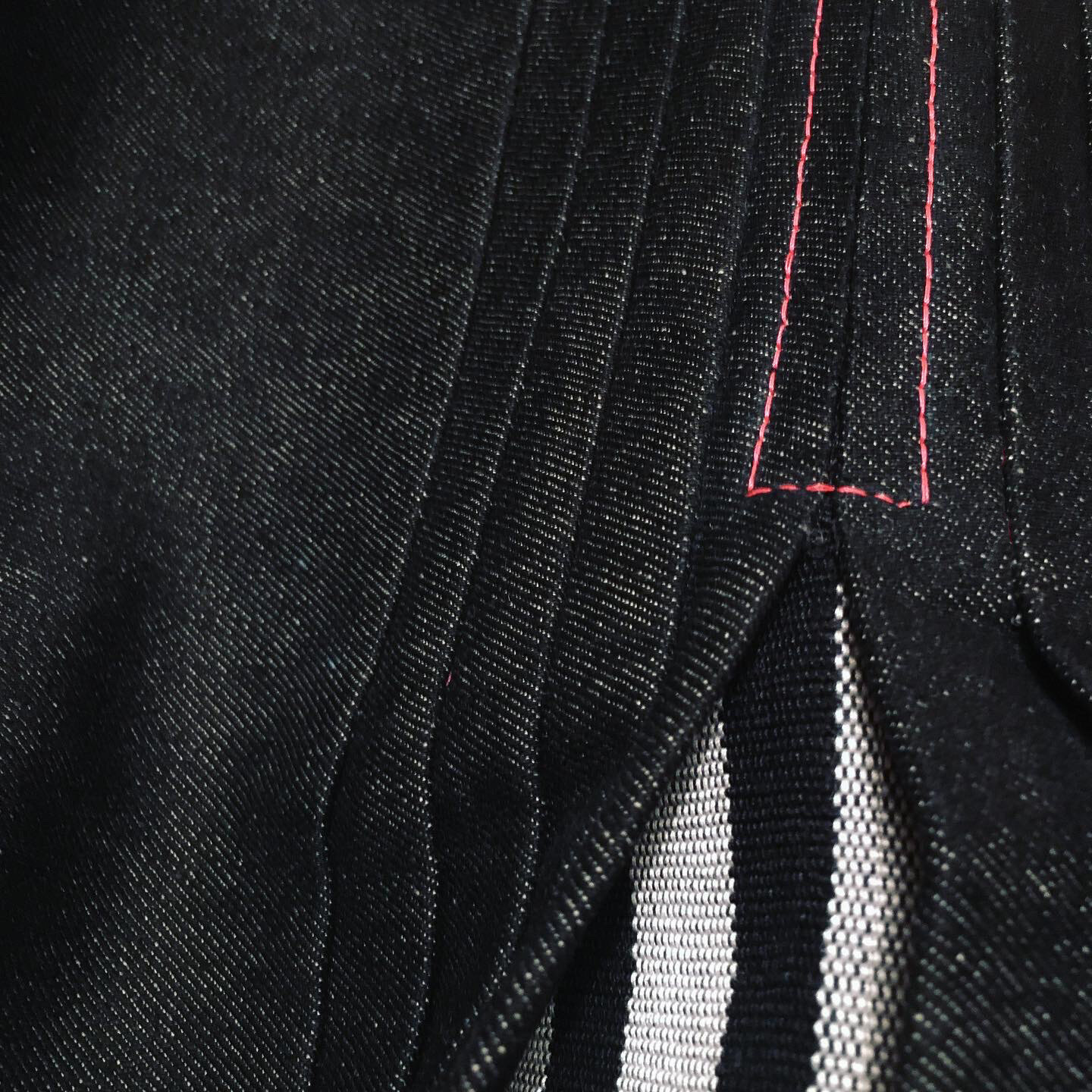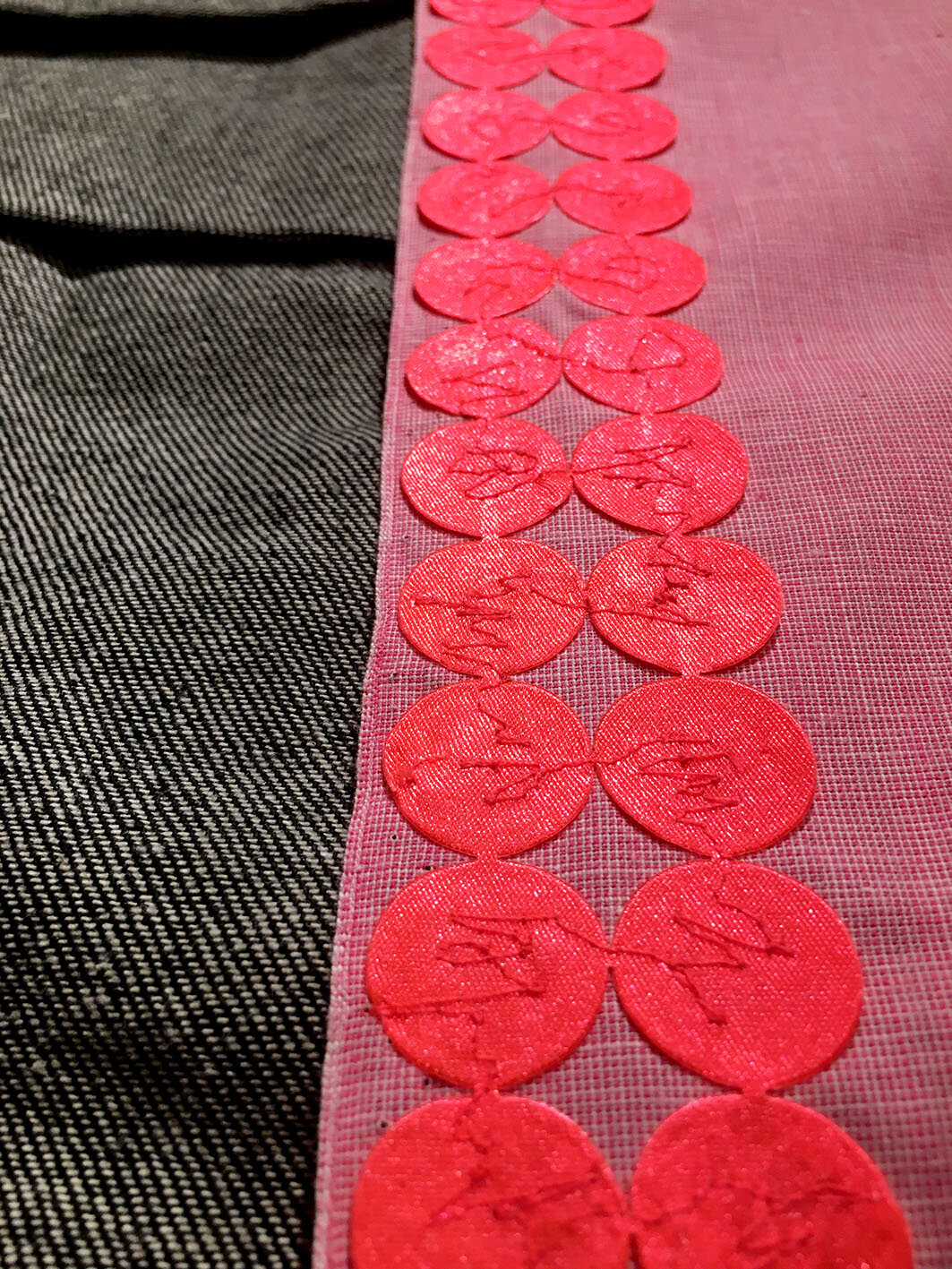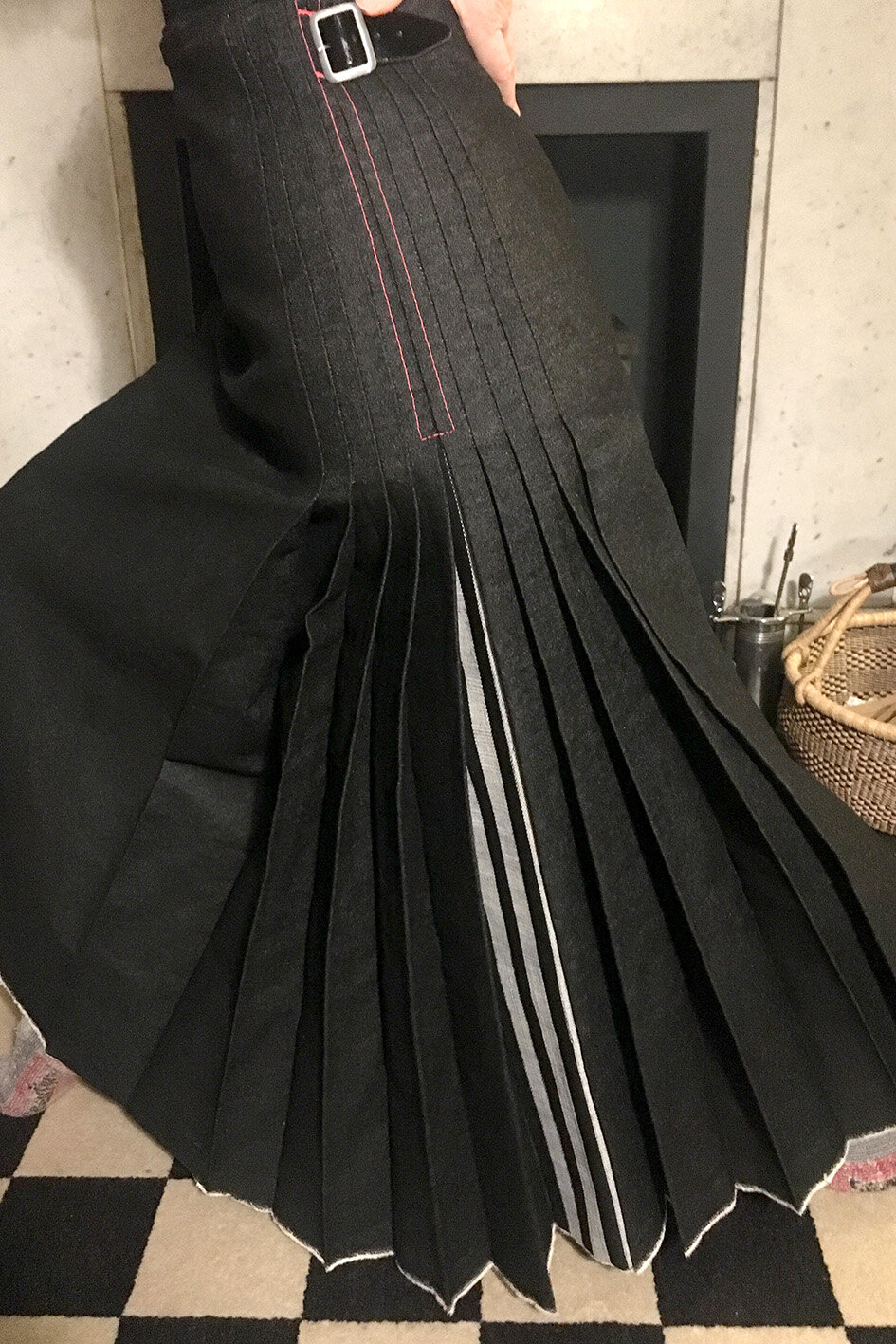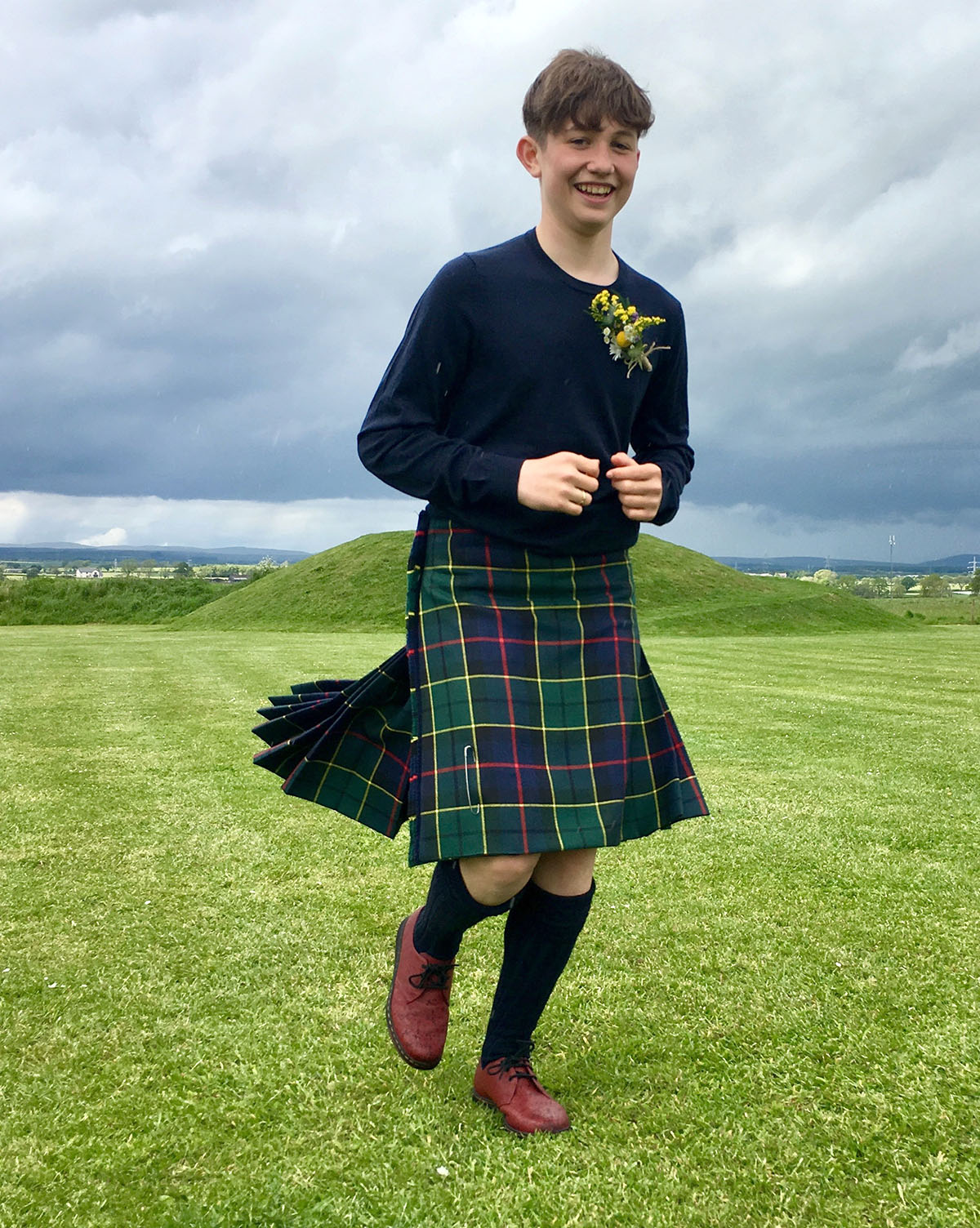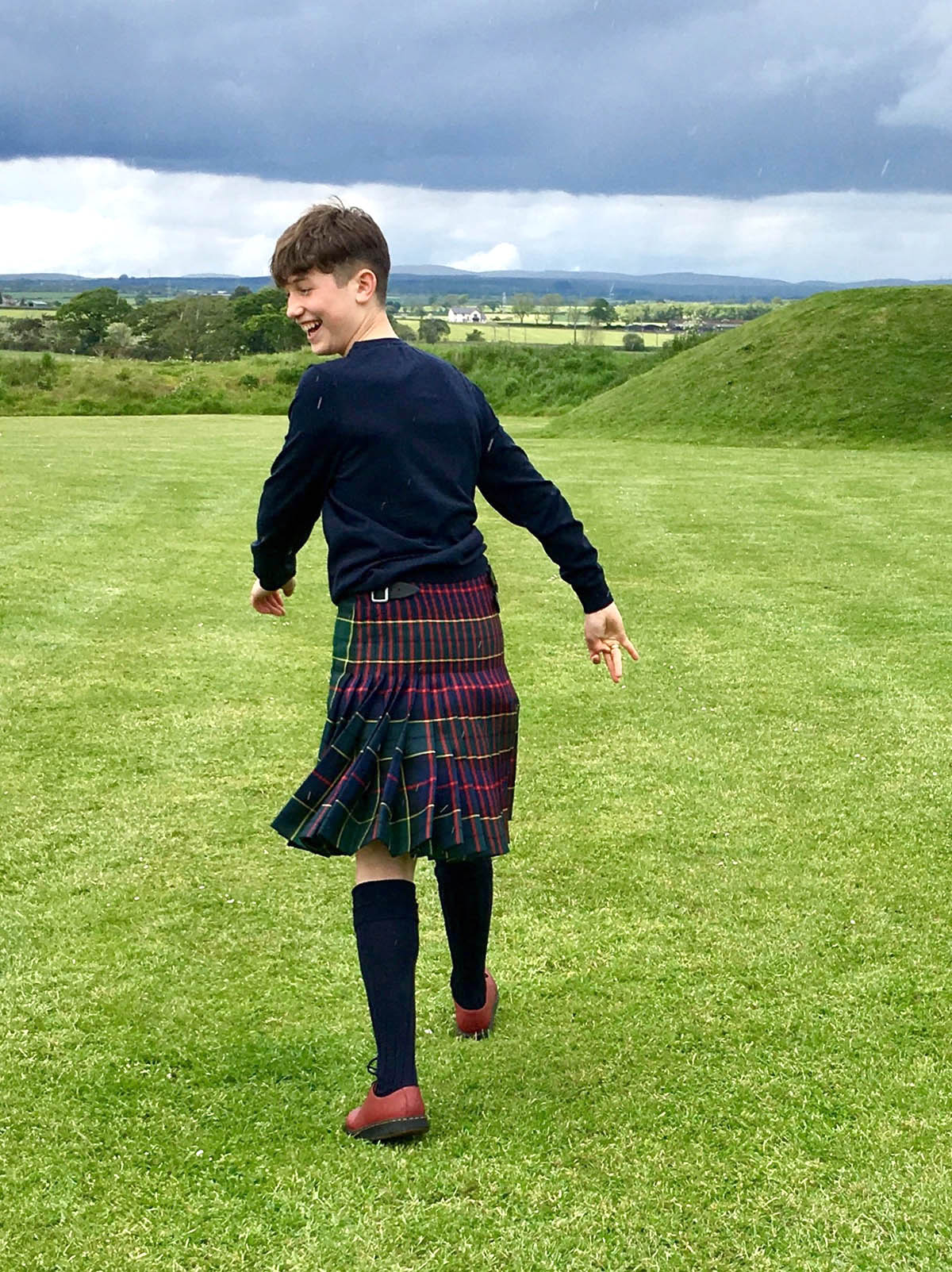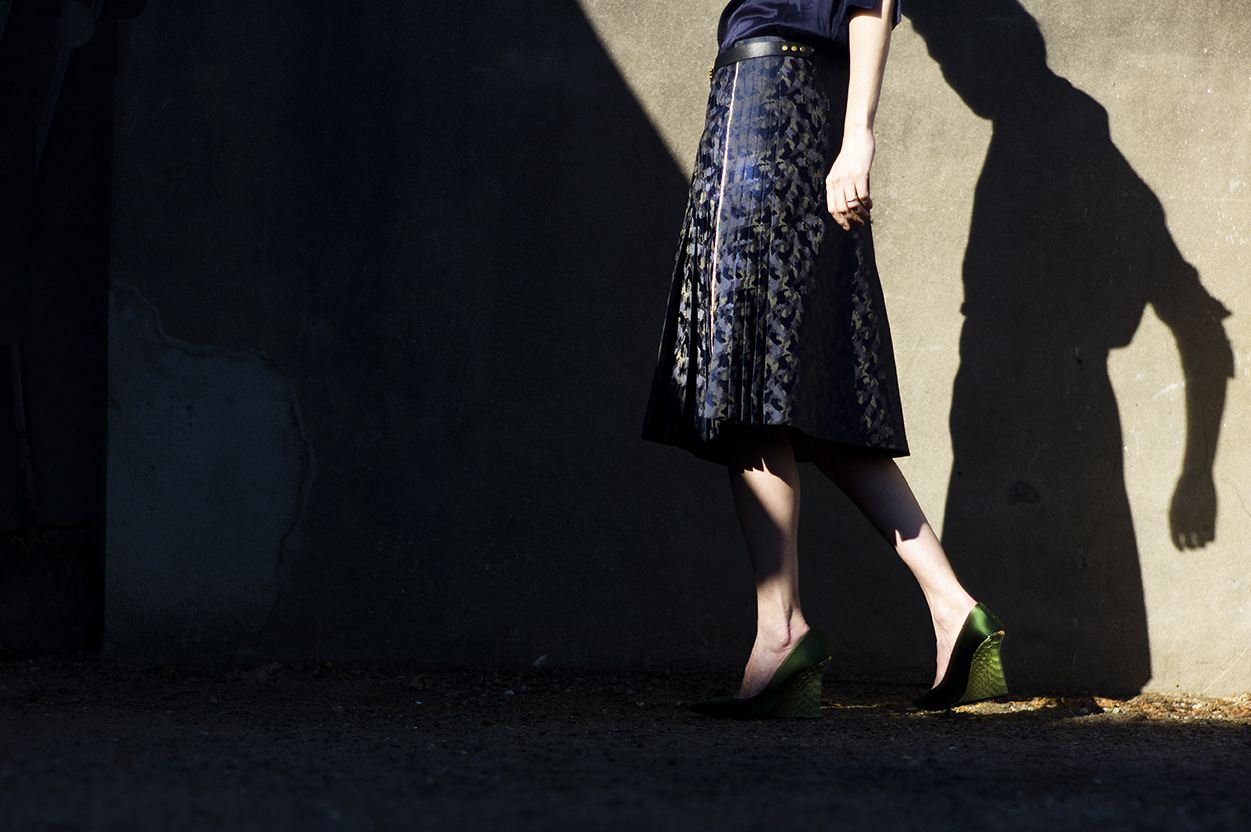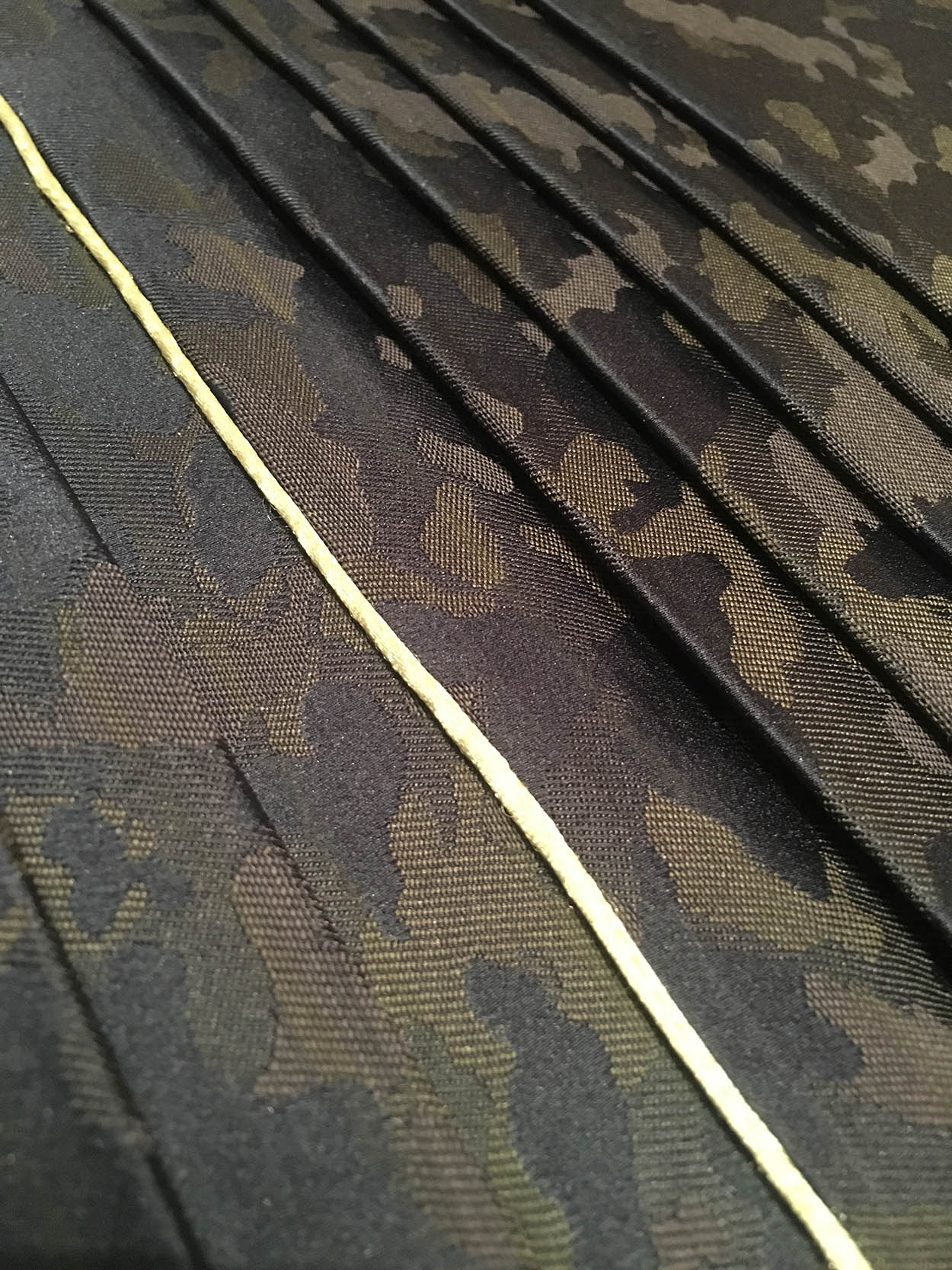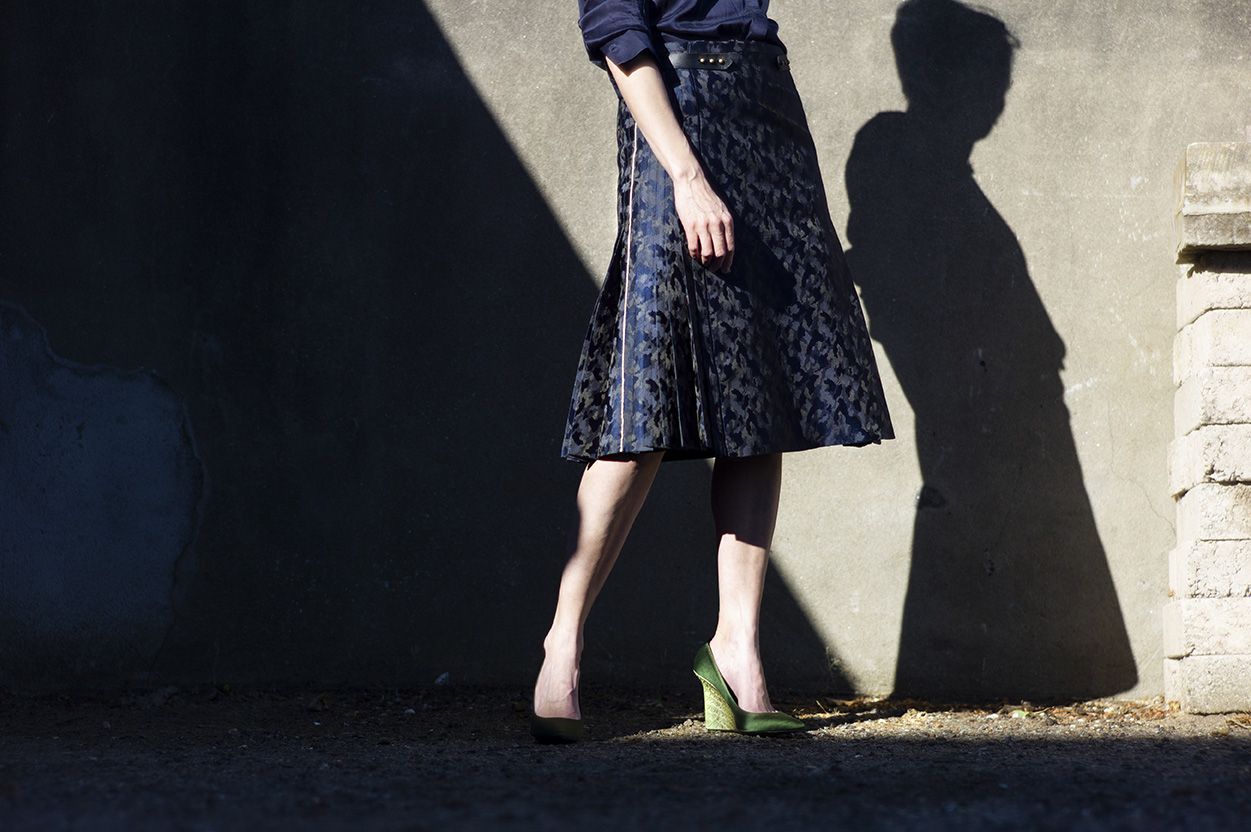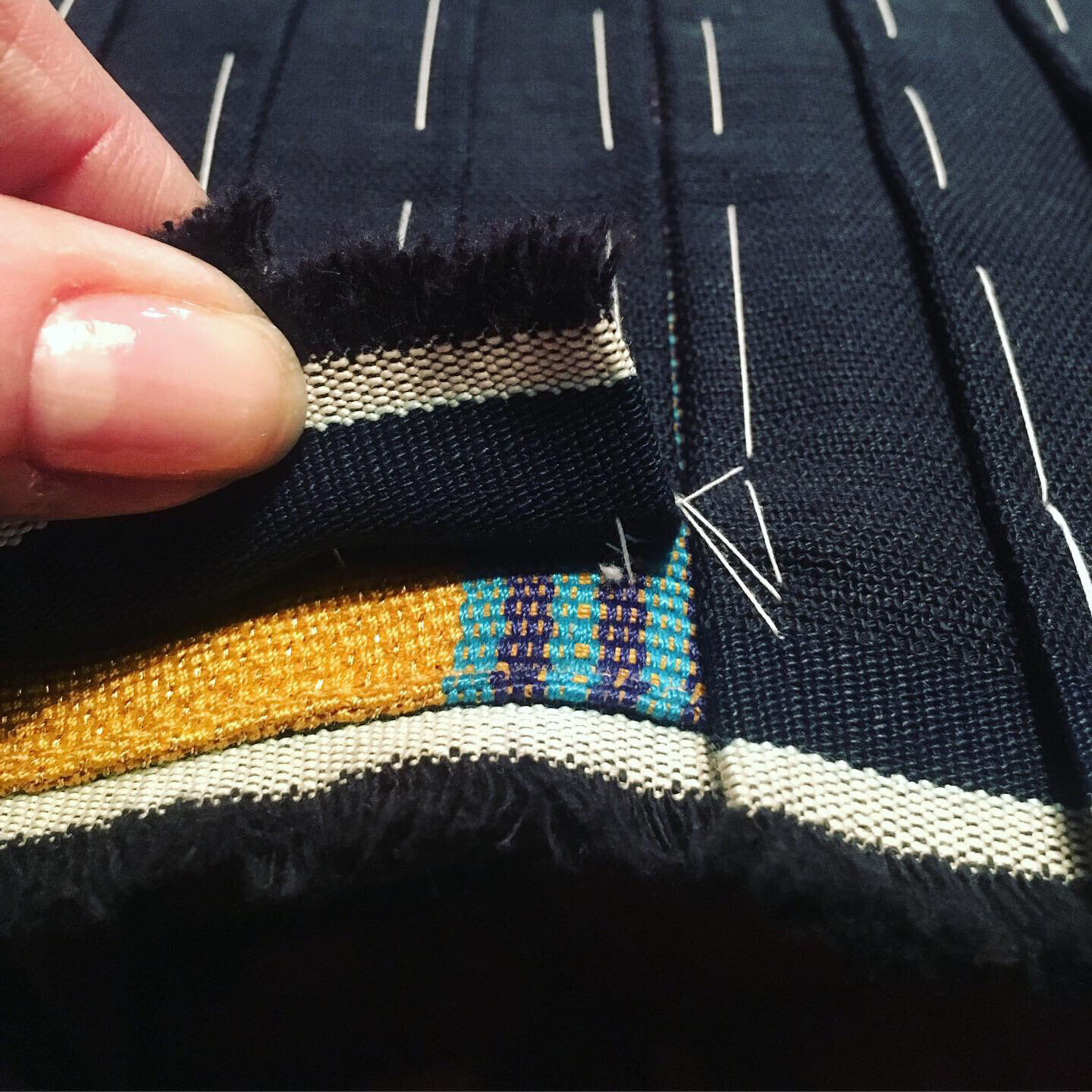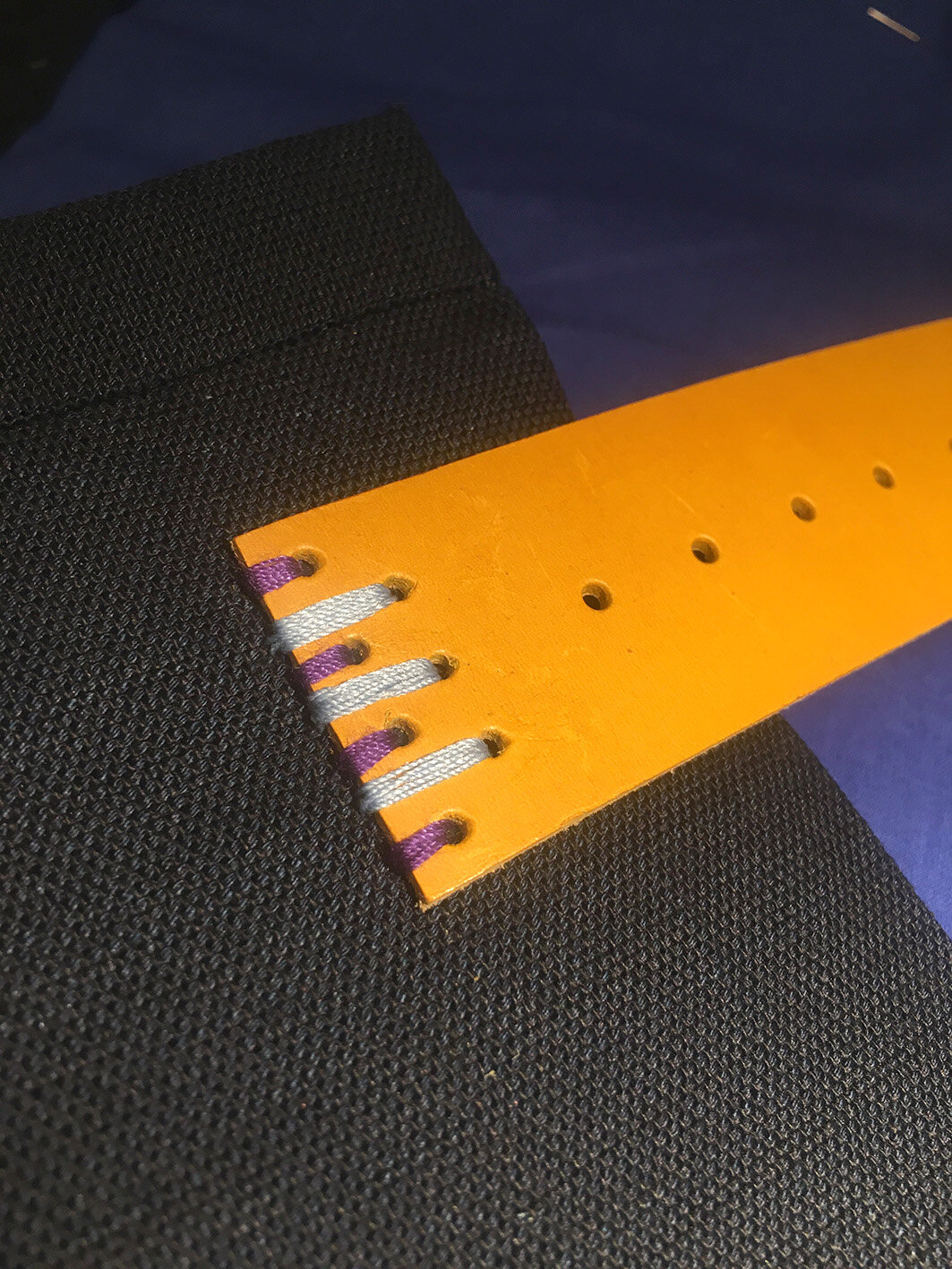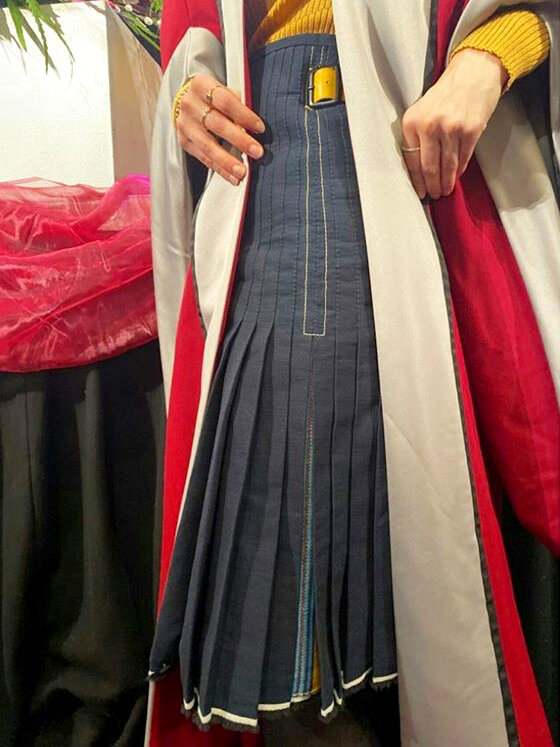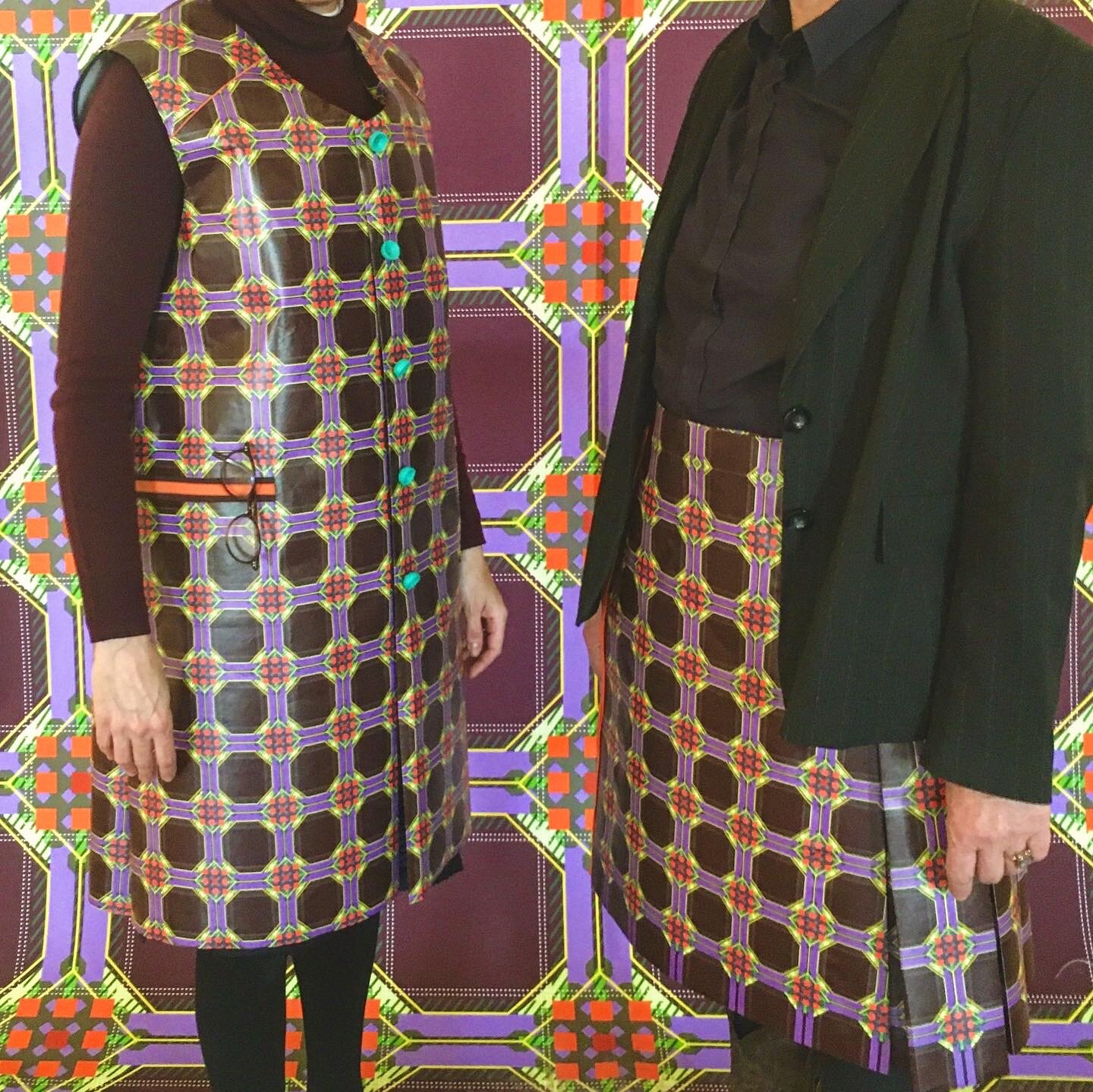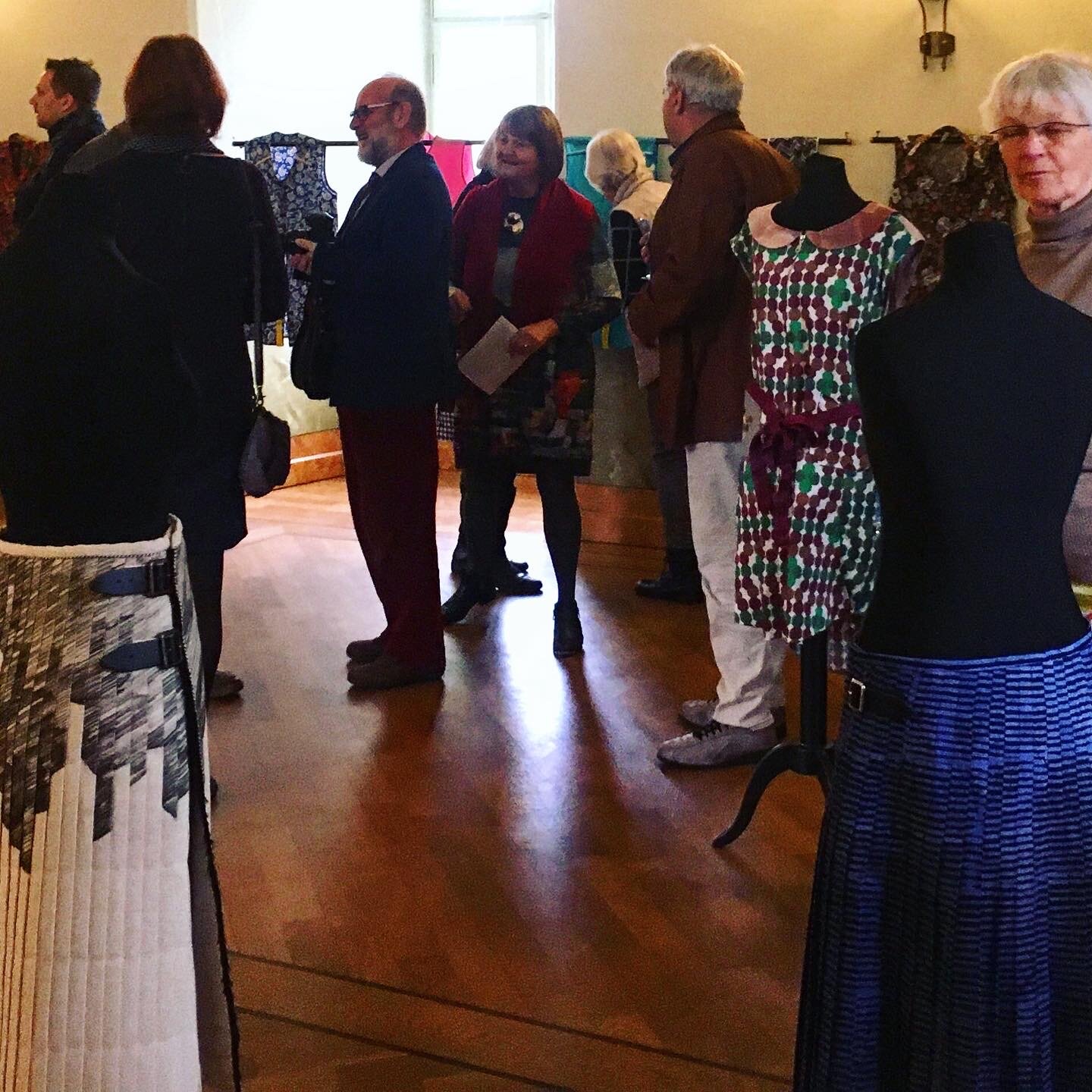The EDWARDS Kilt
This kilt is the graduation gift to my daughter, a joyful Kinguissie pleat with decorative 1940s lucite buckles, made to mark the moment in City of Glasgow Old & Rare tartan and lined with a custom handprinted cotton to remind her of the word she used to shout when she was excited— aged 3.
The IV36 O’BRIEN Kilt
This kilt has been remade from a wedding dress. A double breasted frock coat created from handwoven silk and lined with a shocking pink was worn twenty years previously had remained unworn since, though the extraordinary quality of the cloth remained much loved. After commissioning a tweed kilt from me initially that has become a wardrobe staple it was decided that this would become a second kilt for evening occasions. The coat is deconstructed and refolded to form the aprons and several pleats, keeping the integrity of the original garment. The remaining kilt length is created by supplementing a silk-wool vintage tweed and several remnant sections of furnishing fabrics sourced from a local supplier.
The BUMBLE Kilt
An affectionate name for this experimental construction made using multiple remnant sections of two designer deadstock cloths. The plaid was originally woven for Balenciaga in Italy, a merino wool twill that was only available as several small lengths. As necessity is the mother of invention so this design is dictated by the resourceful use of each length, carefully joined together and supplemented with end-of-roll cashmere velour from Johnstons of Elgin. The strong twill direction is highlighted by flipping the faces of the cloth to create centre front and centre back chevrons, which are enhanced by a Kinguissie pleating formation, monochrome striped insertion piping and a unique split front apron that allows the plain cashmere under-apron to show through. This kilt has been aquisitioned by the National Museum of Scotland for the Highland Dress collection.
ACME ATELIER X OLD STONE TRADE
THE TILDA KILT
This kilt is the second collaboration with New York stylist Melissa Ventosa Martin, as part of her collection of modern heirlooms at Old Stone Trade. These timeless classics of enduring quality and style are considered pieces produced by small scale artisans across the globe.
The Tilda kilt uses cloth created by the social enterprise from South-East England, Romney Tweed, who are revitalising wool production on the marshes where Romney sheep have roamed for centuries. This striking deep black tweed with yellow overcheck refers to Prospect Cottage, home of the late film maker Derek Jarman who transformed this fishermans hut into a retreat and sculpture garden.
The kilt is made to order exclusively through Old Stone Trade in a very limited number with customised finishing details. The Newchurch Kilt can also be commissioned using Romney Tweed with a matching bespoke blazer by J.Mueser.
The IV36 KOREAN Kilt
Created as part of the IV36 Initiative this quality pleated wool skirt was donated locally and remade with kilt style signatures, now living a new lease of life in Sth. Korea.
The STILL GARDEN Kilt
Designed and made for garden designer Jane Porter, to record the plants in her gold award winning show garden; The Still Garden at the RHS Chelsea Flower Show 2022.
Both the garden and the kilt showcase heritage crafts on the Heritage Crafts Association endangered list, highlighting the need to preserve our intangible cultural heritage for future generations.
Beginning by studying each plant in sketches, this kilt brings my printmaking, kiltmaking and bespoke leatherwork together using heavyweight upholstery linen, woven at The Isle Mill in Moray. The bespoke textile is handprinted using a mix of block printing, and handcut stencil silkscreen printing, each describing the flowers, stems and stamen details of Angelica Sylvestris and Alchemilla Mollis. On the inside my silk painting brings to life the bright centres of Anemone Honorine Jobert.
This contemporary mix of wide, but deep box and knife pleats is a variant of an historic Kinguissie form, in an elegant longer length. Handstitched in the traditional method, this design is also used in The Chelsea Kilt; a mid length option made in Scottish wool with a double box to the centre back with a fringed and feathered hem detail.
Image of Jane Porter and Andrea Chappell in the Still Garden at RHS Chelsea Flower Show by Ellen Wilkinson
The CHELSEA Kilt
This kilt is made in a special weave Scottish wool woven by House of Edgar and designed in conjunction with The Still Garden Kilt, to highlight heritage crafts at The Chelsea Flower Show 2022 as part of a Scottish inspired show garden designed by Jane Porter. Both kilts share the same handpainted silk lining that refers to the anemones in Janes scheme, with this one featuring a double, or stacked box in the centre back with wide box pleats either side. Vintage bakerlite buckles and bespoke leatherwork tone with the peach yarn forming the fringed hem which is backed with layers of feathers.
Images of Jane Porter and Andrea Chappell in the Still Garden at RHS Chelsea Flower Show by Ellen Wilkinson
ACME ATELIER X OLD STONE TRADE
THE NEWCHURCH KILT
This kilt is part of a collection of modern heirlooms created by Melissa Ventosa Martin under the name Old Stone Trade. Her tasteful and considered pieces are produced by small scale artisans across the globe. Each item is a timeless classic of enduring quality and style, created by pairing selected makers with selected materials. In my case, the social enterprise from South-East England, Romney Tweed, who are revitalising wool production on the marshes where Romney sheep have roamed for centuries.
The kilt is made to order exclusively through Old Stone Trade in a very limited number in a variety of styles and finishing details, where it can also be commissioned with a matching bespoke blazer by J.Mueser.
Images by Jai Odell / Gallery image by Maxime Poiblanc
The TRUJILLO TARTAN
This special weave is a bespoke tartan that celebrates the combined Scots and Colombian heritage of a family, on the occasion of their sons graduation. Designed by me and woven by the House of Edgar at my local mill here in Moray, the cloth mixes colours found in Scottish glens and Colombian coffee plantations with a signature yellow over check that refers to the Colombian flag.
The tartan has a customised selvedge, woven as a herringbone twill to highlight particular colours within the sett, which itself has been constructed to replicate the beats of a salsa dance — a unseen detail that acknowledges the passion of the father who commissioned this cloth.
Firstly, two kilts for father and son are in the making to begin bringing those beats to life …
Please get in touch if you wish to create your own bespoke tartan. I design the cloth, manage the weaving process with the mill, register your tartan with the National Archive and create your bespoke kilts and accessories. The minimum order is 11m of cloth plus 2 kilts.
The CLAVIE KING’S Kilt
This ceremonial kilt embodies an ancient local custom in my region; The Burning of the Clavie, a barrel burning festival heralding the new year and bestowing health and prosperity to the fishing community of Burghead. Fire festivals have been common along our north east coast since Pictish times, though this one has had a particular story since 1752, when the Julian calendar was swapped to the Gregorian, omitting eleven days in the process.
Embodied in this kilt of eleven double box pleats are these missing moments in time, as each pleat has been calculated to capture twenty four hours in their folds. The kilt records the night sky above Burghead on each of the missing days using the constellations the fishermen would have used to navigate their way to the Baltic, embroidered onto this fireproof wool with yarn spun from the Clavie kings own flock by Amy Neville at Naturally Useful. On these trips barrels of herring were traded for pine tar—the means by which the Clavie is lit each year—and the medium I have added to the ink that records each Clavie King and his crew in the lining of this kilt.
This kilt was made for the Northword project, a storytelling project funded by the EU Northern and Arctic Periphery Programme and delivered by Robert Gordon University and University of the Highlands & Islands

